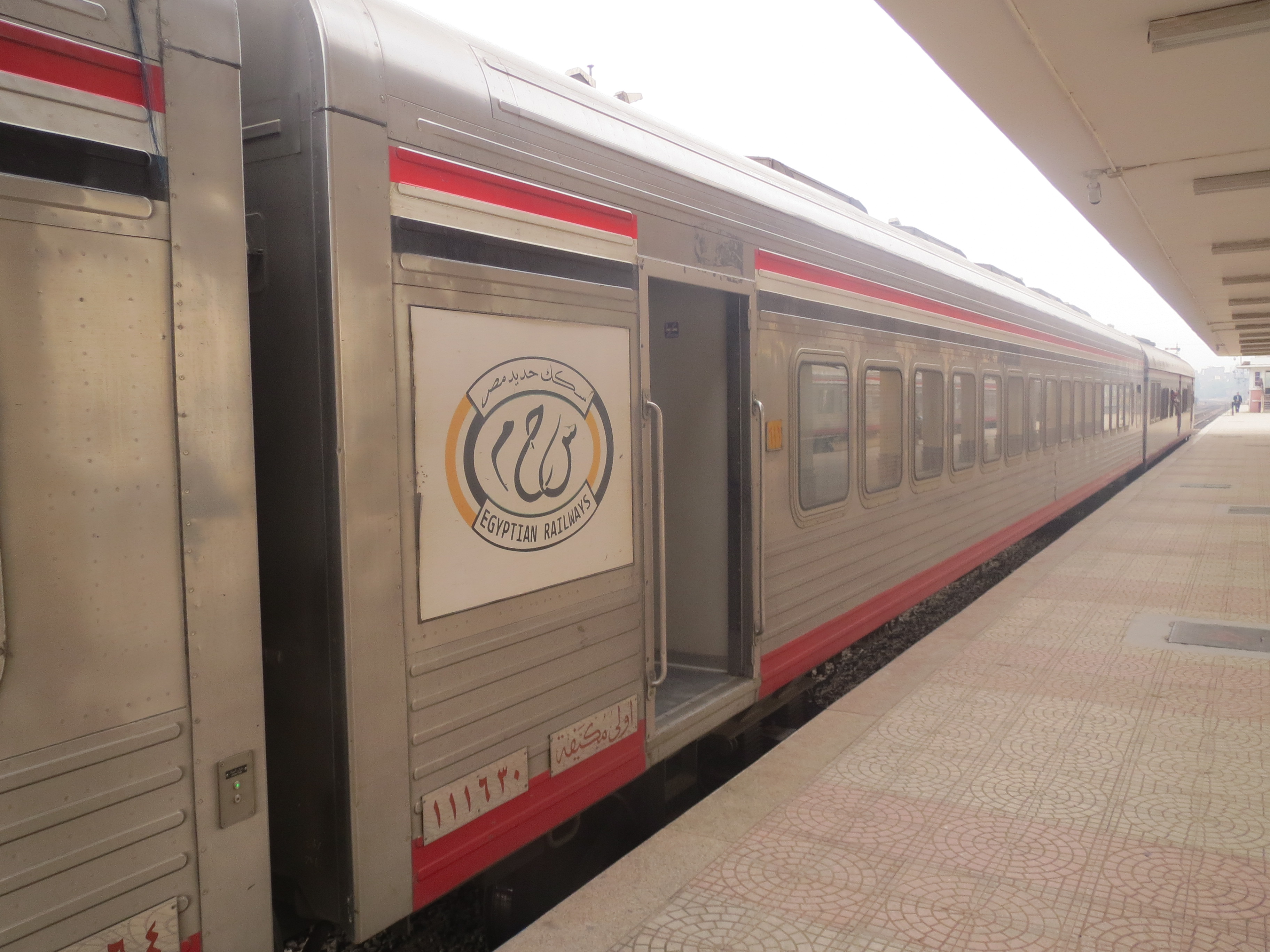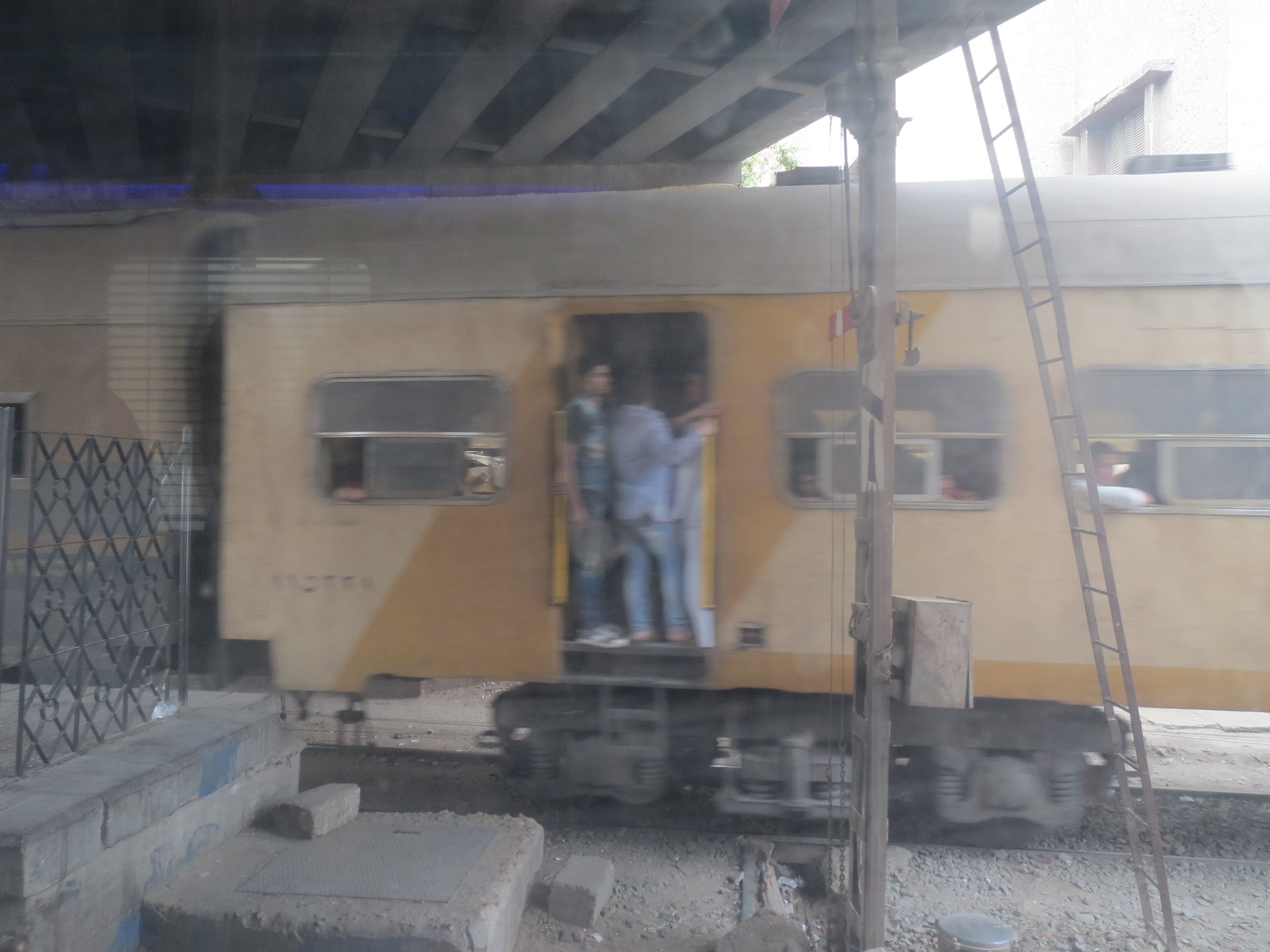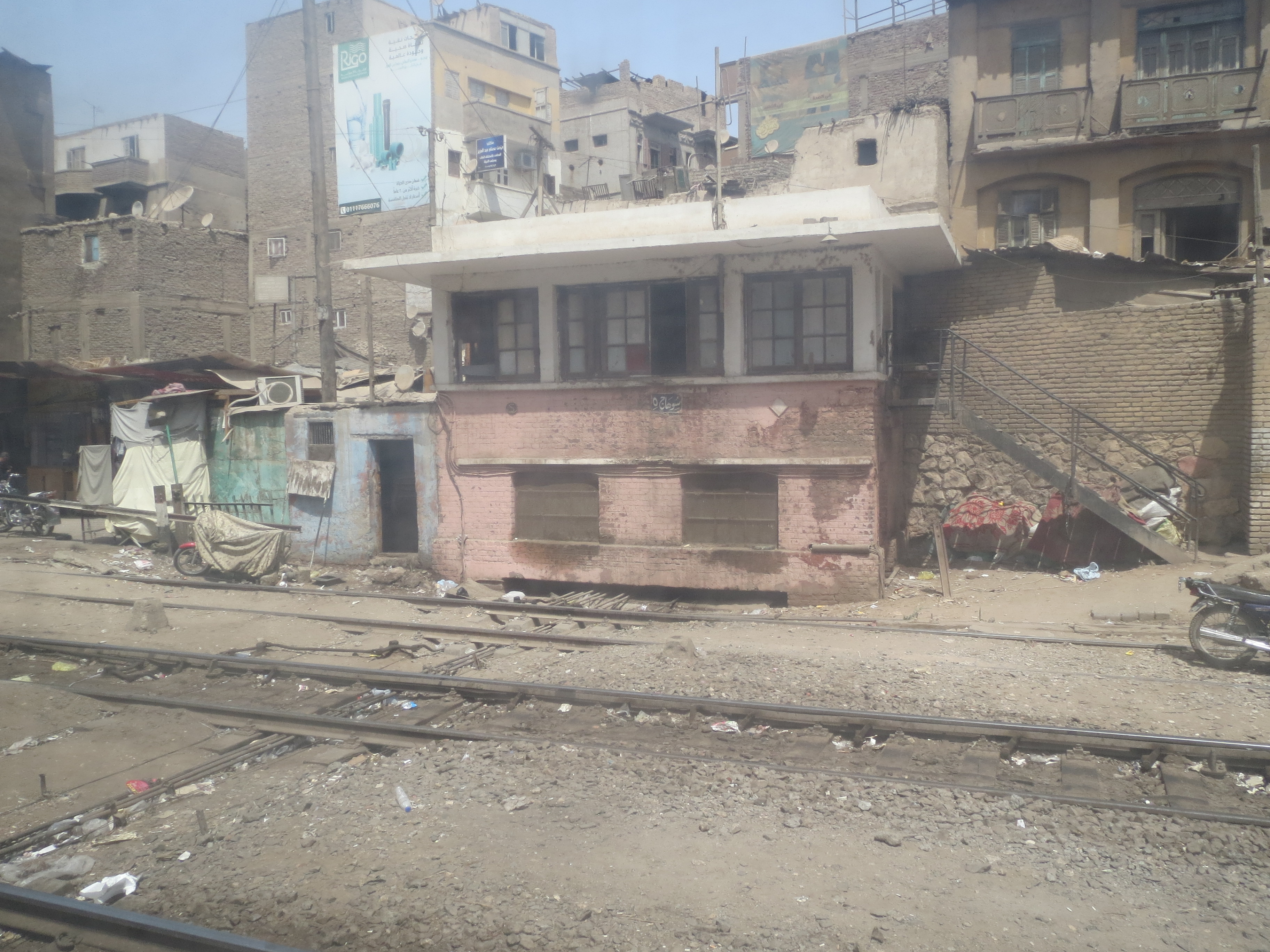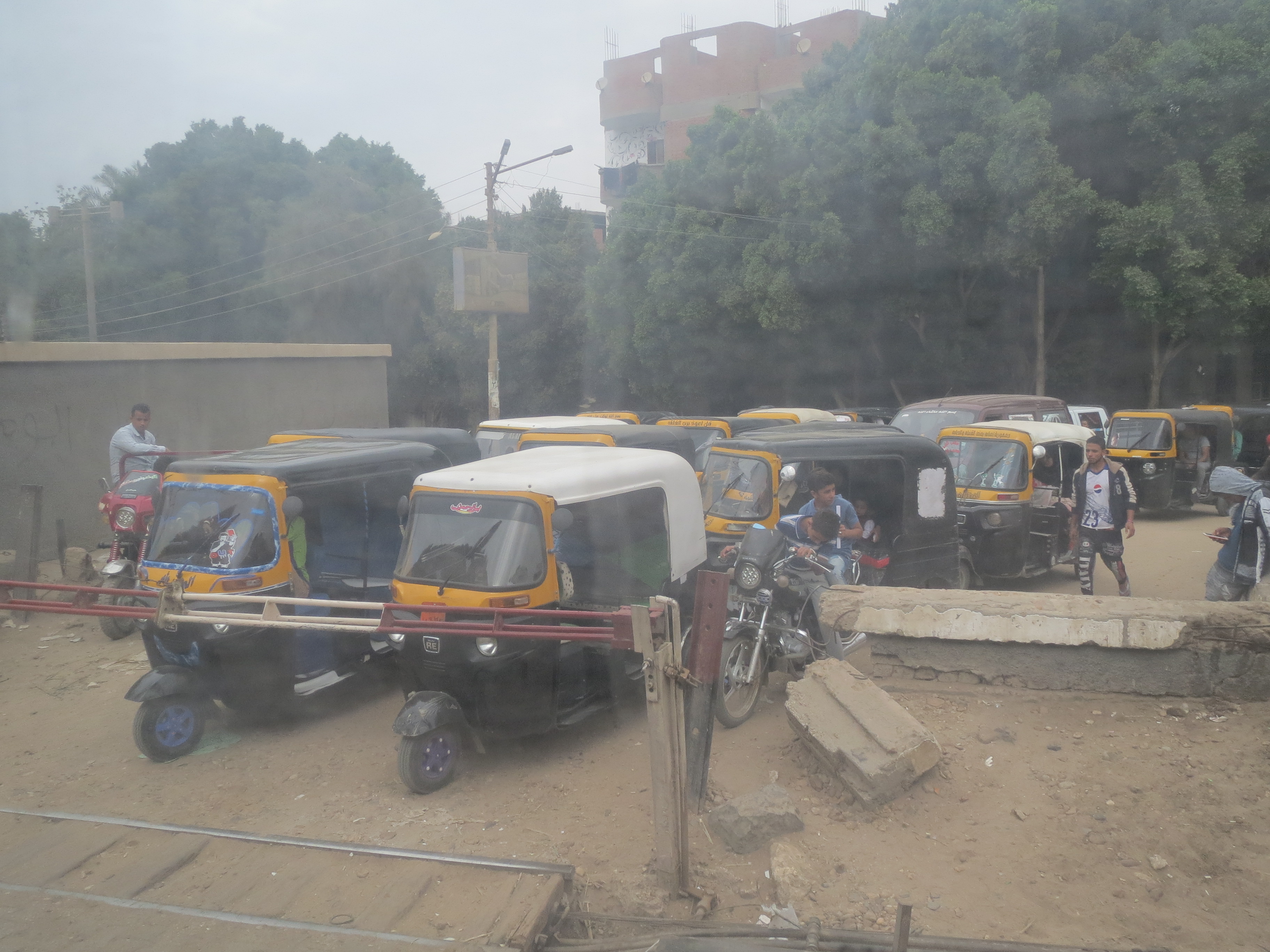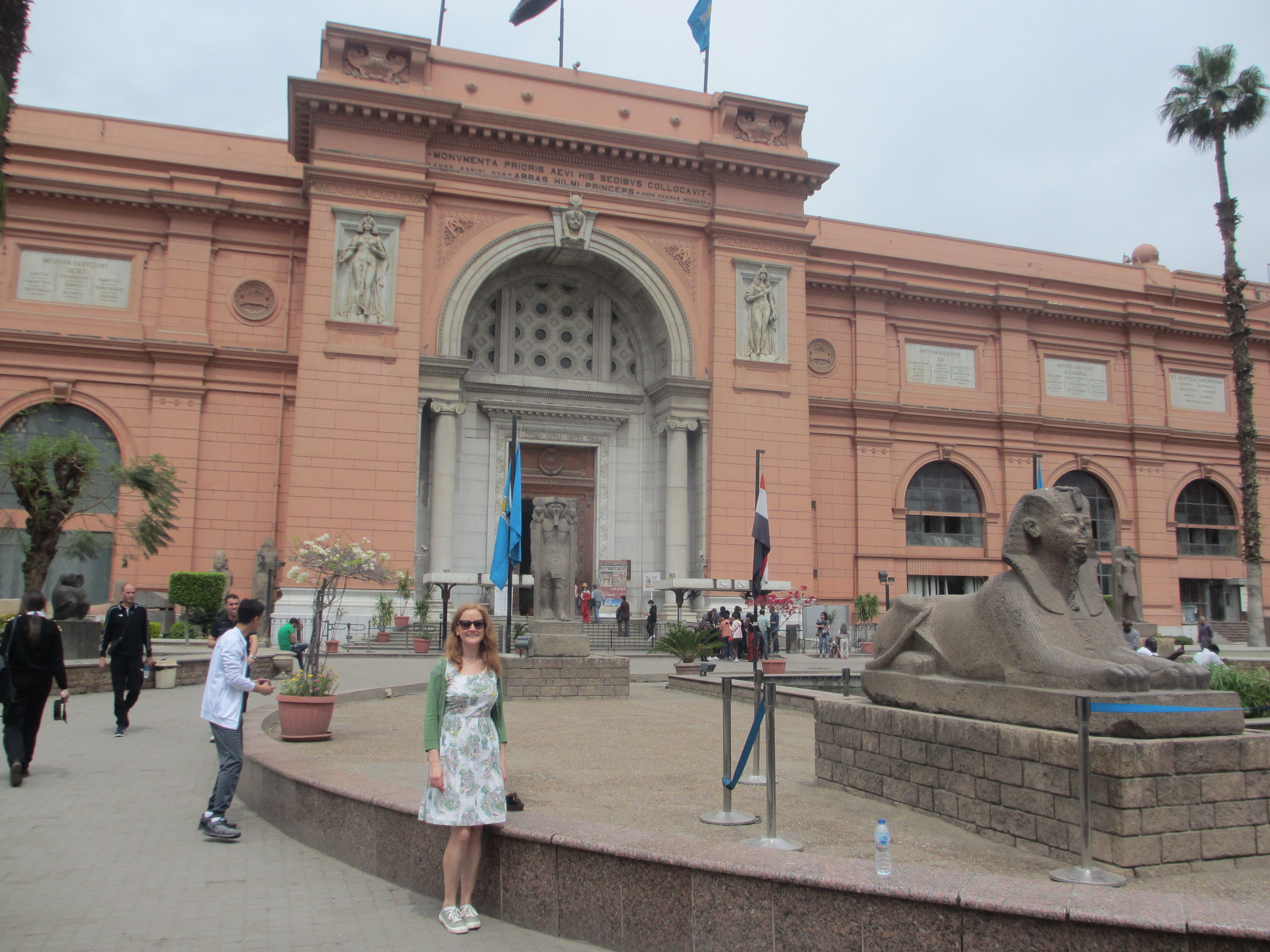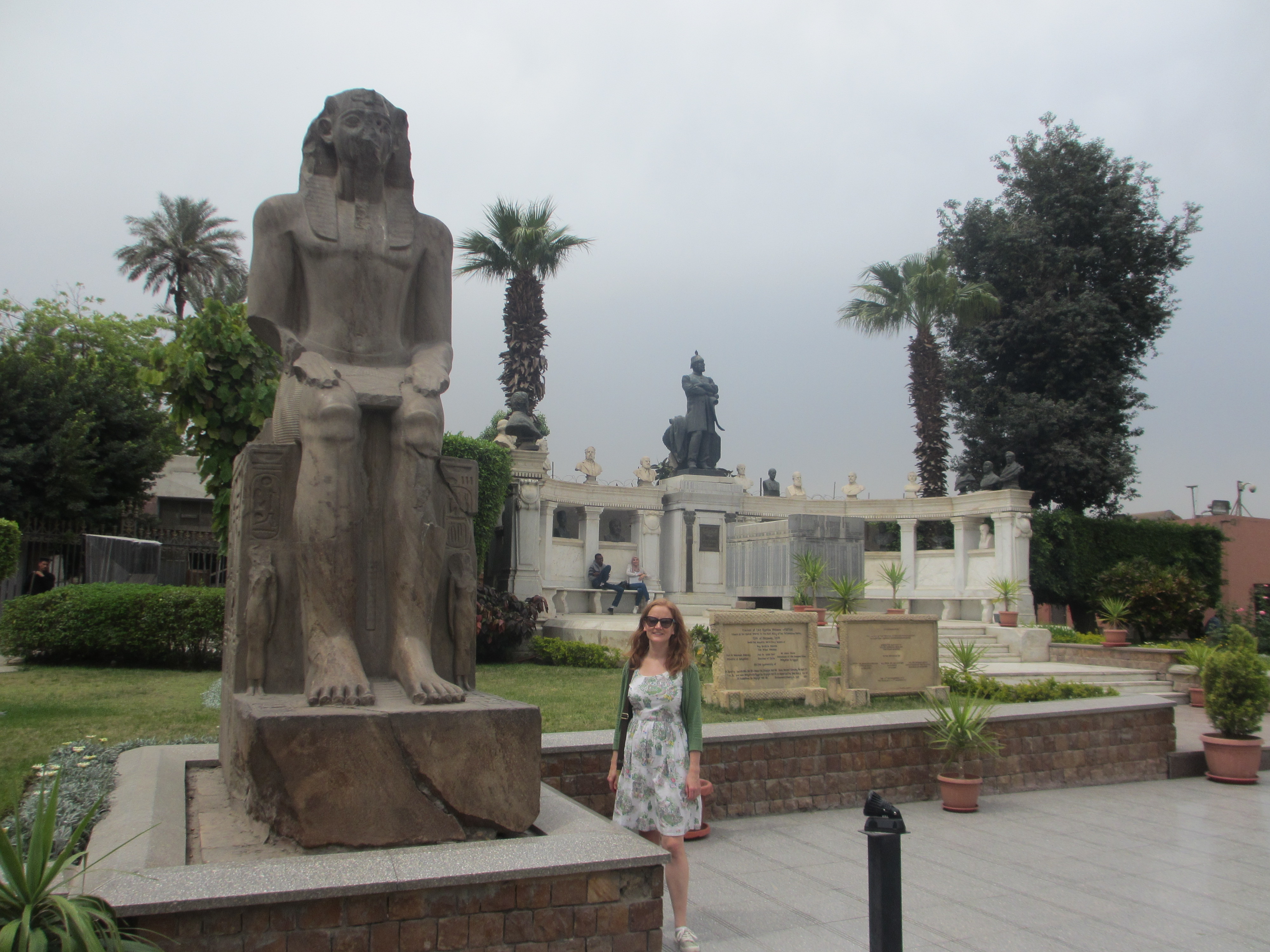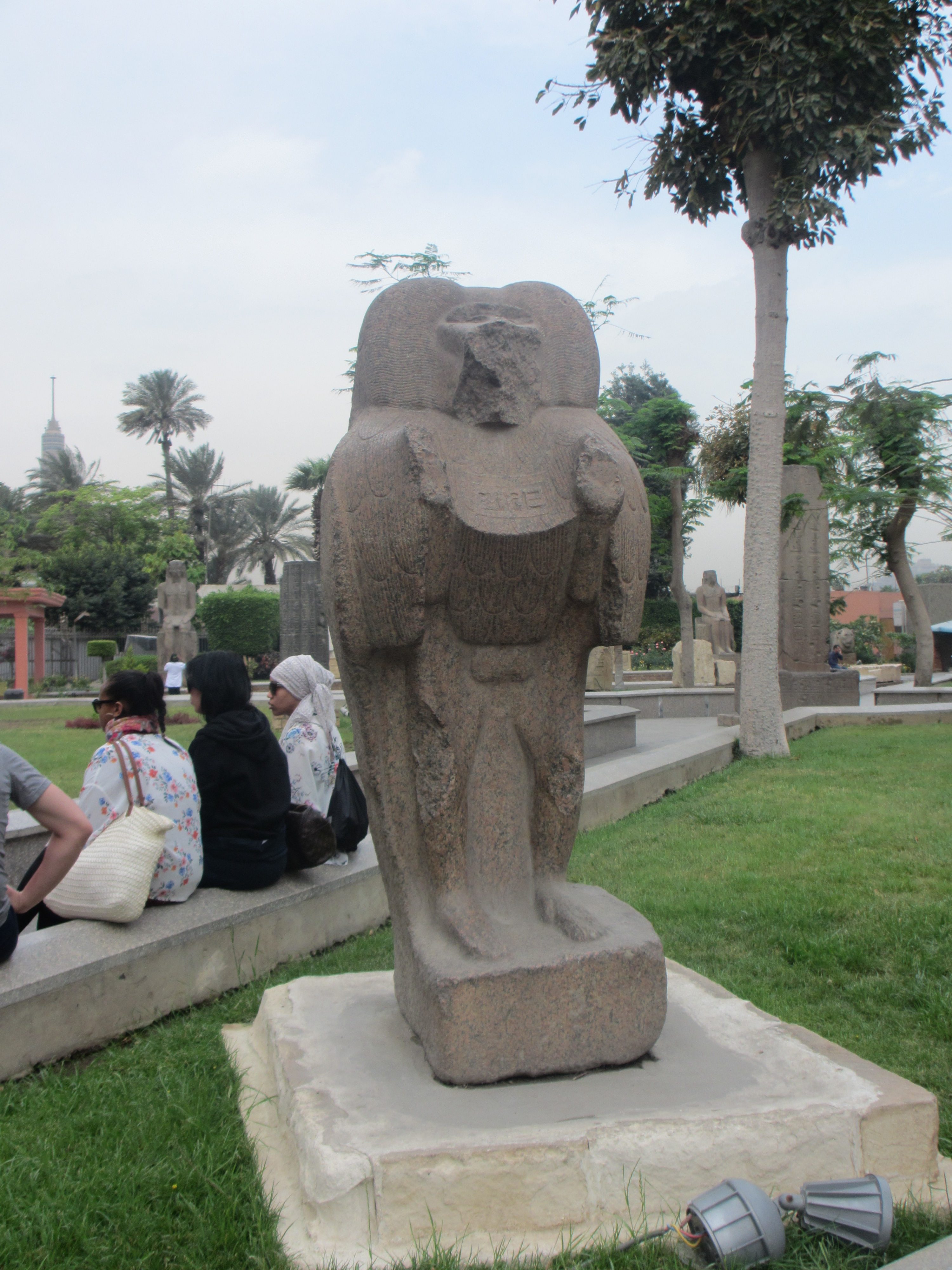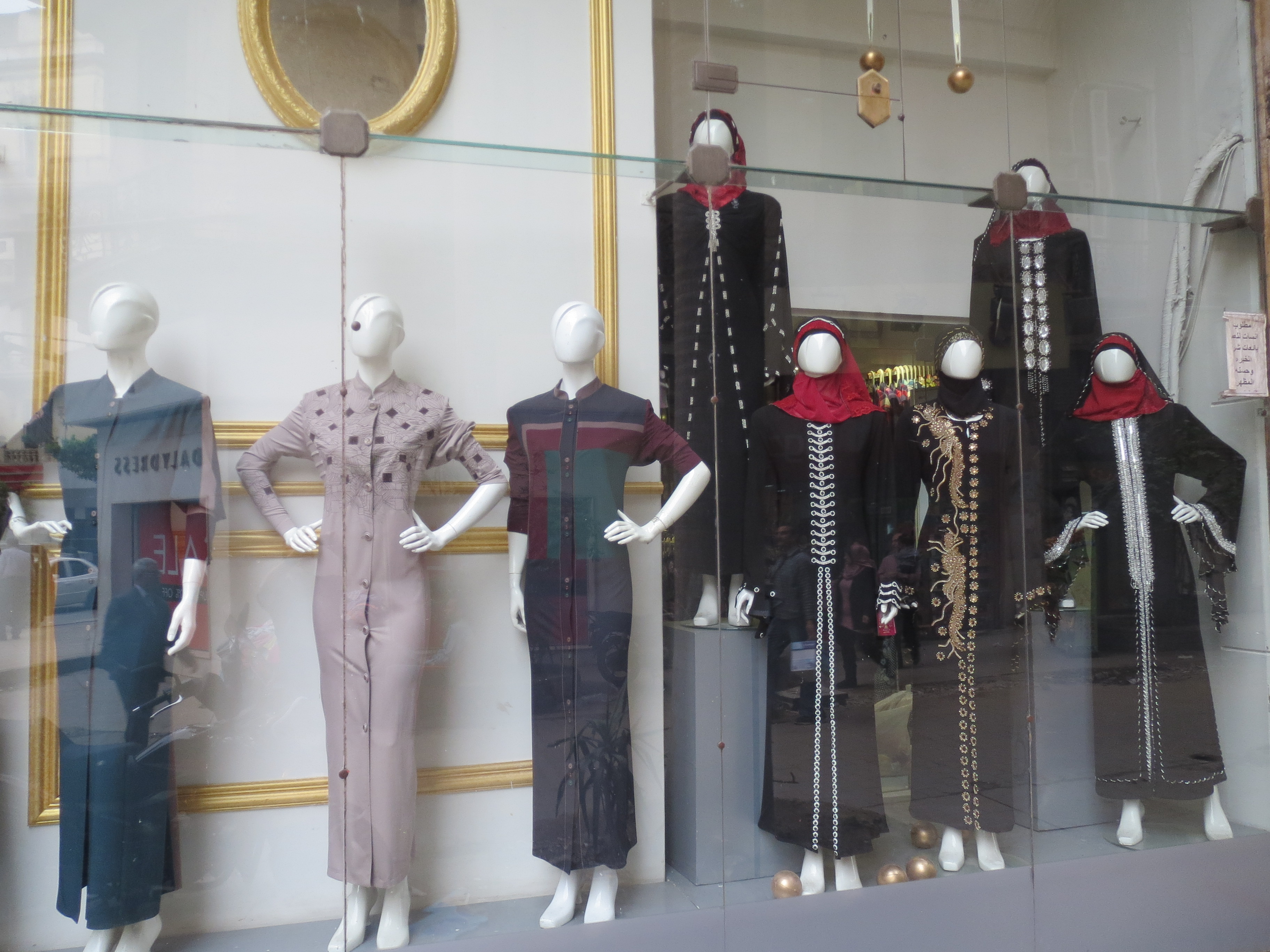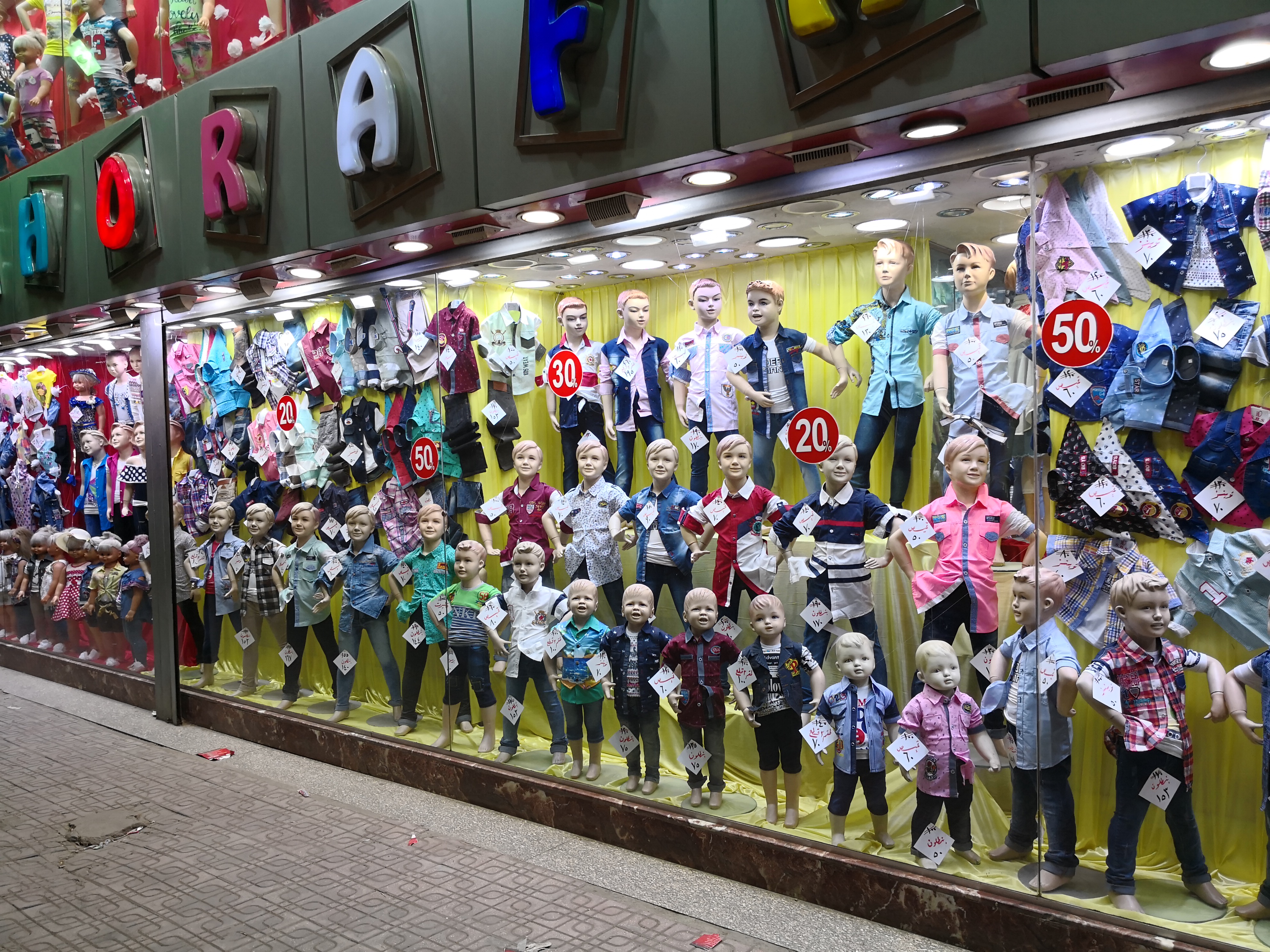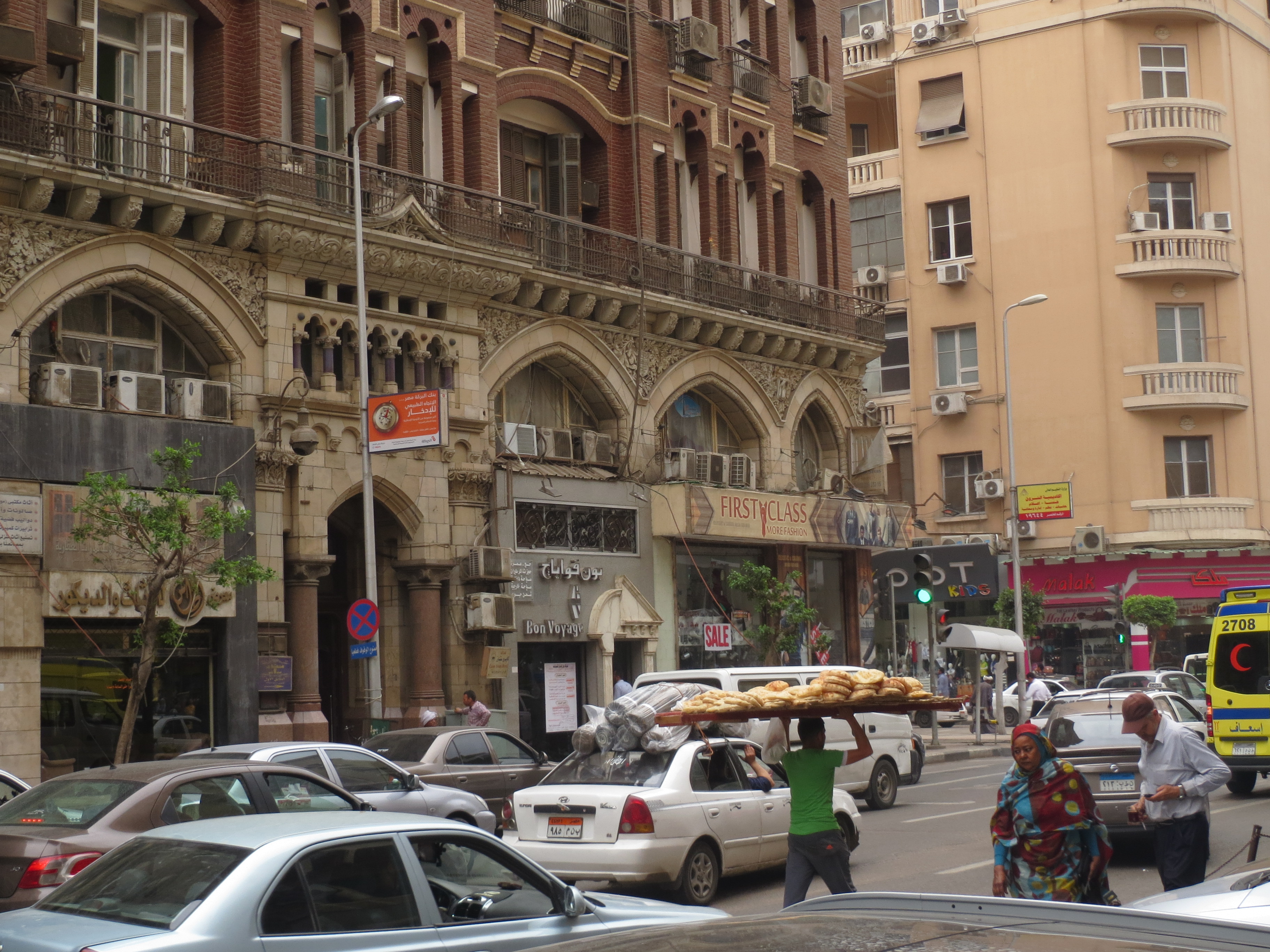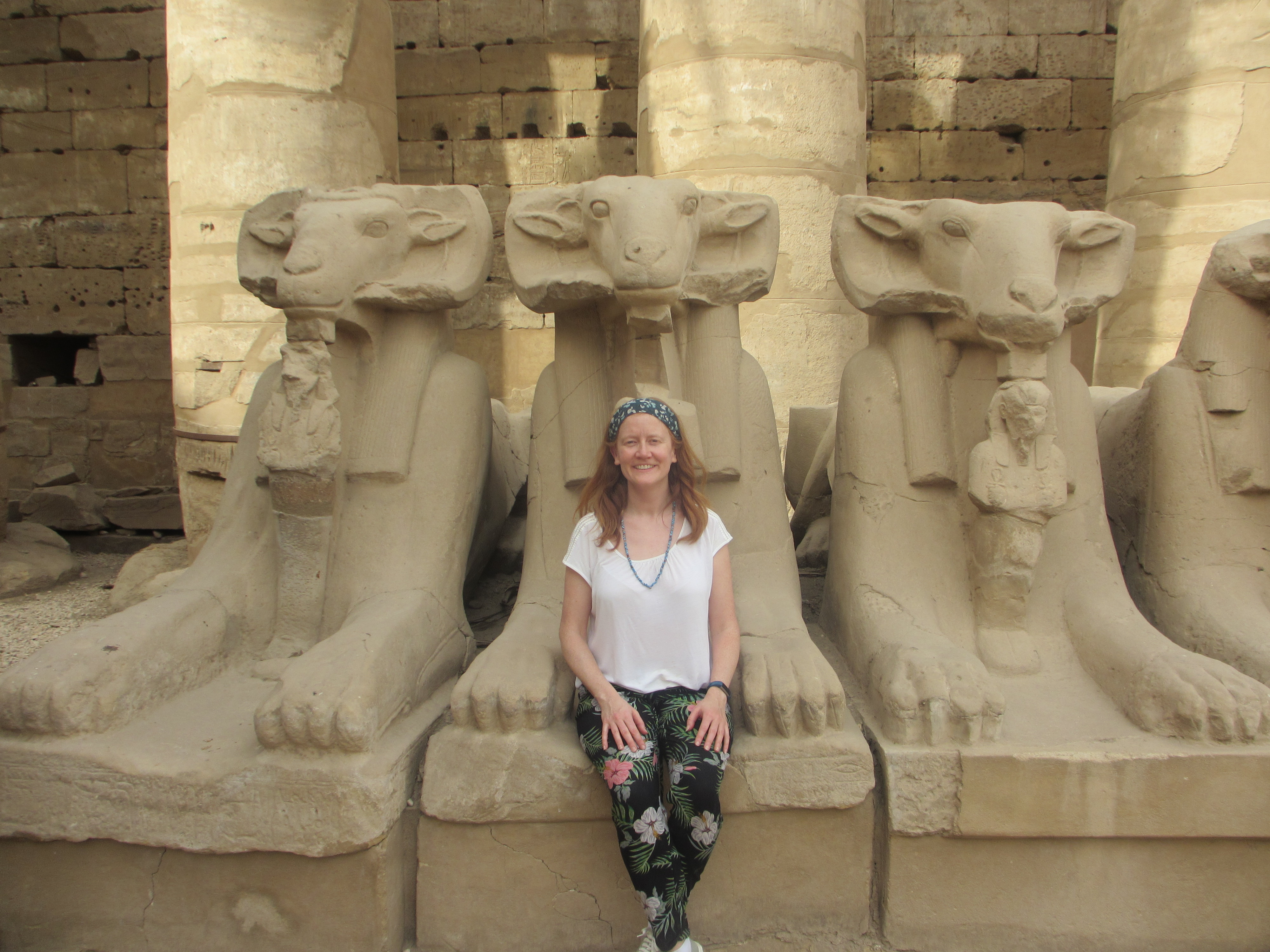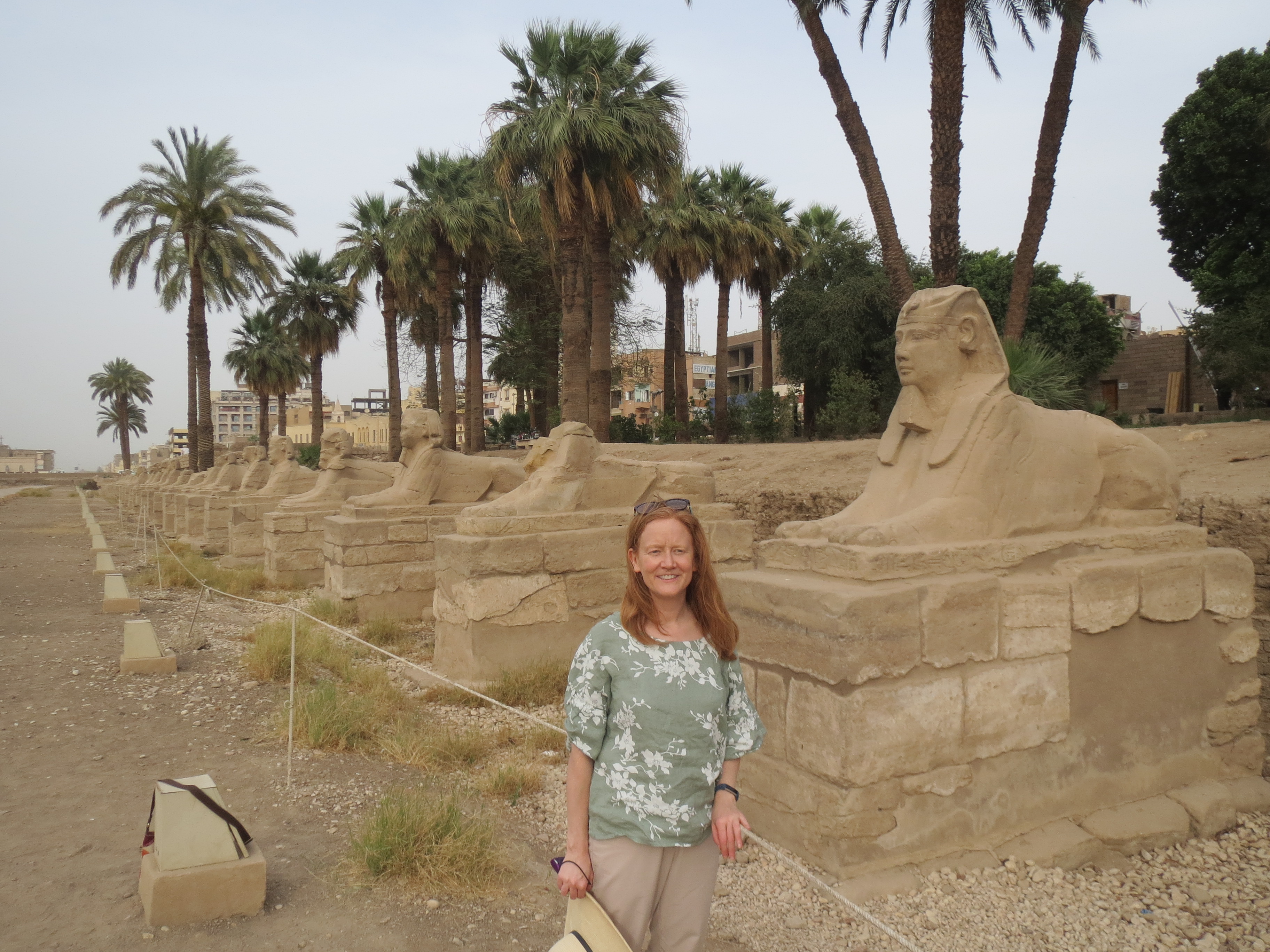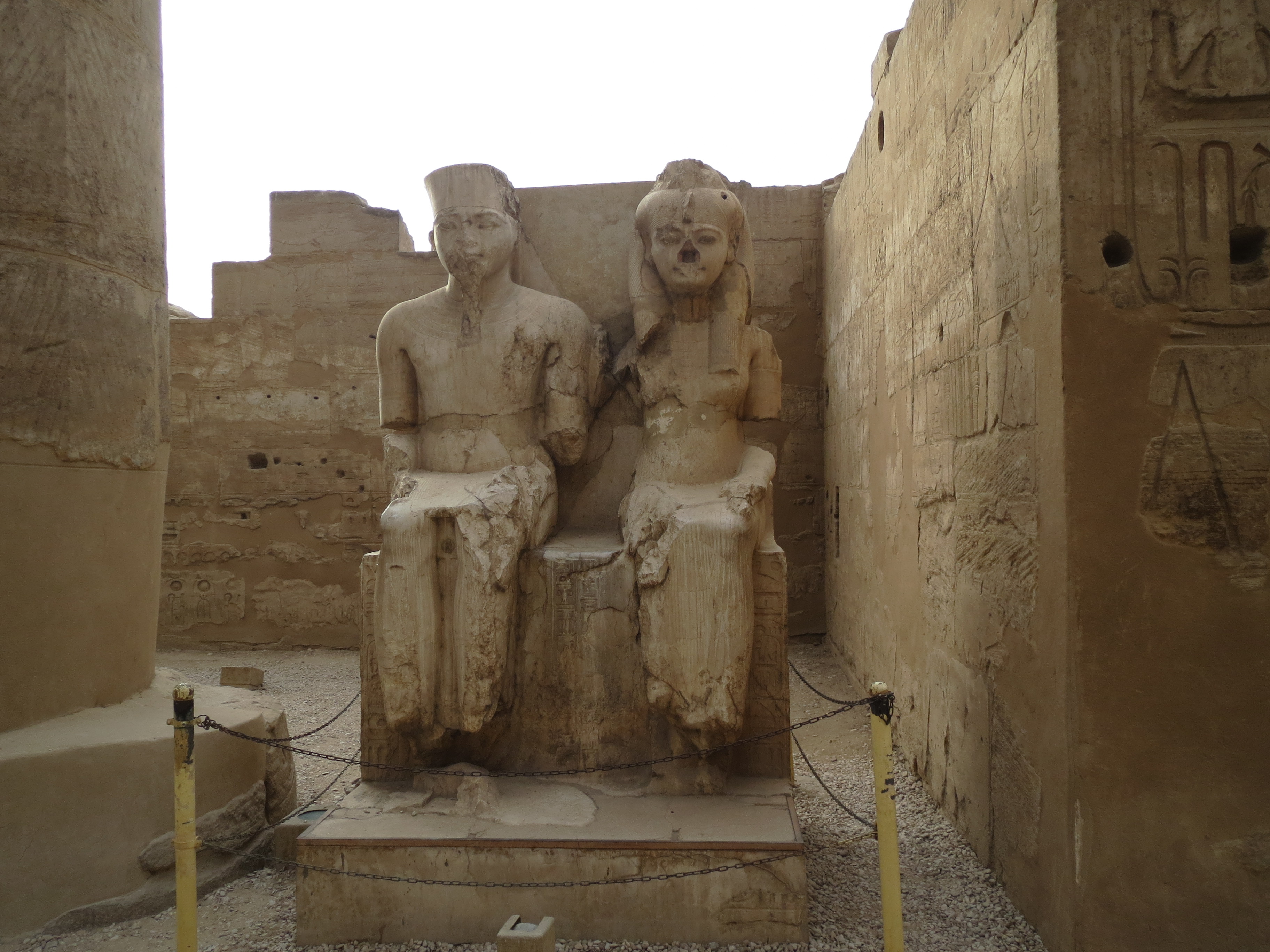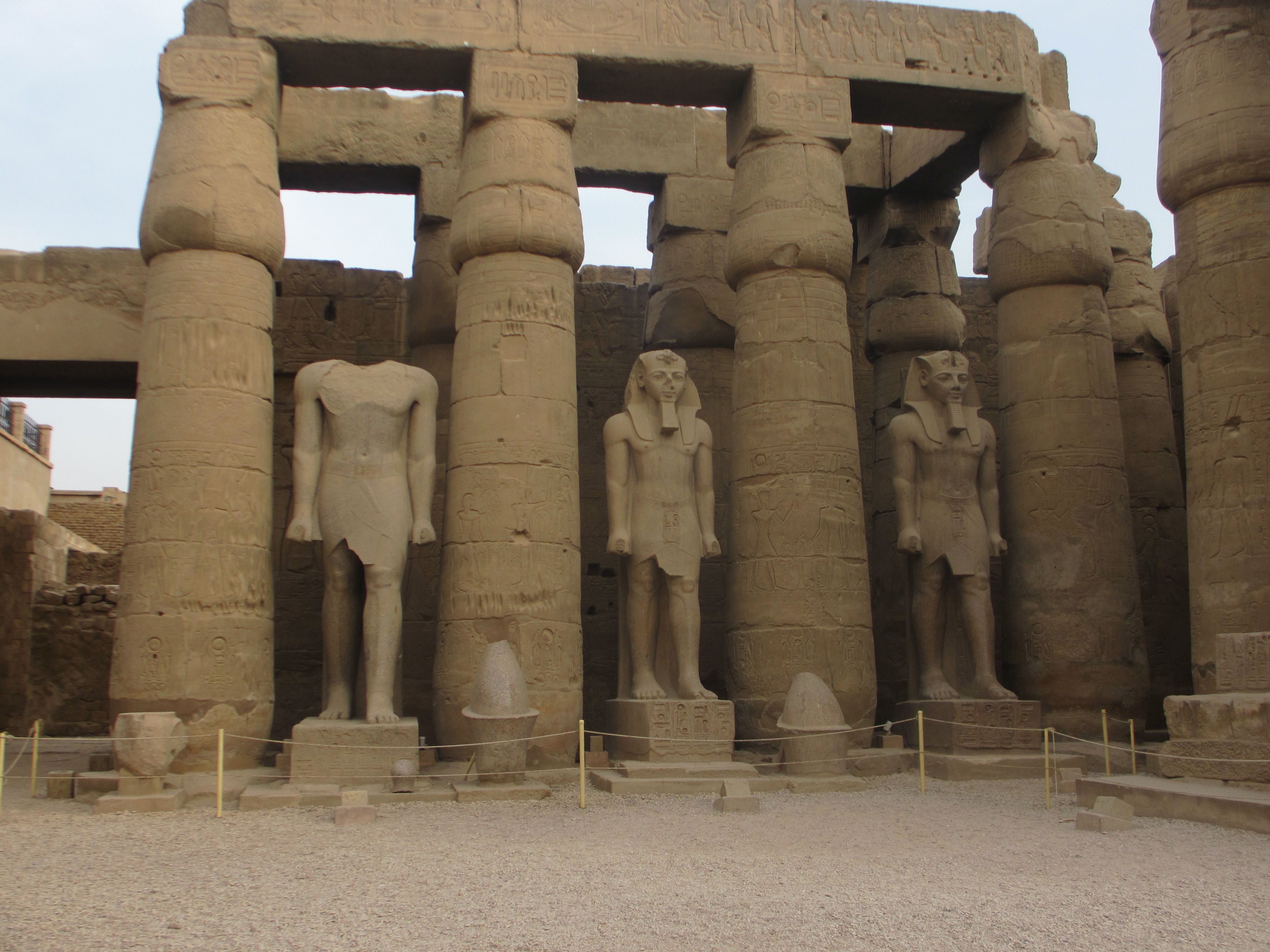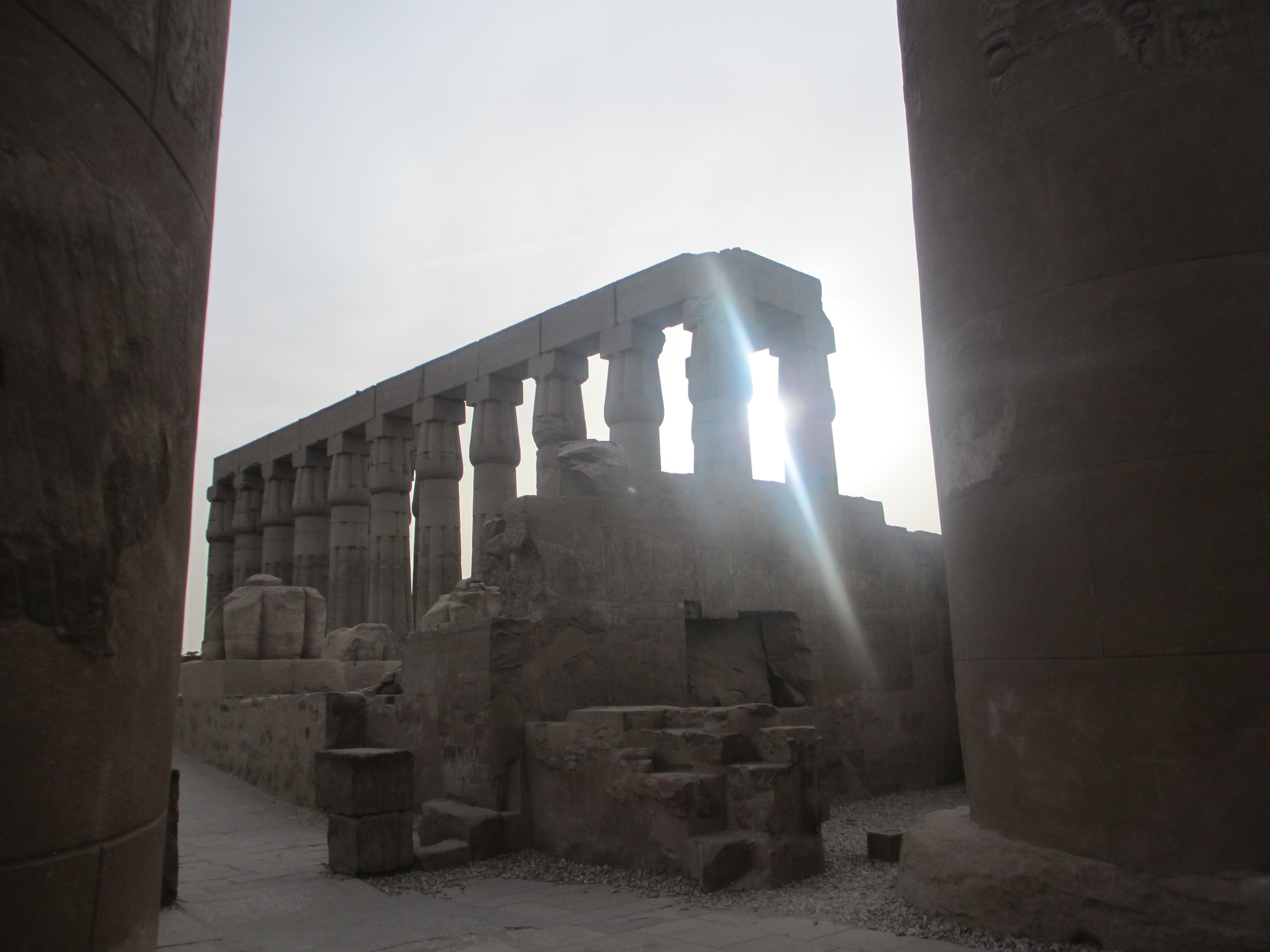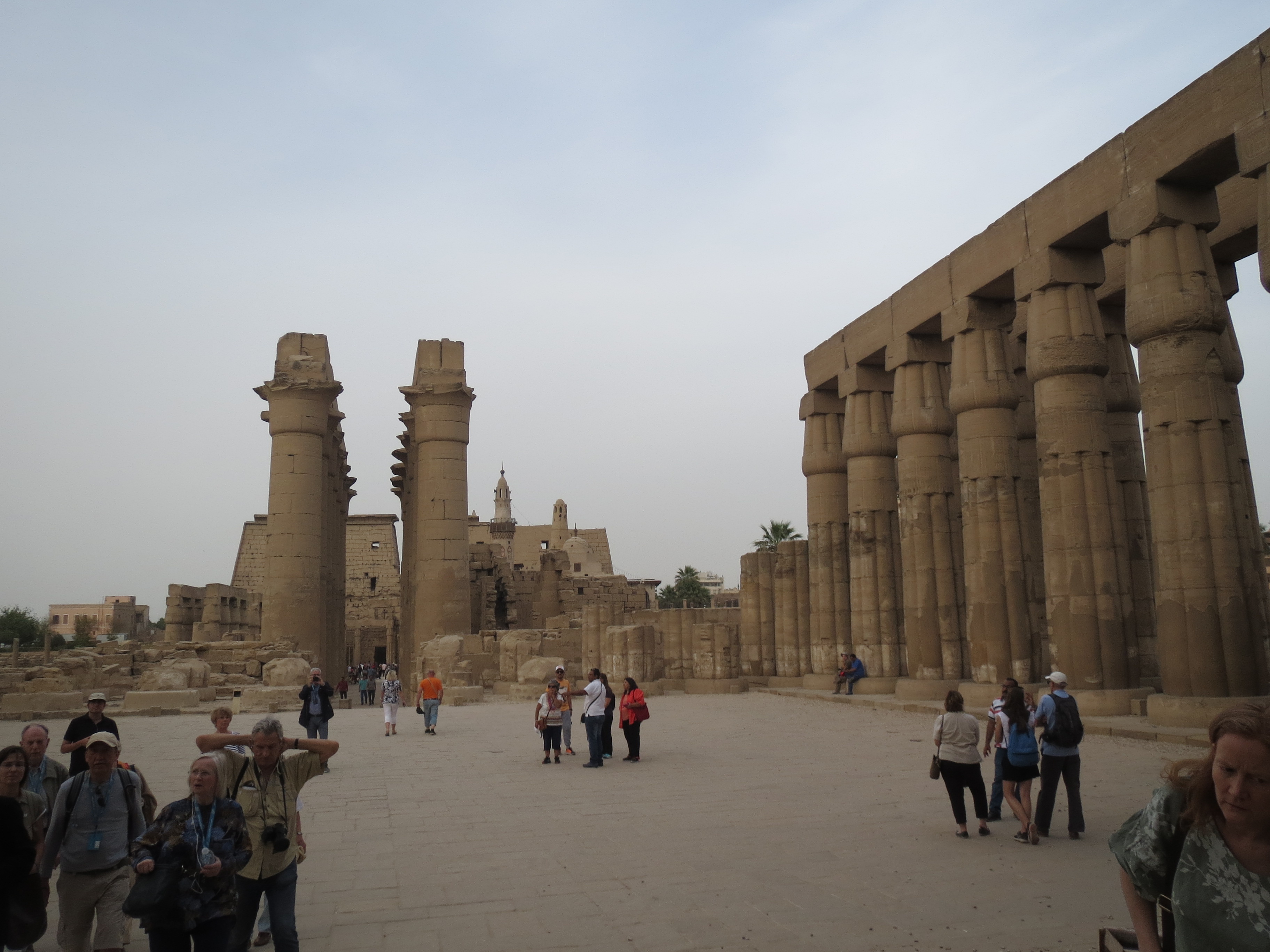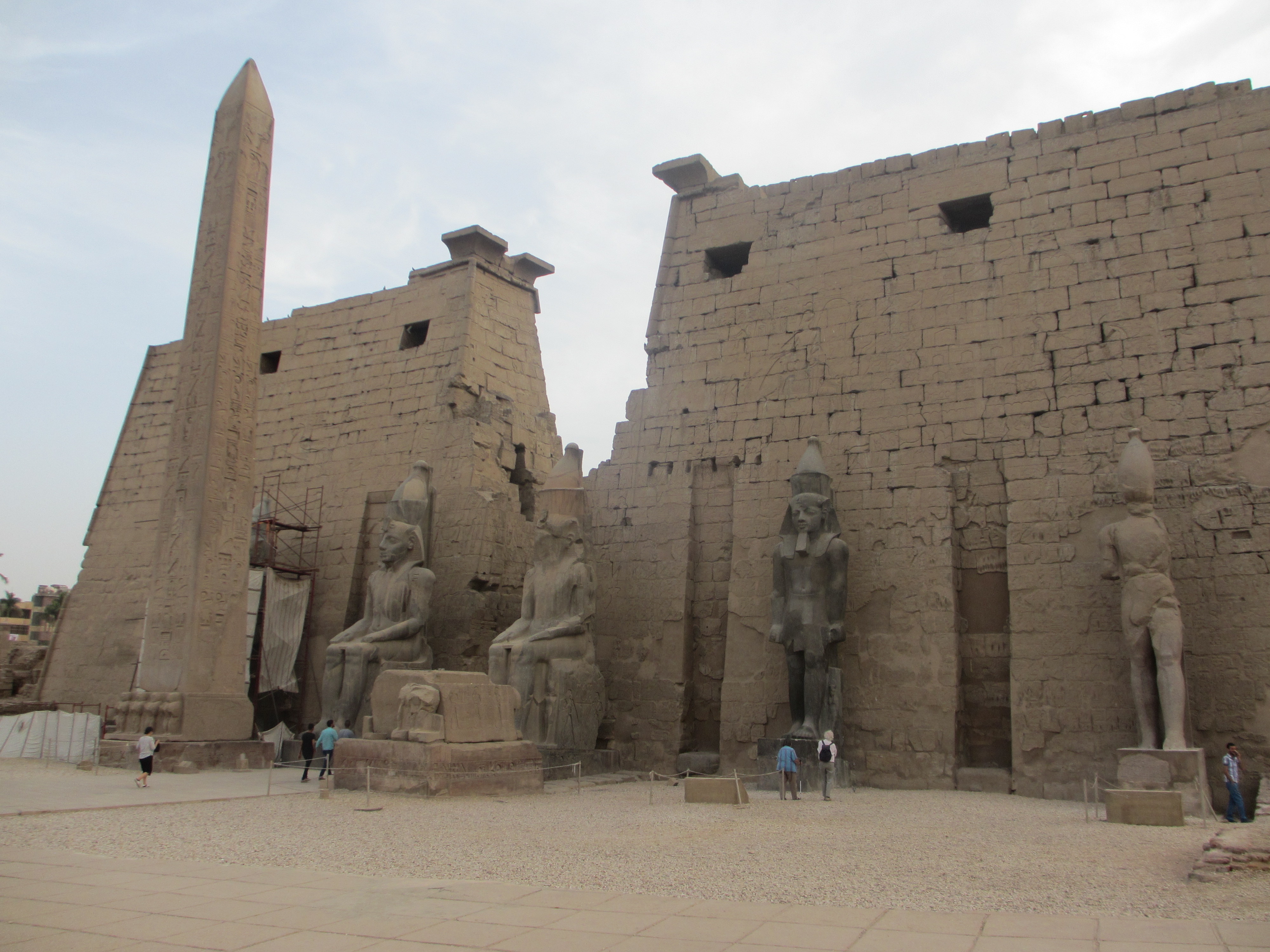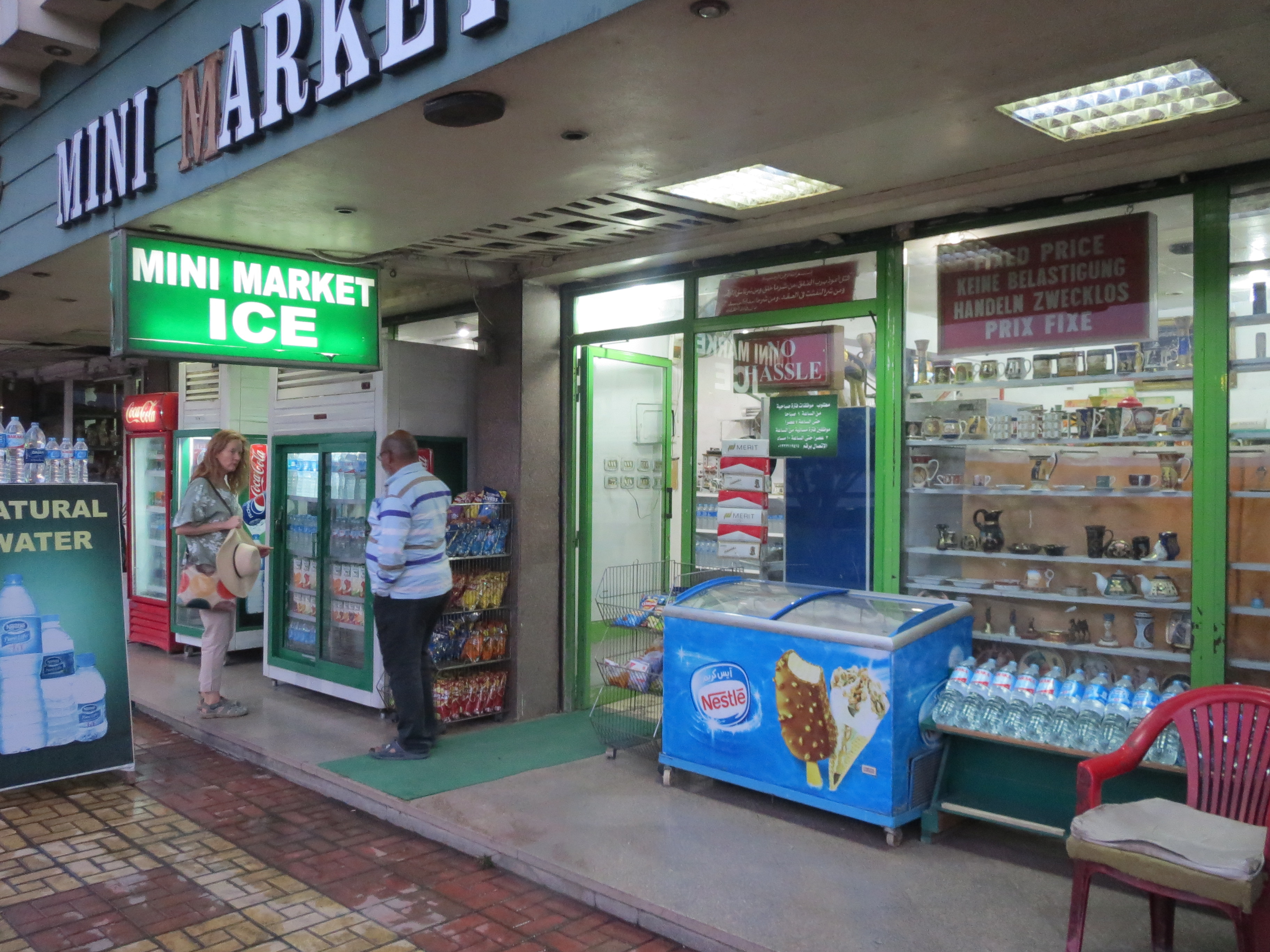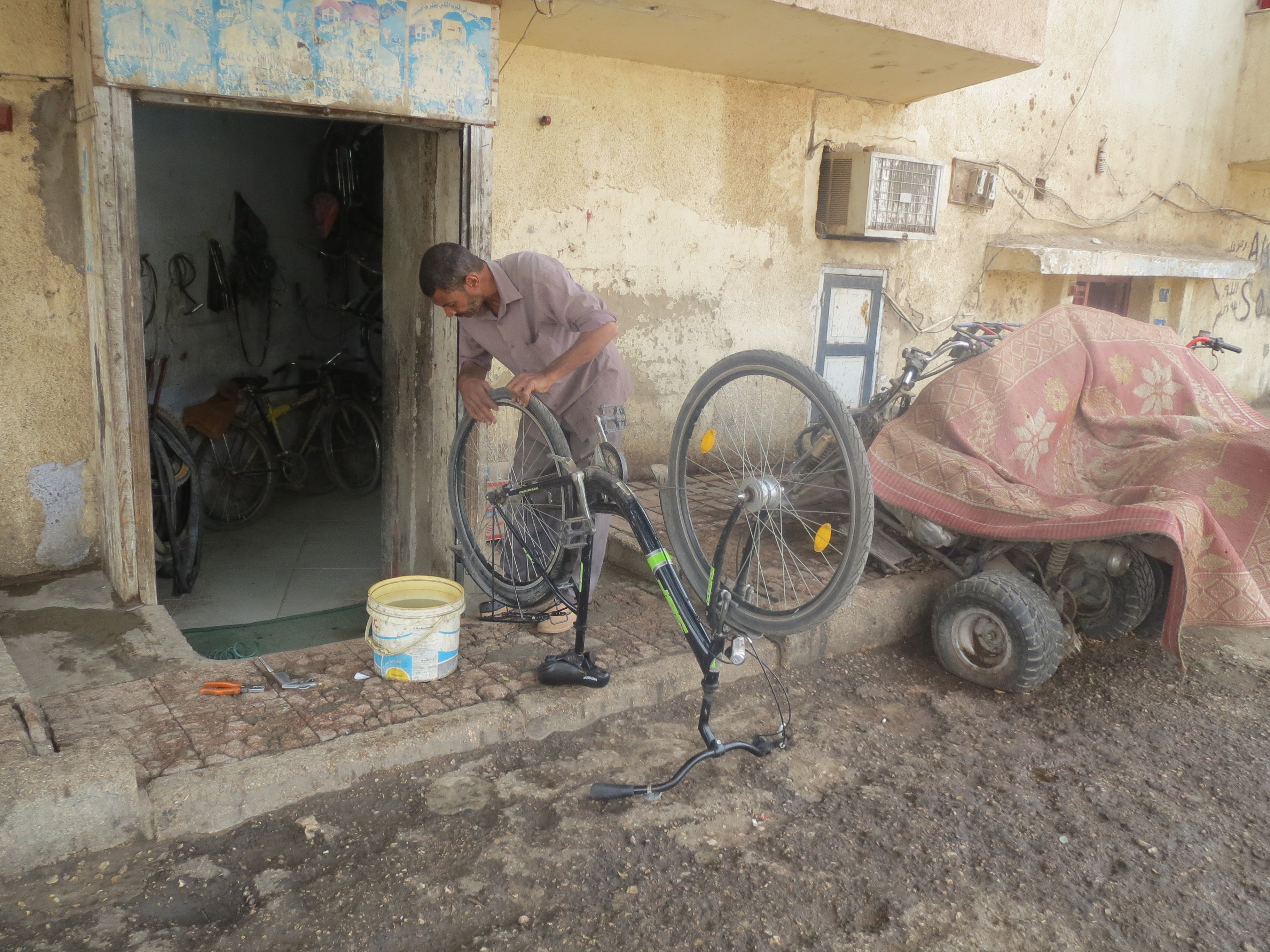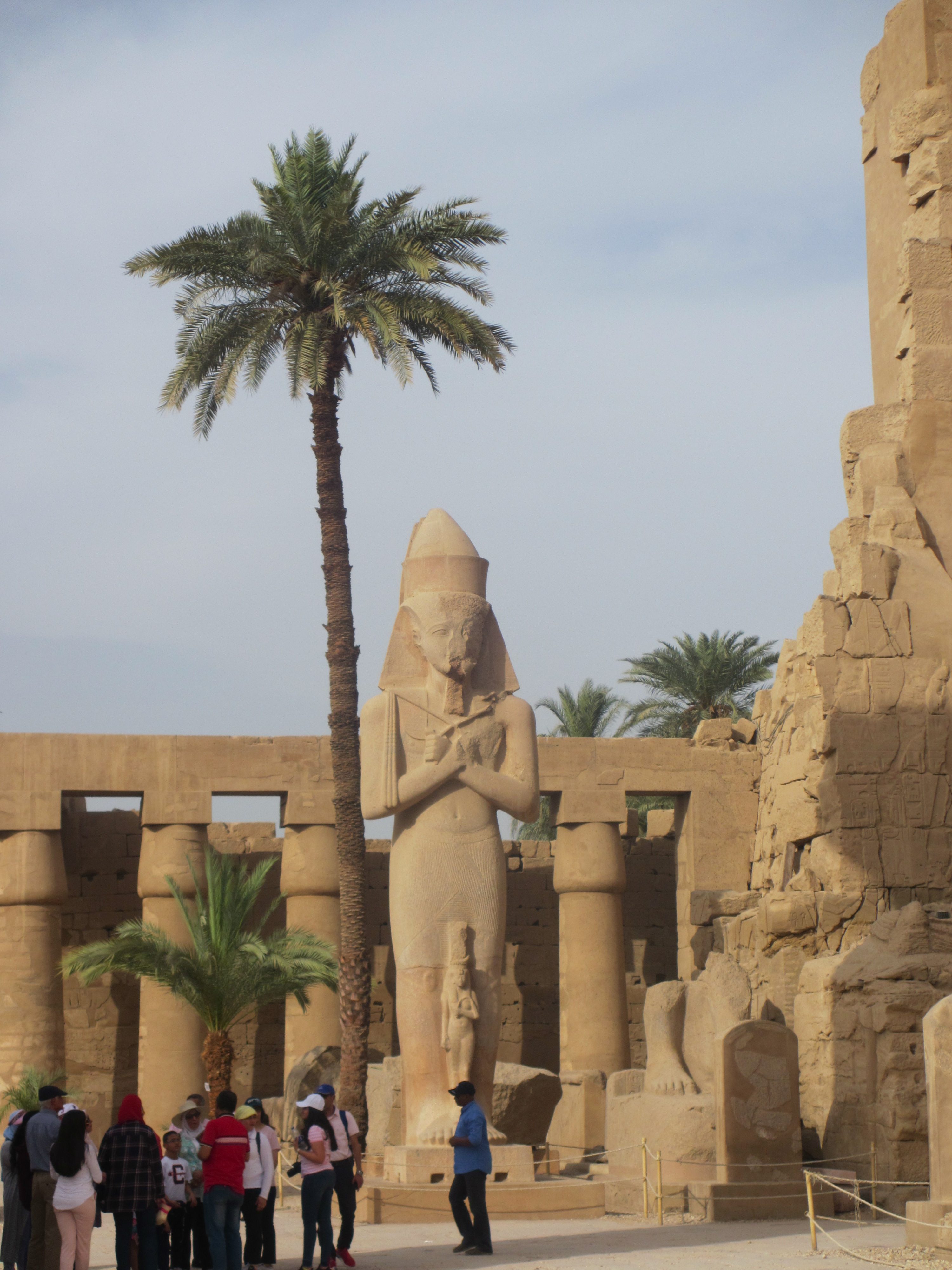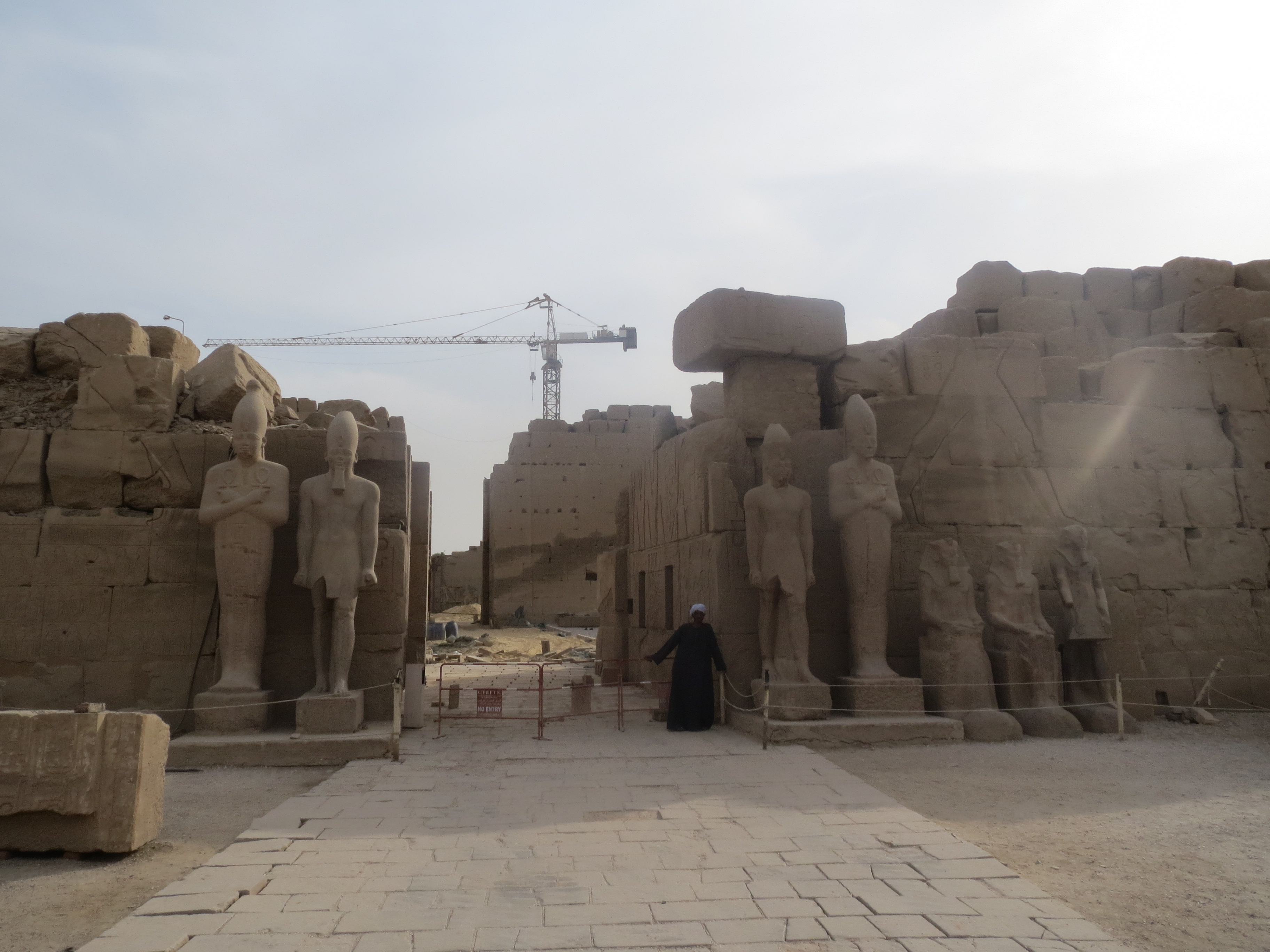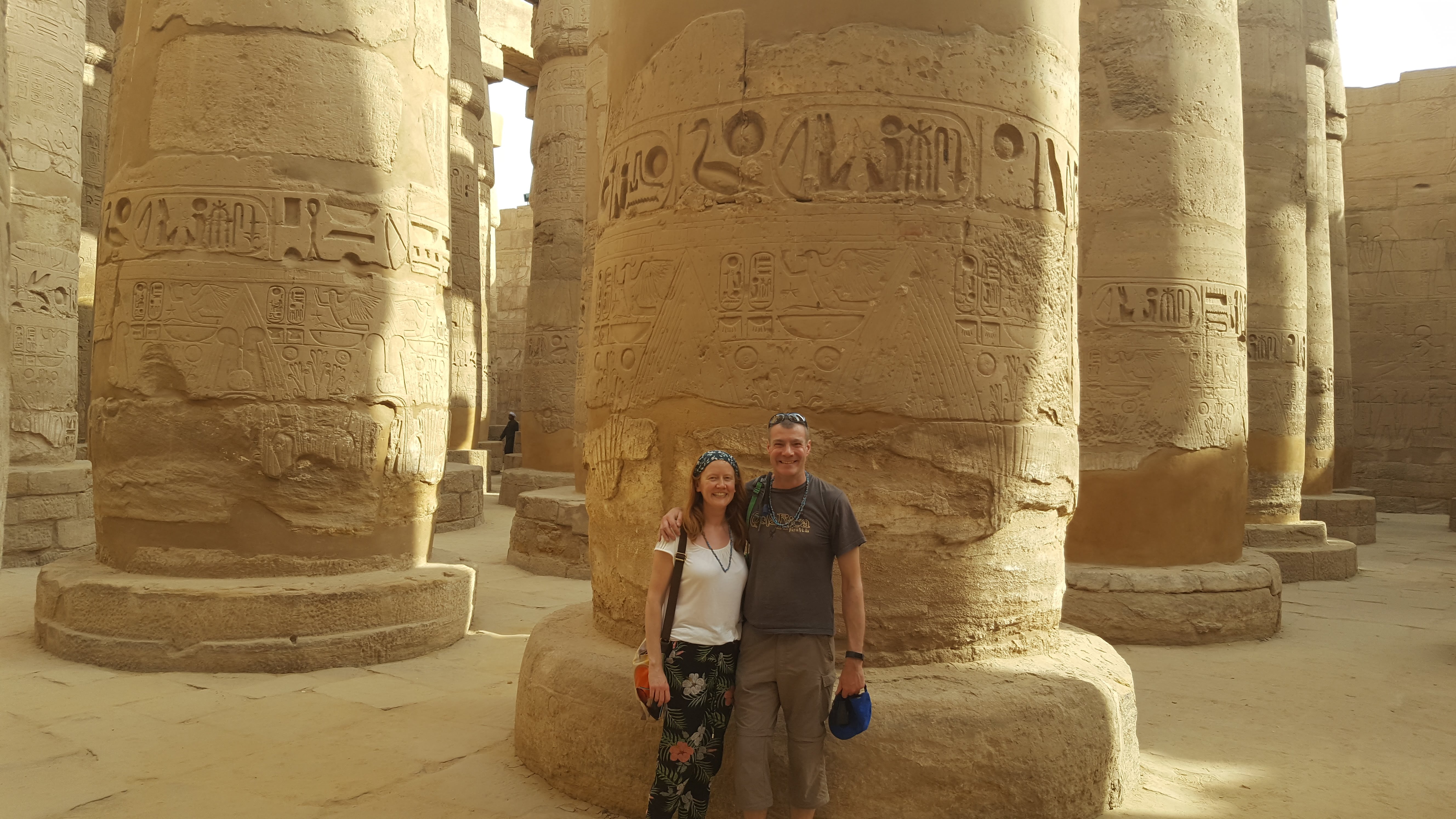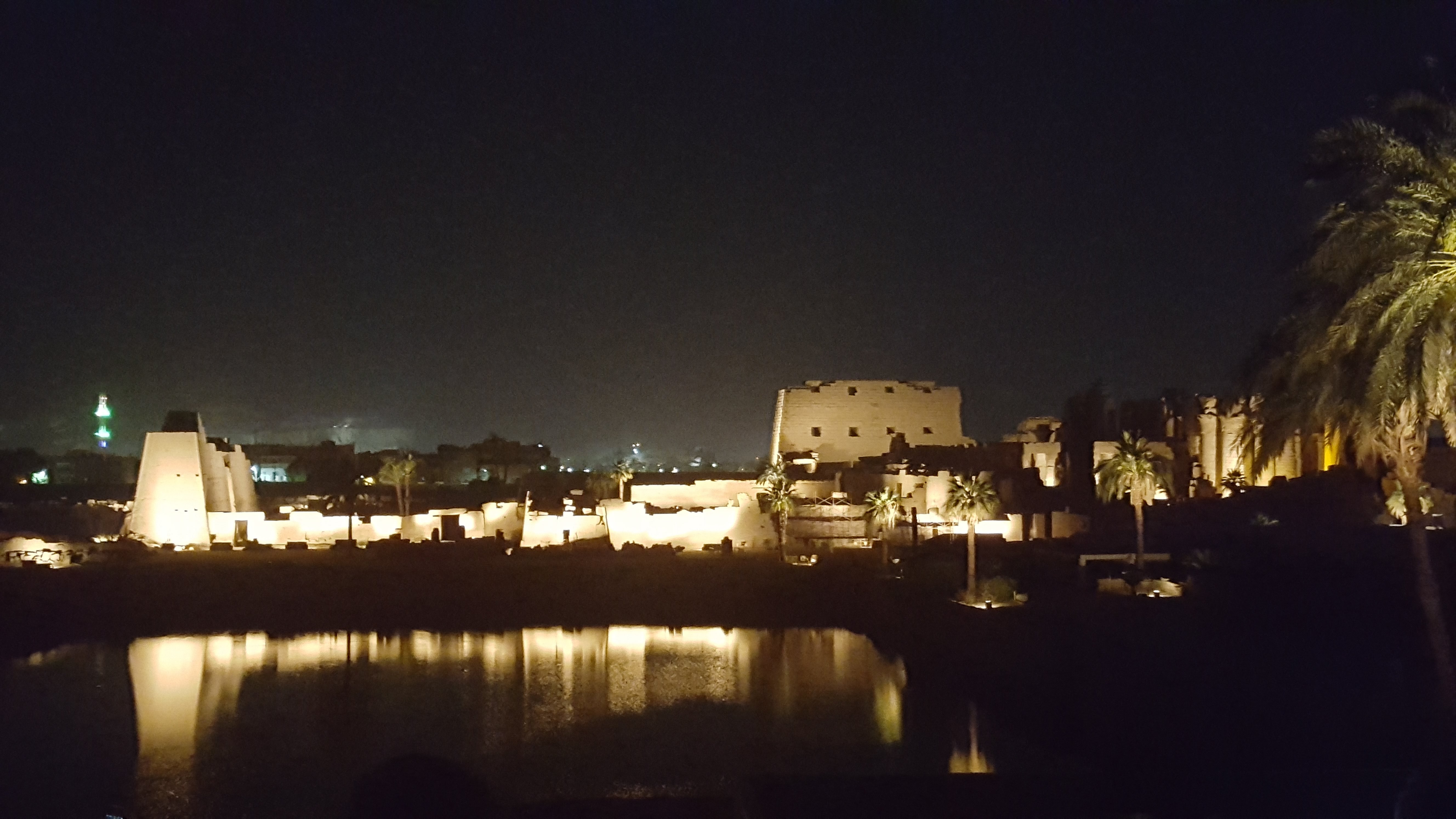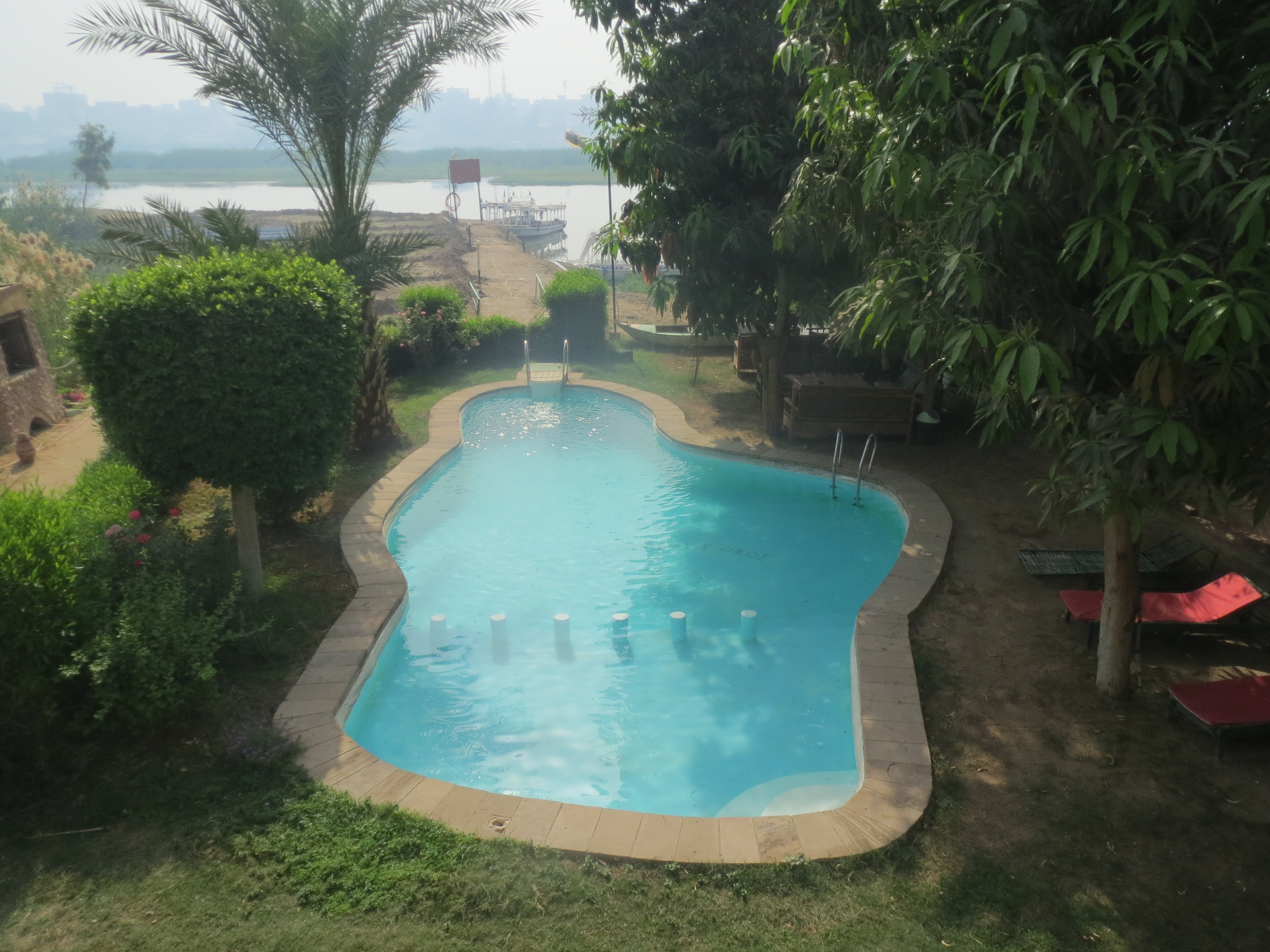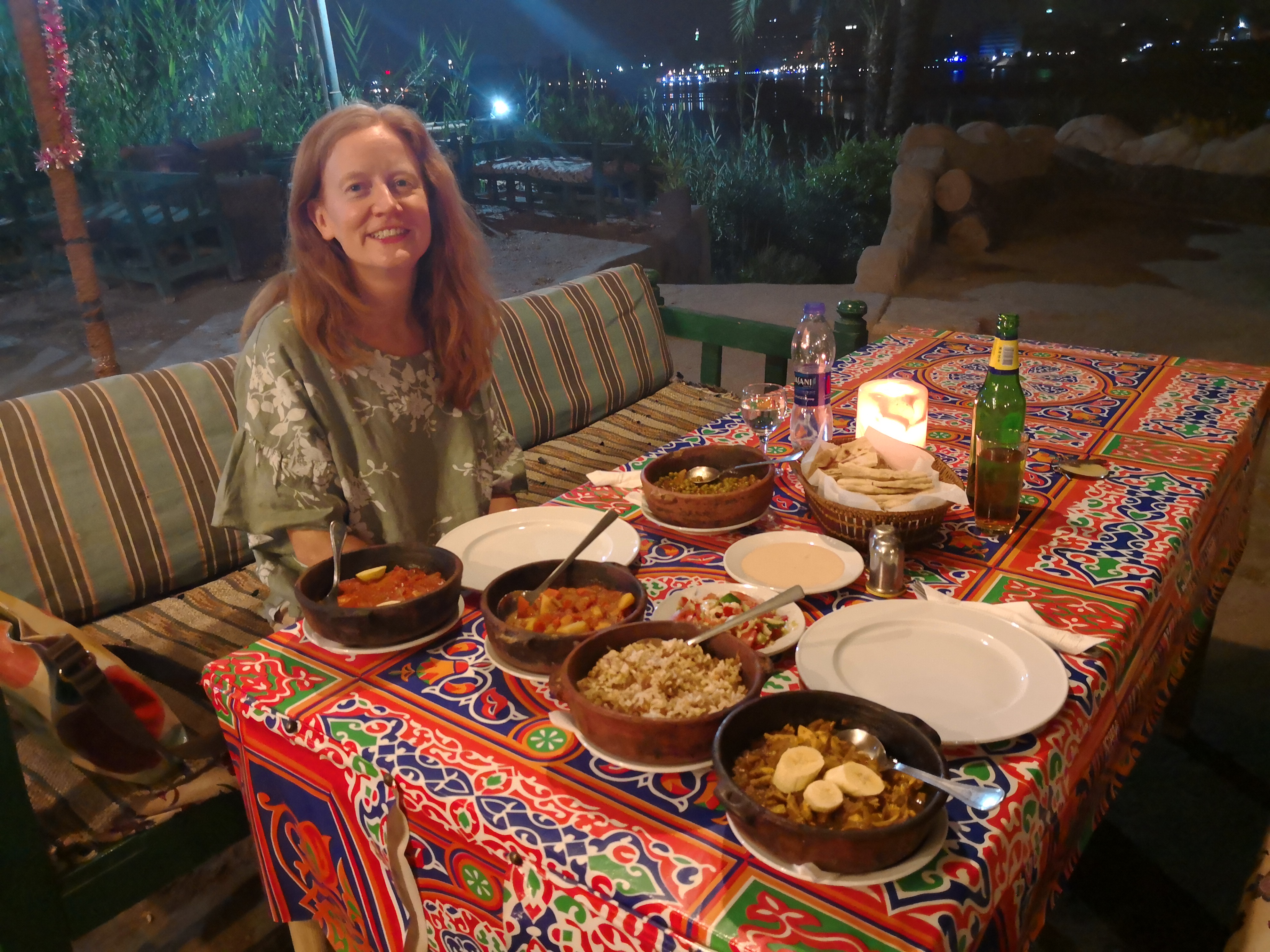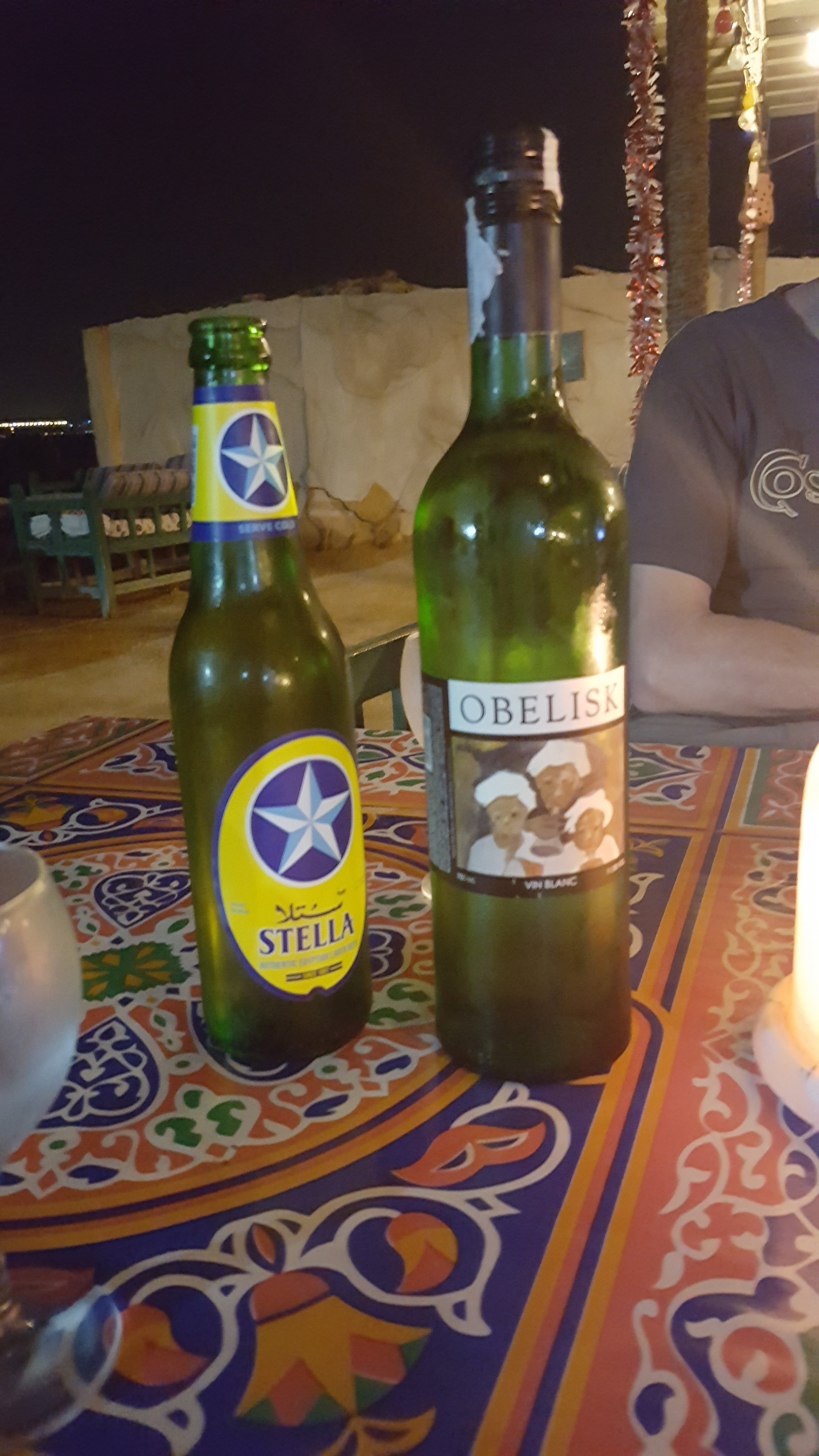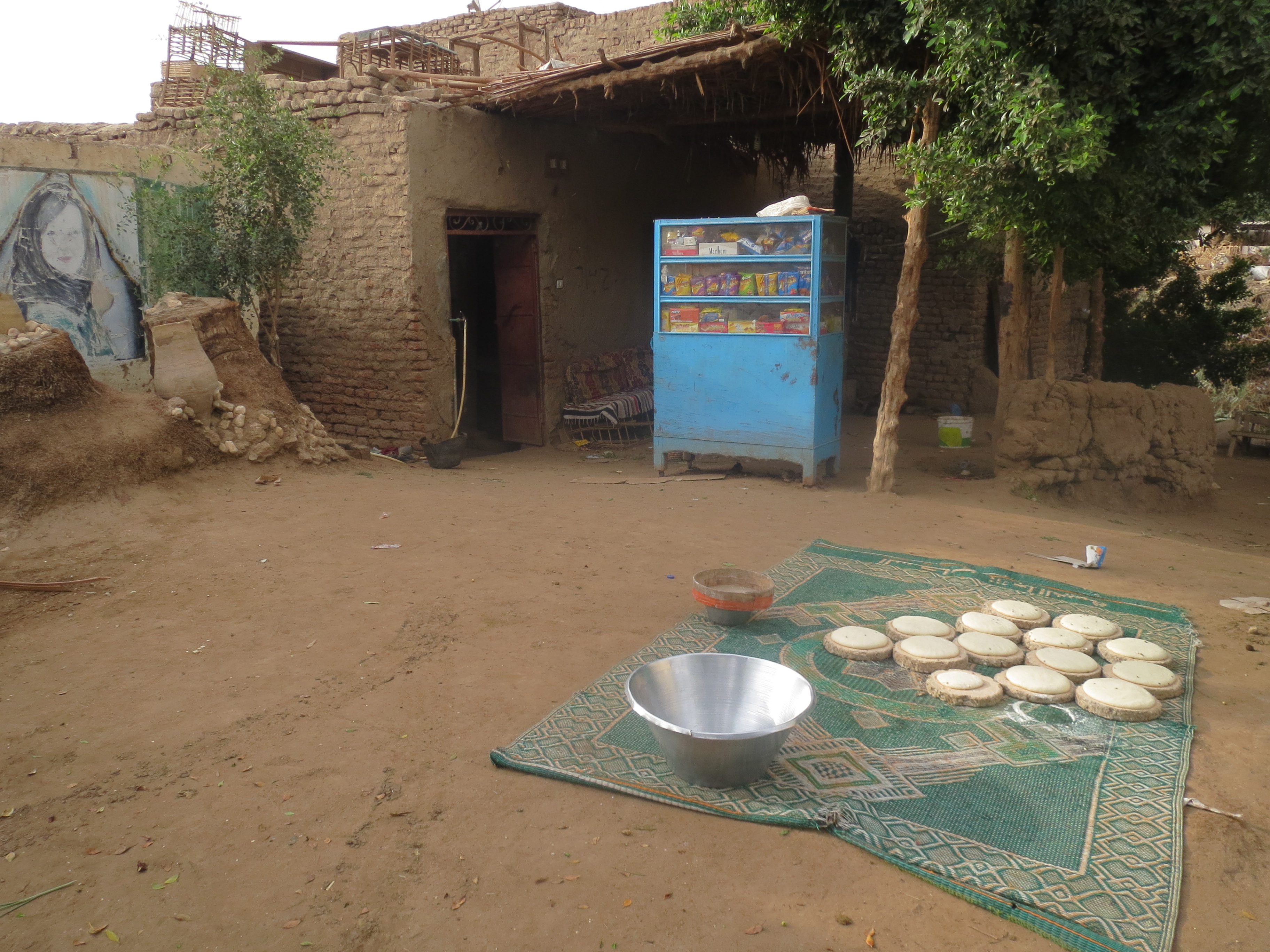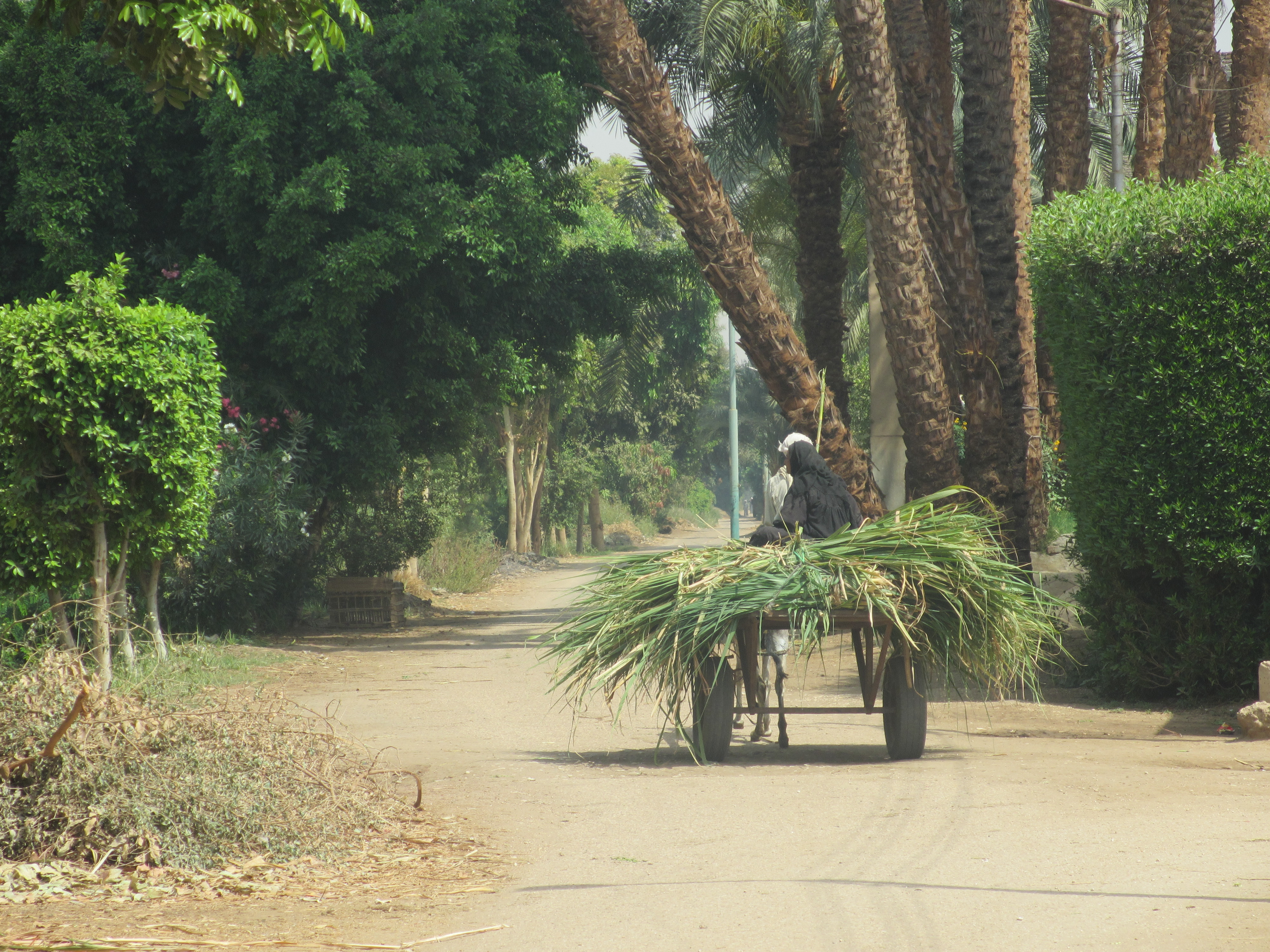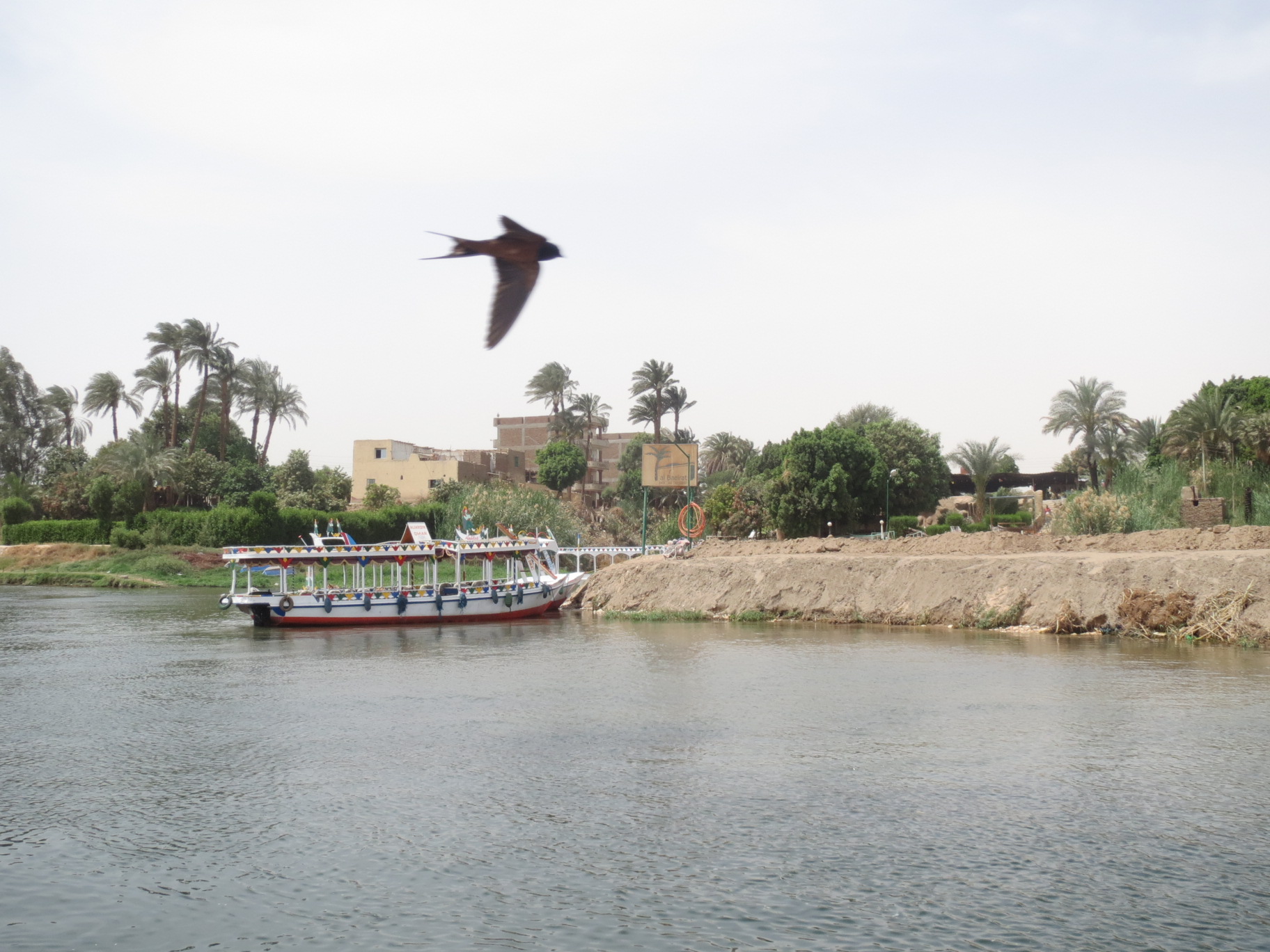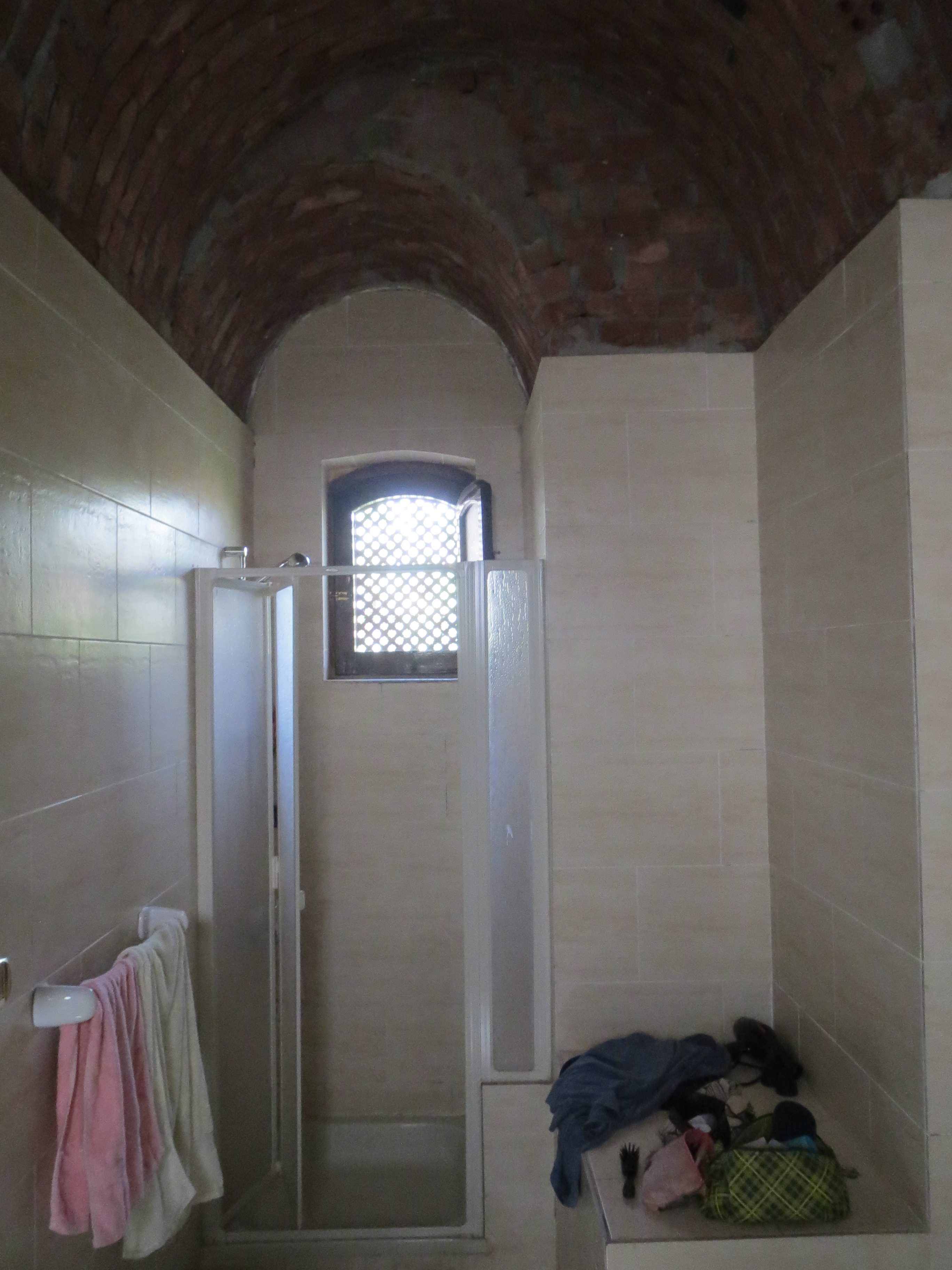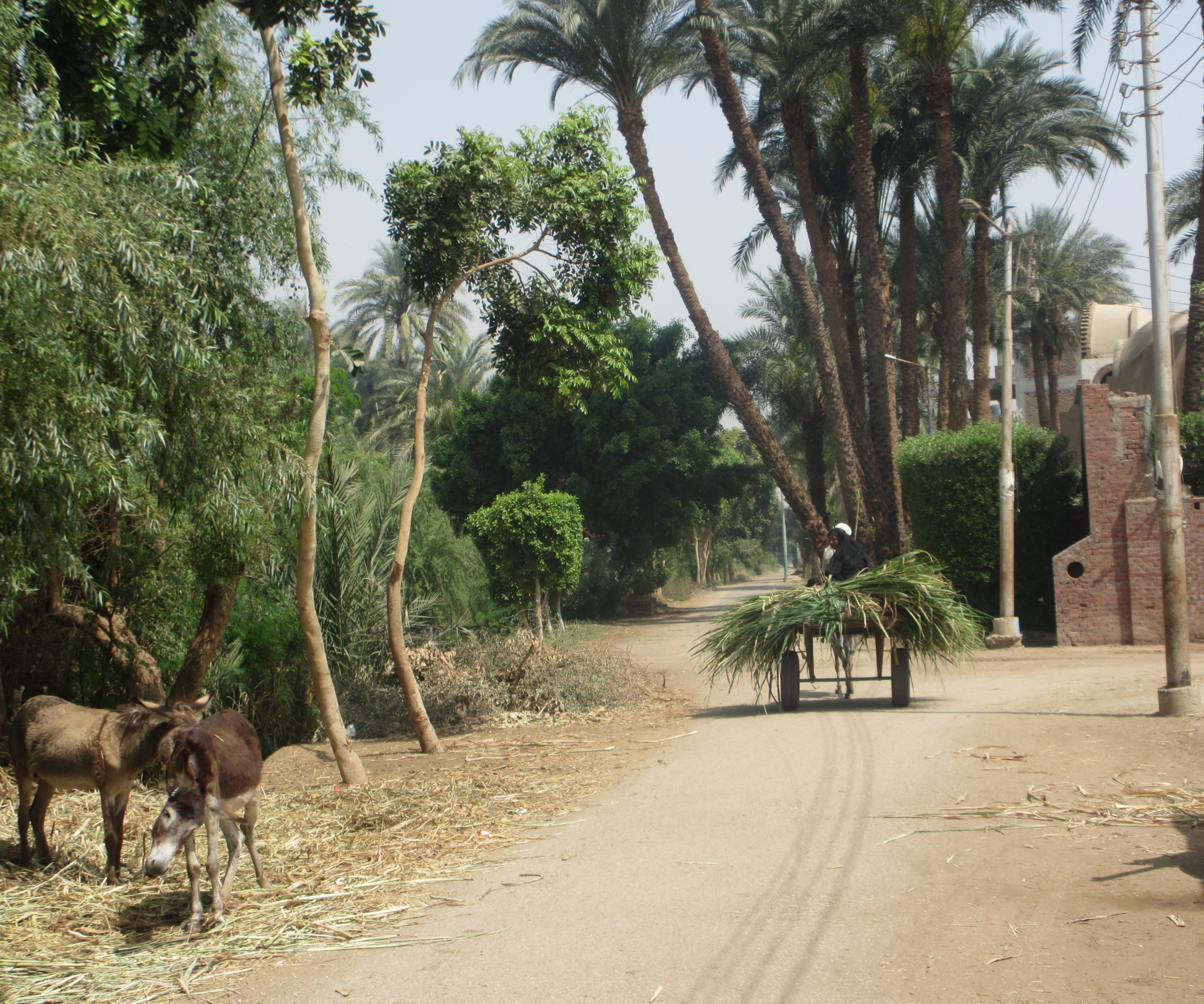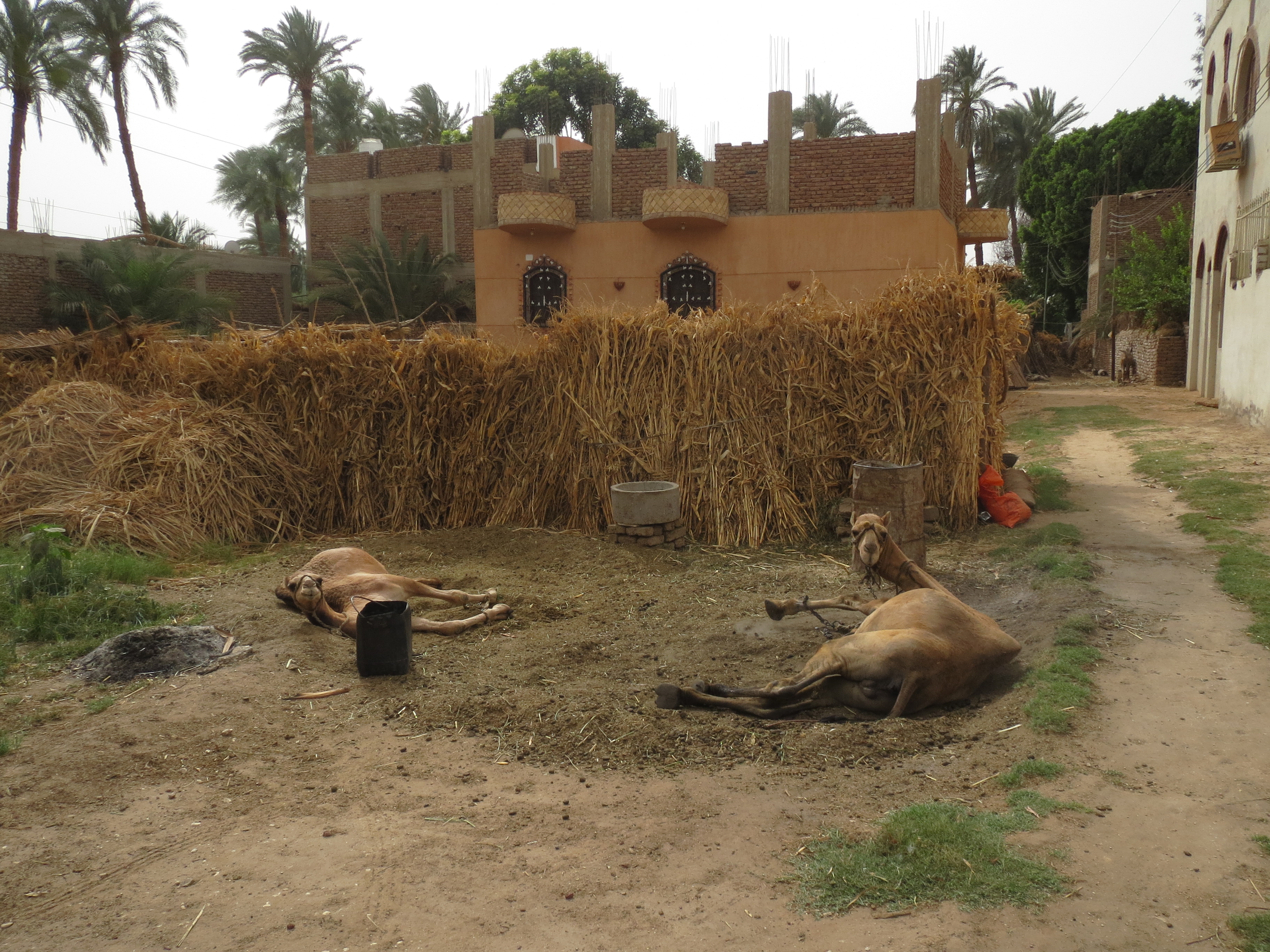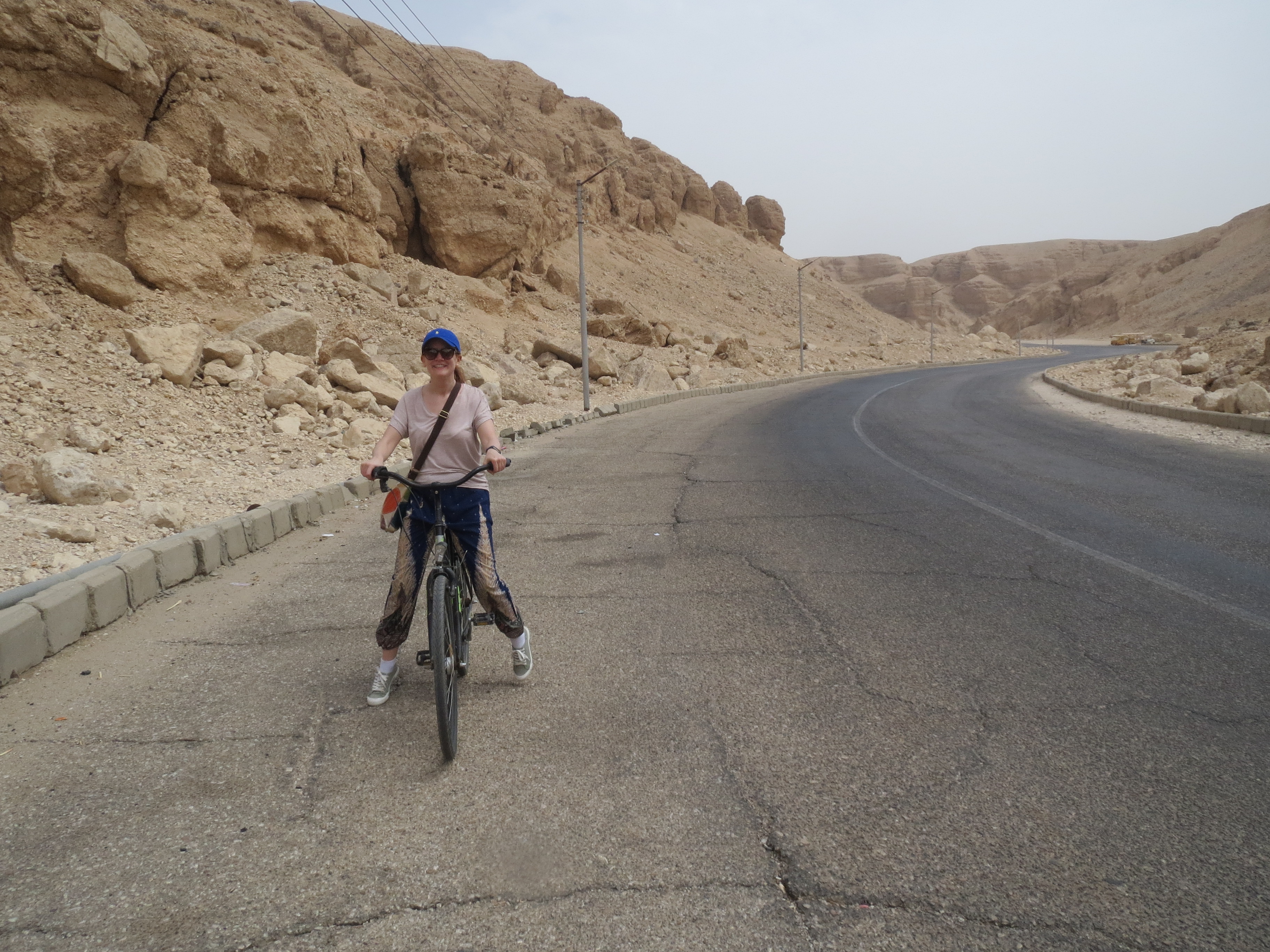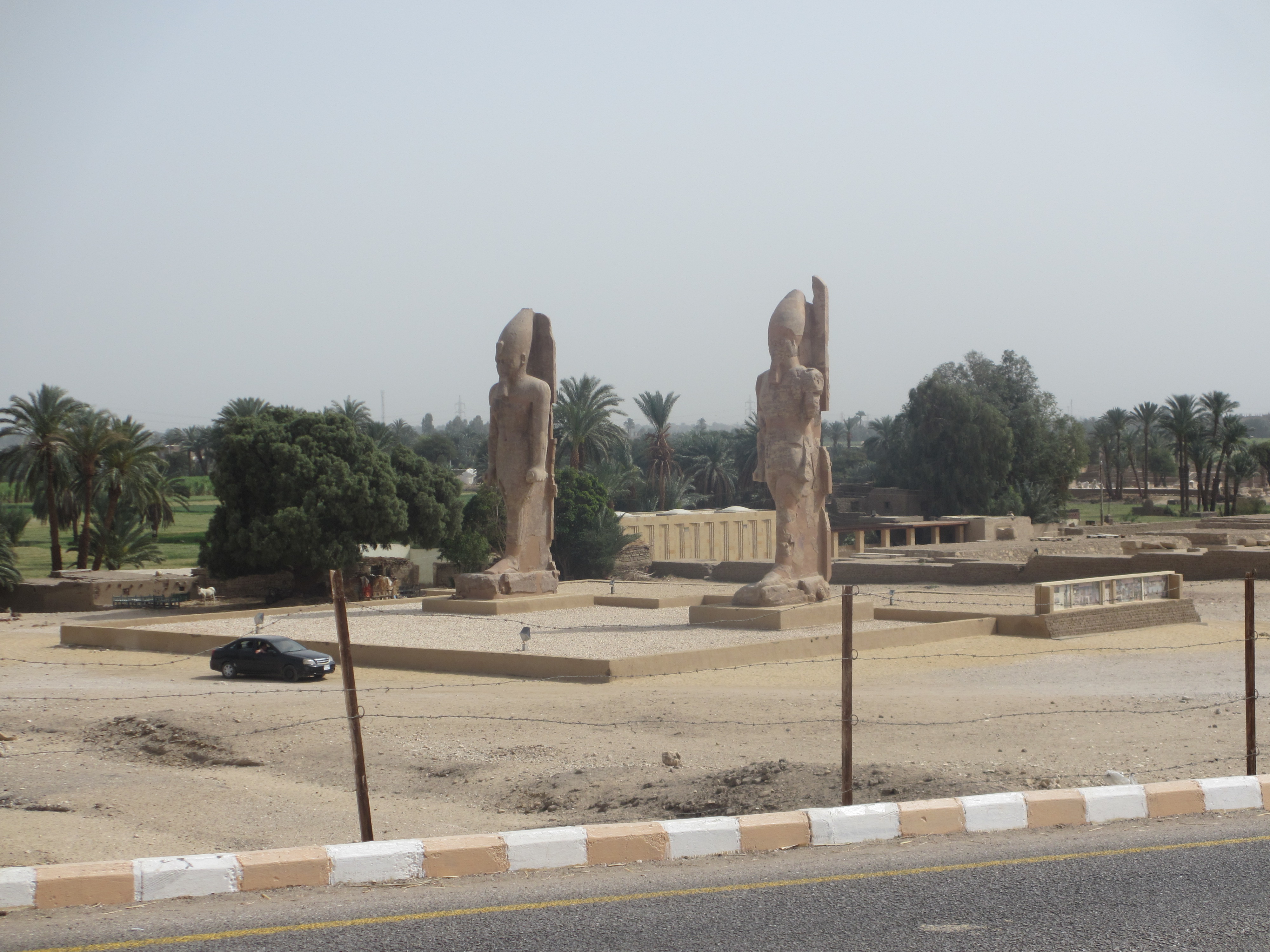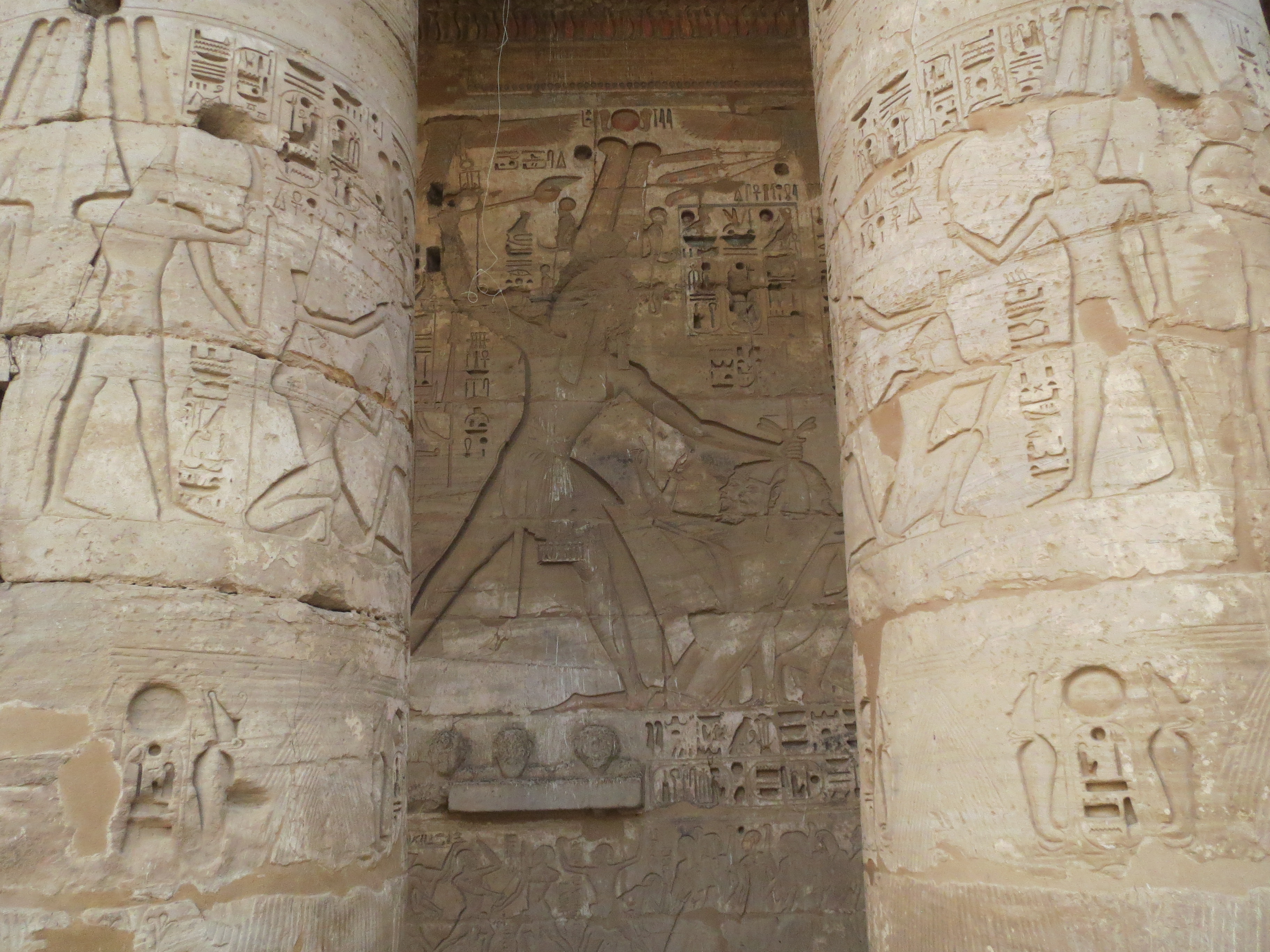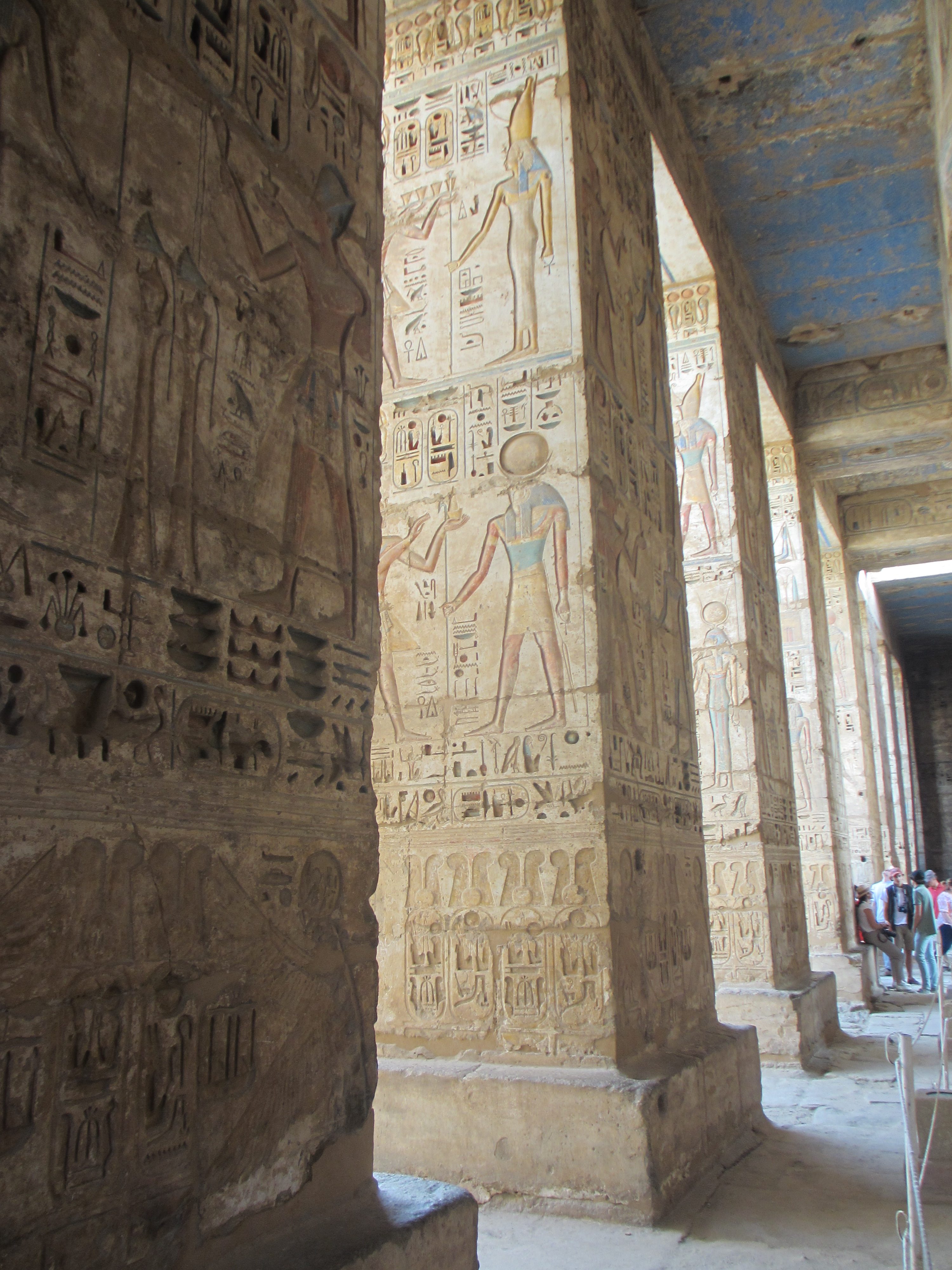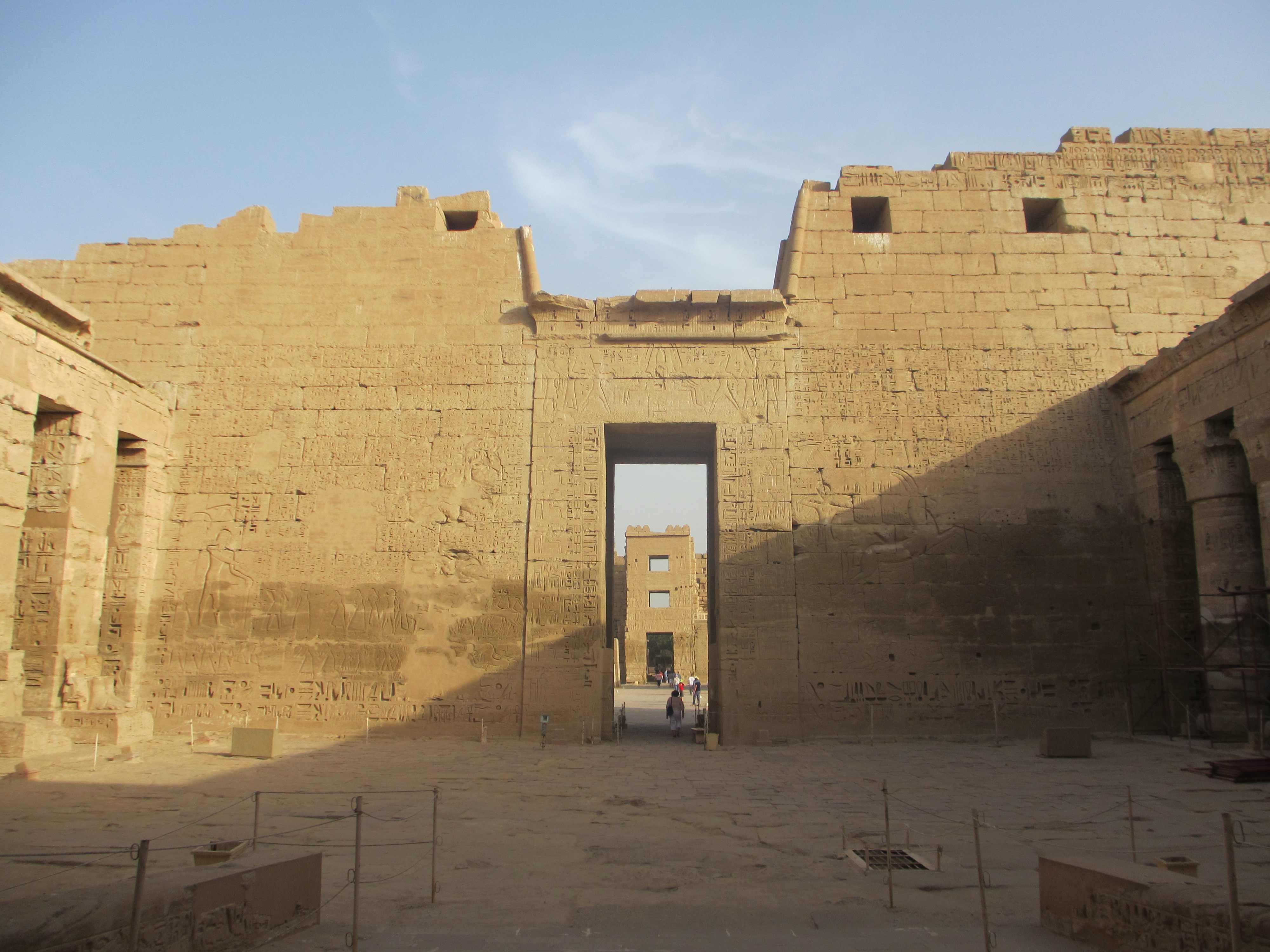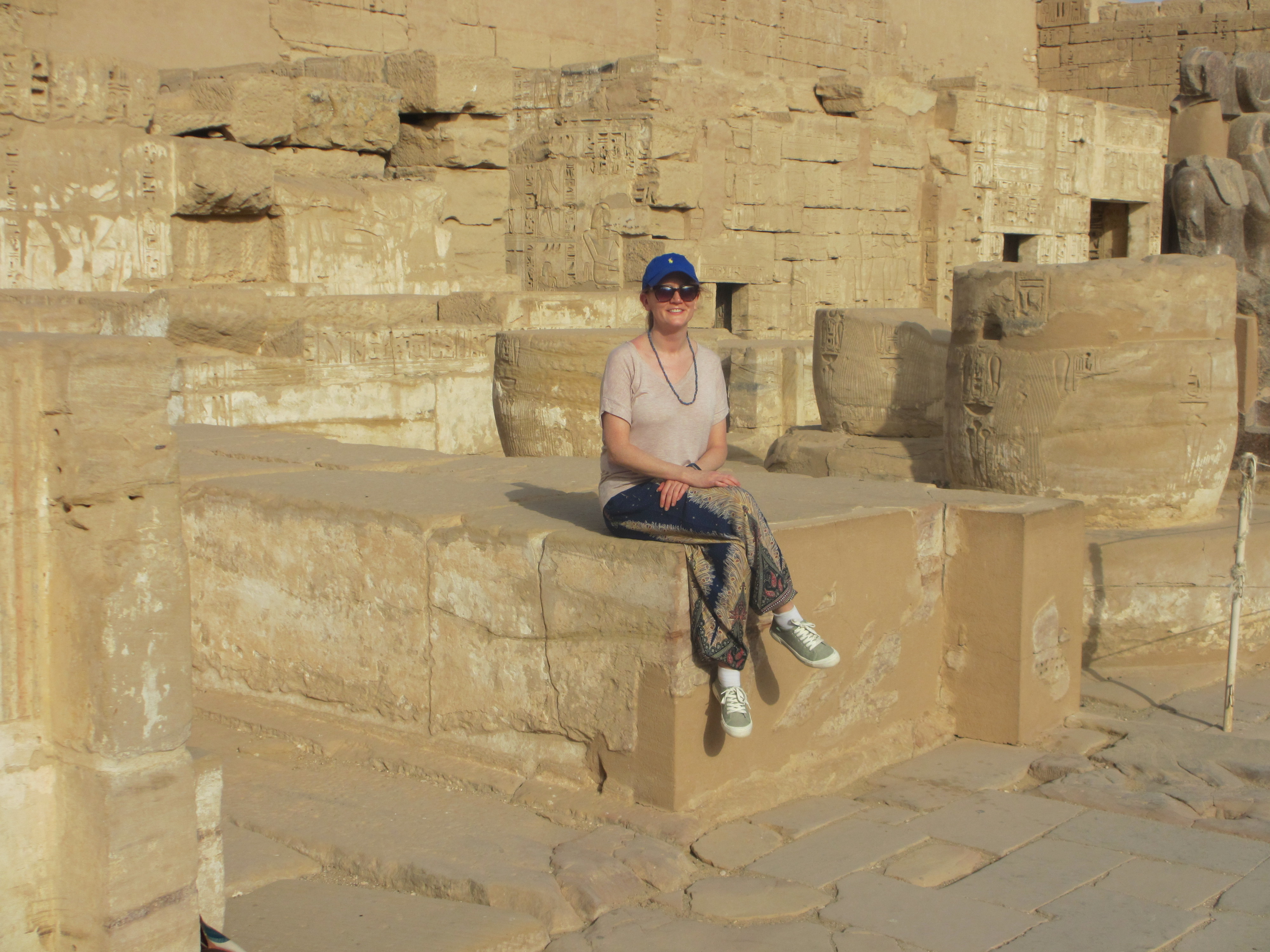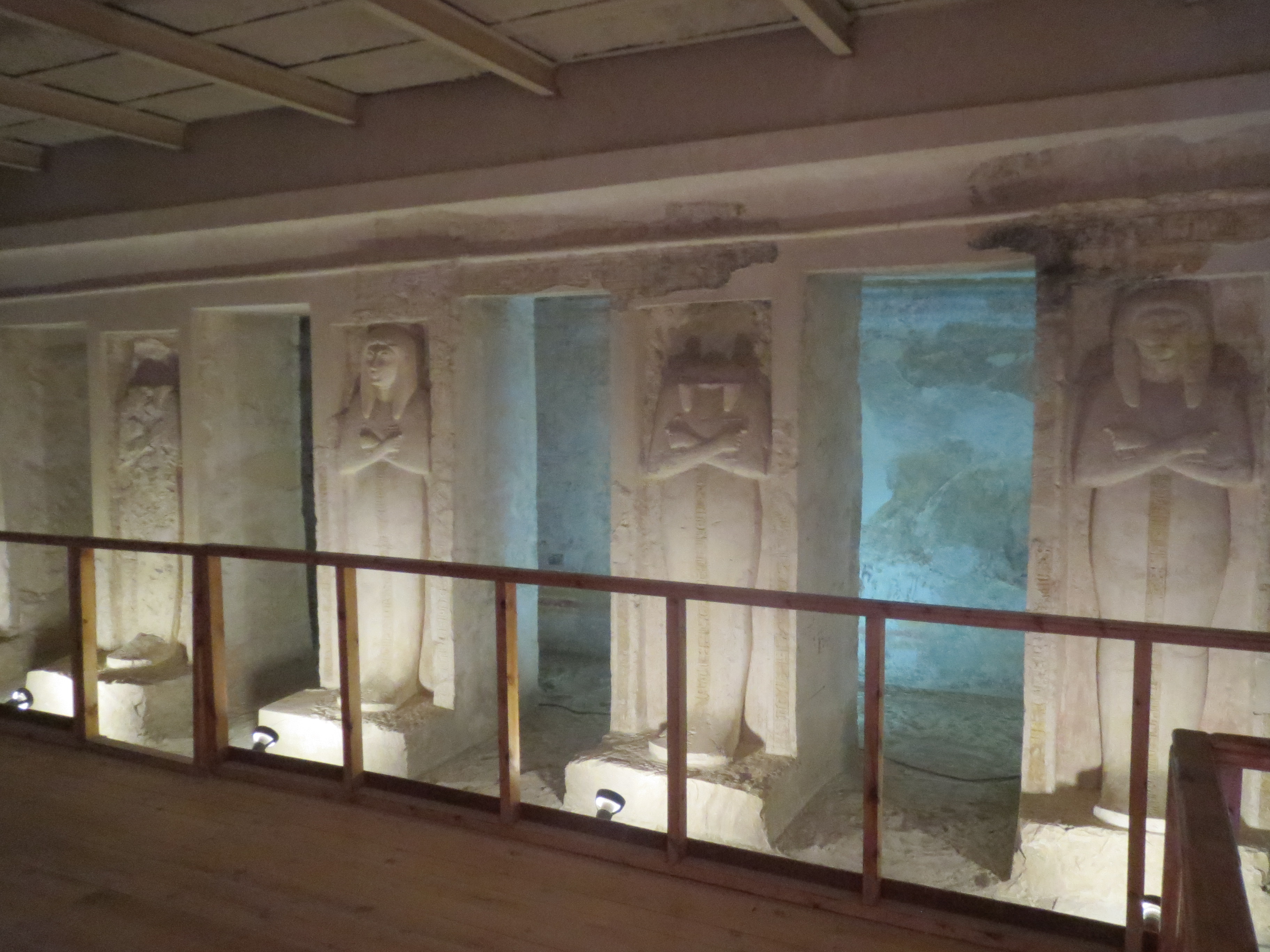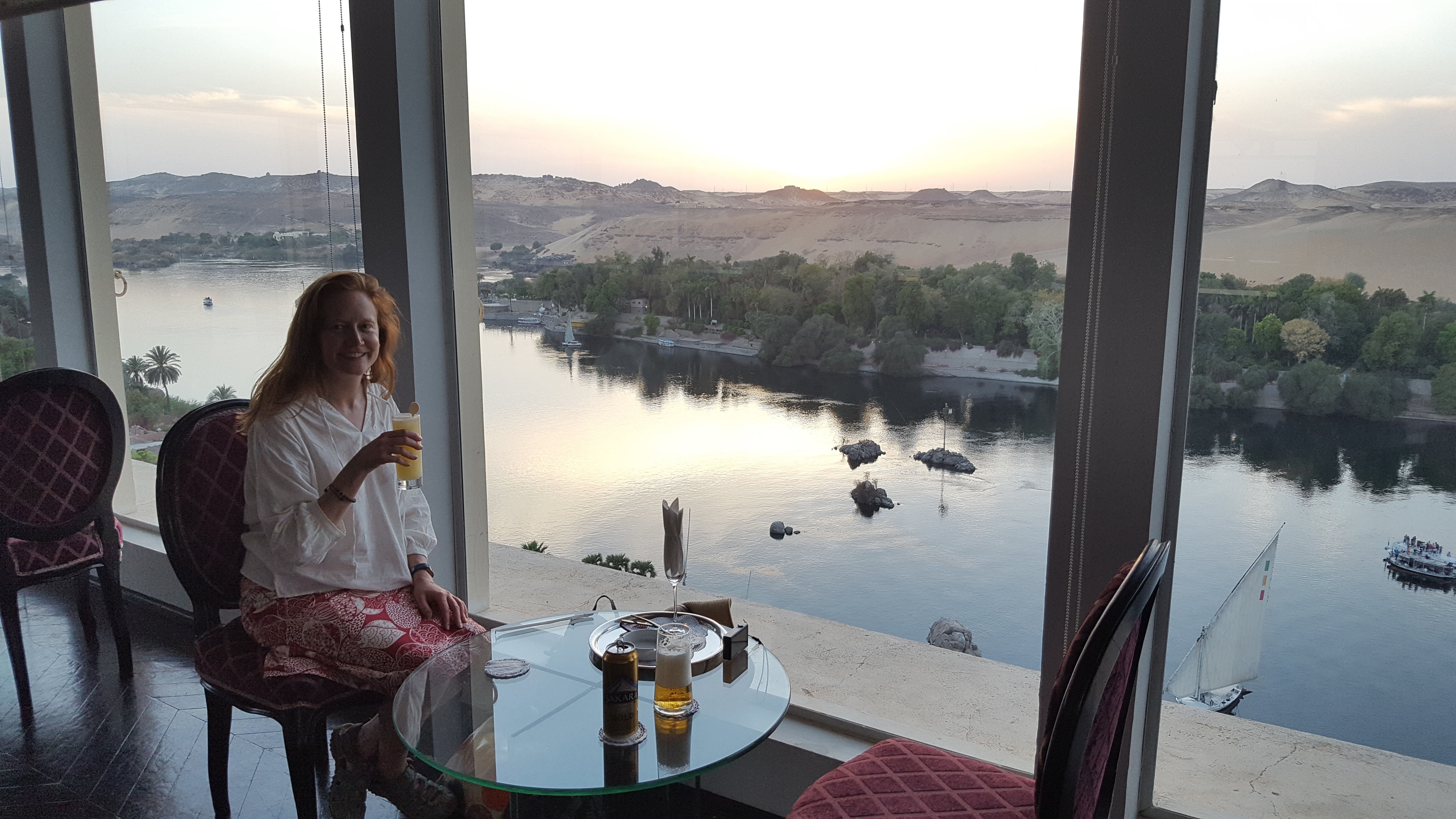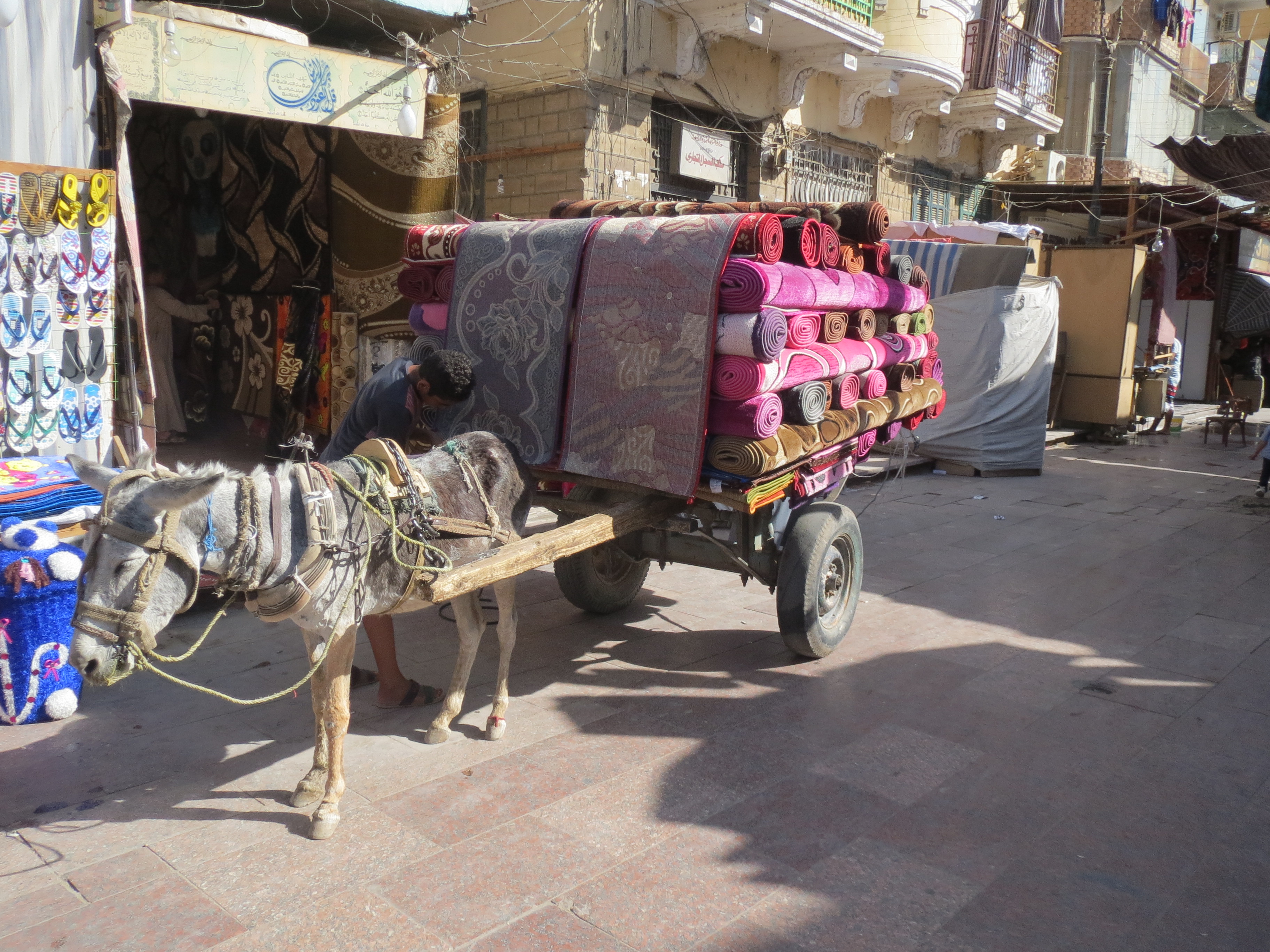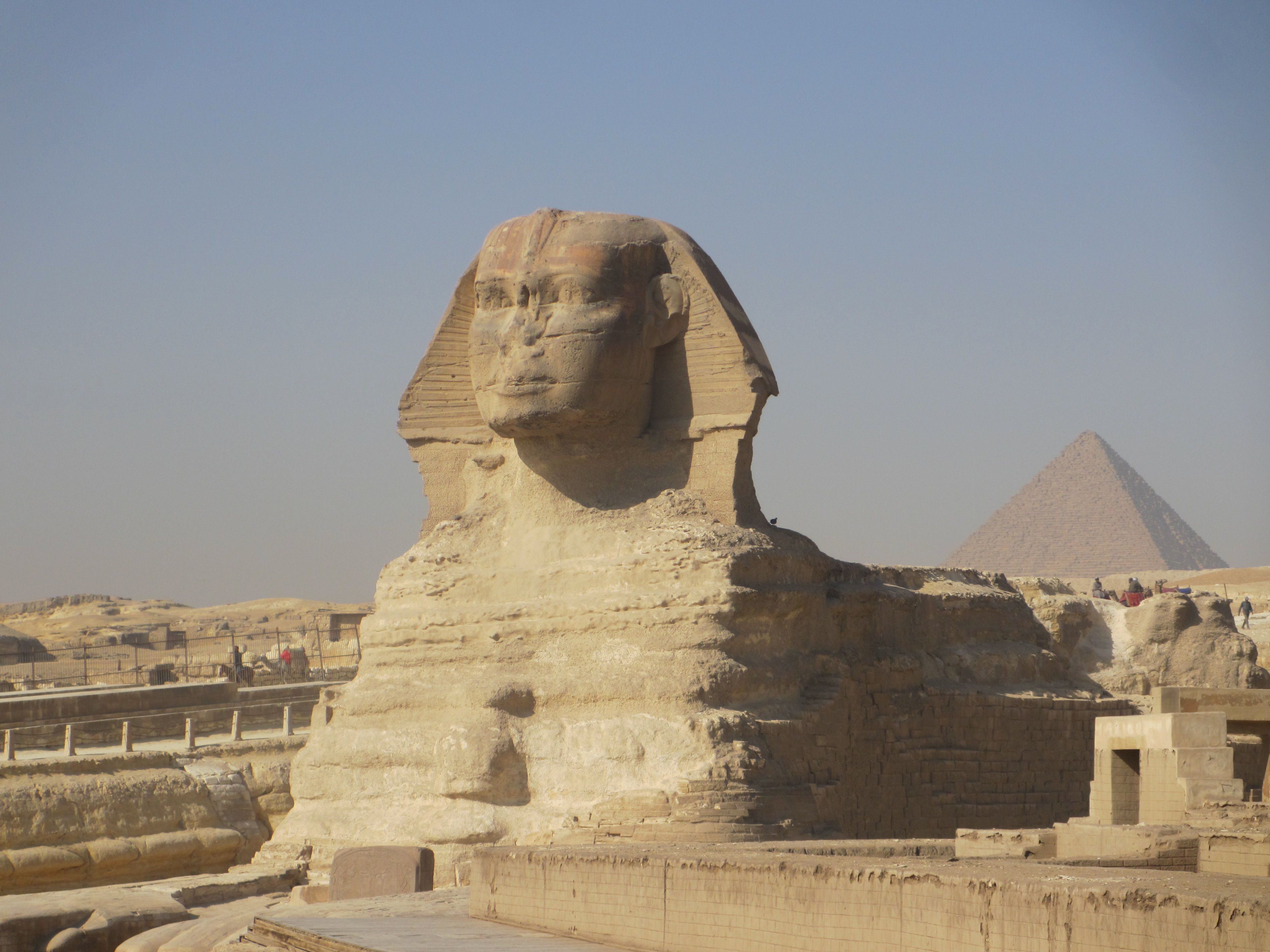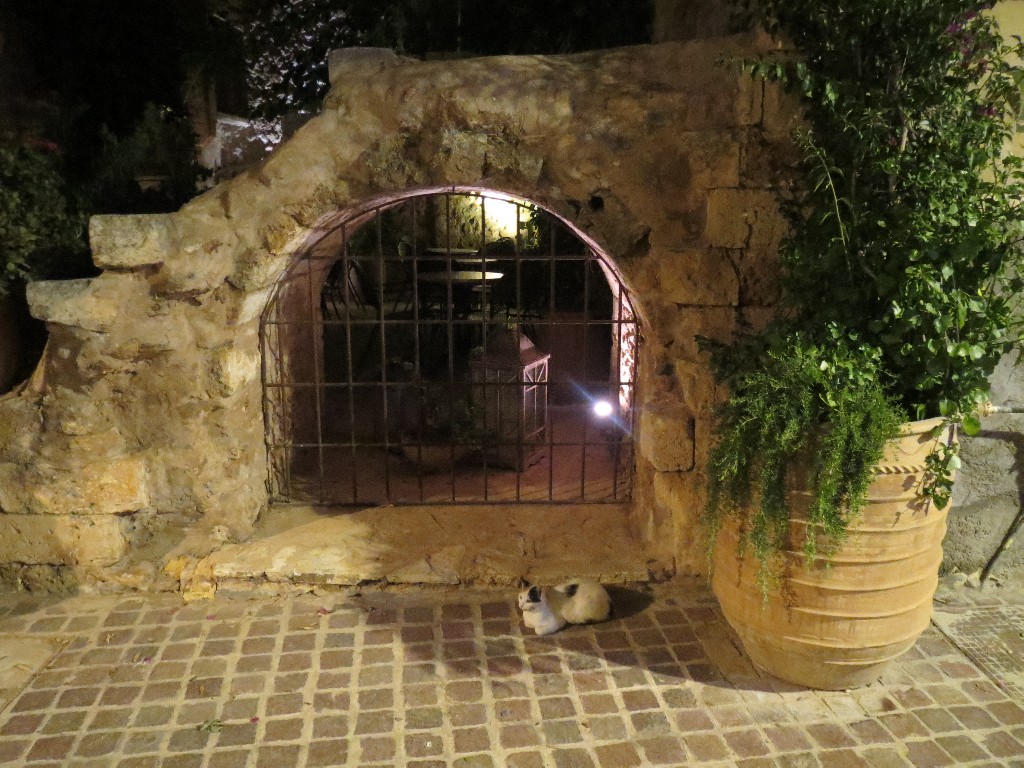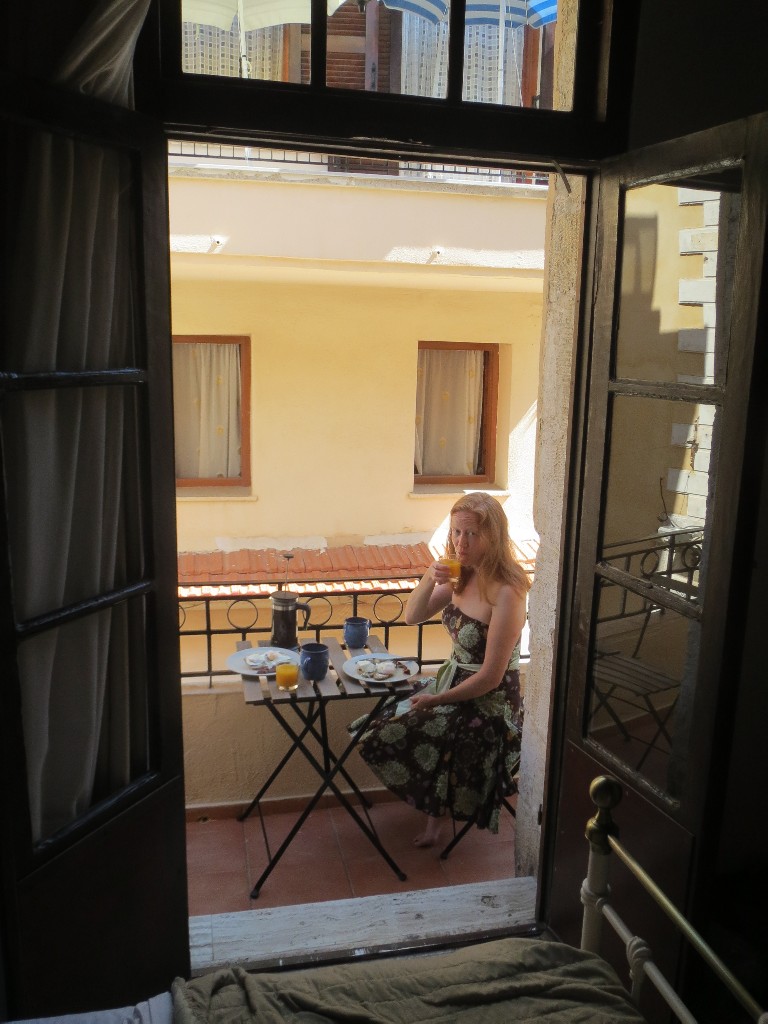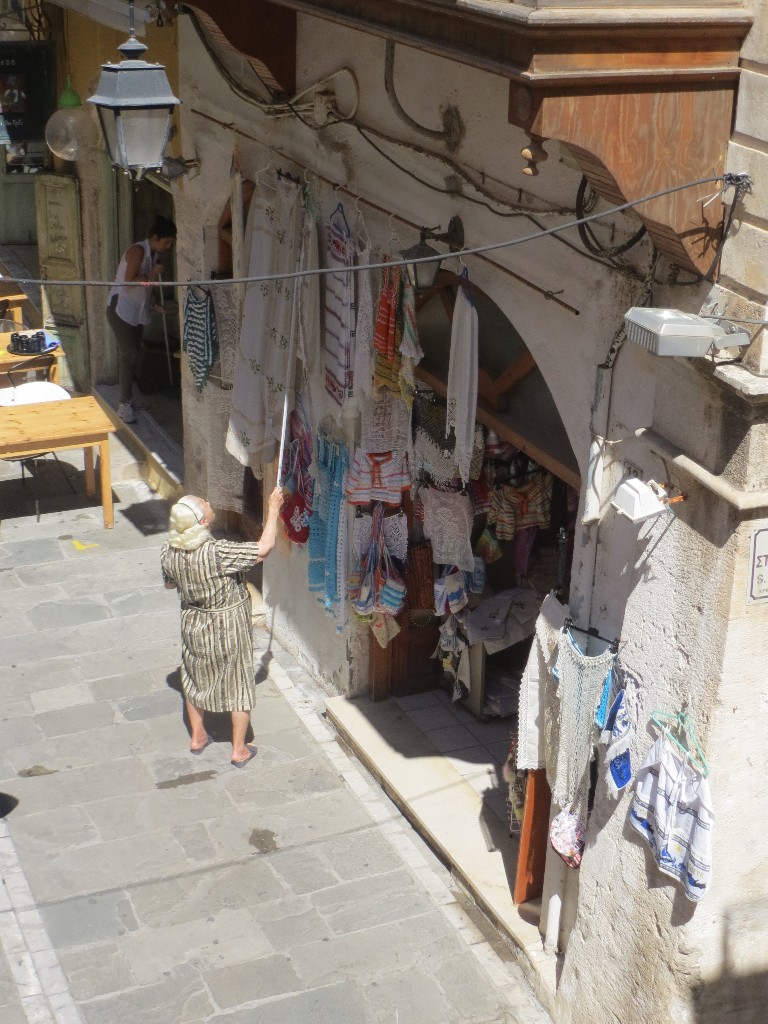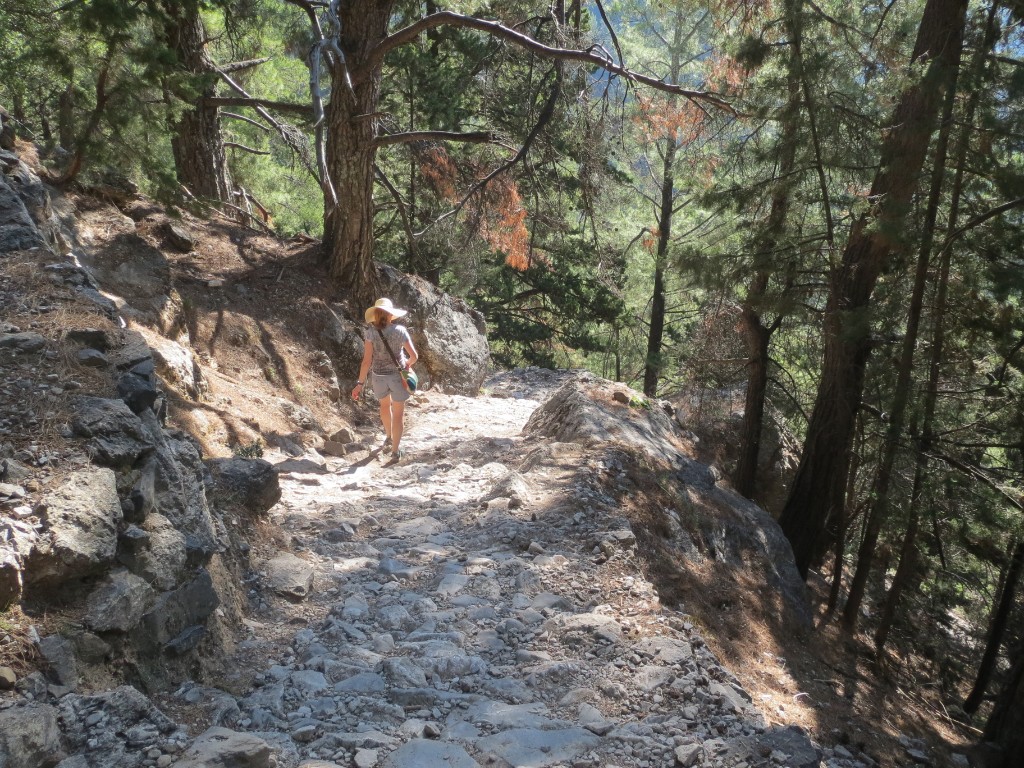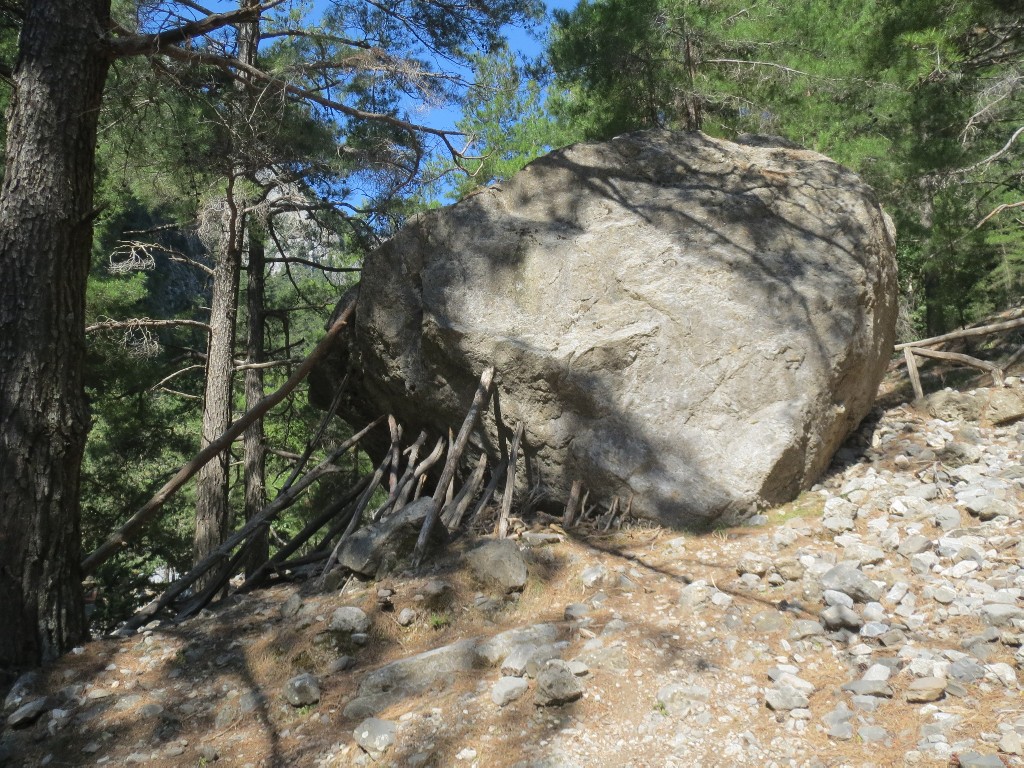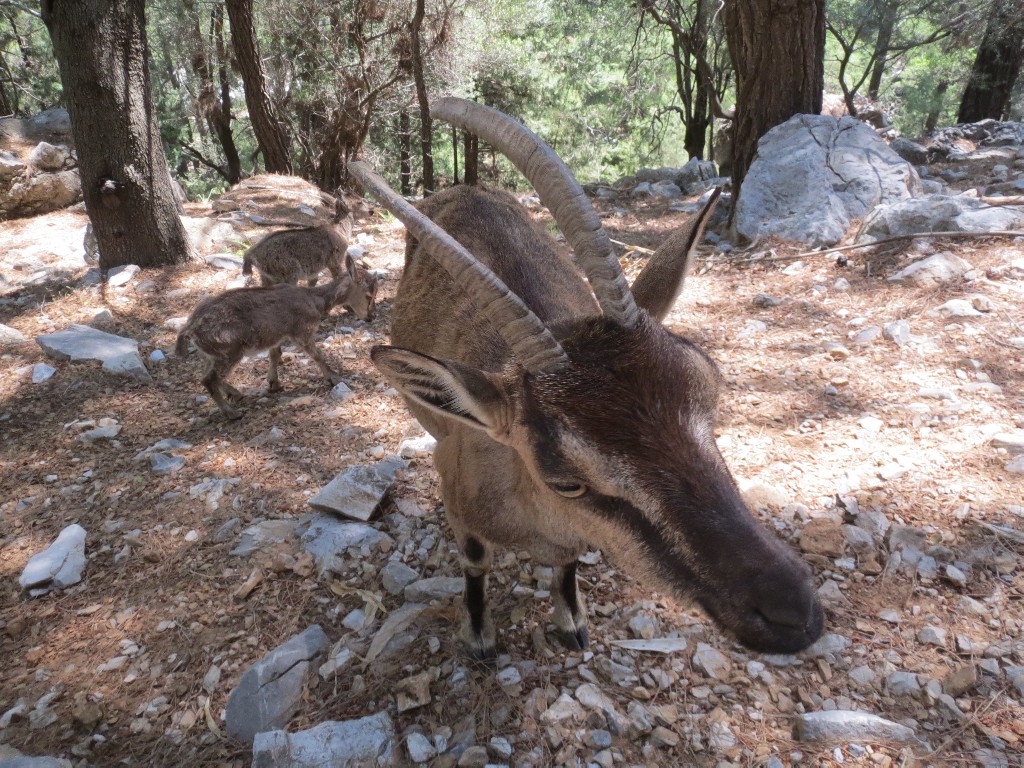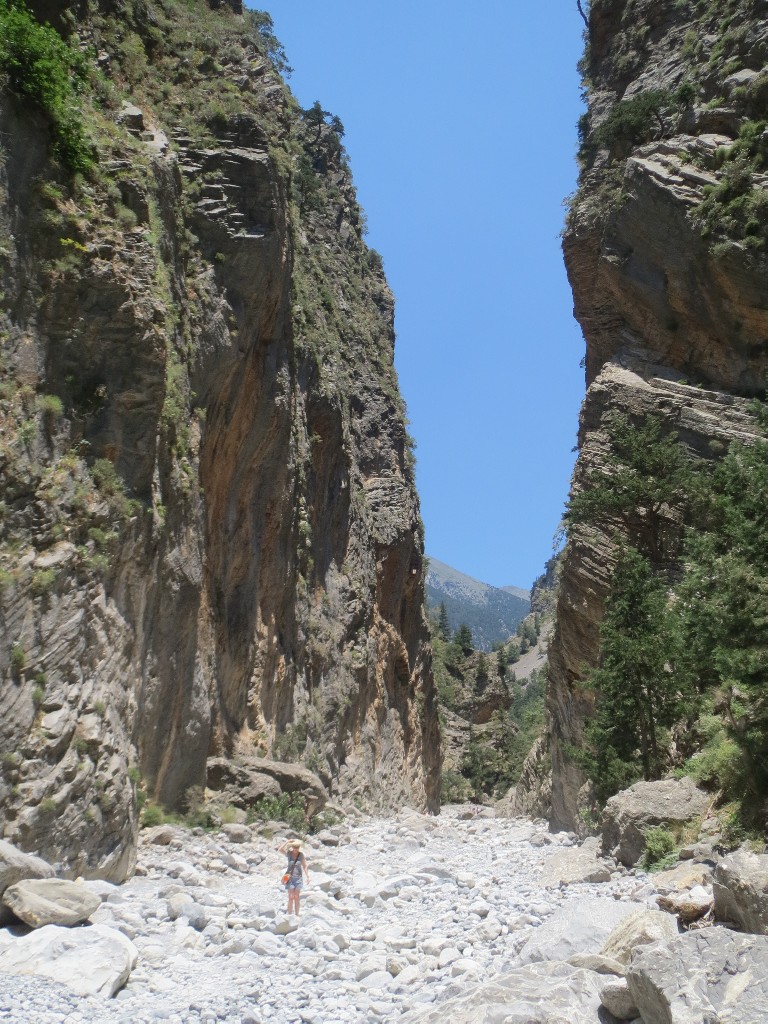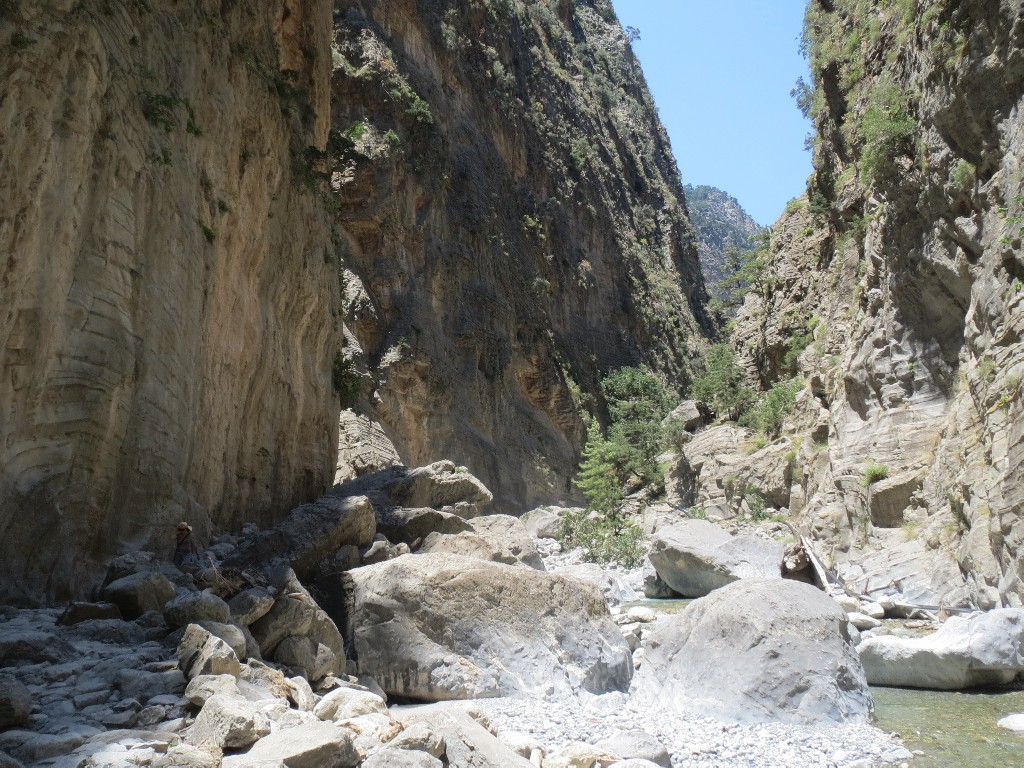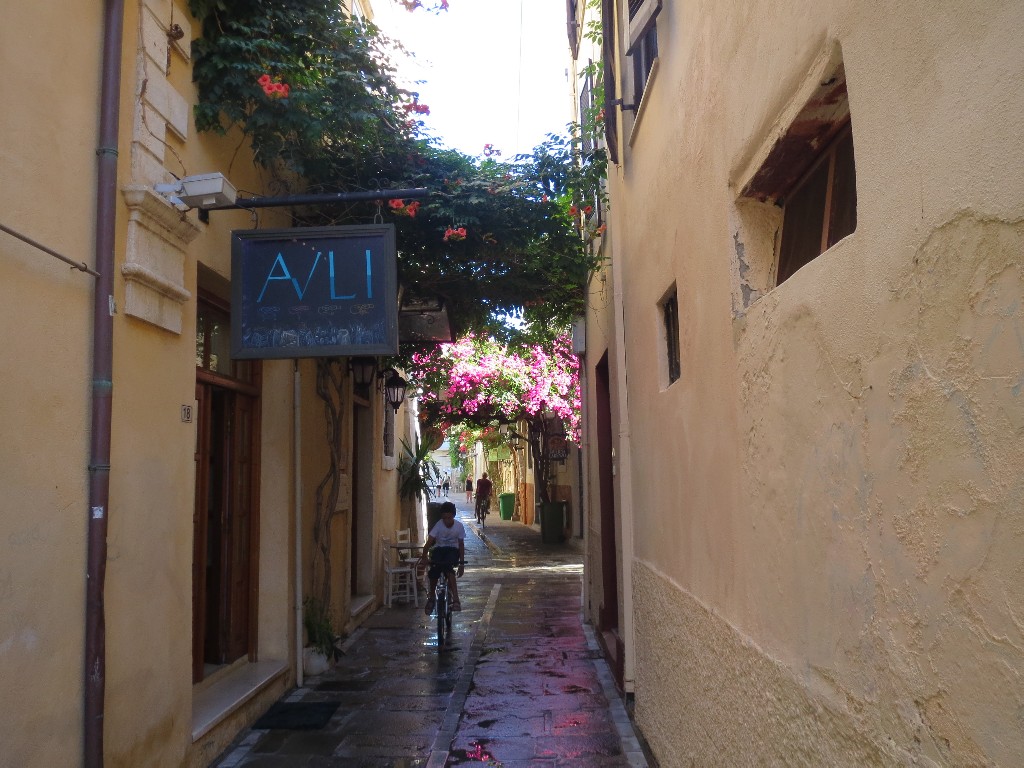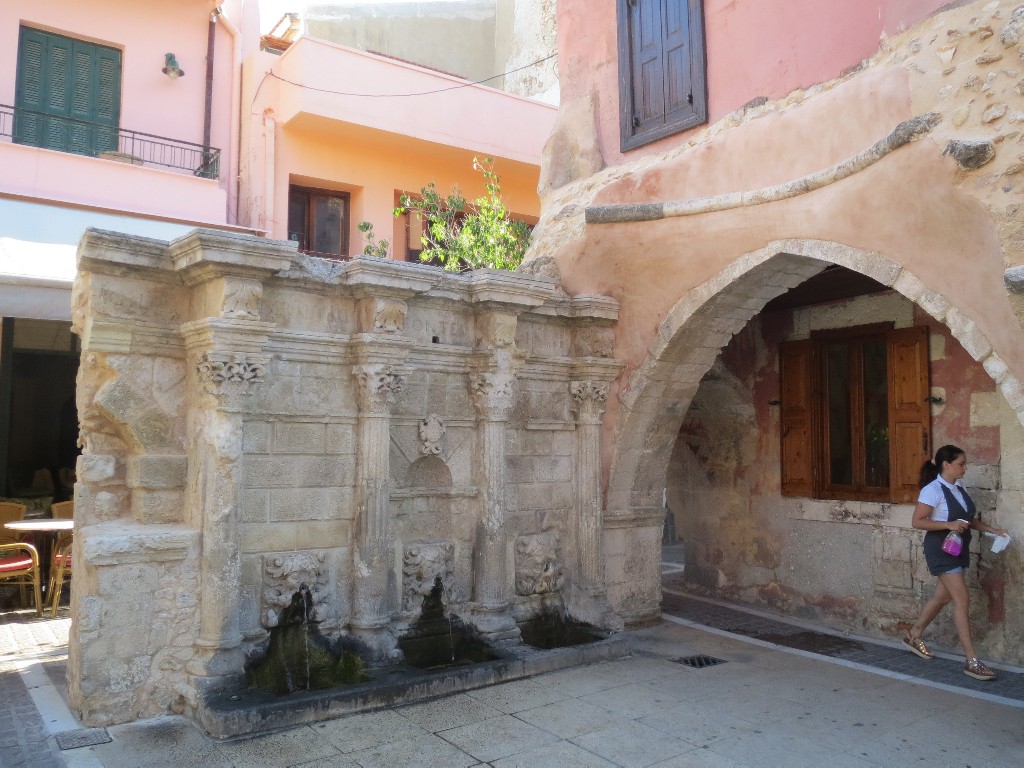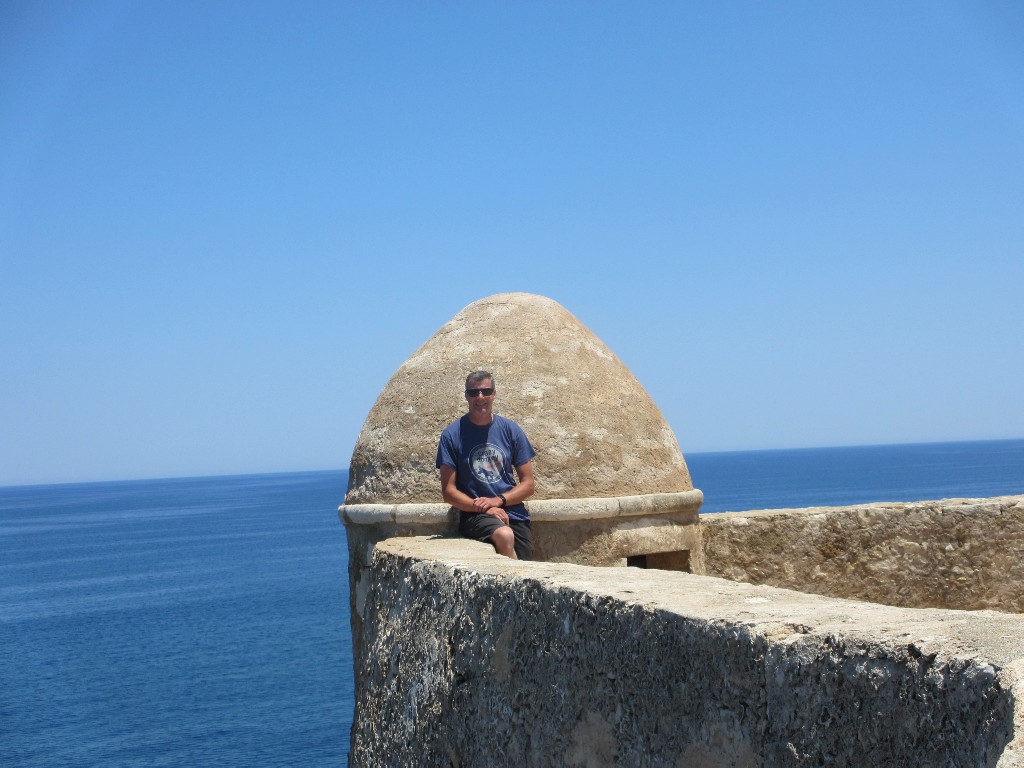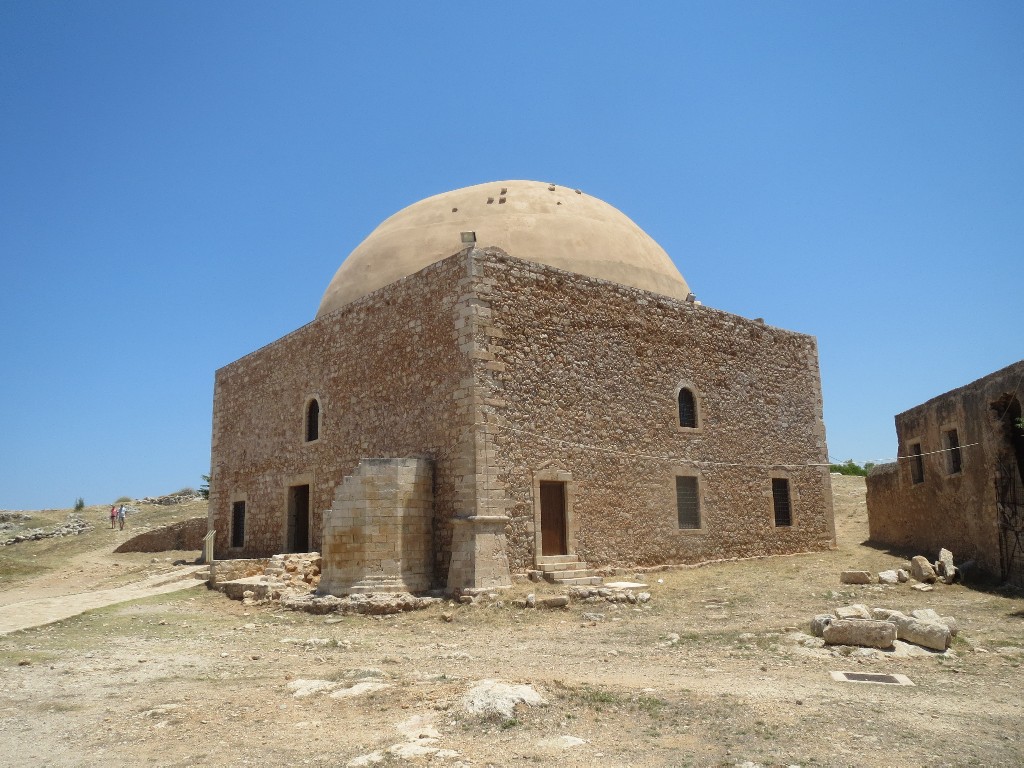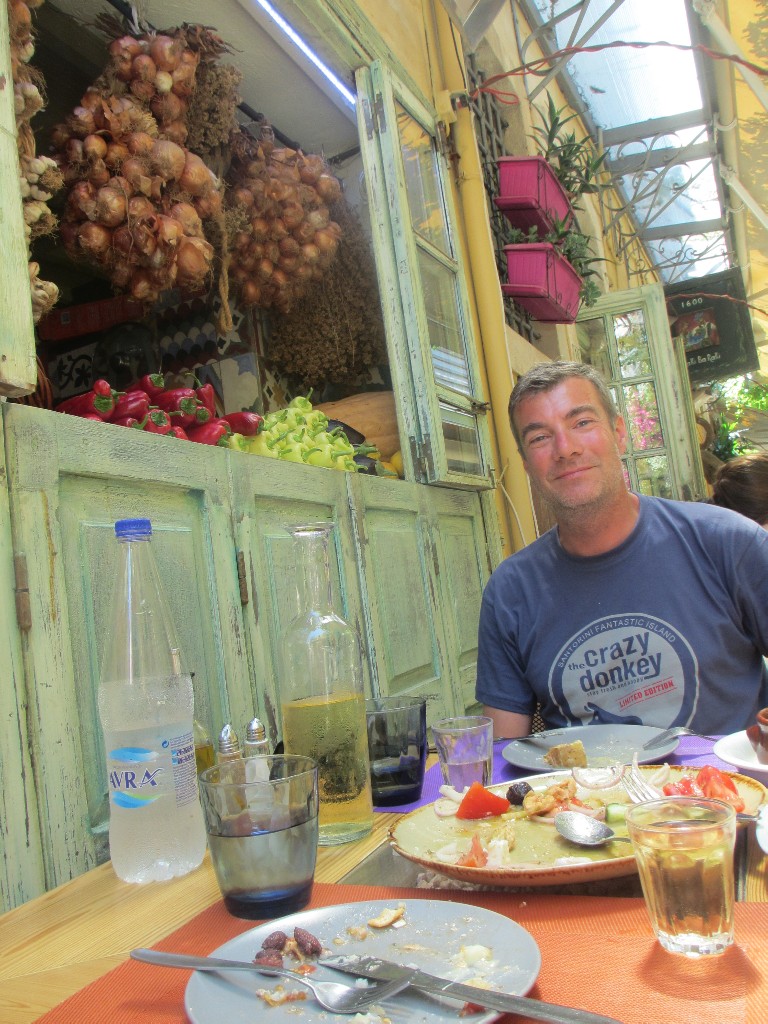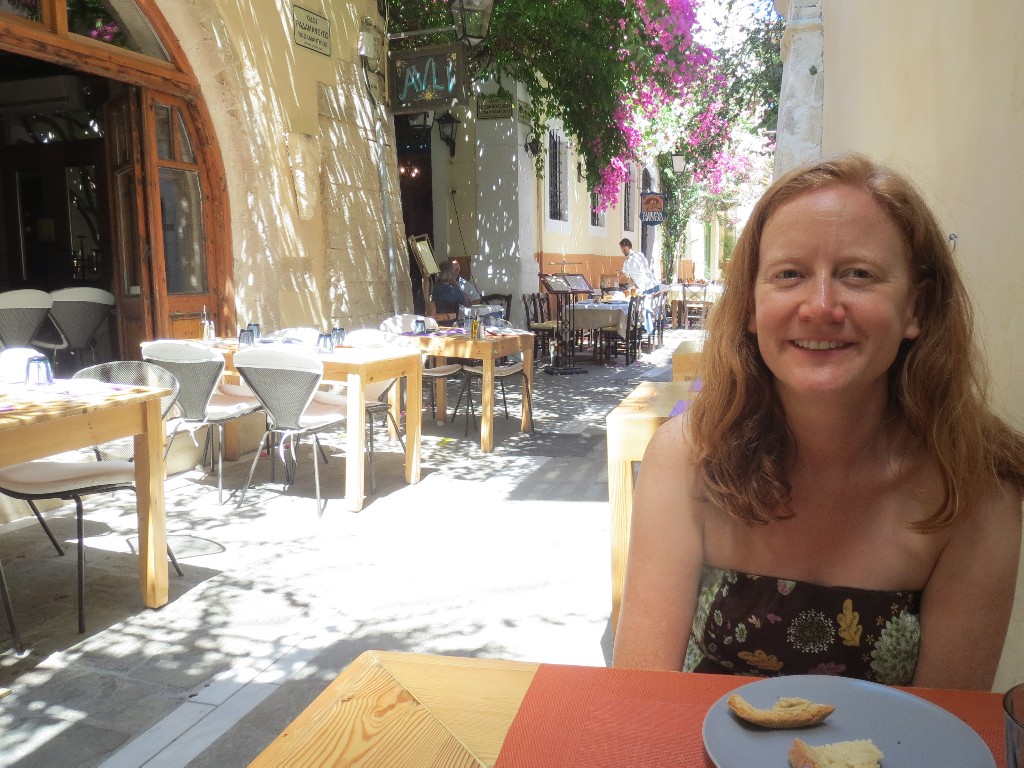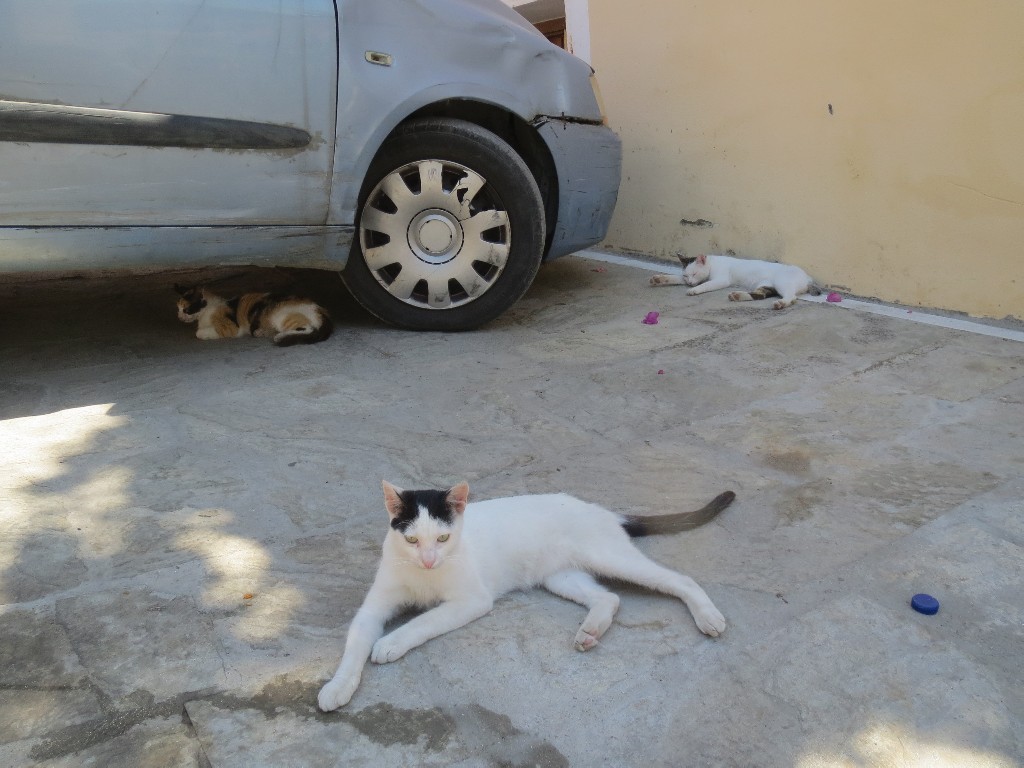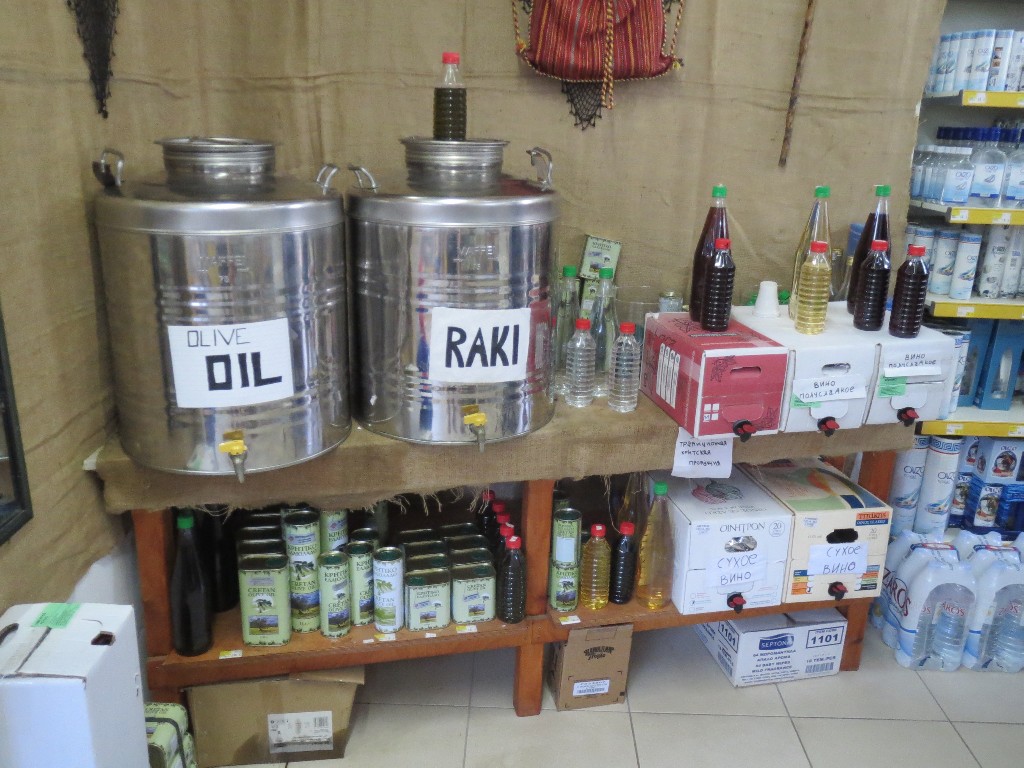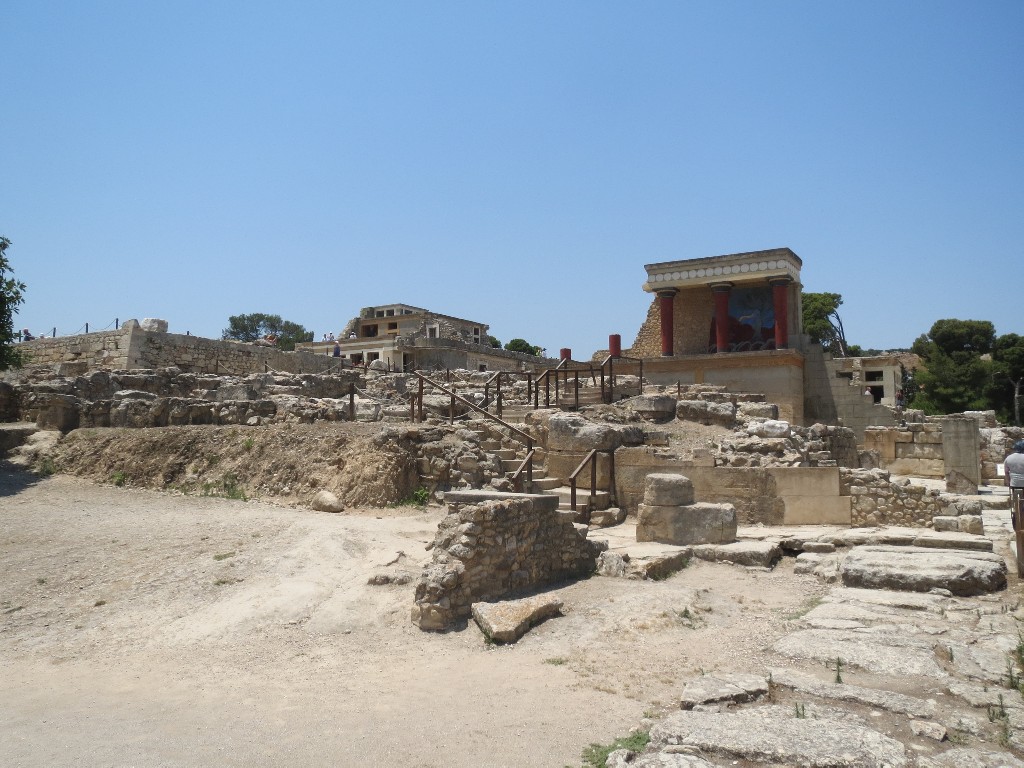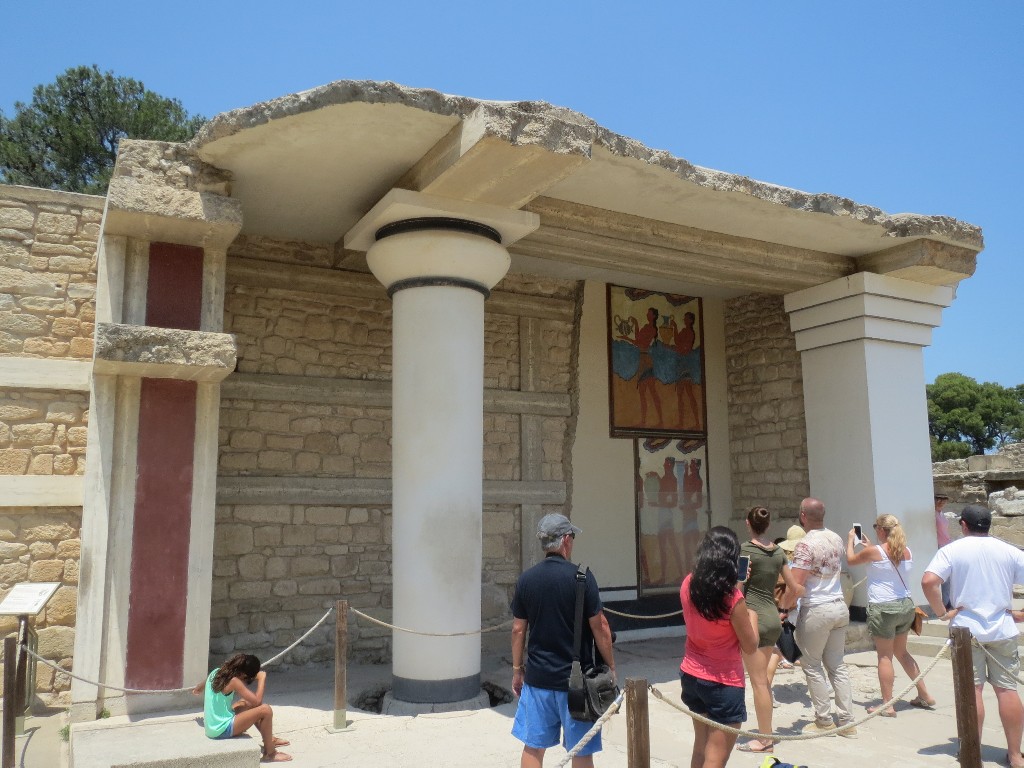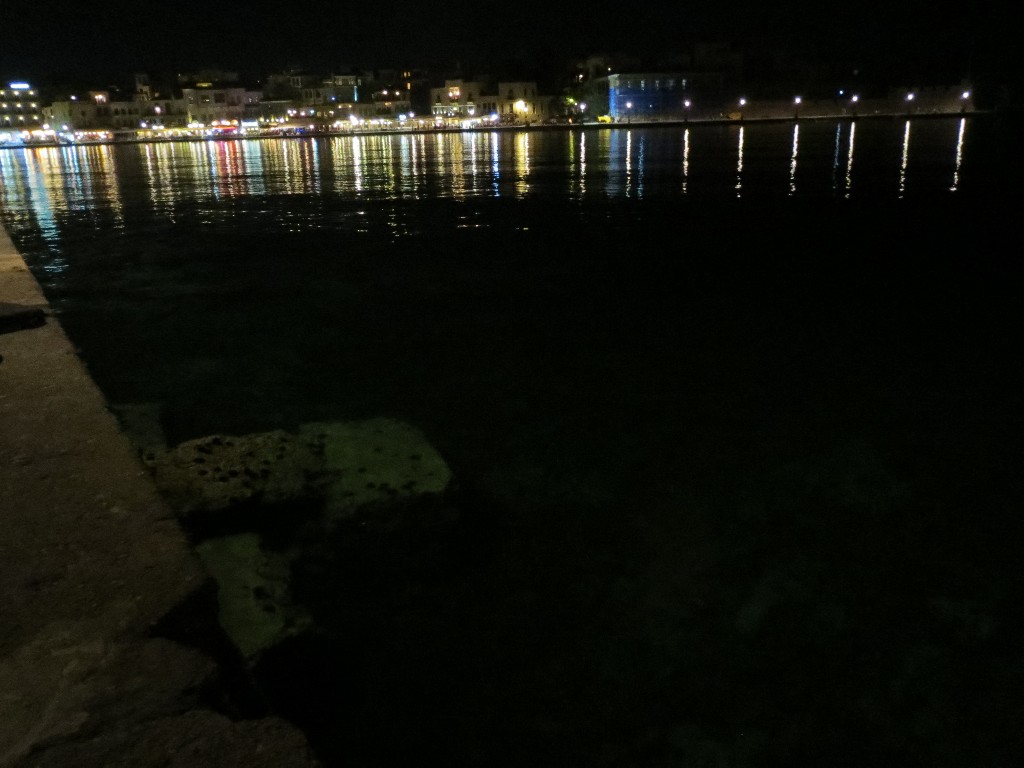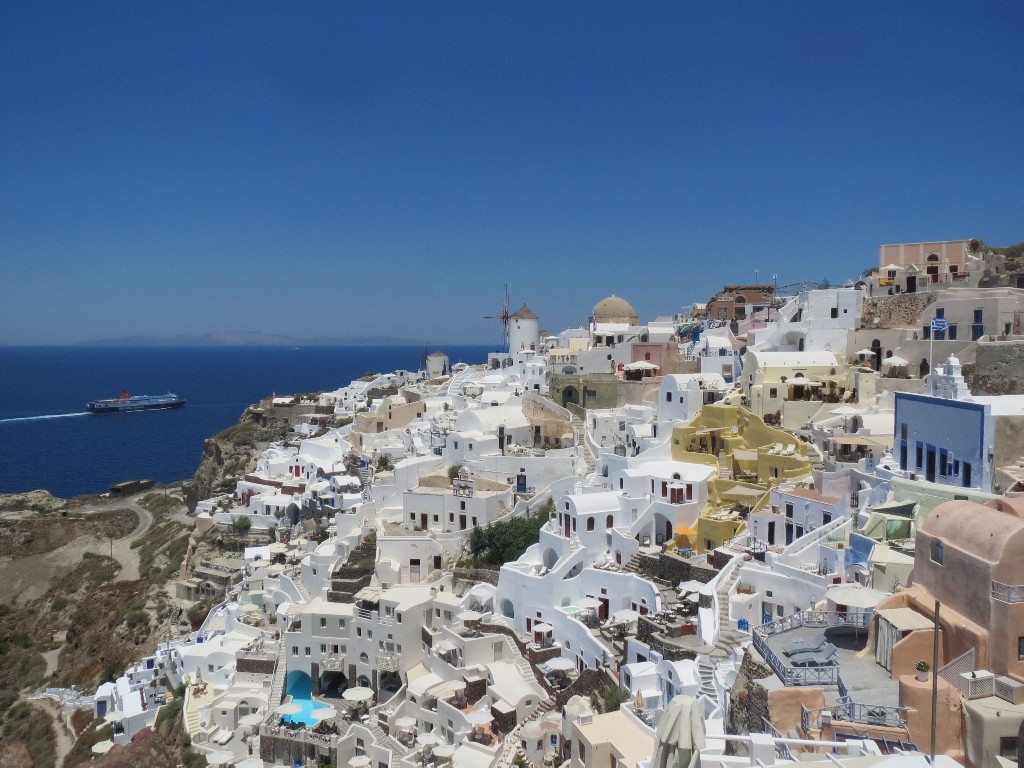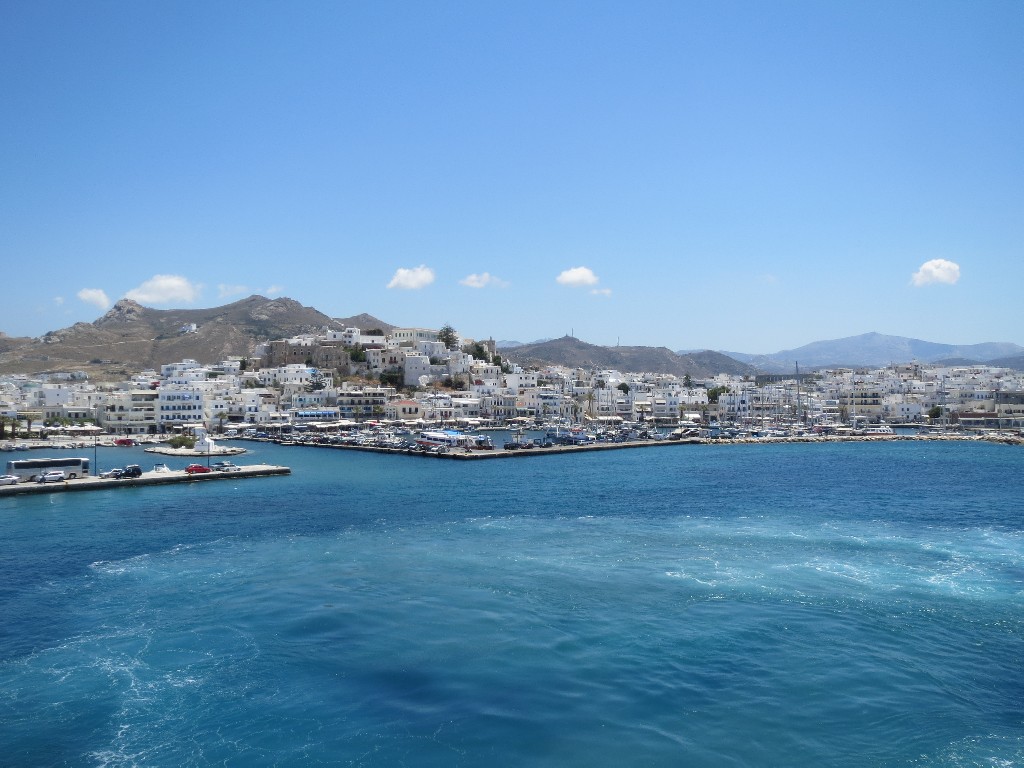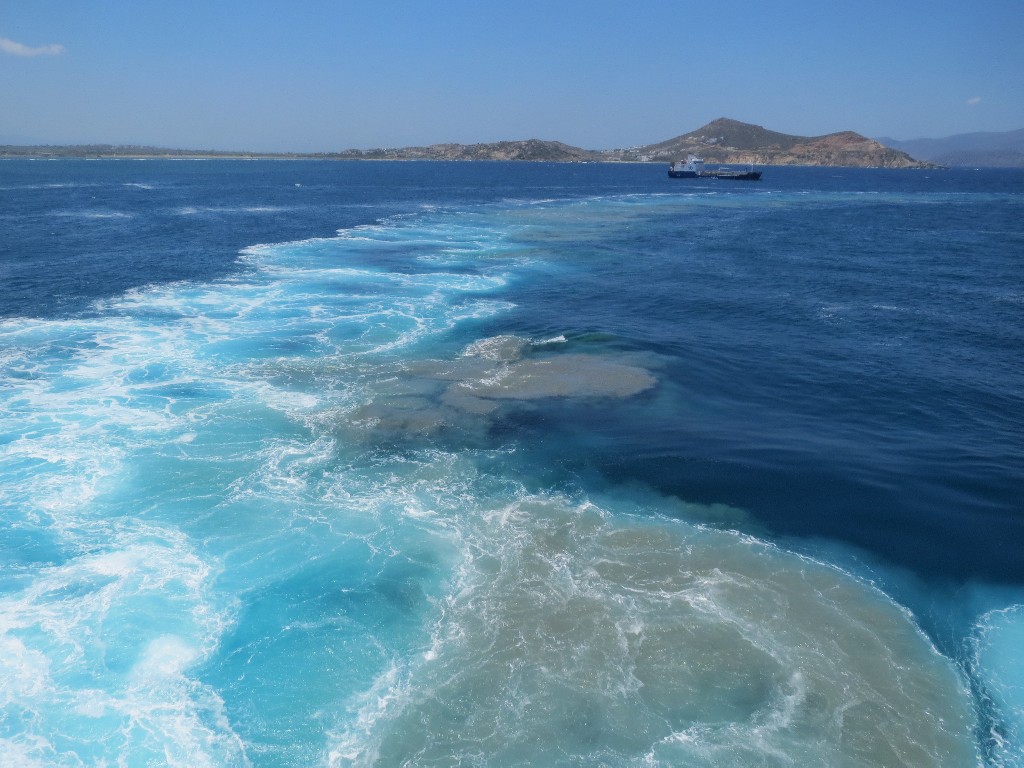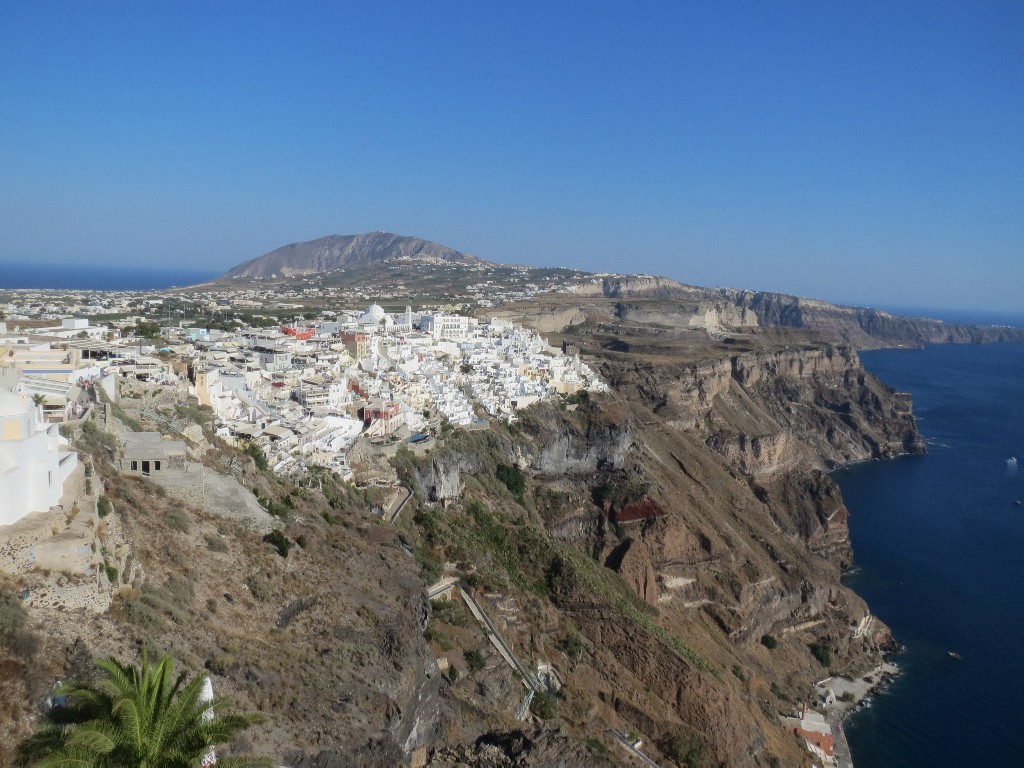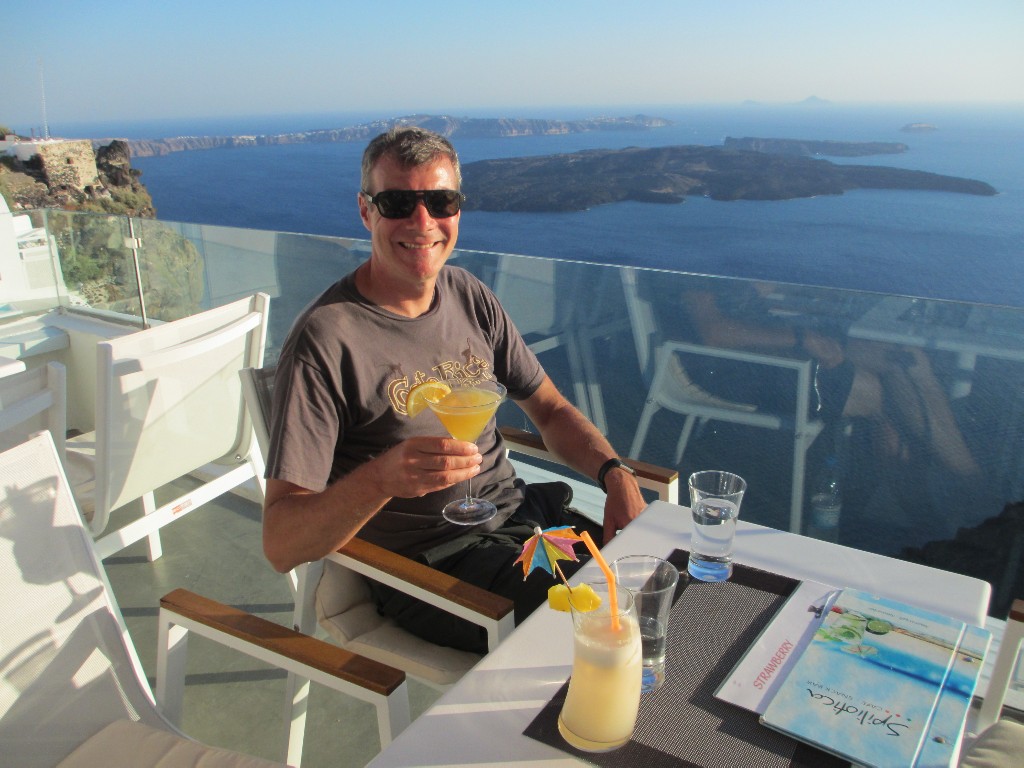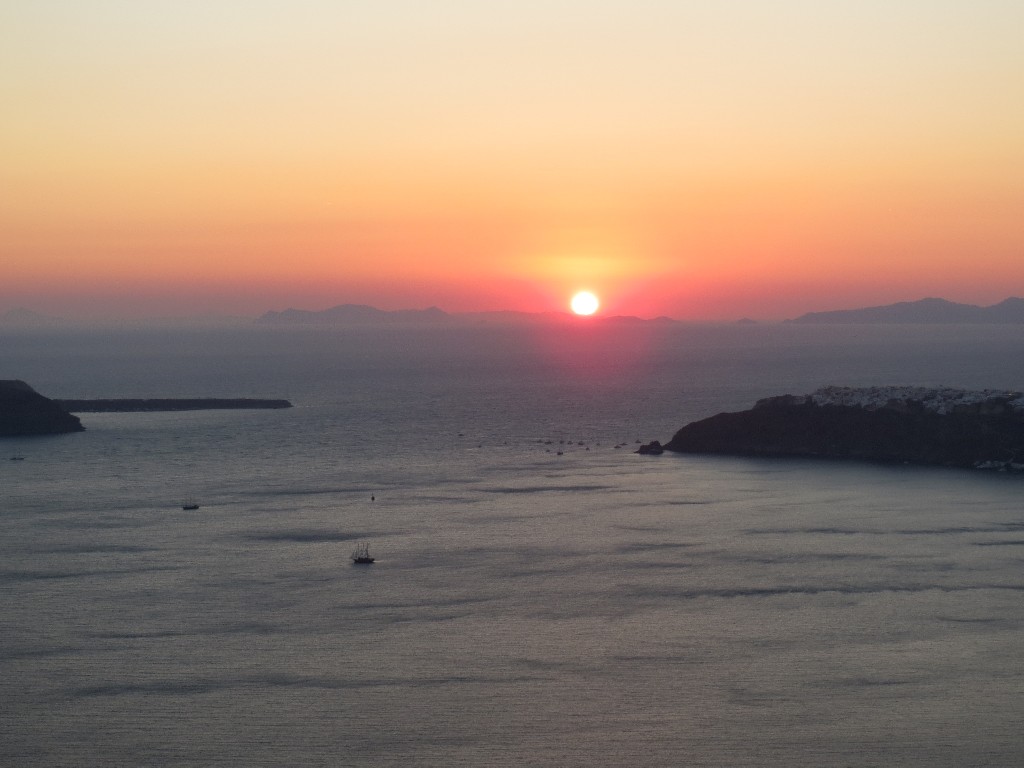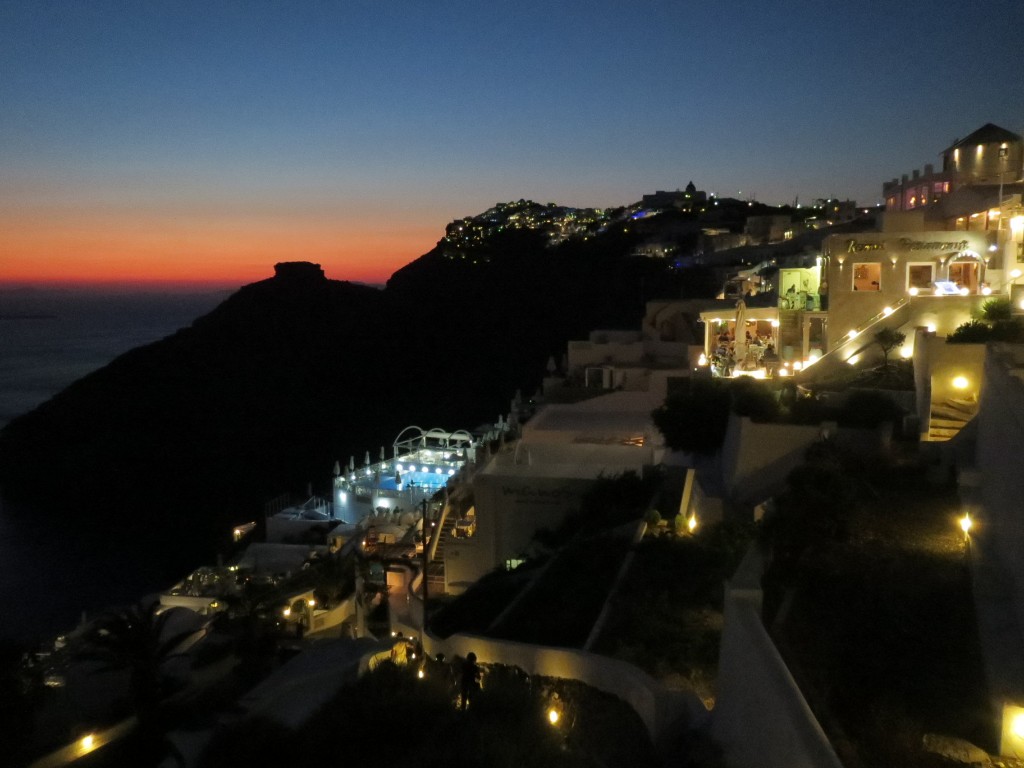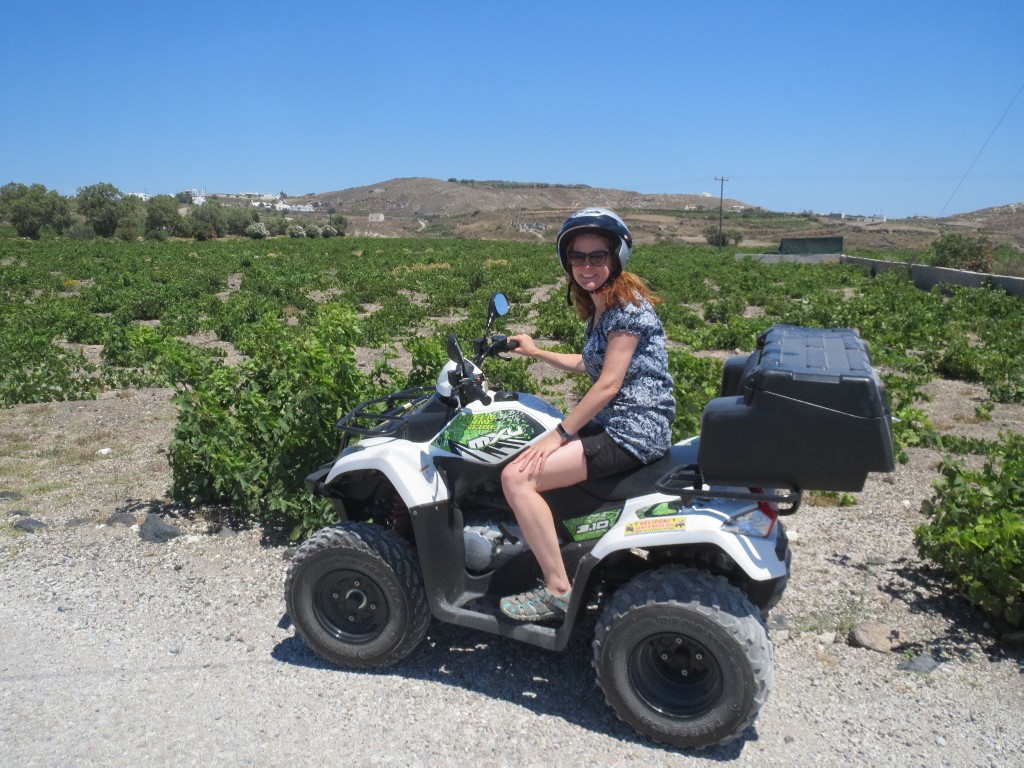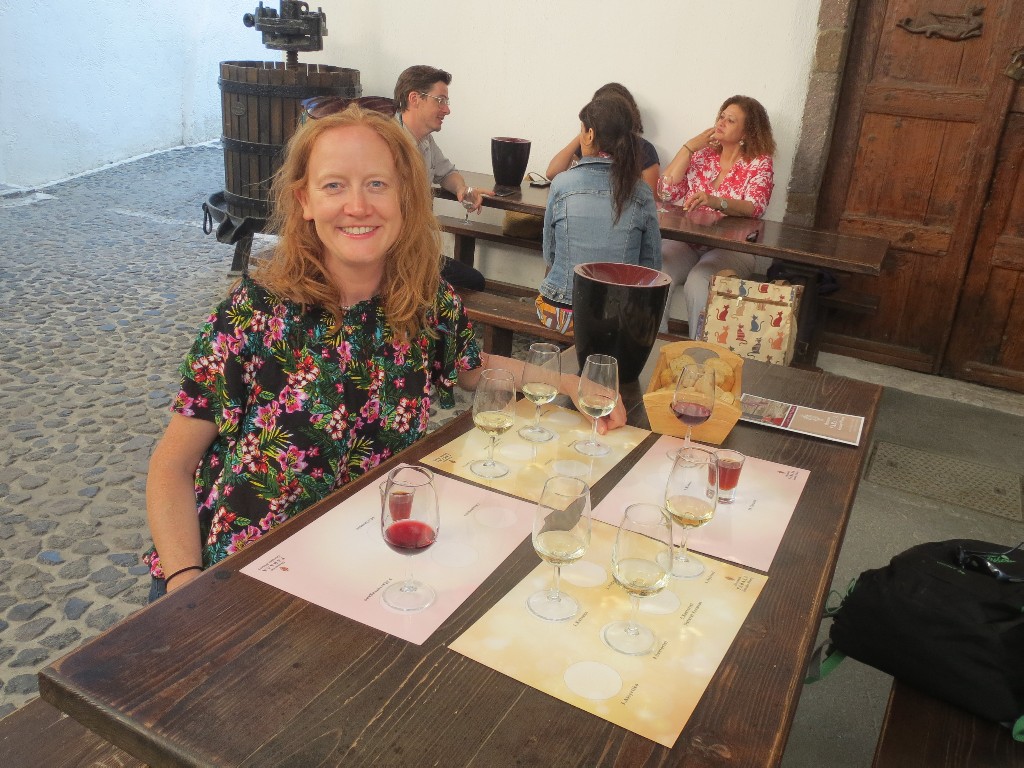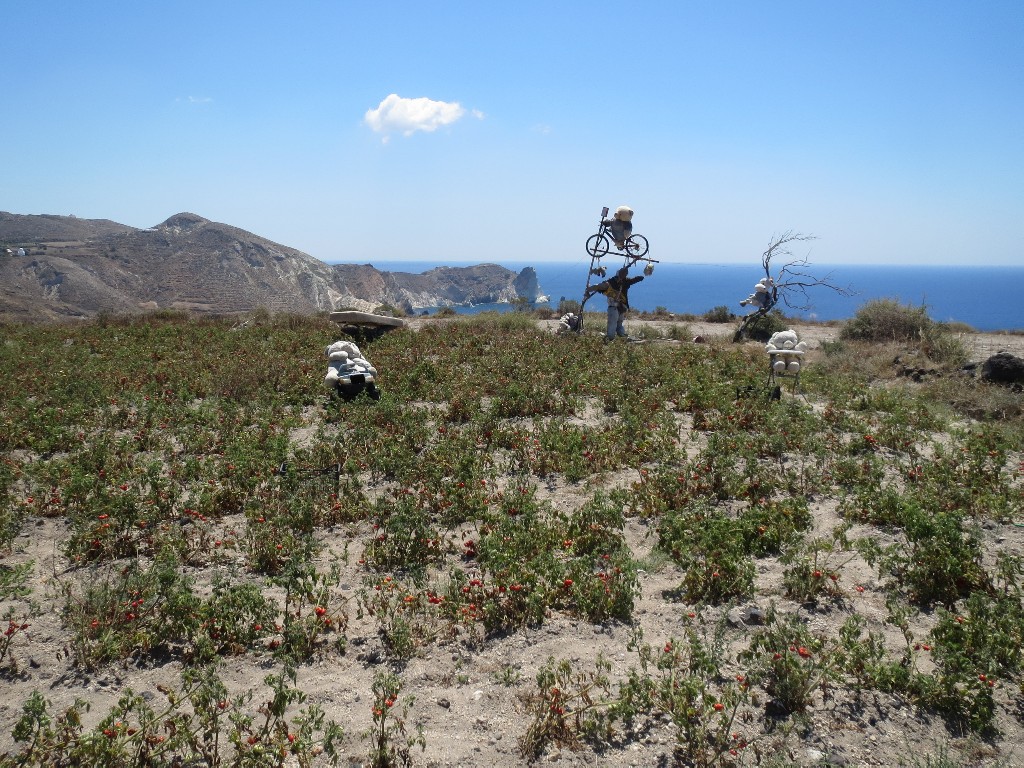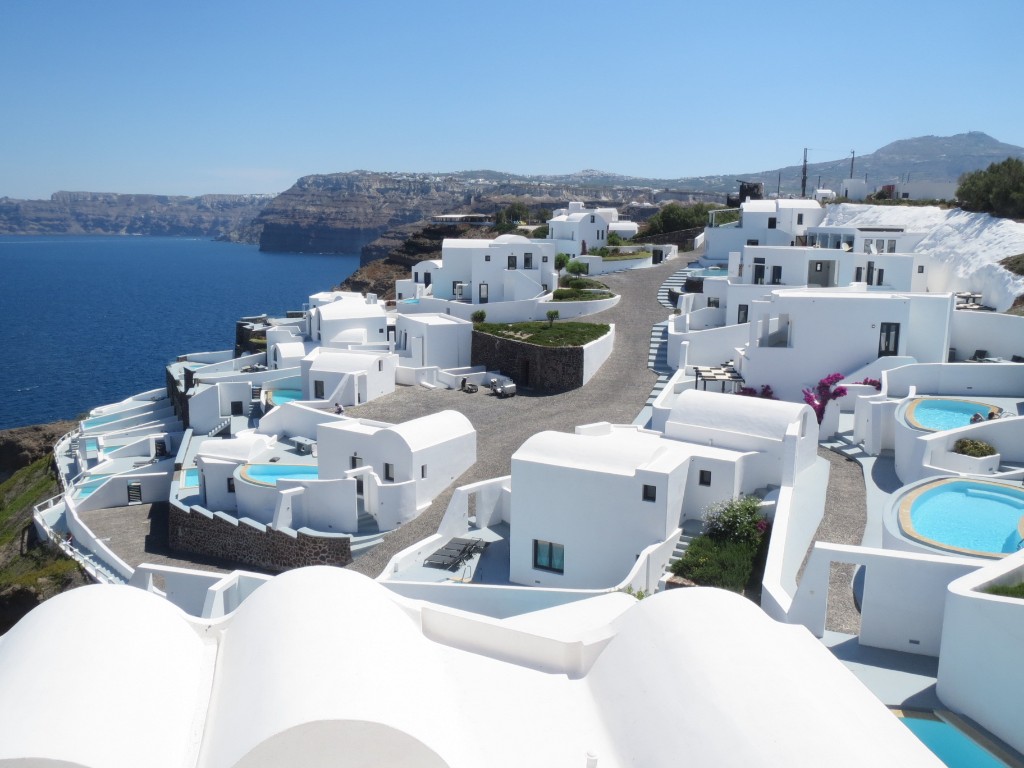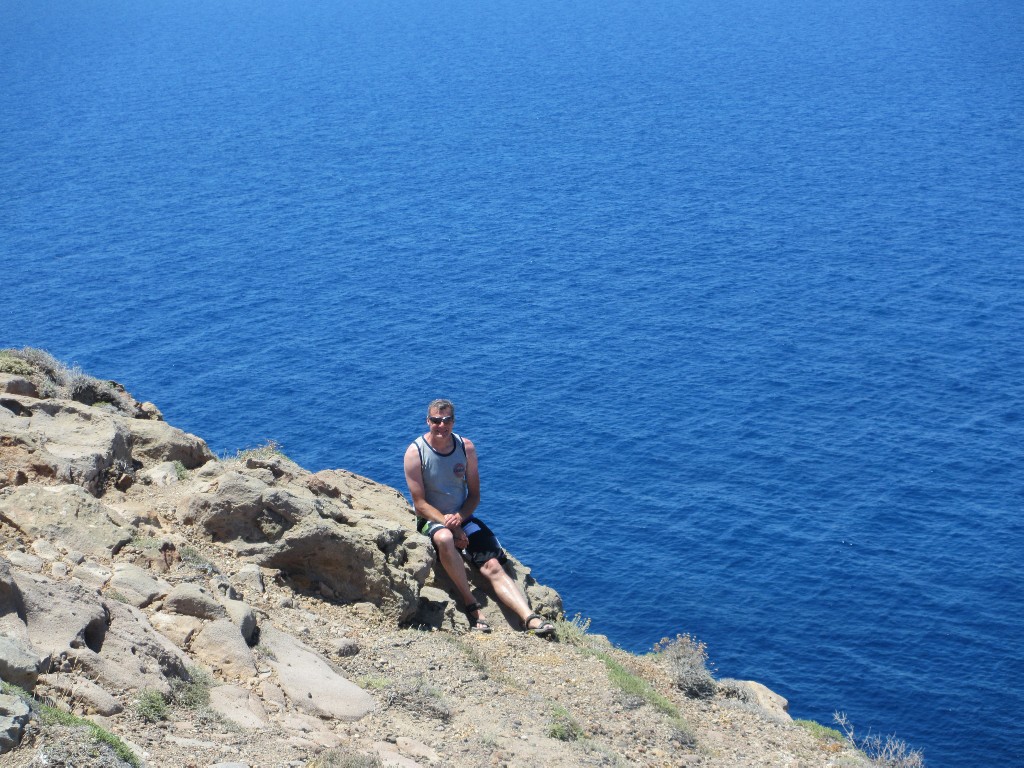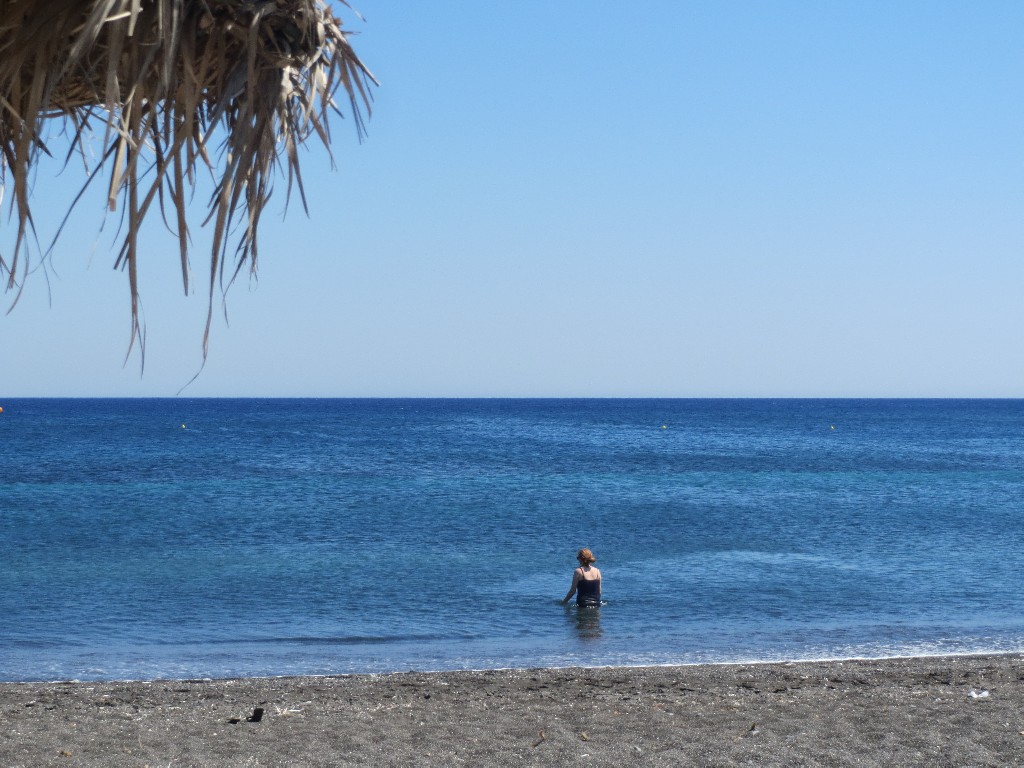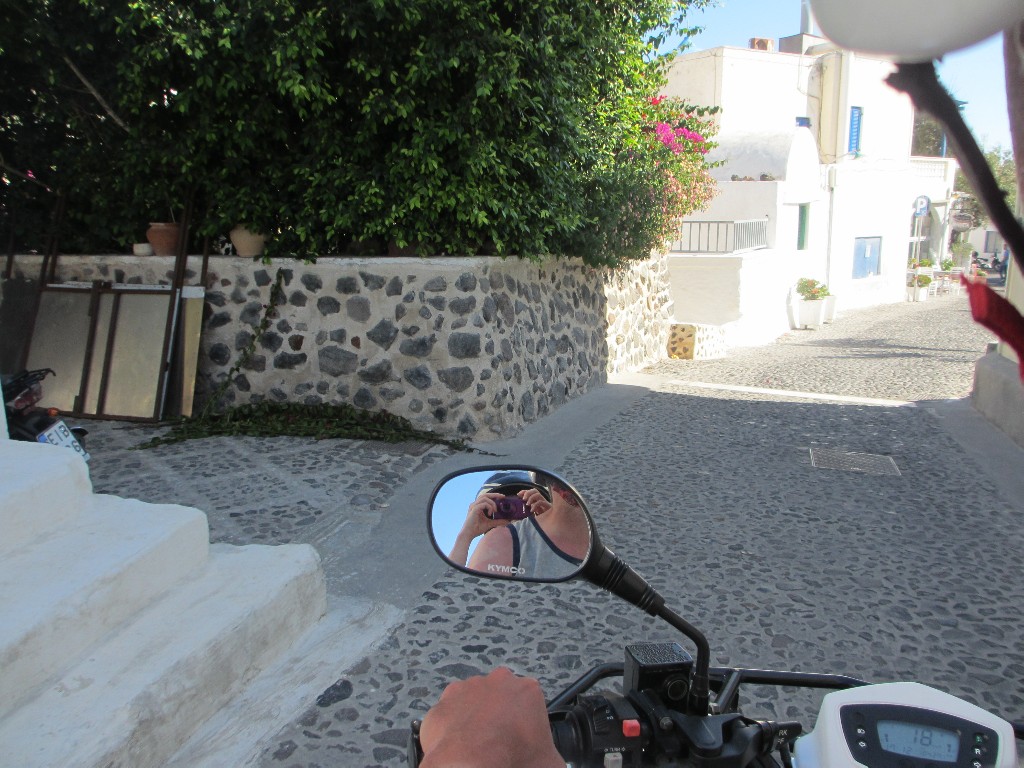Behold the mighty rock of Sigiriya!
Author: matt
Polonnaruwa
A pretty easy 3 hour bus journey got us to Polonnaruwa, another ancient city. We decided to pre-book a room here as it was poya day when we arrived. As it turned out, that wasn’t an issue at all, it seems as though when it falls midweek, and this was a Wednesday, it’s not such a big deal for the locals.
The room was fairly dire as it turned out, despite a rating of 9.6 or something, as was the town itself. The breakfast was good though. On the seat is the “whacking stick” we were provided with in case any monkeys came to share our breakfast. Thankfully, no animals were harmed in the making of this blog. We had bicycles that were even worse than those in Anuradhapura in the background.
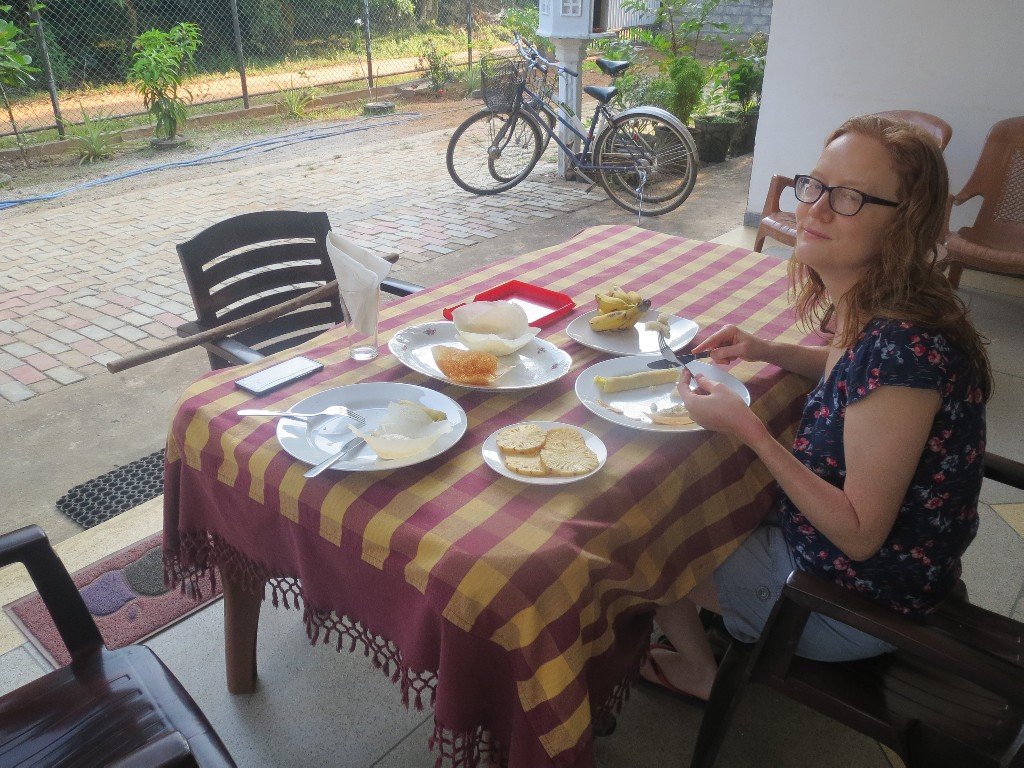
We cycled up to the ruins, making sure not to need to stop on any downhill sections as Lisa had no brakes. The “quadrangle” area.
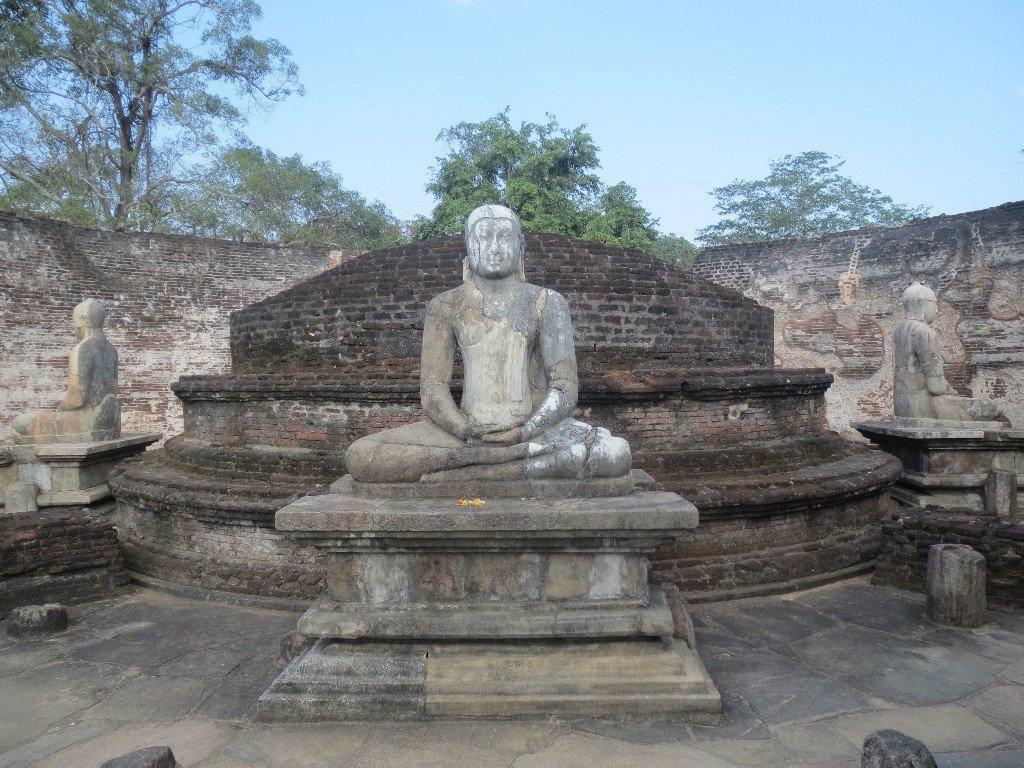
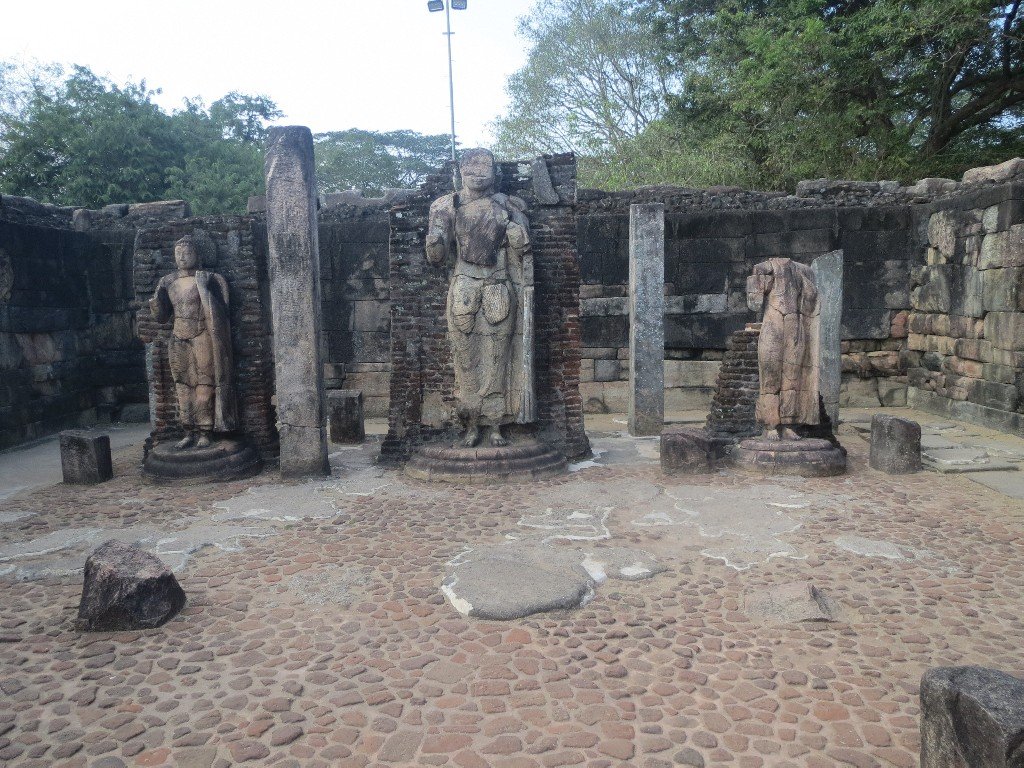
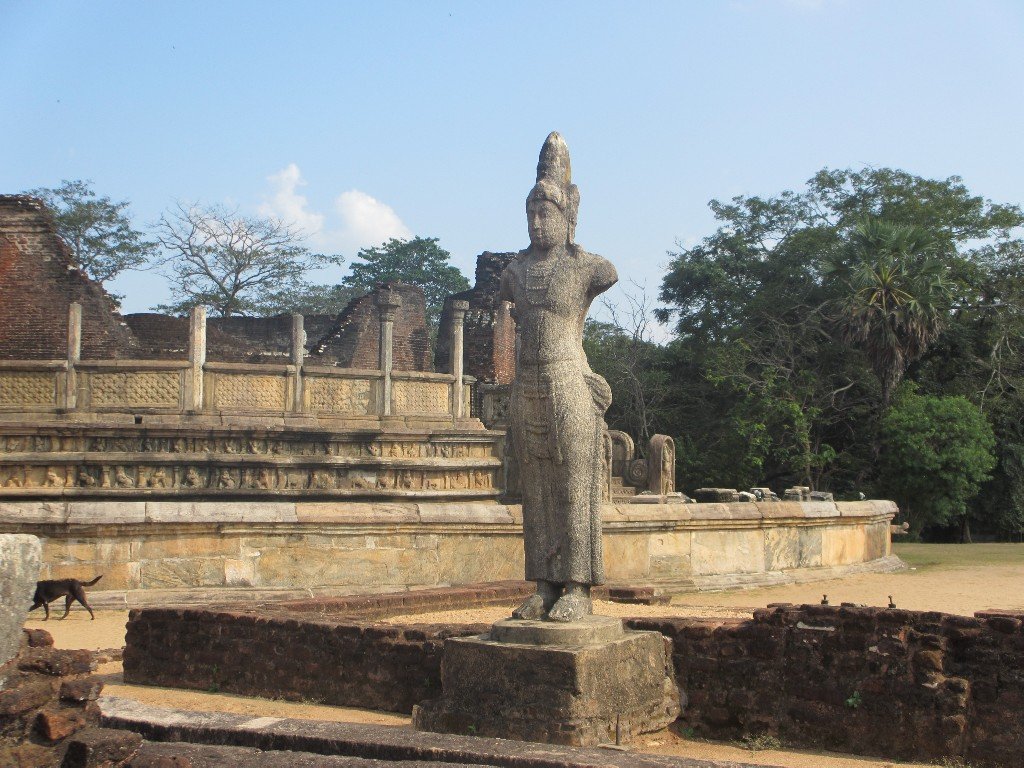
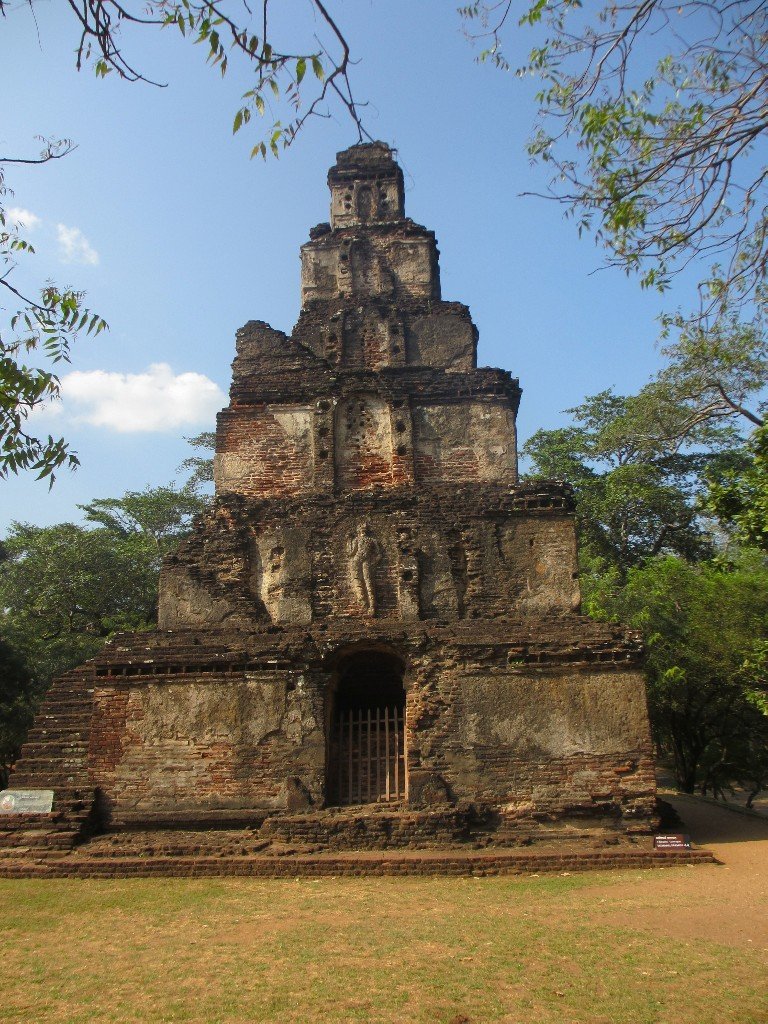
Outside the Gal Vihara, one of many lily ponds we’ve seen.
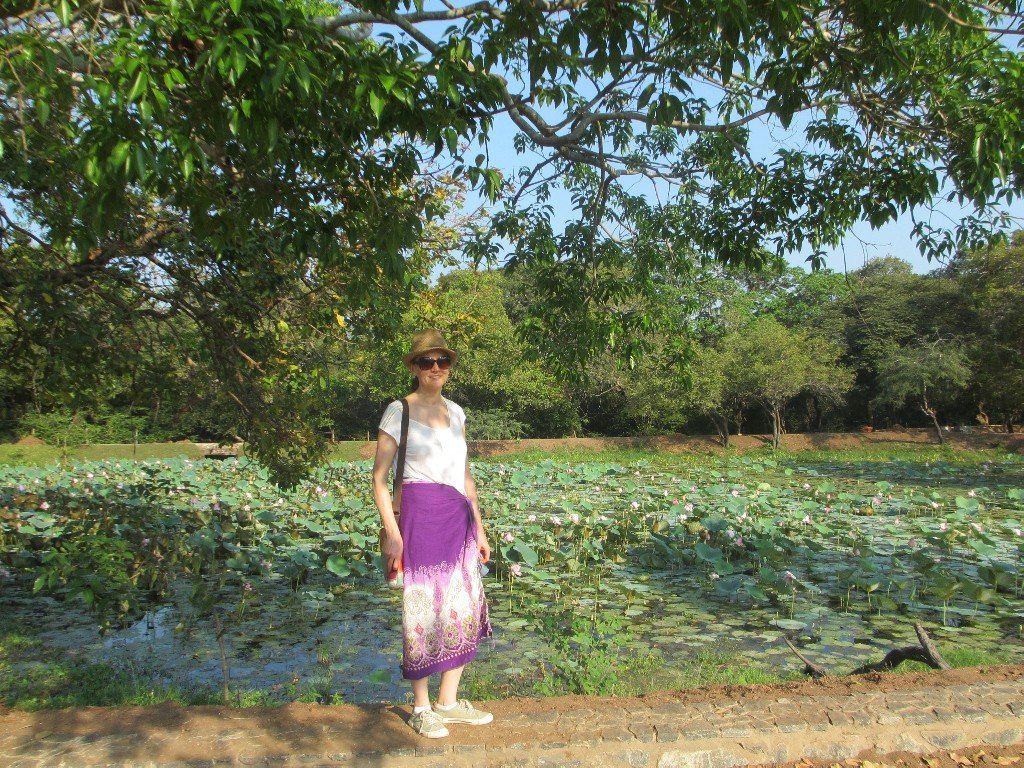
Cows and birds often work in pairs like this. The bird will peck and eat insects out of the animal’s hide.
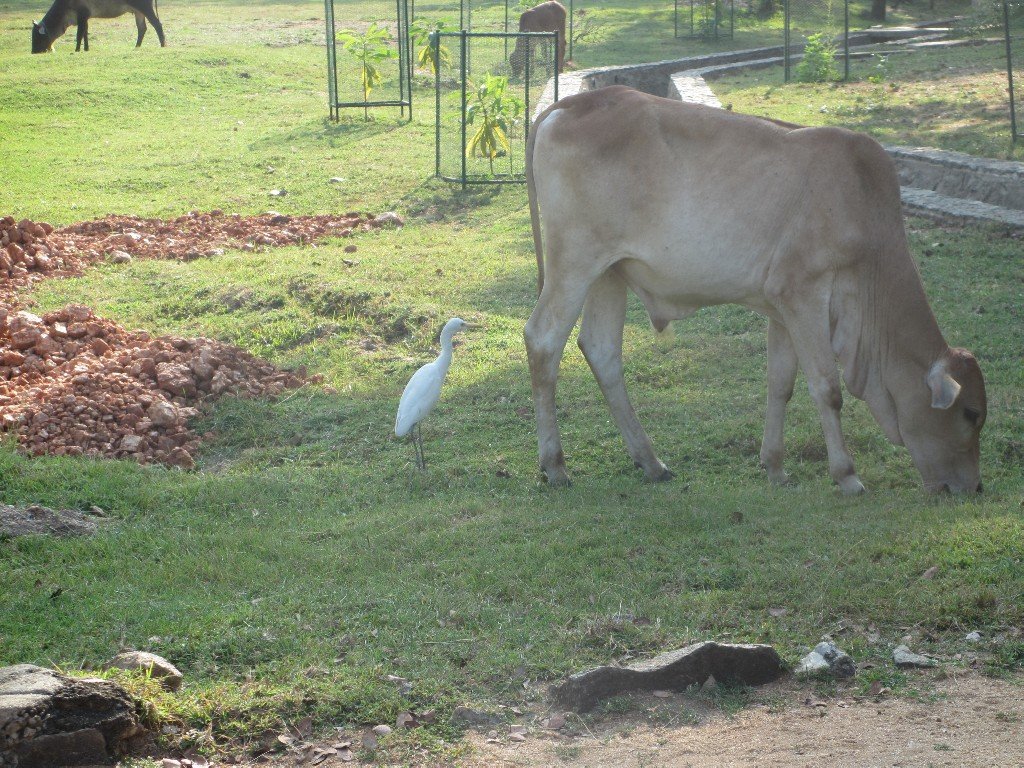
Inside the Gal Vihara. It seems to be unknown why the standing Buddha has its arms in an unusual crossed arms position.
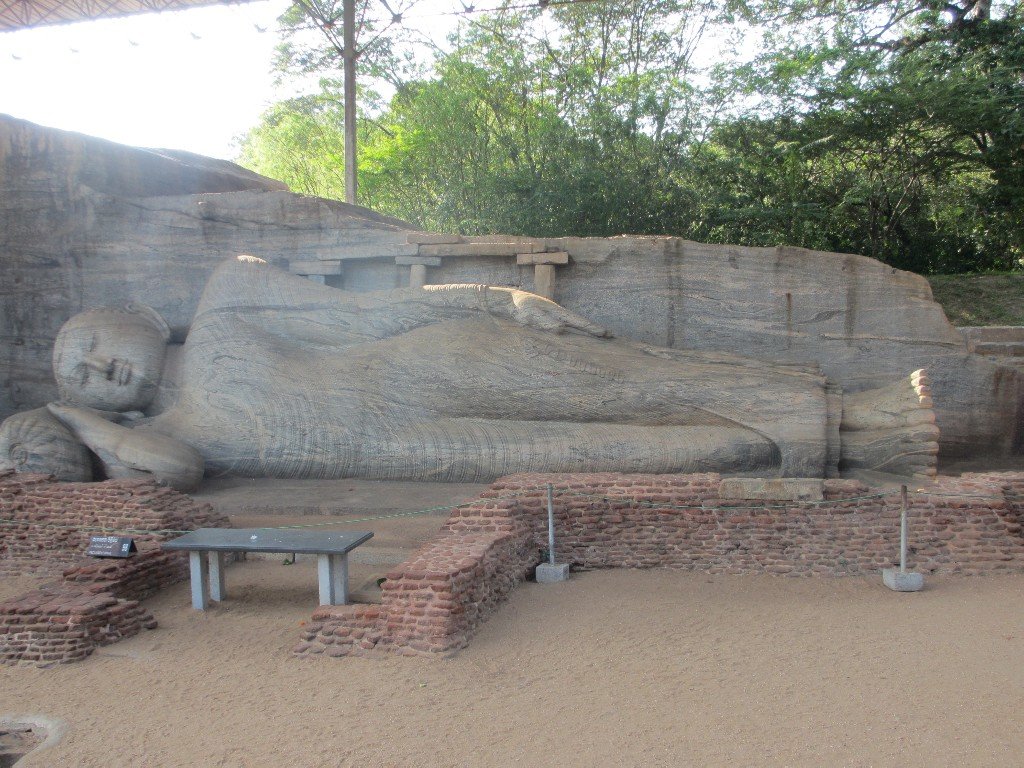
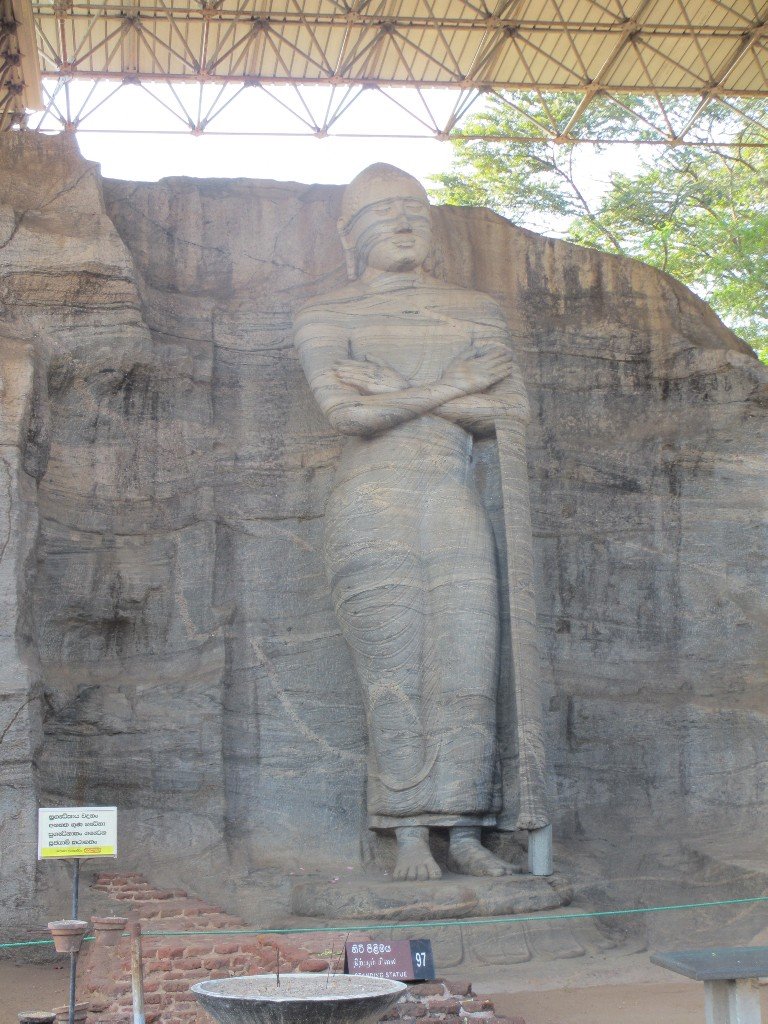
The offerings were placed by a load of school children and are meant for Buddha. This sacrilegious monkey couldn’t care less as he stuffs his face on them though.
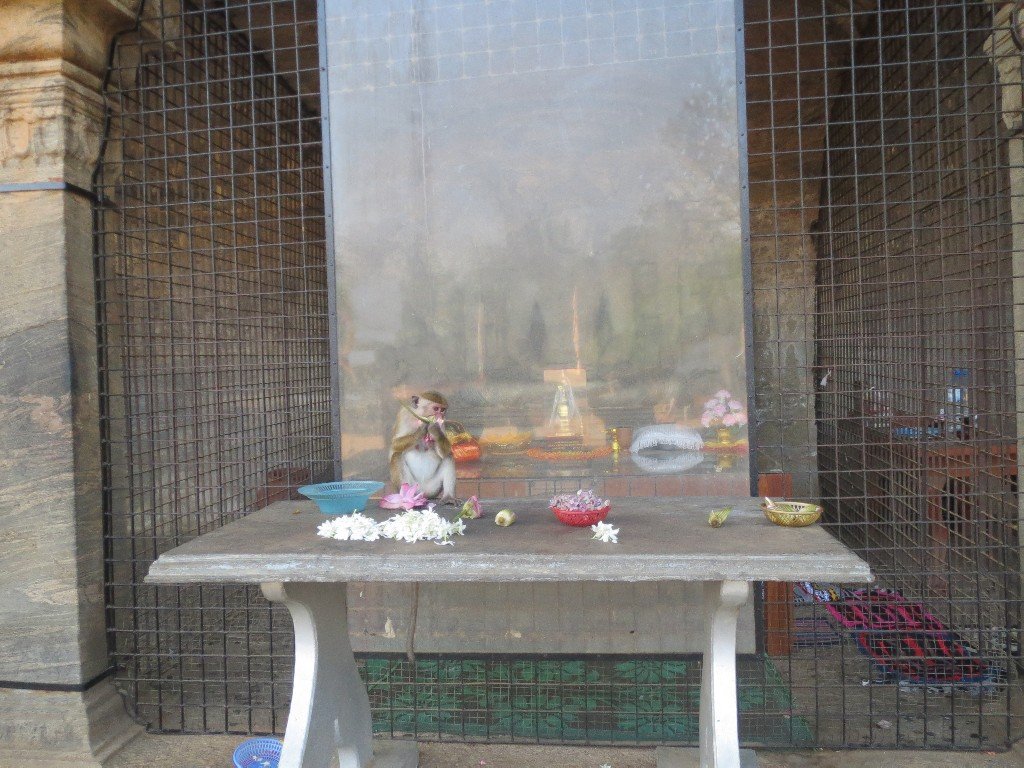
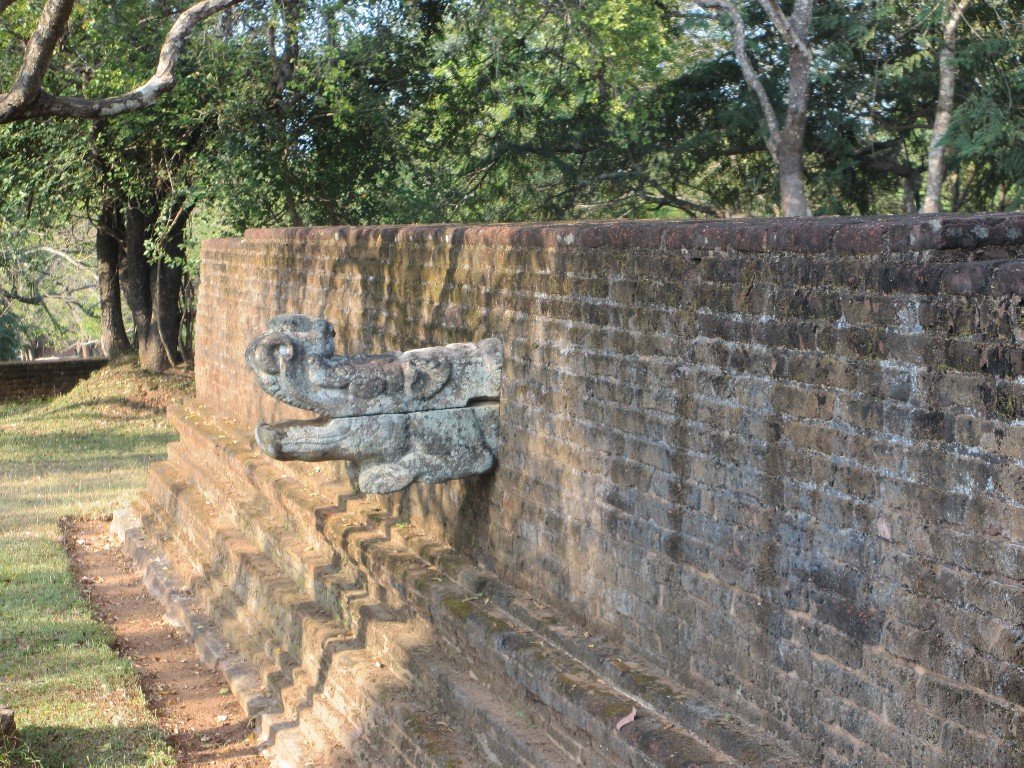
What’s in here? You must remove your headgear and shoes in these temples, but it’s OK to wear socks, which you really have to as the ground is burning hot. Unfortunately it makes you look like a dork.
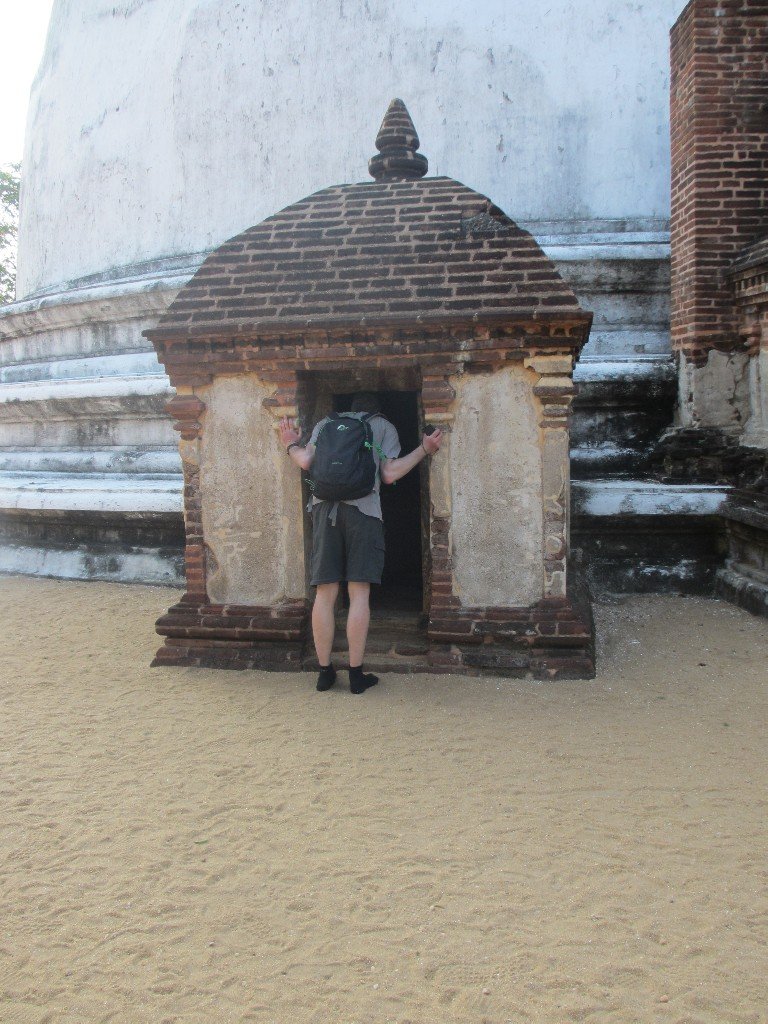
Hard to get a good picture with the backlight but this is the 17 metre tall headless Buddha in the Lankatilaka. The righthand wall of the temple is leaning in at an alarming angle.
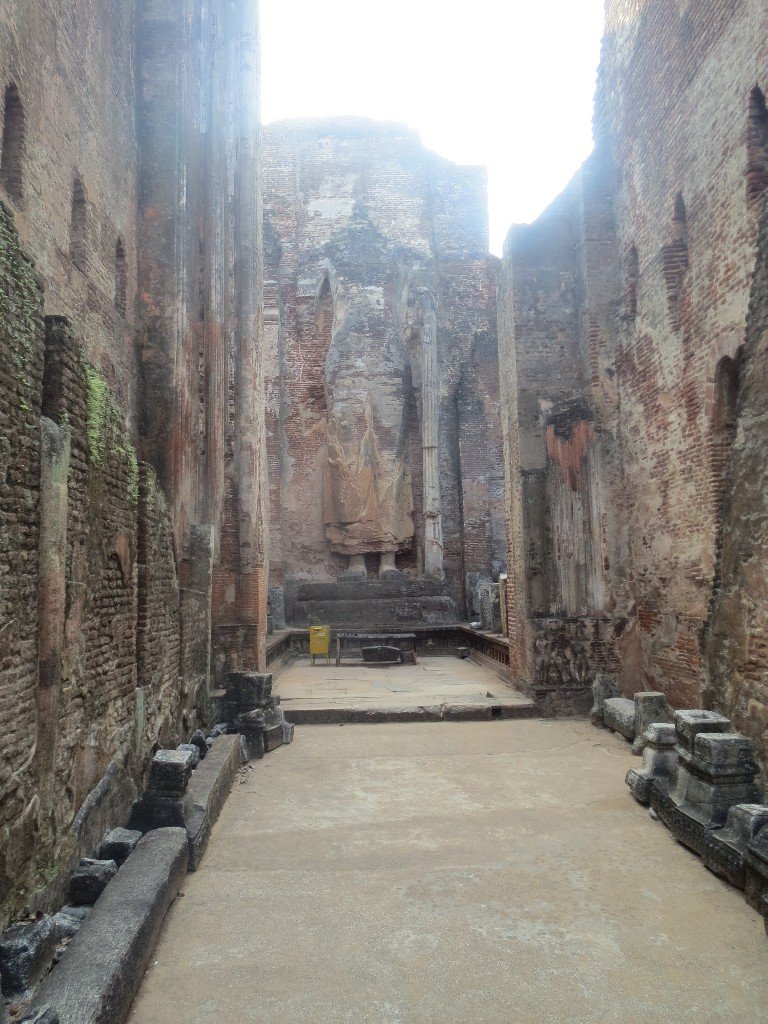
The Royal Palace at sunset.
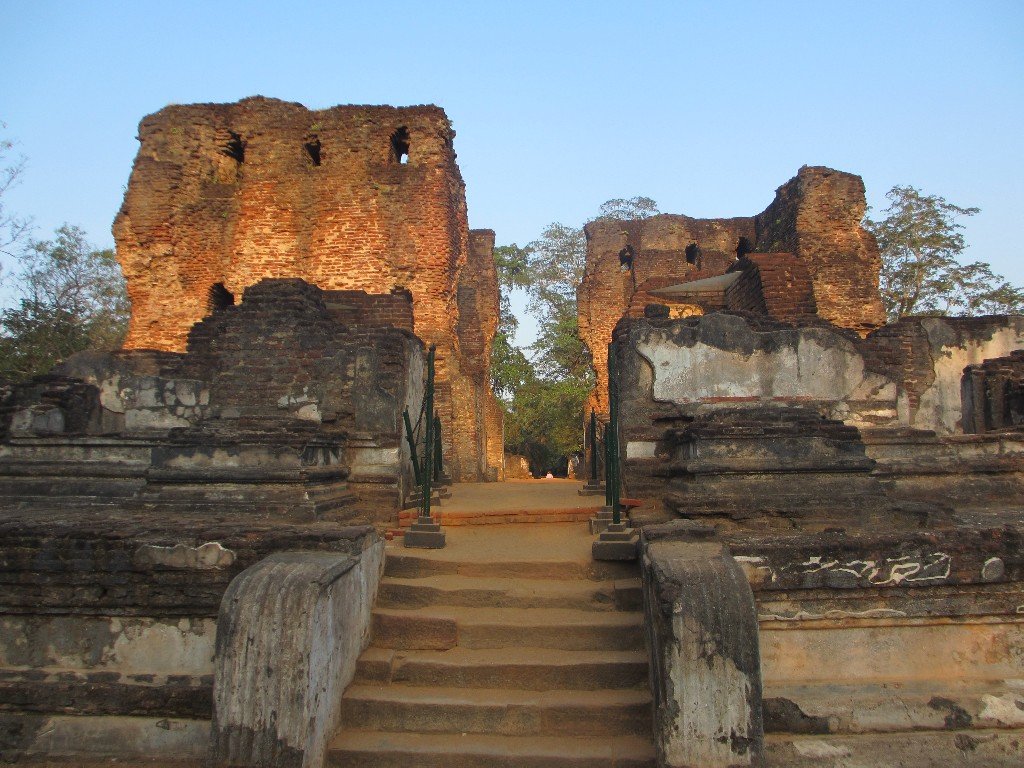
Sunset continues down at a secluded palace down at the lake.
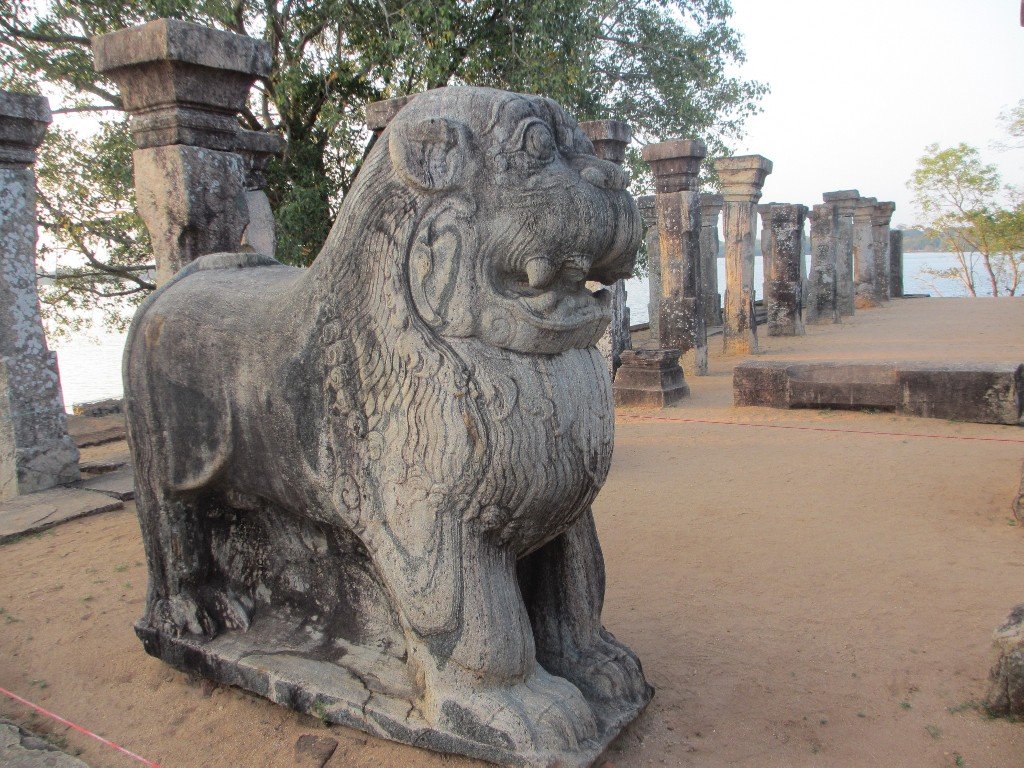
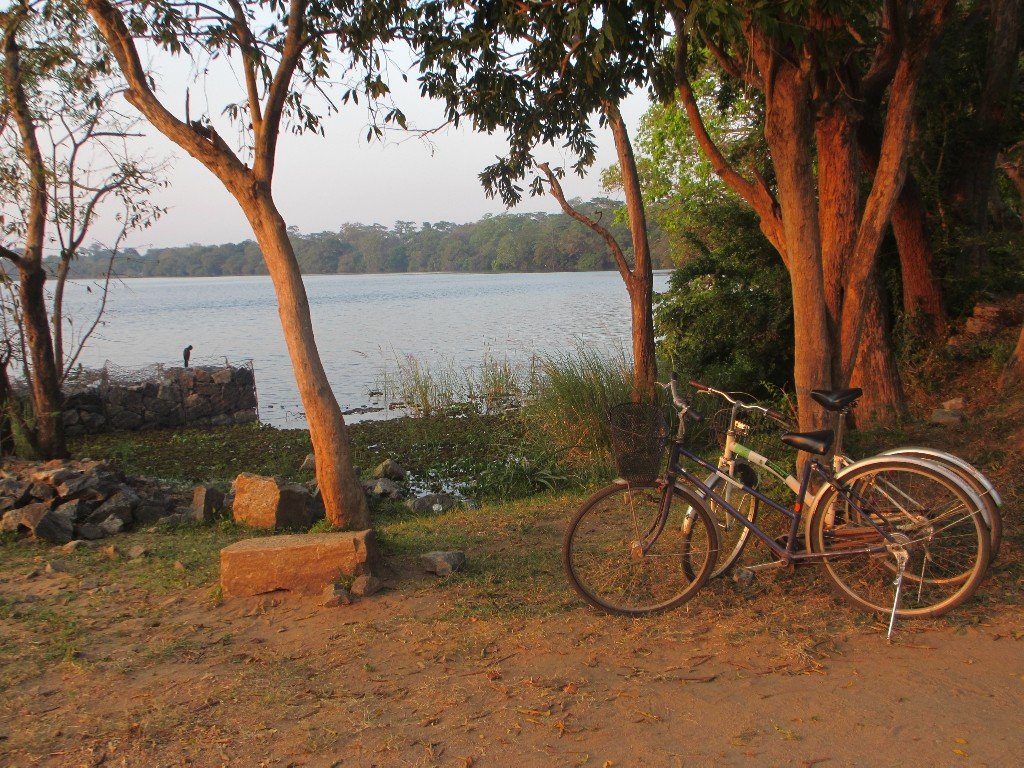
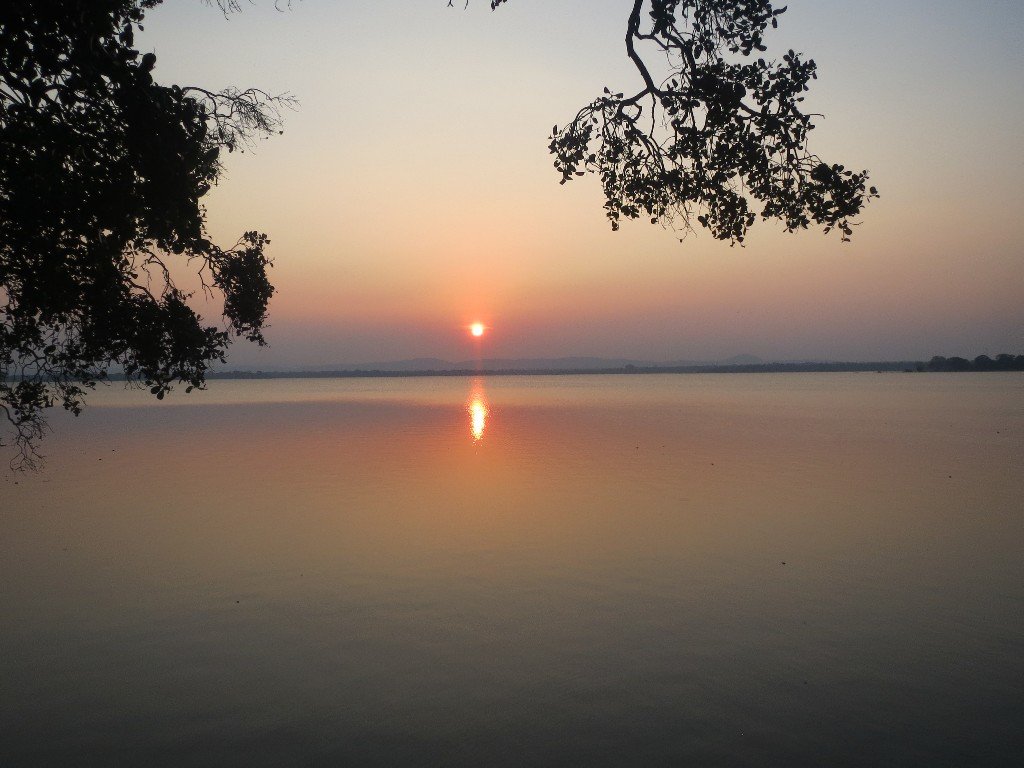
We had intended to spend a second night in the town, but as we weren’t happy with the place we jumped in a 3-wheeler and headed to Sigiriya a night early.
Anuradhapura and Mihintale
Here we are for two weeks in Sri Lanka, with the basic plan being to spend the time in the ancient cities towards the north, moving southwards to the hill country after that. We’ve no plans to do the beaches on this tour unless we get ahead of time, in which case we may be able to.
A fine direct 10.5 hour flight with Srilankan landed us in the capital, Colombo, at about 4.30am. After passing through the duty free which mostly seemed to sell household items such as garden furniture and washing machines, we easily picked up a cheap local SIM card and avoided some very polite taxi touts and hopped on an aircon minibus which took us to Colombo Fort, the downtown area of the capital, in plenty of time to catch a 6.35am train to Anuradhapura, a 4 hour journey away
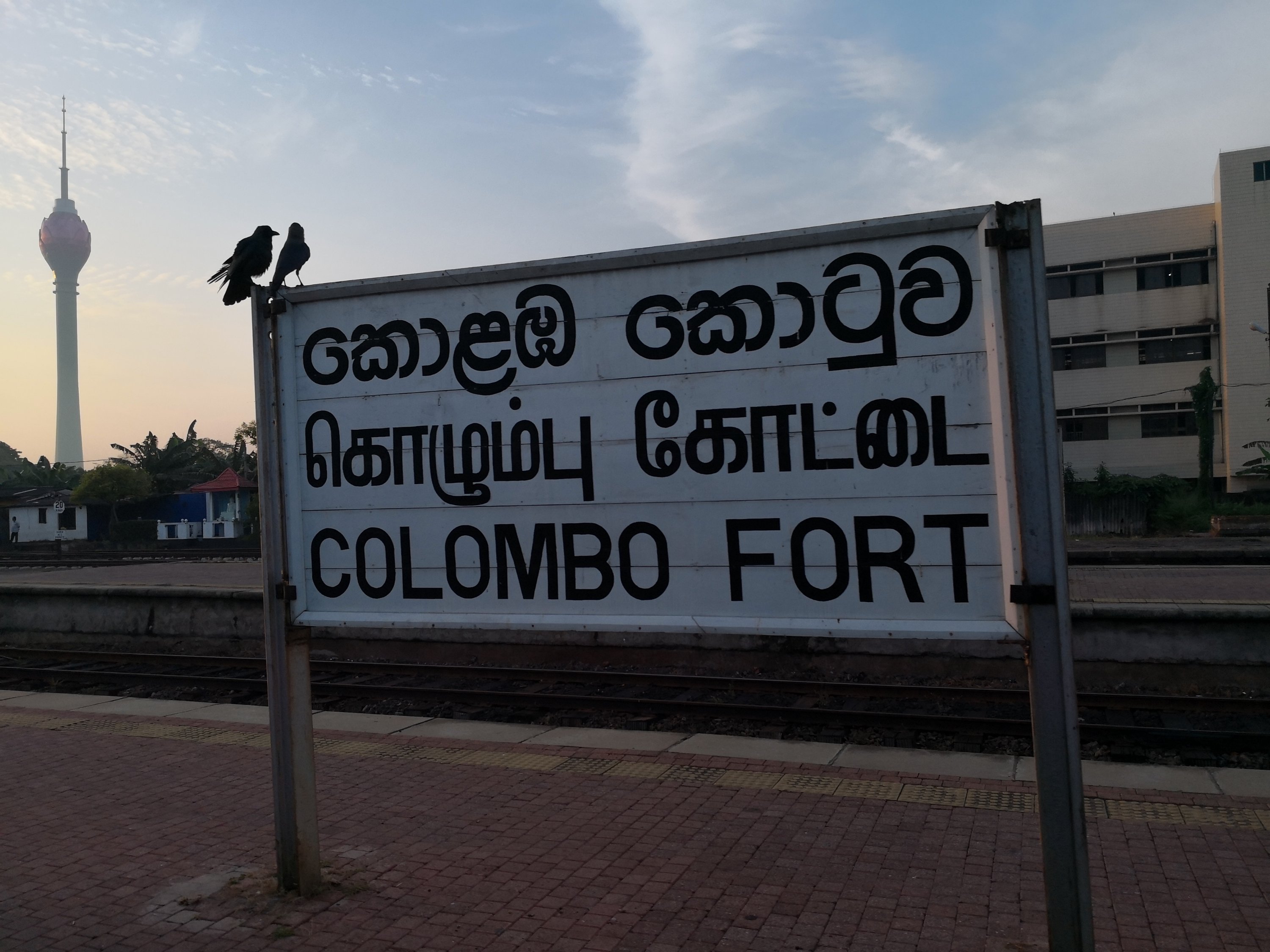
Breakfast or lunch, call it what you will, came from one of the many vendors who ply the aisles with their wares. The unidentified super-hot food we got was served in what appears to be somebody’s homework
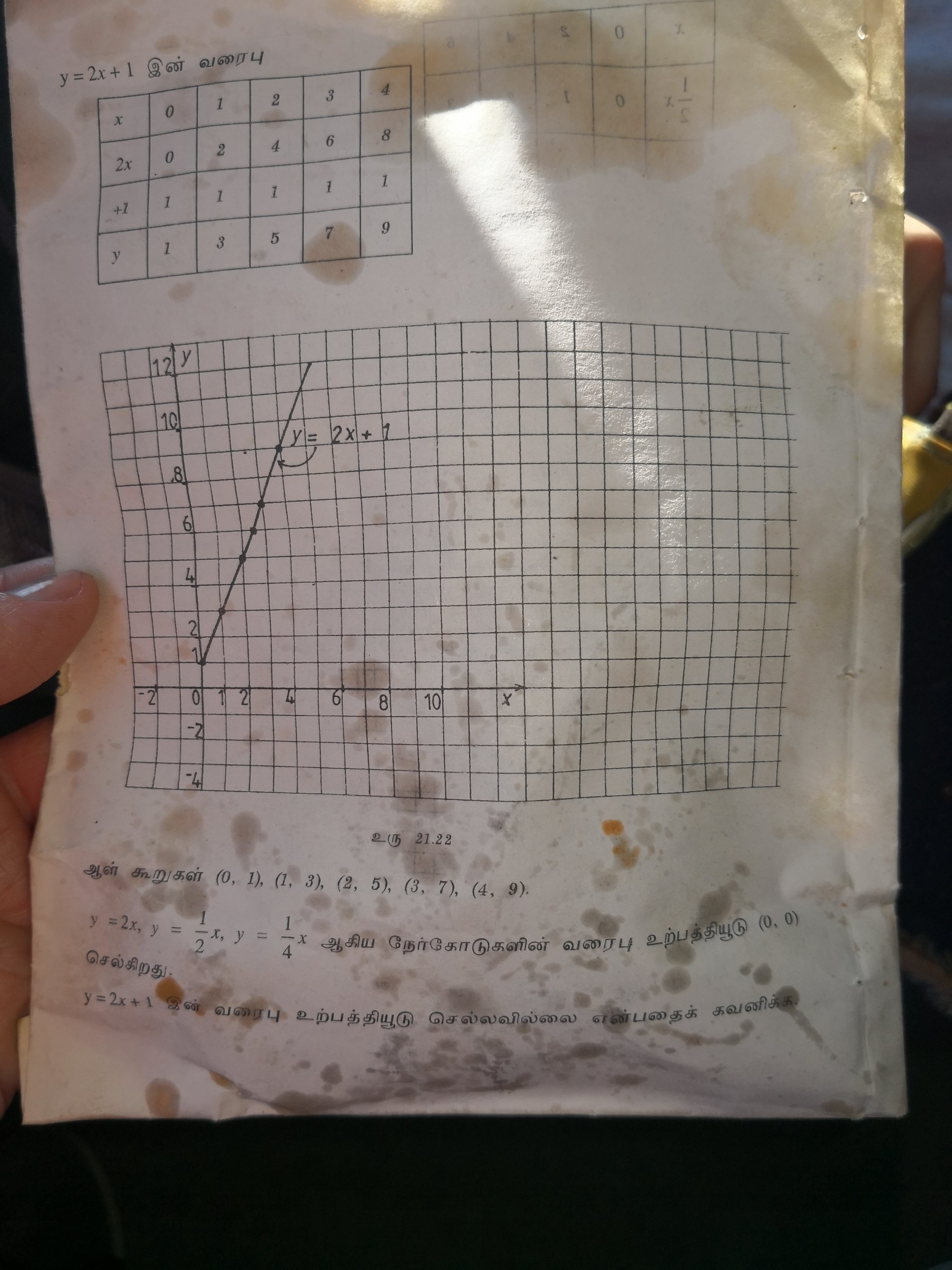
We got picked up by a tuk-tuk which took us across the rather sprawling town to our guesthouse and went for a wander around some local backstreets, I always find it interesting to see how the locals live.
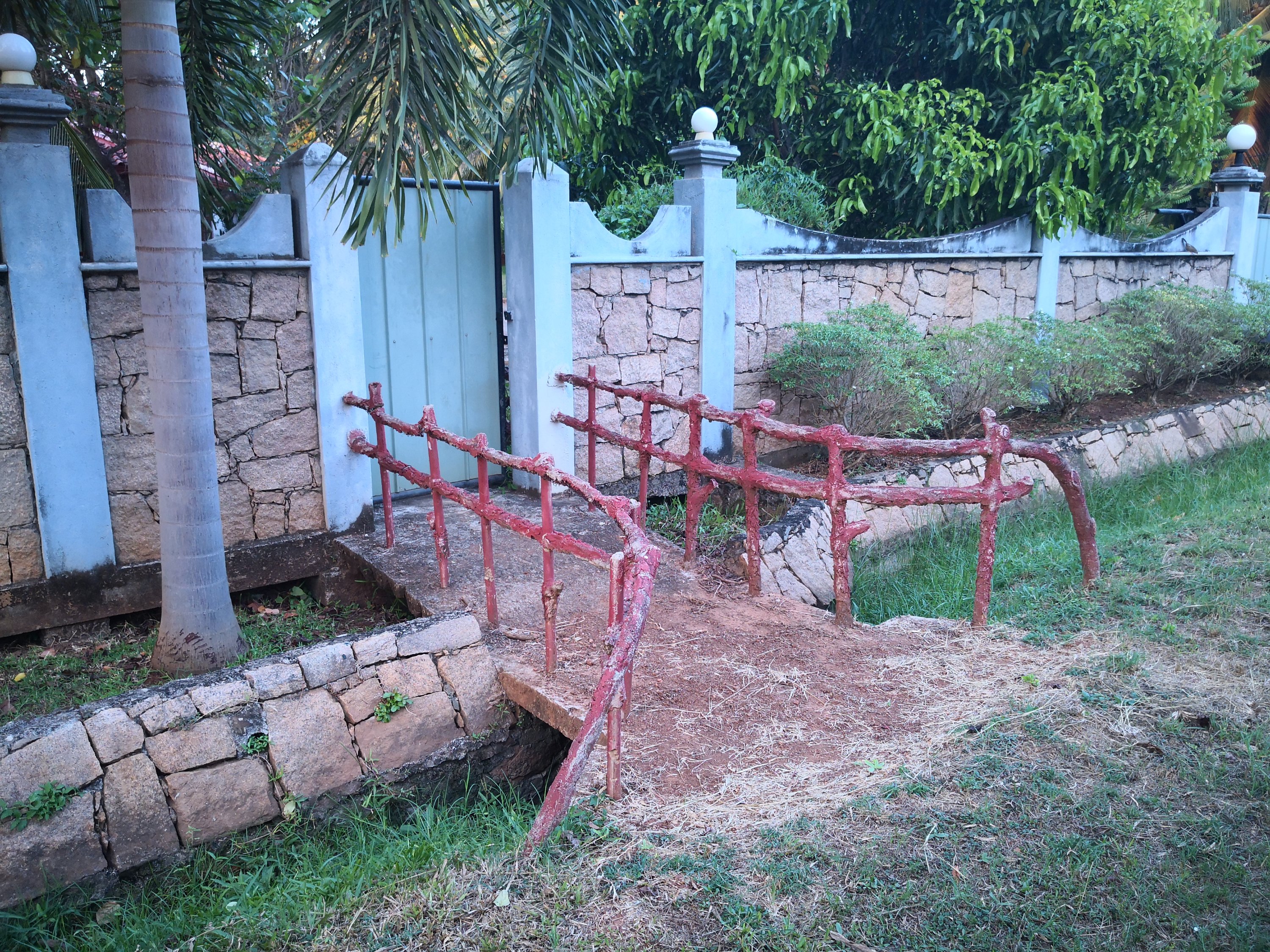
You could play a game of “Spot the Guy” in this local lake. I can find three of them. They seem to be harvesting something.
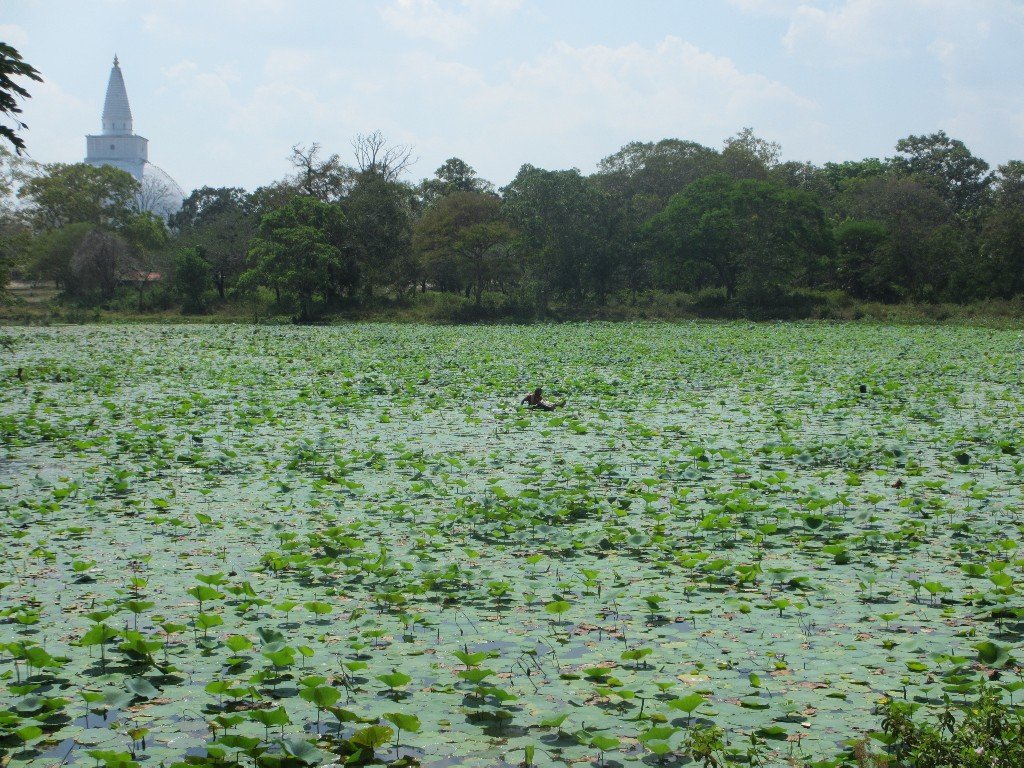
Next day saw us on a couple of deathtrap push bikes and heading around the ruins of the area, dating back to the 4th century BC. It was a hot sunny day, maybe 35C or so.
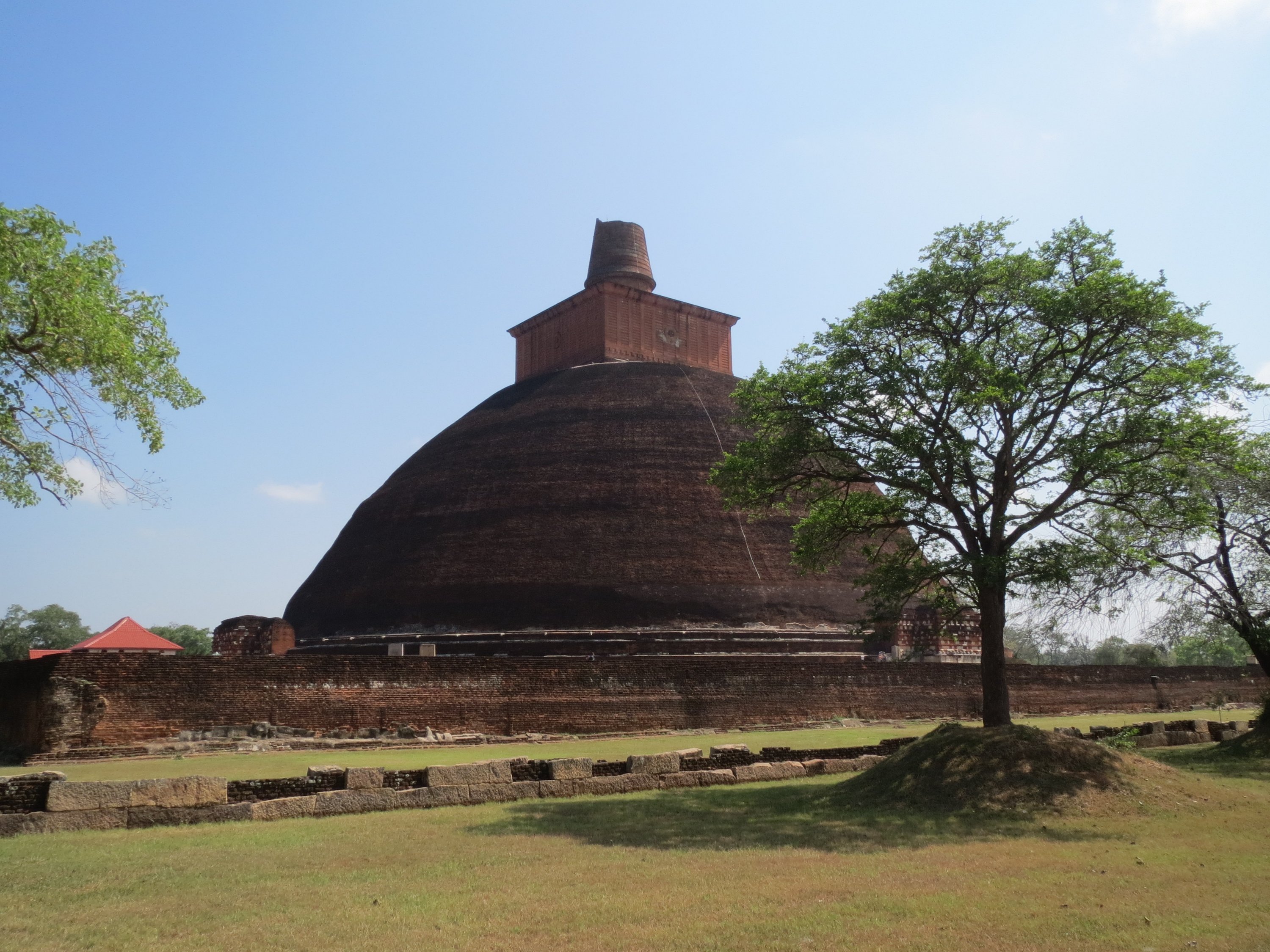
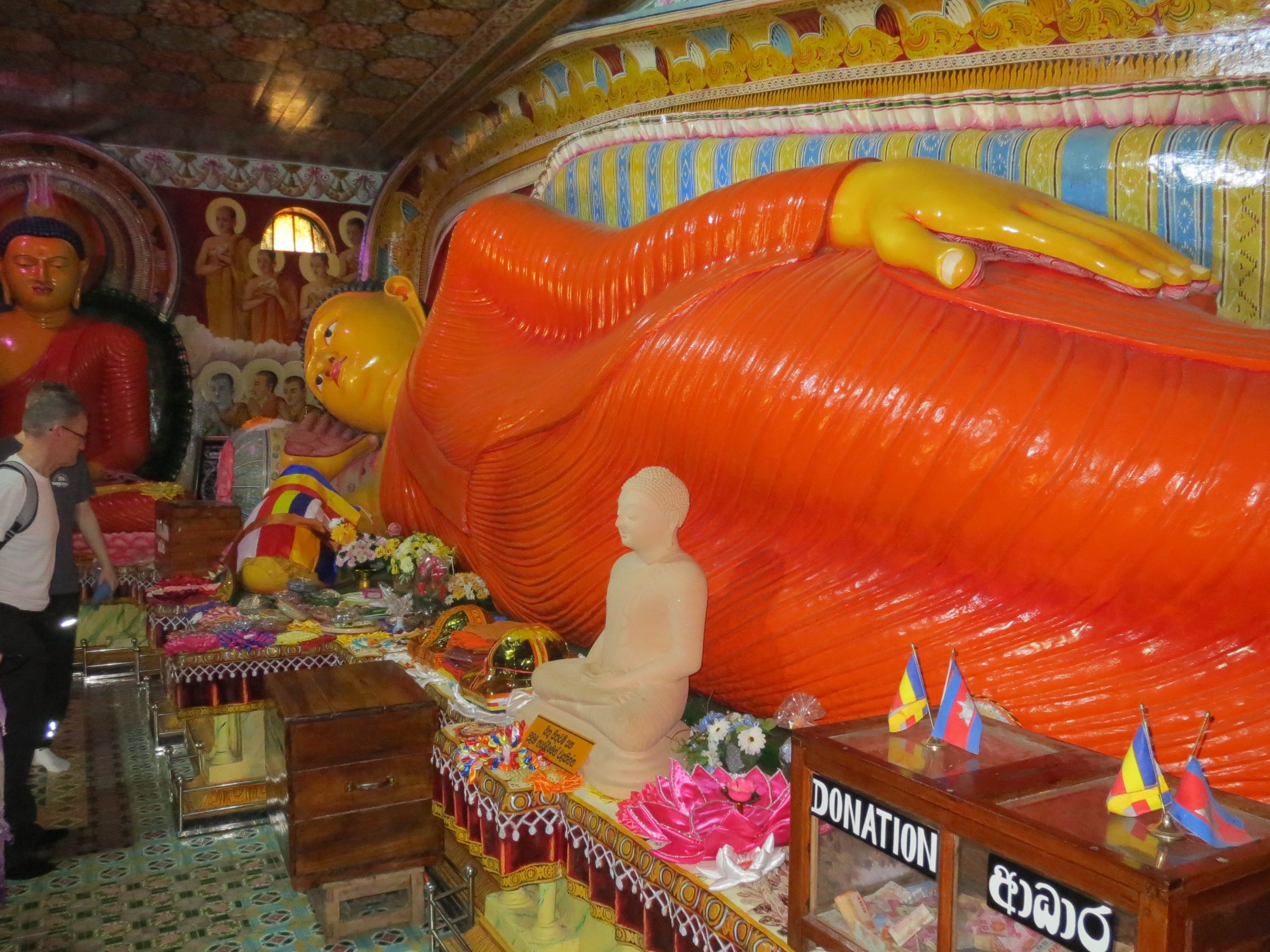
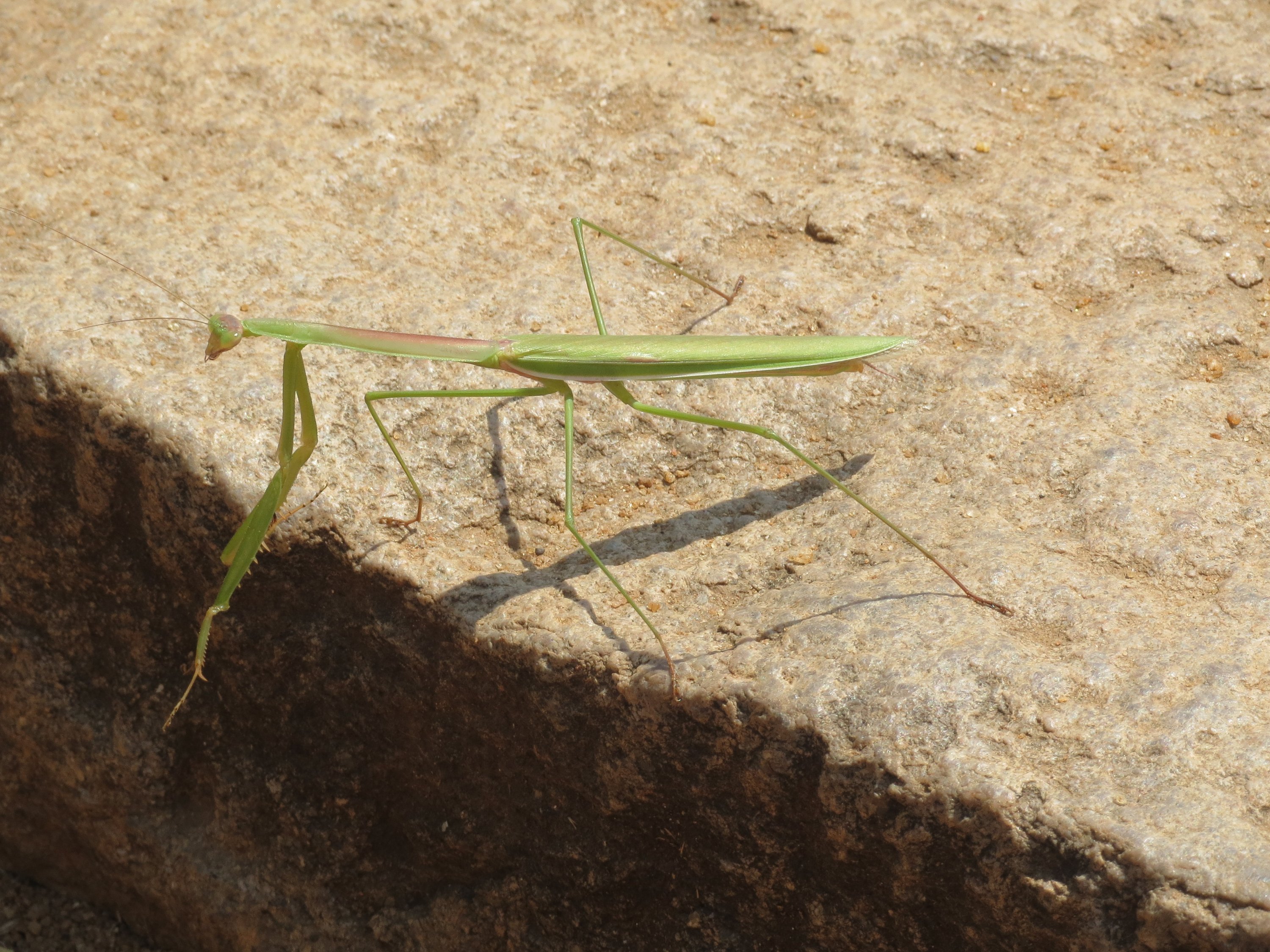
At one point, when as usual I was quite far ahead of Lisa, a policeman beckons me from behind. I go back to find another policeman blowing in Lisa’s eye to try and remove an insect. Imagine that happening back at home!
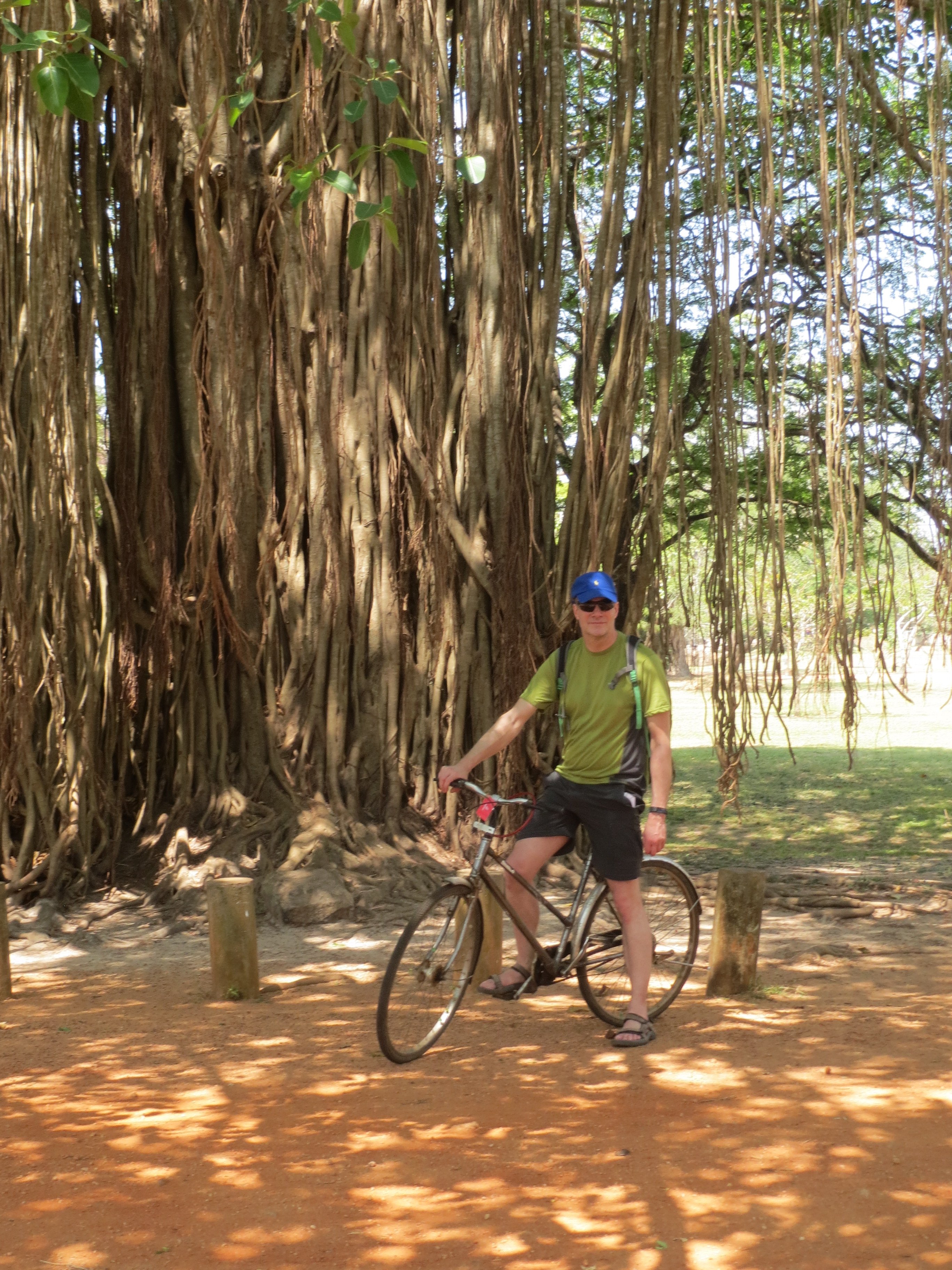
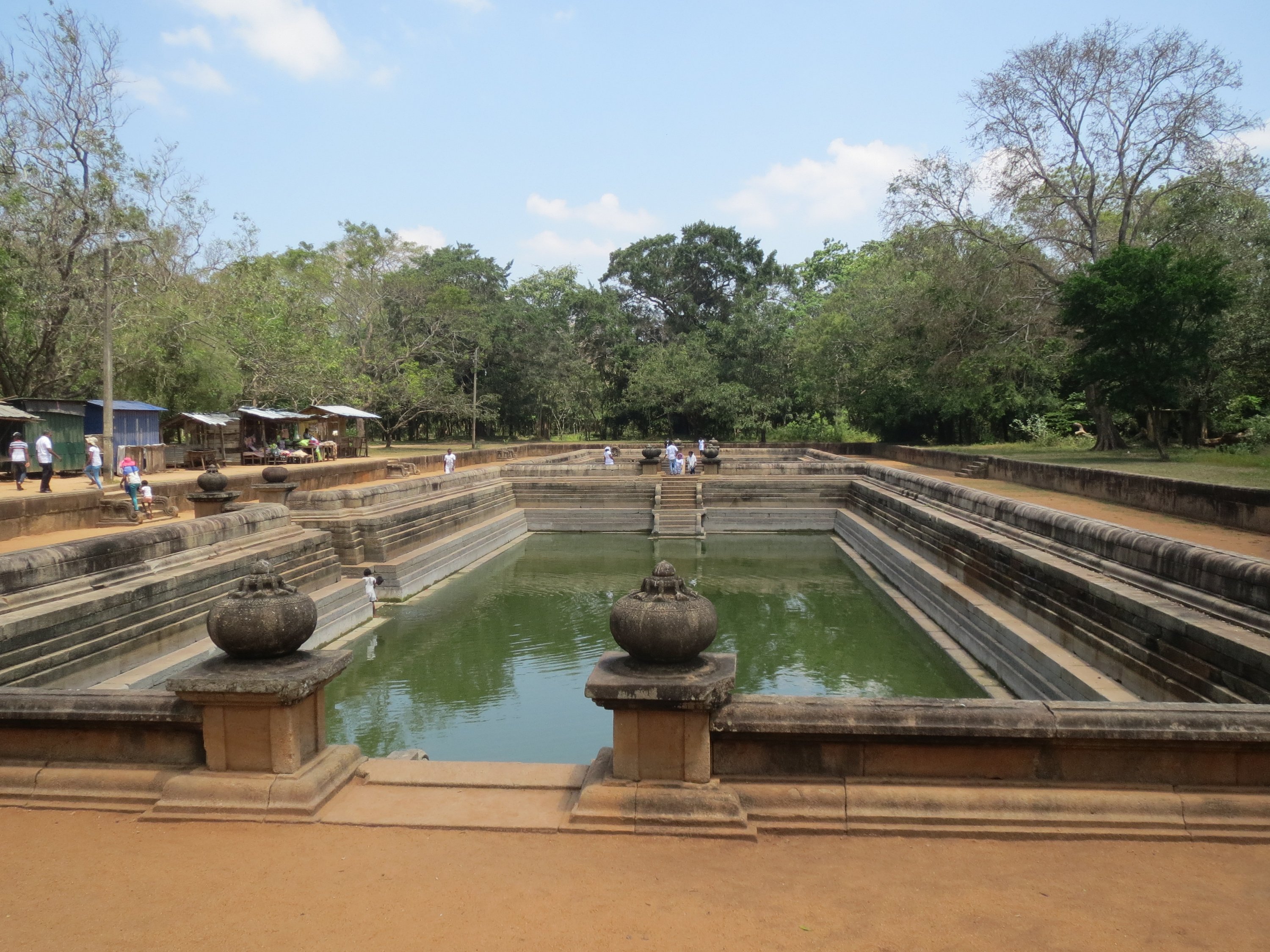
A moonstone, originally for cleaning one’s feet, with the five circles representing the journey to obtain Nirvana. Nowadays you can just get it from Spotify.
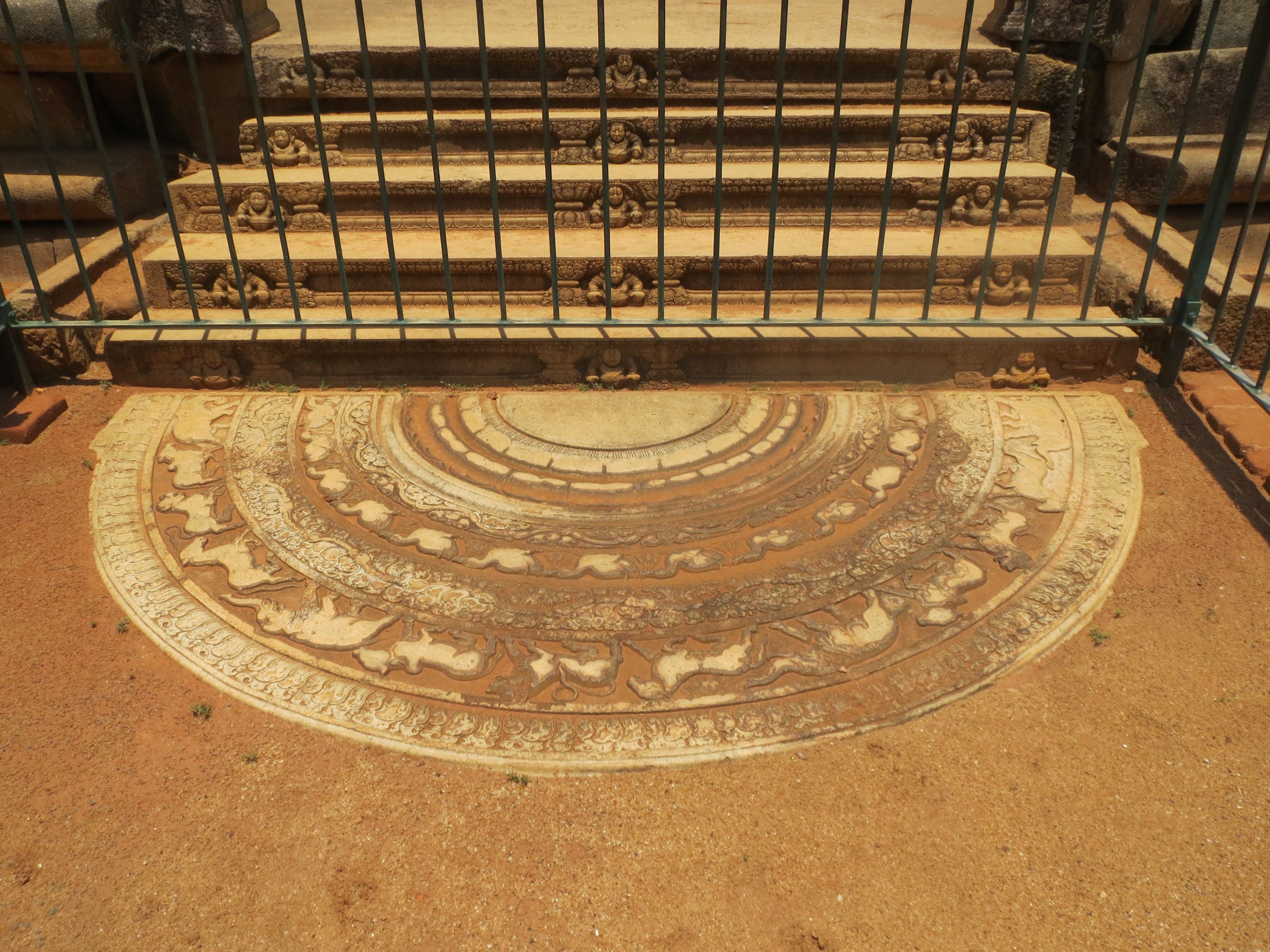
Fresh roti being prepared for our lunch
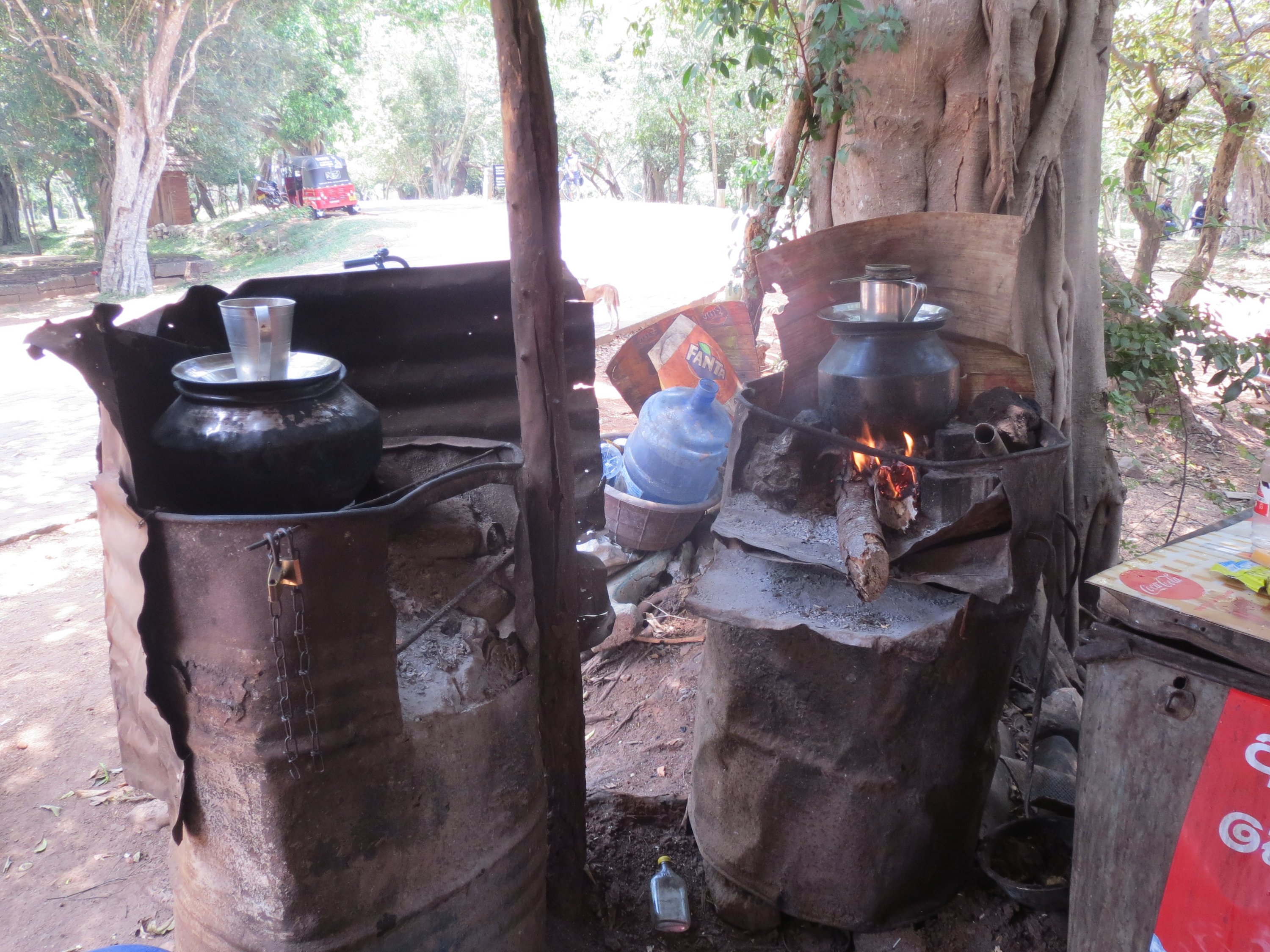
Lots of elephants surrounding a temple.
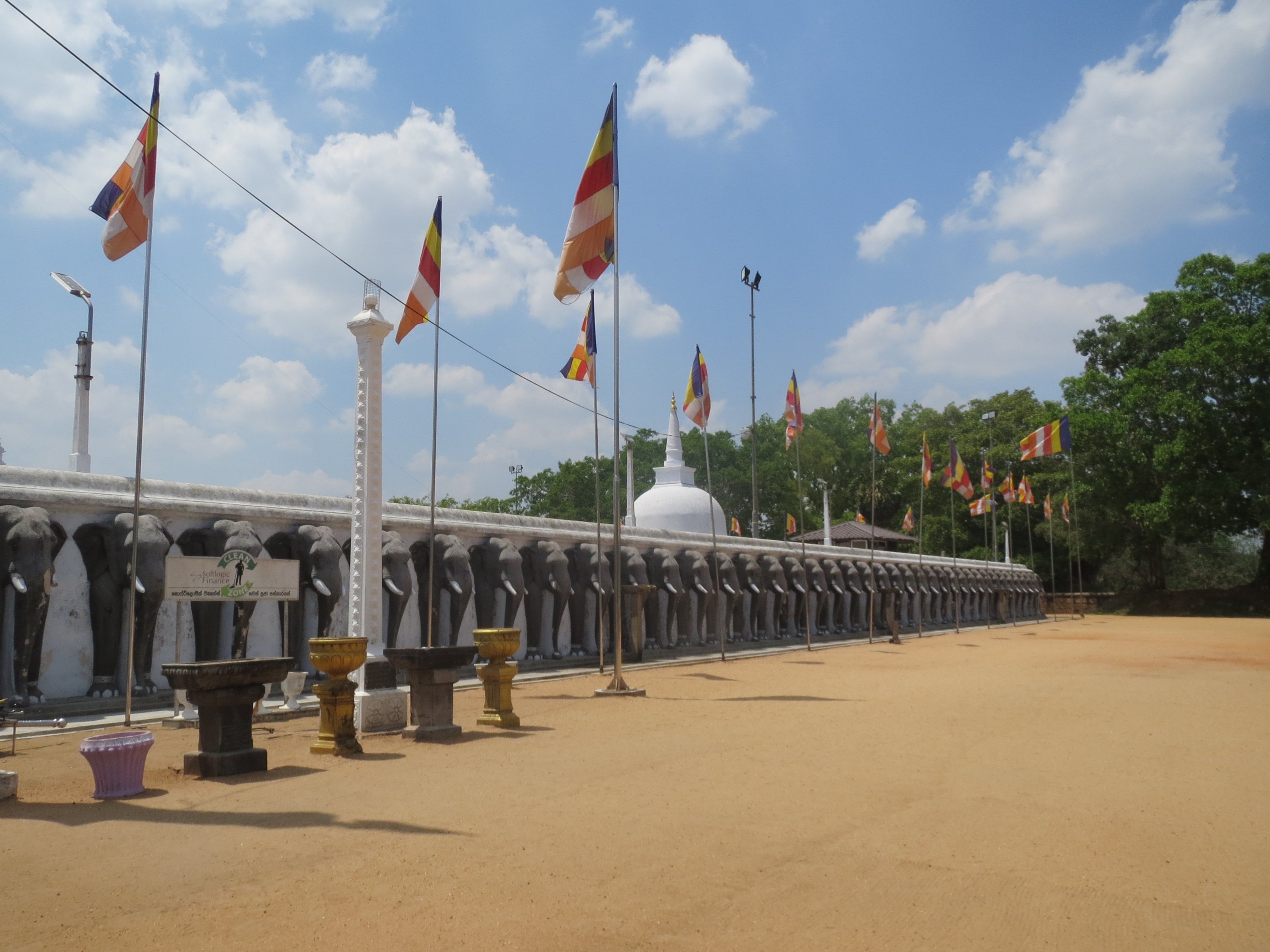
Later in the day we allowed our guesthouse to talk us into a short 3-wheeler trip to the nearby village of Mihintale, which we’d not originally planned on doing but we were really glad we did. It’s another ancient temple complex built on a big hill, with various dagobas and Buddhas on it, with a holy rock to scramble up at the summit.
This is the day before “poya”, or full moon, which you can see here above the holy rock. It’s always a holiday here and festivities abound for it.
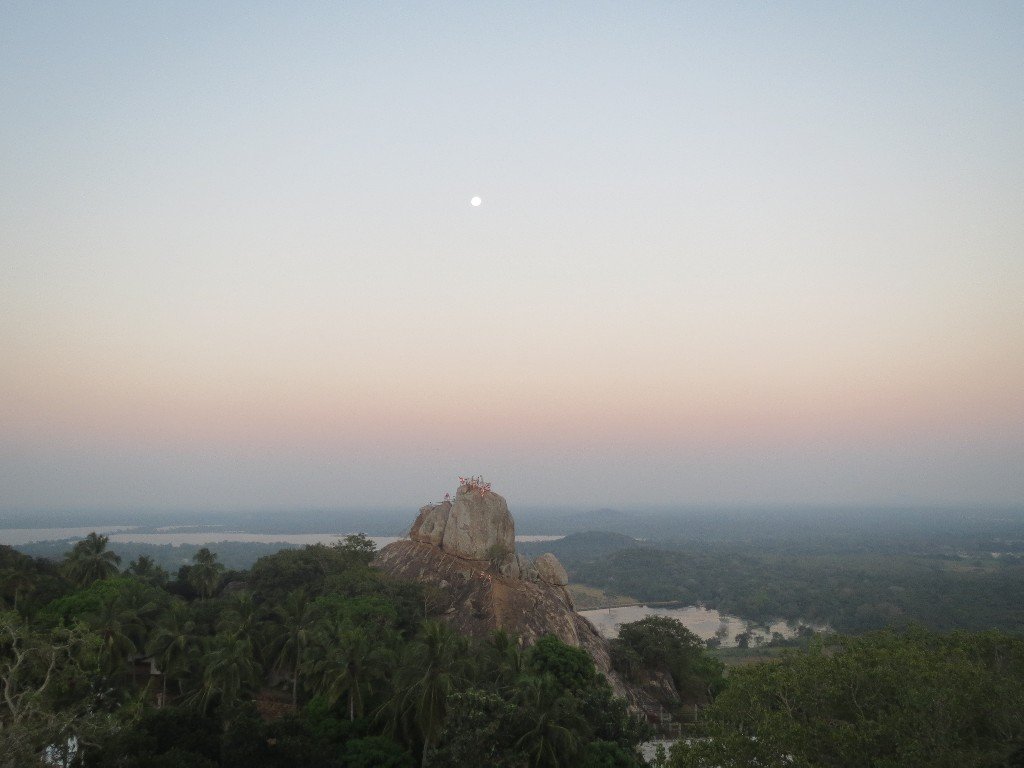
He’s not exactly been brushed with the best of paint brushes, has this guy. He also ripped a packet of biscuits right out of the hands of the girl sitting next to me, shortly after this was taken.
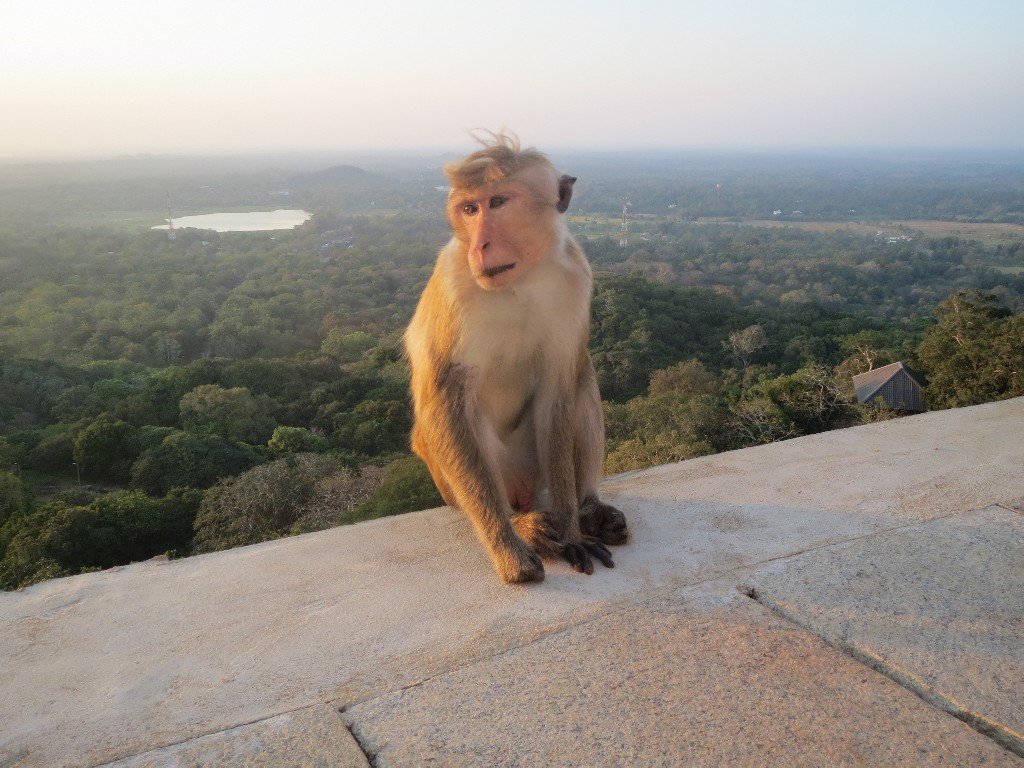
Climbing the rock. It’s quite a scramble in parts. Really rough steep surfaces with a shaky handrail for protection.
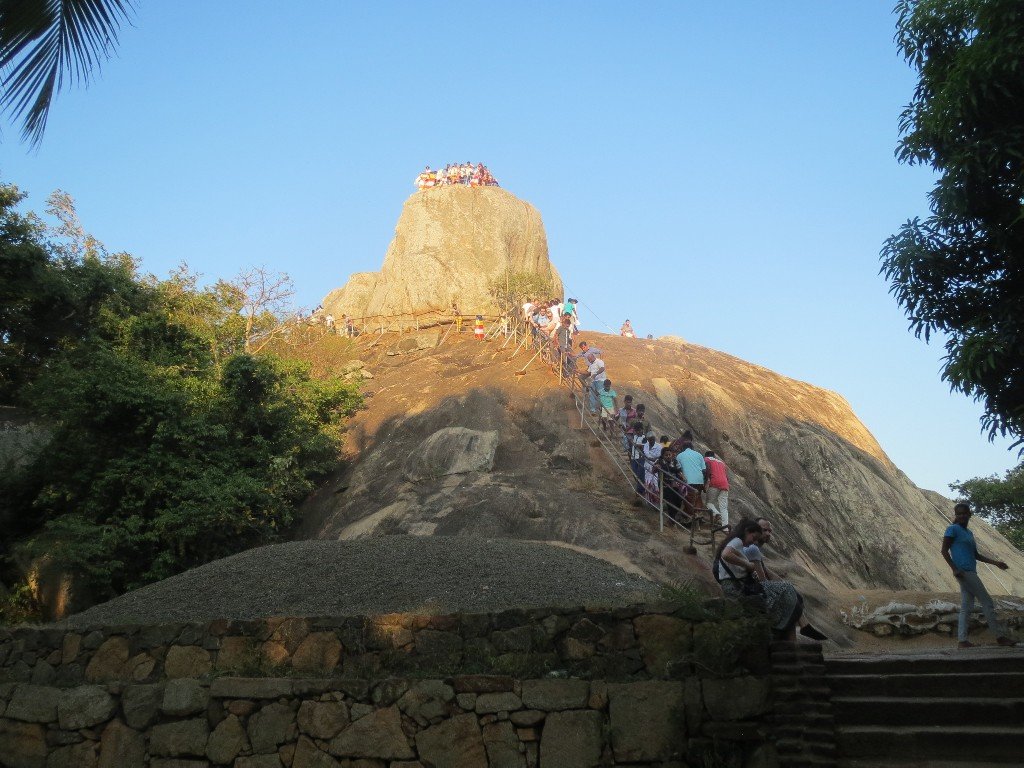
View of some of the rest of the complex from the rock.
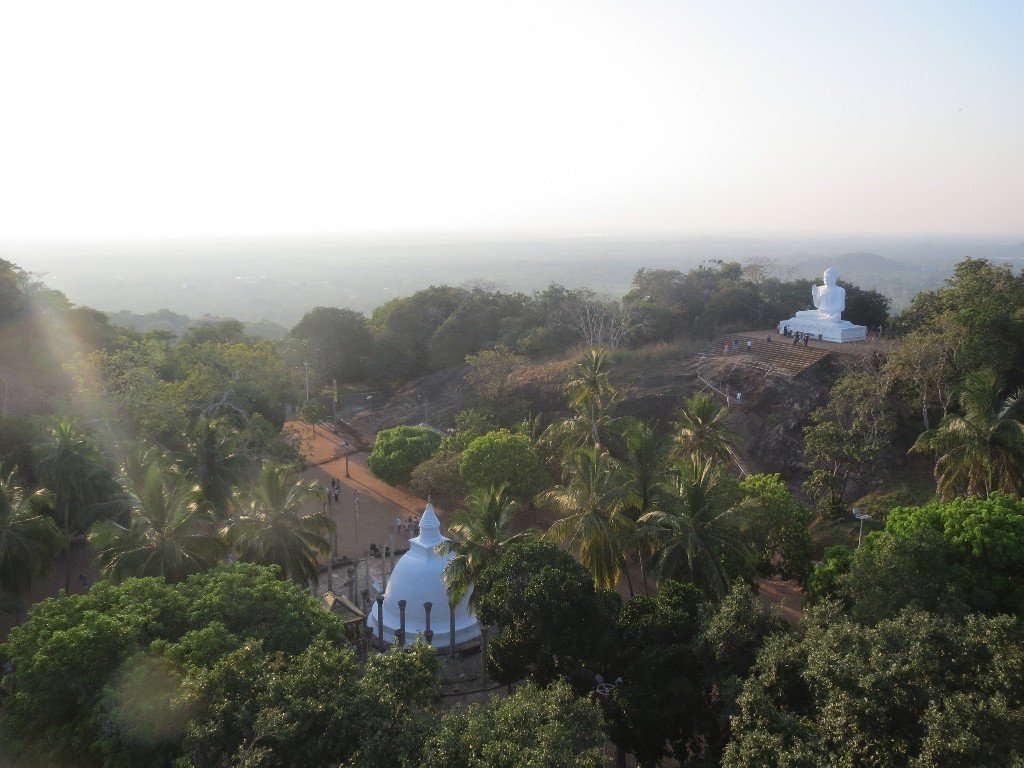
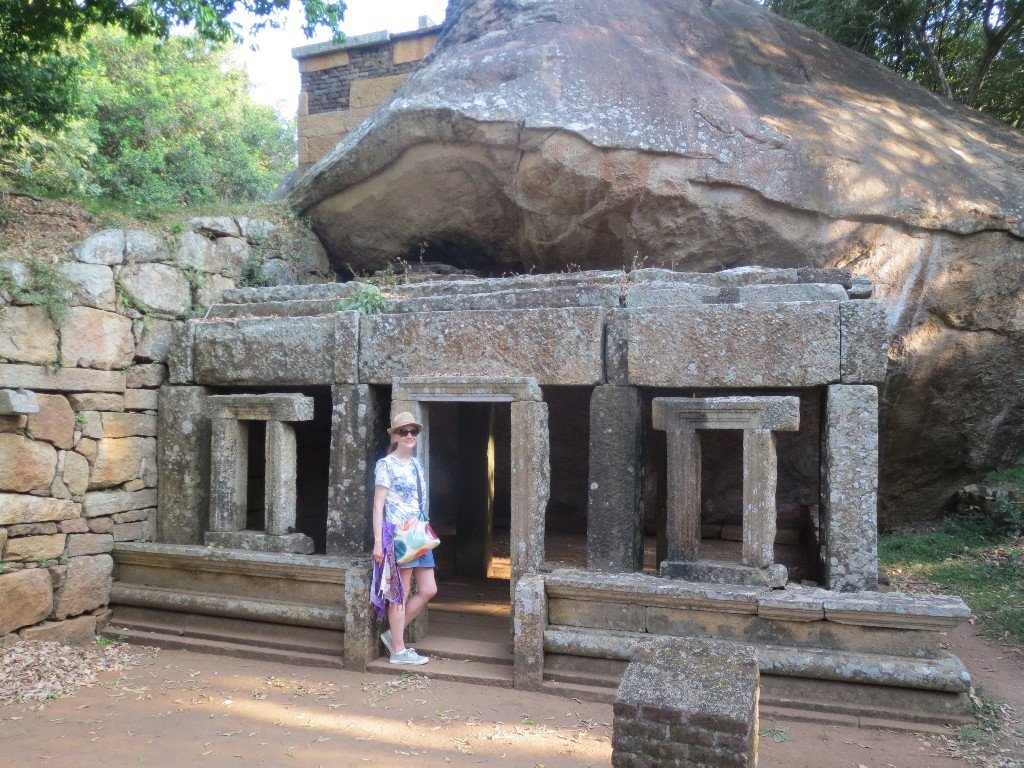
One of many holy trees that apparently become rammed with people bringing offerings on poya and other holidays.
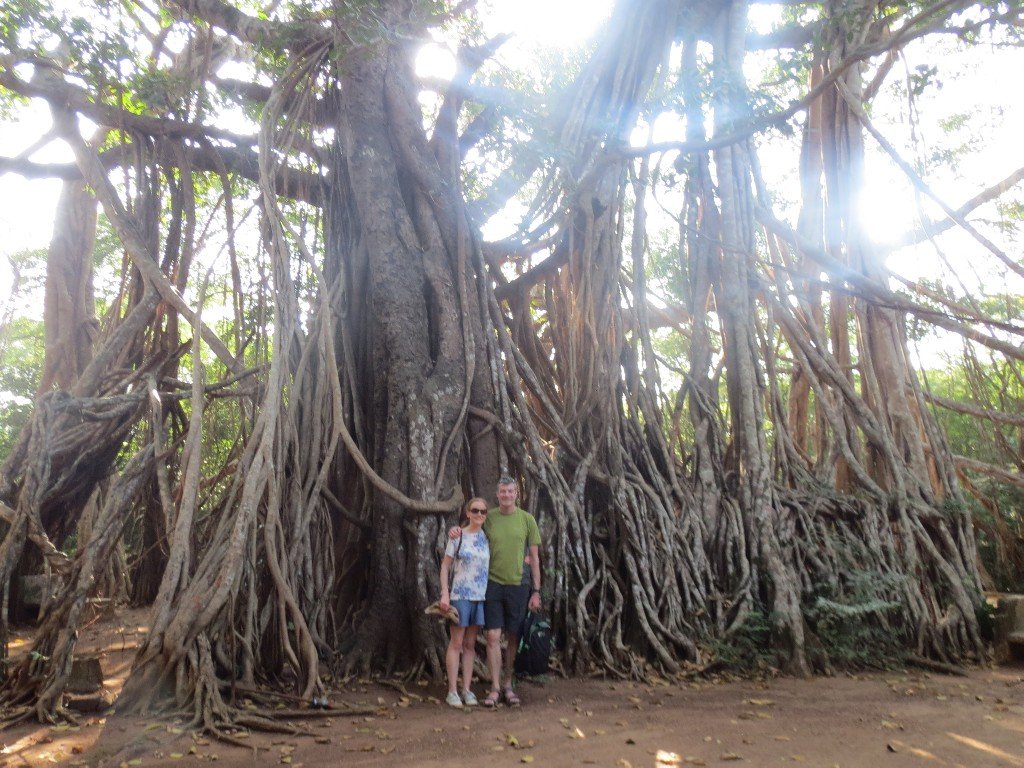
Our wheels to Mihintale.
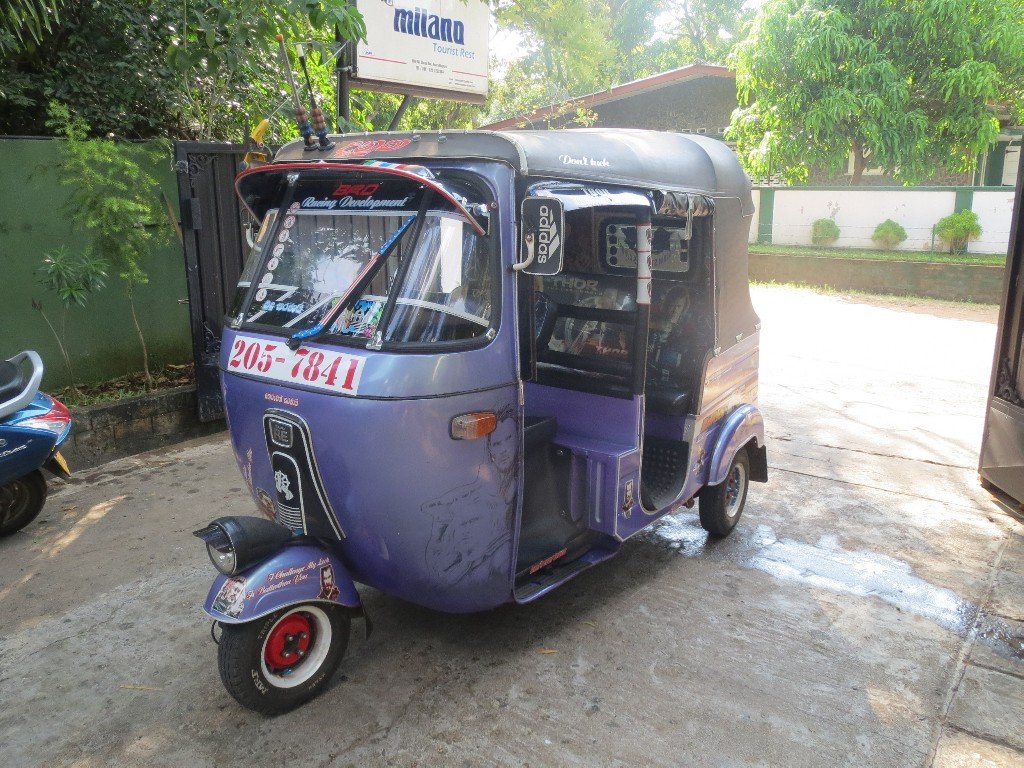
Prettier monkeys.
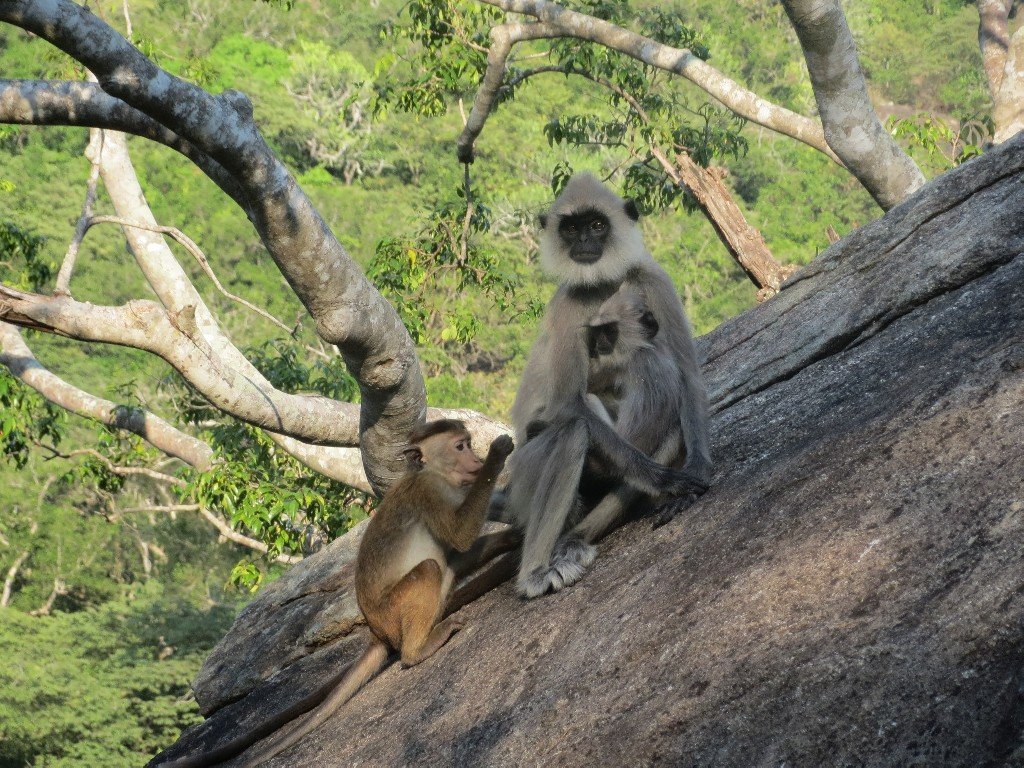
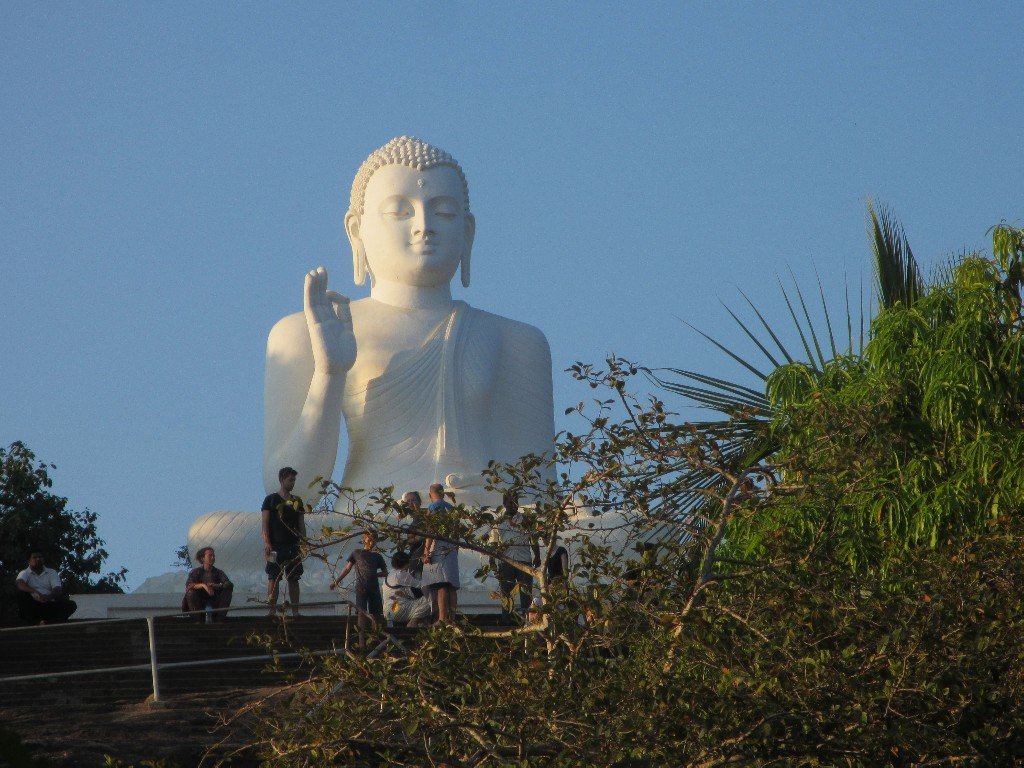
Back to Cairo
Just a brief one to wrap up as we had no option but to stay our last night in Cairo again to be able to make our flight the next day. We took a day train from Luxor back up here, a 10 hour journey which costs a pittance compared to the rather expensive night train we took down to Aswan before. This time it was daylight of course, so you could get a look at life along the railway.
Our first class car:
A passing train shows how they travel in 3rd class (yes, this train is moving!)
They still have the old signal boxes in use, a bit like Cornwall in fact! Bizarrely there’s nobody in this shot, but normally there’s all sorts of people walking along the tracks who think nothing of stepping on the signal rods and cables as they go. You’d think that might cause a signal to raise!
We had the morning to kill in Cairo, and we’d deliberately left the Egyptian Museum until this day so that we had something to do to kill the time. We don’t have any shots of the inside as we didn’t bother about getting a camera permit, but the place is piled high with hundreds of sarcophagi and statues and God knows what else, mostly not labelled so you had no idea what you were looking at. One of the more interesting rooms was that of mummified animals, there was all sorts in there – baboons, crocodiles, dogs etc. Then there was the rooms of human mummies which you have to pay a little extra see but that was definitely worth it, you can get very close to them in their glass cases and see all the detail. Mostly they’re Pharaohs that have been removed from their tombs.
Then there’s the Tutankhamen collection, of his sarcophagus and all his treasures that were buried with him in his tomb in the Valley of the Kings. It was remarkable stuff, that’s for sure.
Here’s a token couple of shots outside the museum.
We did a bit of window shopping after that as we went back to the hotel to recover our bags. They have these rather eerie faceless manikins in the shop windows.
A man runs the gauntlet to sell his bread:
That brings us to the end of a very rewarding week in Egypt, bringing with it some blessed heat which we’ve been way overdue for. Everything went off without a hitch really, not bad considering our itinerary was a fairly complex one on a tight timescale. On top of that, I managed to not resort to physical violence at any point, even when being asked for the 100th time in an hour where you’re from, or being ripped off for the 500th time in the same hour 🙂
Luxor – East Bank
The east bank of the Nile at Luxor, where the town is, has two main attractions for tourists in the shape of Luxor Temple and Karnak. Luxor Temple is right in the town, a stone’s throw from the ferry, and was buried for years under sand and silt until it was rediscovered in 1885.
There’s an amazing “avenue of the sphinxs”, which they now know leads all the way up to Karnak, which is a good mile away at least, and are now being excavated.
Inside the temple:
The main facade:
Not sure how clear this is, but a sign in this supermarket proudly declares that there is “no hassle” here – Egypt’s latest buzzword for tourists. Left of the picture is Lisa, arguing with the proprietor over the cost of a bottle of water, which counts as hassle in my book. Yup, even for groceries you have to haggle for your goods.
On the way up to Karnak, I got a puncture in my rear tyre in a really awkward spot, far away from the accomodation where we rented them, and far from any shops or restaurants. We were under a bit of time pressure too as the day was pushing on and this was our last chance to see Karnak before we had to leave. In desperation, I found a sort of a travel agency and asked them. A guy walked with us on foot for a good 10 minutes to a mechanic, who couldn’t helpm but he took us to a small boy who went and woke his father who happened to have a bicycle repair business nearby and opened up especially for us and did a thorough repair for E20, or 80p. Everyone who really helped us and saved our bacon didn’t want any tip or to rip us off, everyone else did! 🙂
Now mobile again, we made it to Karnak:
One thing you’re not supposed to do with ancient monuments is touch them or sit on them.
We feel a bit lost in here, this hall has a total of 134 massive columns like these, and they’re mostly totally intact.
The night before we’d also caught the sound and light show at Karnak after dark. It was cheesy but quite cool at the same time.
The rather impressive public ferry takes you over the Nile for E1.
After a hard day’s temple viewing it’s nice to dip in the pool right on the banks of the Nile. Swimming in the river is not a good option, as it’s got the sewage of Tunisia, Kenya, Ethiopia, South Sudan, Sudan and Egypt in it 🙂
One of our last dinners in Egypt, accompanied by the local beer called Stella, which has nothing to do with the more famous Belgian variety and a bottle of local plonk, which wasn’t half bad actually.
Our room service people got creative in our room…
… at the same time as someone was creative outside the restaurant area with the day’s supply of bread.
Luxor – West Bank
Described as the “world’s greatest outdoor museum”, Luxor is 100 miles or so downriver from Aswan. Although rather bigger, it’s similar in as much as the town is on the east bank of the Nile, but the ancient temples and so forth are to be found on both banks. Wanting to avoid the noise and hassle of the town again, we stayed on the west bank which is very rural, essentially on a banana plantation about a mile south of where the public ferry docks. To save a long walk, rather than use that we took a cab on the east side down to where the hotel sends their own boat to pick you up and drop you directly in the hotel.
We had our own cabin, very tastefully done and extremely large and private!
The bathroom is nearly as big as some bedrooms, and continuing an obsession I seem to have of pictures of them, here’s the shower.
We used a couple of bikes for our two full days there to get us easily about, as distances on the west bank are well within reach, and they also let you take them on the ferry to get around the east bank too. The ride up from the hotel towards the ferry and the sights of the west bank through the farm lands was delightful in itself.
They use these simple pumps to lift water from the cess-pit of a canal to irrigate the fields:
We woke up a couple of camels, they look like they may be hubby and wife, don’t they?
We first went up to the Valley of the Kings, fairly high up in the desert and well beyond the fertilising influence of the Nile. There must be 30 or more tombs up there, dug into the sandstone, including that of Tutankhamun. We don’t have a lot of pictures up there as you’re basically not allowed to use your camera unless you bribe the guards on top of the normal baksheesh you have to give them anyway. We went inside the tombs of Ramses III, Ramses IX and Merenptah which are three of the more impressive ones. We didn’t bother with Tutankhamun’s as it’s a fairly hefty surcharge on top and is apparently fairly unimpressive inside compared to the others anyway.
Cycling up there is up a fairly long, steady climb which is not too difficult, even in the soaring heat.
A cemetery in a remote spot halfway up to the valley:
There’s stuff like this littered all over the west bank, scores of tombs and statues everywhere:
Some of the few signs of civilisation on the West Bank, even though this looks more like a postcard. I suppose that’s the weird effect on the lighting due to the sand.
This was a lunch stop at “Restaurant Mohammed”, close to the main ticket office, which is to say it’s in the middle of nowhere. It was probably the best meal we had though:
The restaurant’s resident cat, who seems to be bored of my advances:
Later in the day we did Medinat Habu, yet another mighty impressive temple mostly attributed to Ramses III. It was common for the pharoahs to have baboons as pets, and these are often depicted on the walls, sometimes they have them mummified with them too.
This room depicts lots of murder scenes:
Even at this point, I still struggle to believe that this stuff is some 5,000 years old.
You can get an idea of scale by looking for the Little Lisa in the doorway here:
Our last main stop on the west bank was the Tombs of the Nobles, there’s about 600 of these all in the same area, dating between the 6th dynasty and the Graeco-Roman period. We managed 5 of the 600, you buy tickets for them from the central ticket office, but when you get out there to the deserted site, you find that the actual tombs are locked, until a guide springs out from behind a rock and unlocks it for you. You have to give him some basksheesh, of course, and when you’re out he points you towards the next tomb your ticket allows you to go into, of course this time a different guide appears from nowhere to let you in. 5 tombs, 5 guides, 5 lots of baksheesh….
You’re not allowed to take photos as usual, but I did pay over the odds to one of these dudes to get a couple of pics inside Amenenope, we think it was. The grate on the right of the first picture covers a shaft leading down into deeper parts of the tomb, where robbers would’ve dragged out the sarcophogus from at some point.
I remember as a child back at home when a baker used to deliver bread to our door. It still happens on the west bank.
Aswan
Anyone who’s known me long enough will know I was something of a Madness fan back in the day, an 80s Ska band whose one of their more obscure singles was called “Night Boat to Cairo”. I couldn’t manage to arrange that, but got fairly close by taking a Night Train From Cairo to Aswan, some 1000km up river from Cairo. In fact, this night train is the only one that foreigners are technically allowed to use along the upper Nile valley, all day trains are off limits. We travelled in style in first class, which gives you a private compartment with 2 bunk beds in it which convert from chairs for day use. There’s a wash basin in there, and a very good dinner of your choosing and a mediocre breakfast are brought to you by the porter.
The first challenge was actually finding the train in Cairo station. Much of the signage is in Arabic and although many people you speak to seem to have some grasp of English, it’s still hard to get much from anyone that makes much sense. Mostly you get given a vague arm movement which is sending you in any direction that’s away from them, and after going between about 6 unidentified windows around in circles, we try our luck on a random platform. It wasn’t the right one, but people were jumping off the far end of the platform in their droves onto the tracks with big suitcases on their shoulders, running across multiple lines, literally right in front of moving trains. In the end, a lad whose job it was to sweep the platform sent us to exactly the right spot on the very long platform the train was coming in on, and he didn’t even want any baksheesh for it.
The Egyptian method of fair – dodging differs from ours:
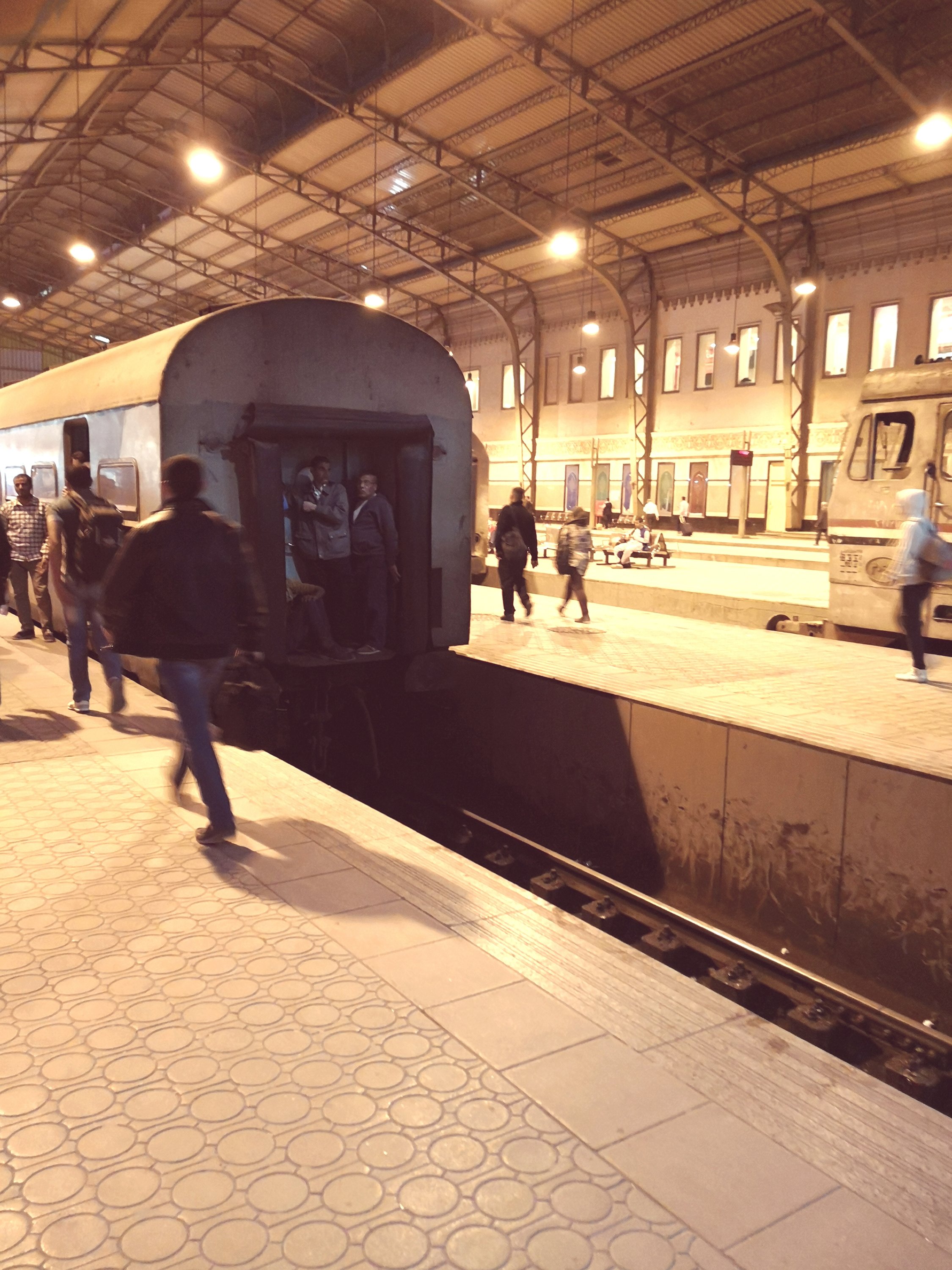
Not sure how clear that is as I was trying to be subtle taking it, but there are three people in the unused adjoining door. All trains seemed to leave with people in there, as well as with people running down the track chasing them as they left to grab the bottom of the doorway and climb on, like you see on films.
It was a bit of a rough ride, the train stopped a lot at seemingly random moments and rattled on the buffers so hard we were almost thrown out of bed several times. We were 2 hours late on the 13 hour journey in the end and later found out that the loco was broken, and the driver had to get out and start beating it with a large hammer to get it going again.
If you’re wondering why I went for the no. 2 haircut all over, it’s because the temperatures here should be in the early 30s at this time of year, but there’s a bit of a heat wave going on at the moment and today we’re facing this:
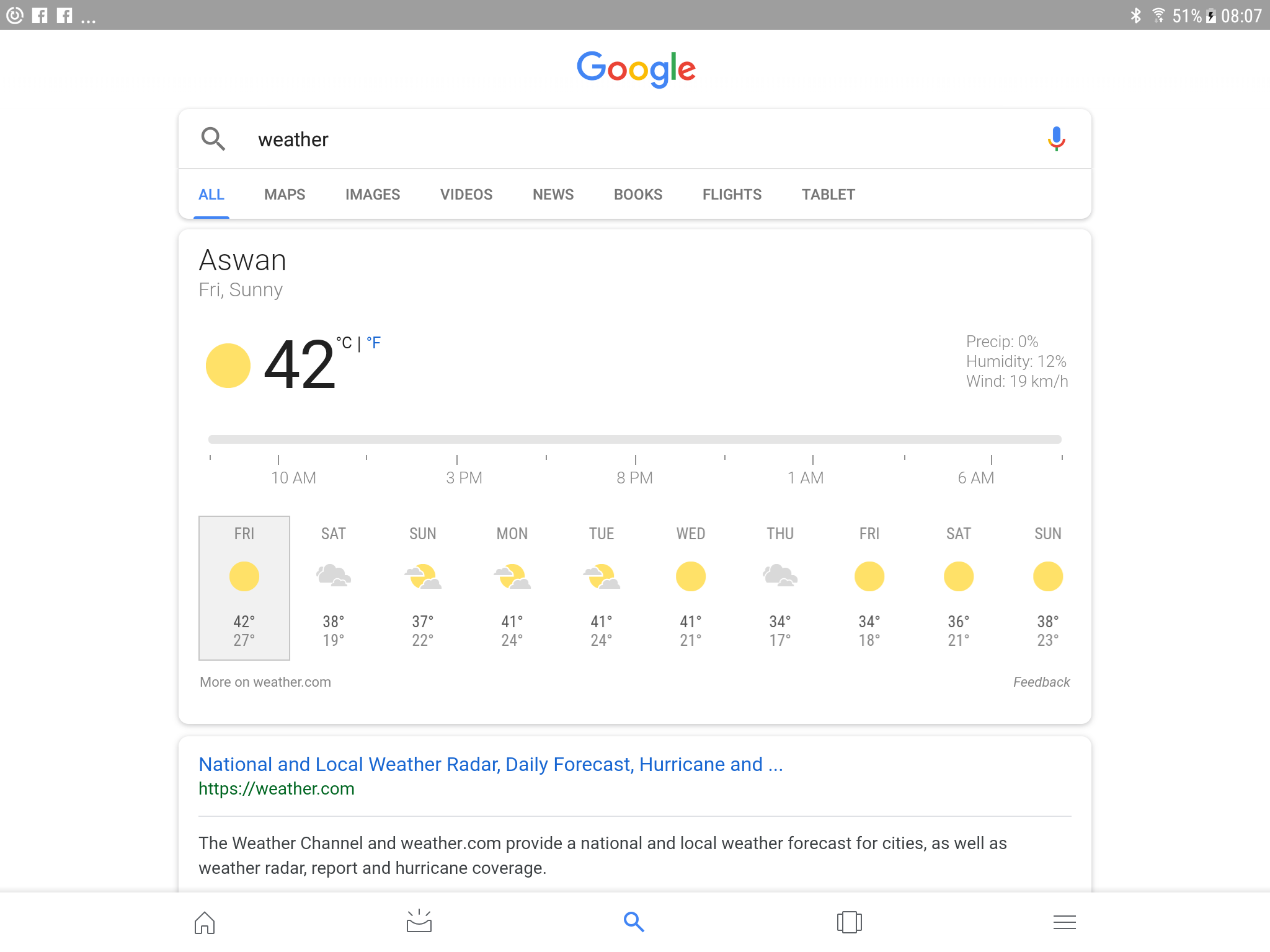
For anyone in Lisa’s possie not familiar with these new fangled temperature scales, that’s a toasty 108F.
Aswan is a fairly small town, right on the river bank, but we opted to stay on Elephantine Island in the middle of the river right opposite the town. There was an indigenous group of people in a region called Nubia, south of Aswan stretching down into Sudan. The whole area was basically submerged when the High Dam was built in the 70s and created Lake Nasser over their villages. One of the places they resettled to was Elephantine Island which remains very rural with no vehicles and only dirt paths winding in between colourfully painted houses. It really is a world away from the town opposite and was blissfully quiet at night. We stayed in a small guest house on the west side, directly opposite the botanical gardens on Kitcheners Island, an even smaller island on the way to the Nile’s west bank, run by a Nubian man and his Italian wife. What with the sunset over the temples of the west bank and the coloured lighting of the botanics after dark, it was something fairly spectacular.
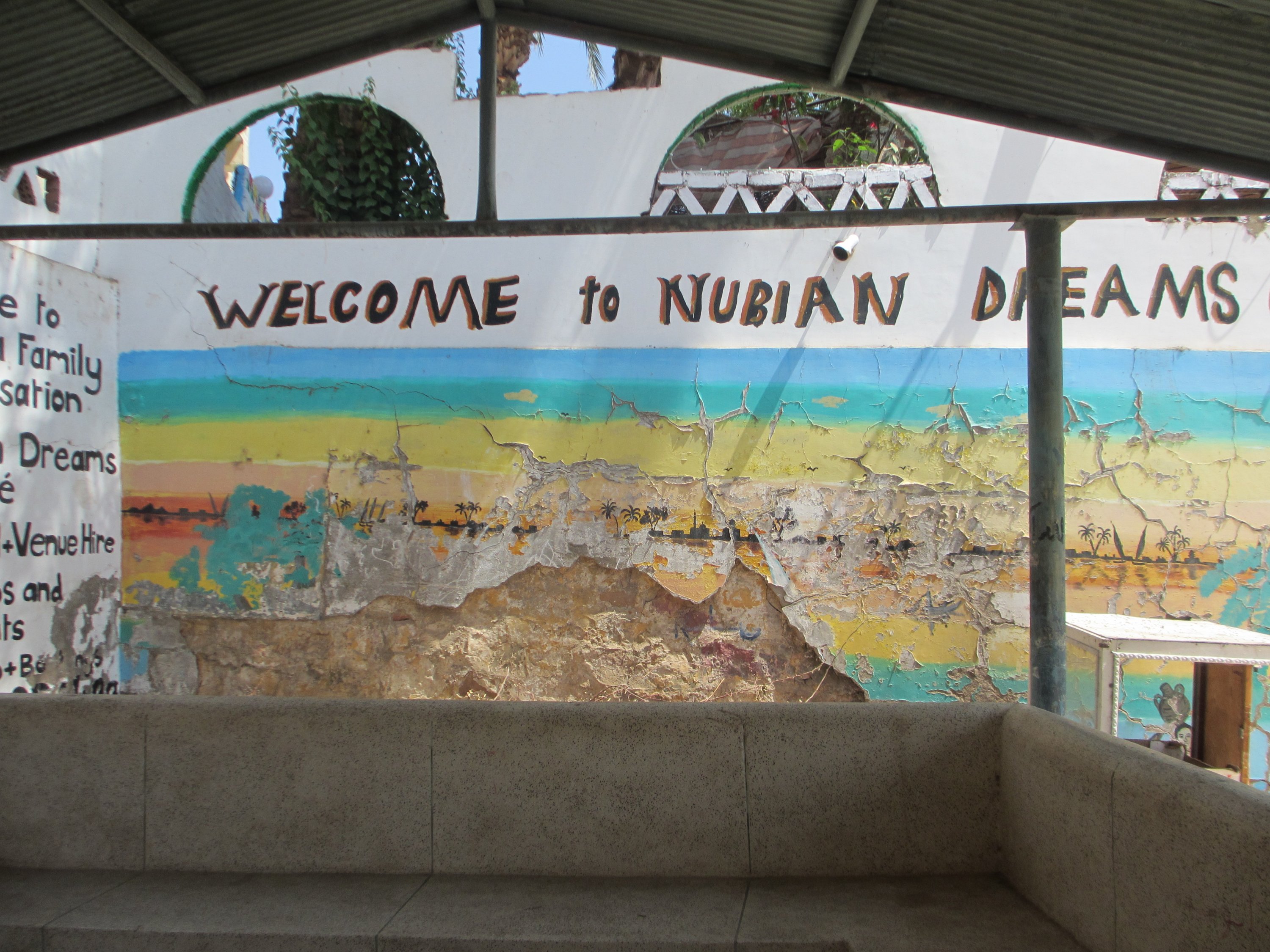
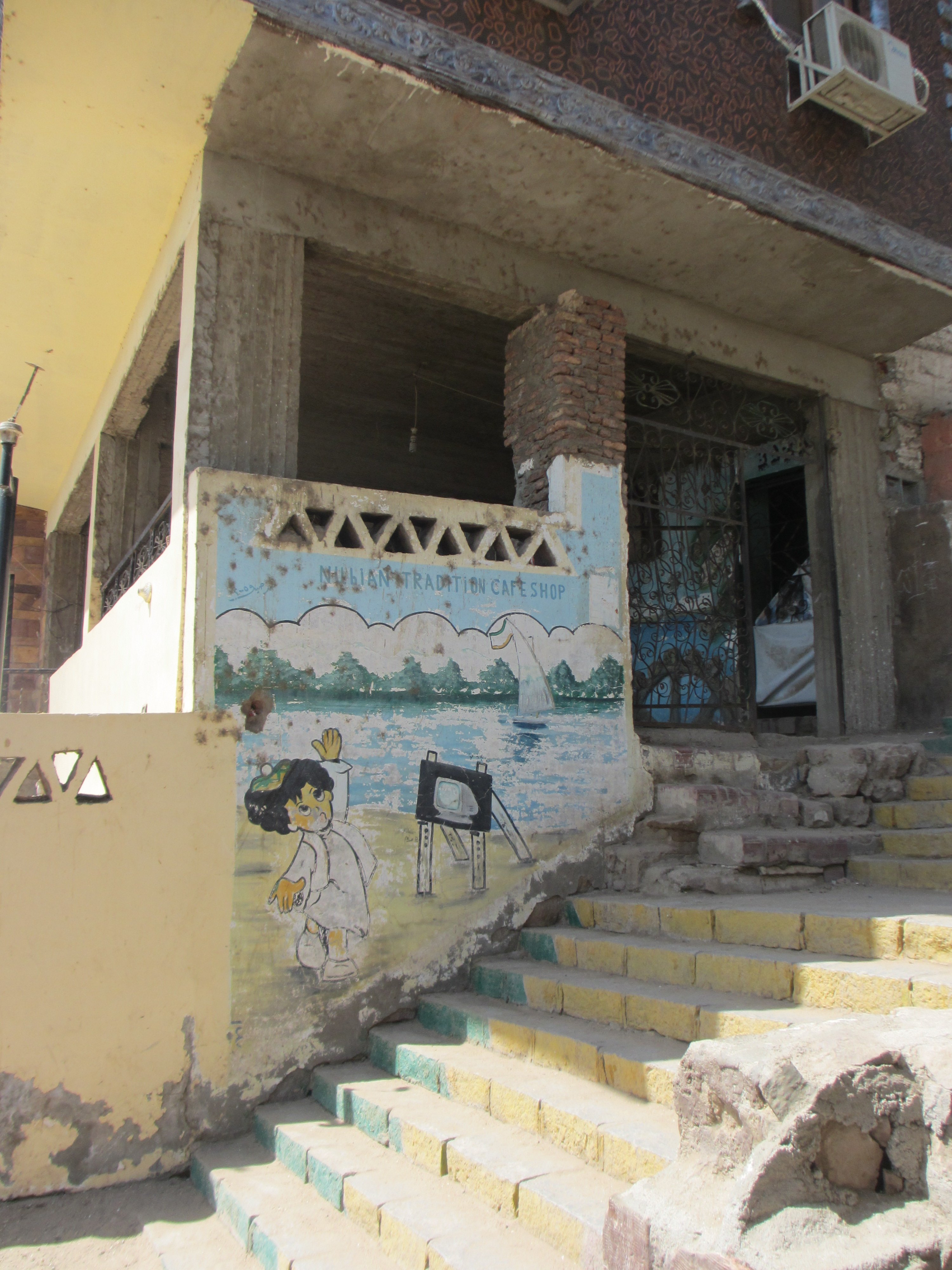
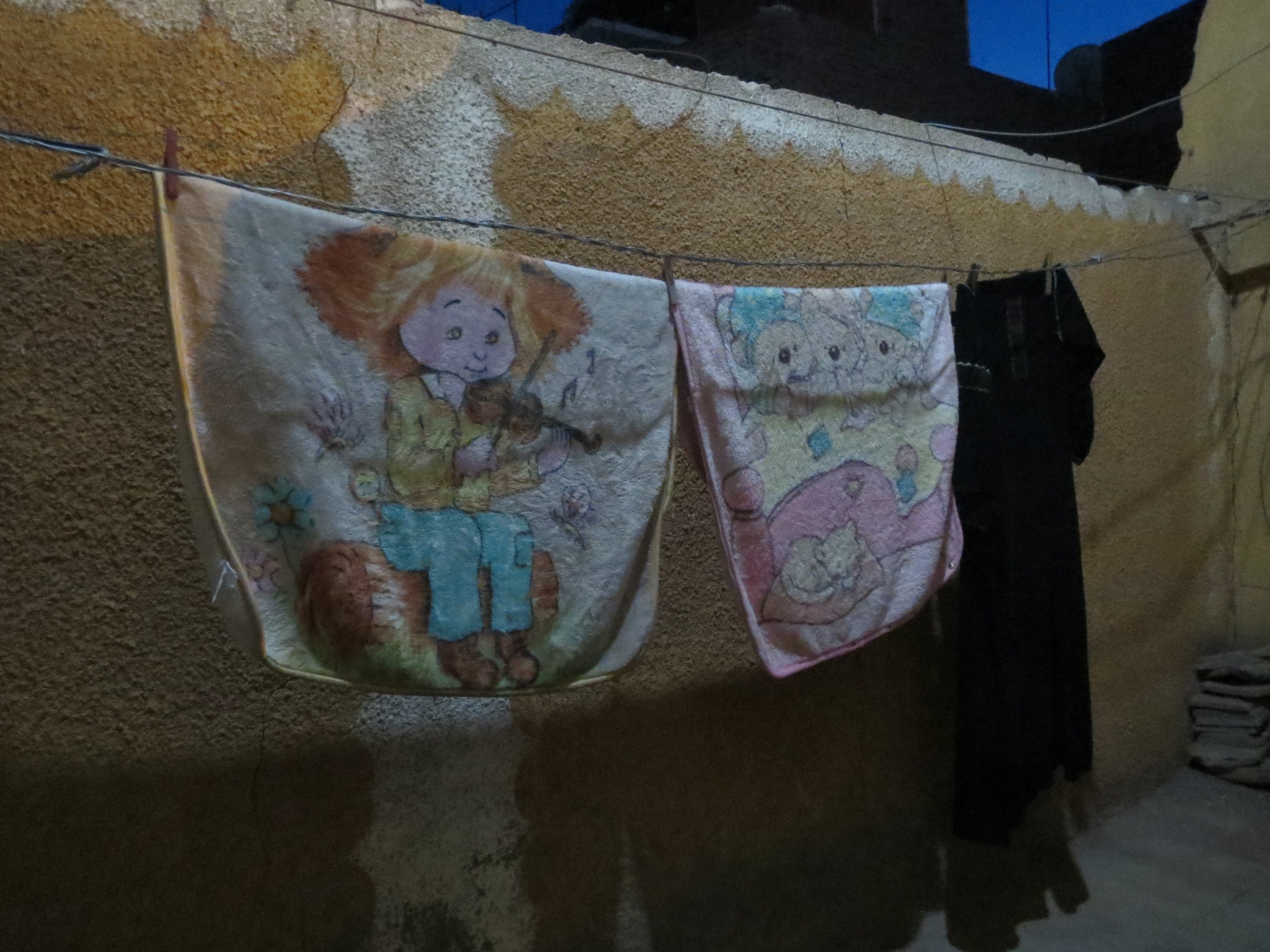
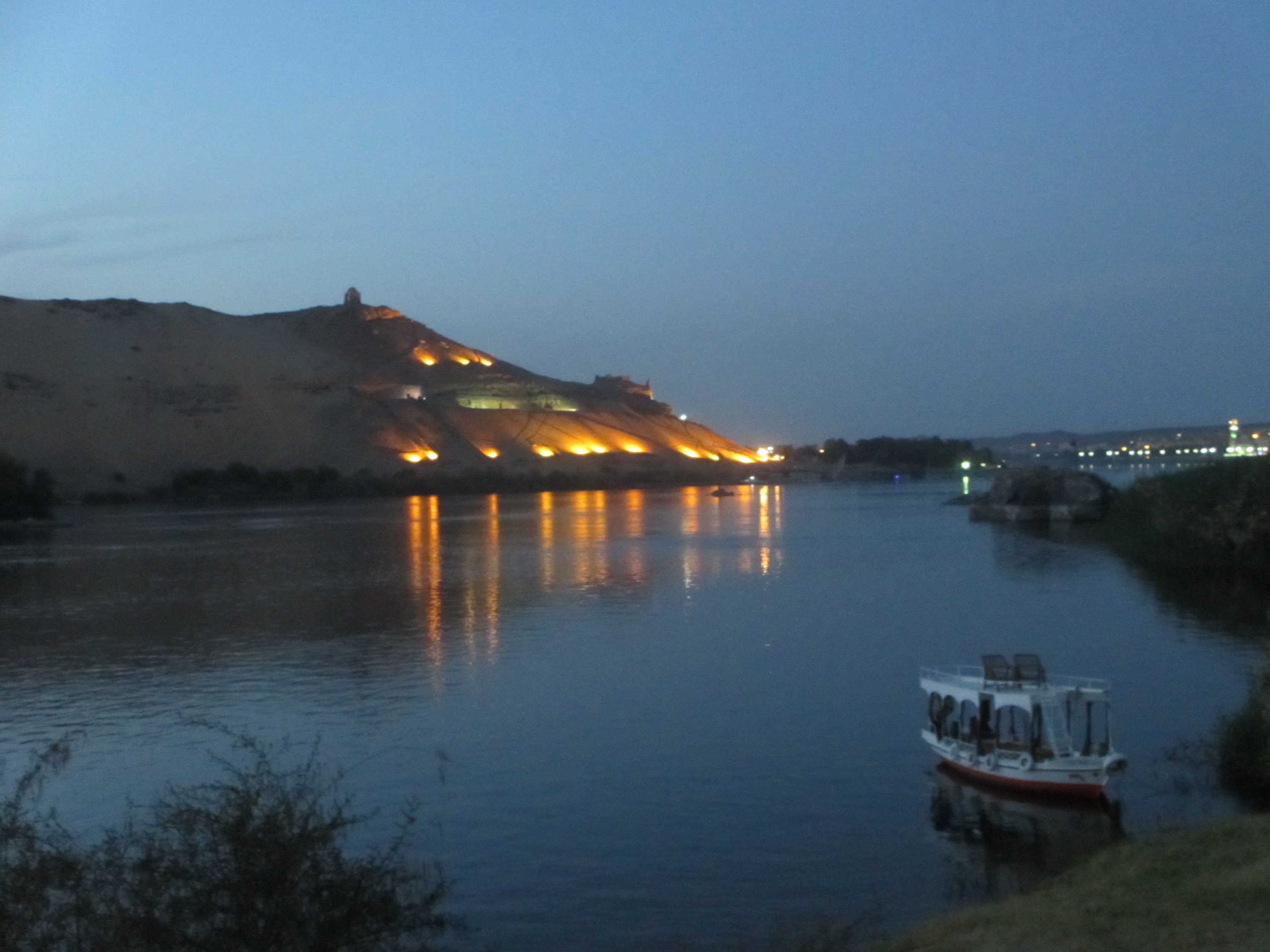
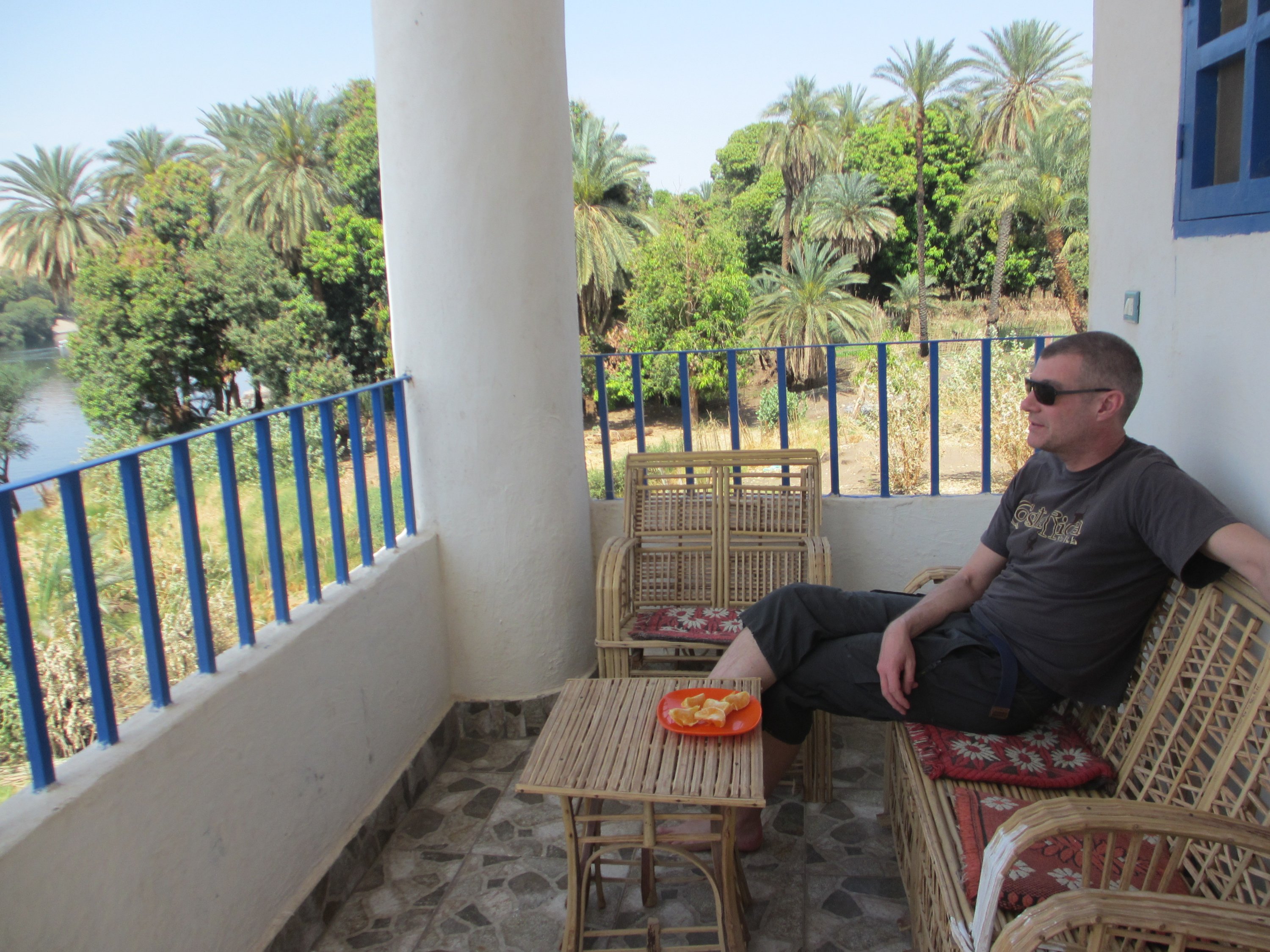
You get to the island on one of two public ferries. Whilst we were waiting for it we negotiated with a “felucca” captain for a trip that evening. A felucca is a small wooden sailing yacht that traditionally ply the waters of the Nile and is a good way to get to Luxor from here in 3 days or so, if you have the time, which we don’t.
They rip tourists off on the ferry by charging double the normal fare, so we had to fork out E2 each, that’s 5p. Women must sit at the front of the boat and wait for the men to disembark first from where they sit at the back. Again the dodgy camera work is me trying to be subtle :
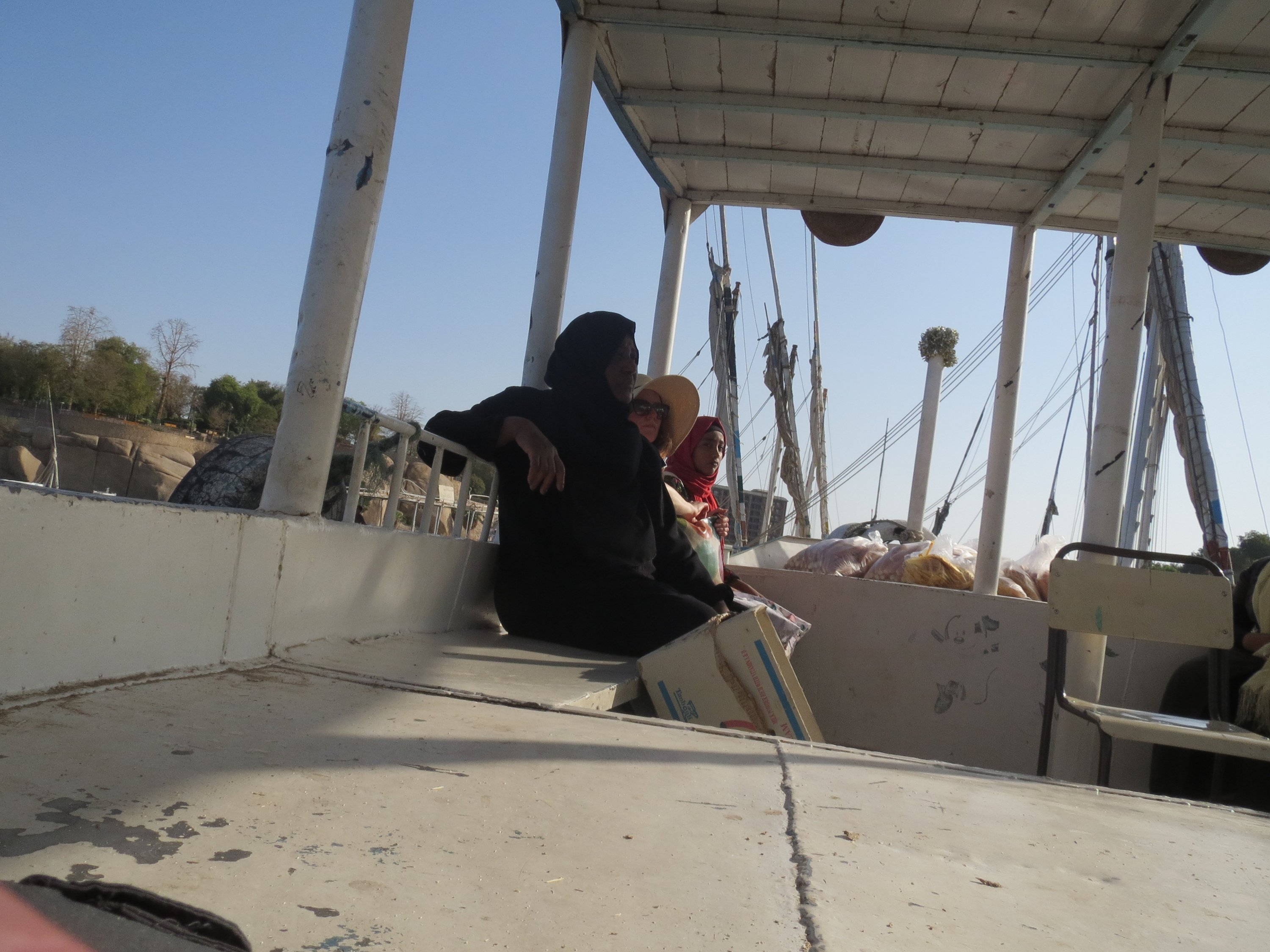
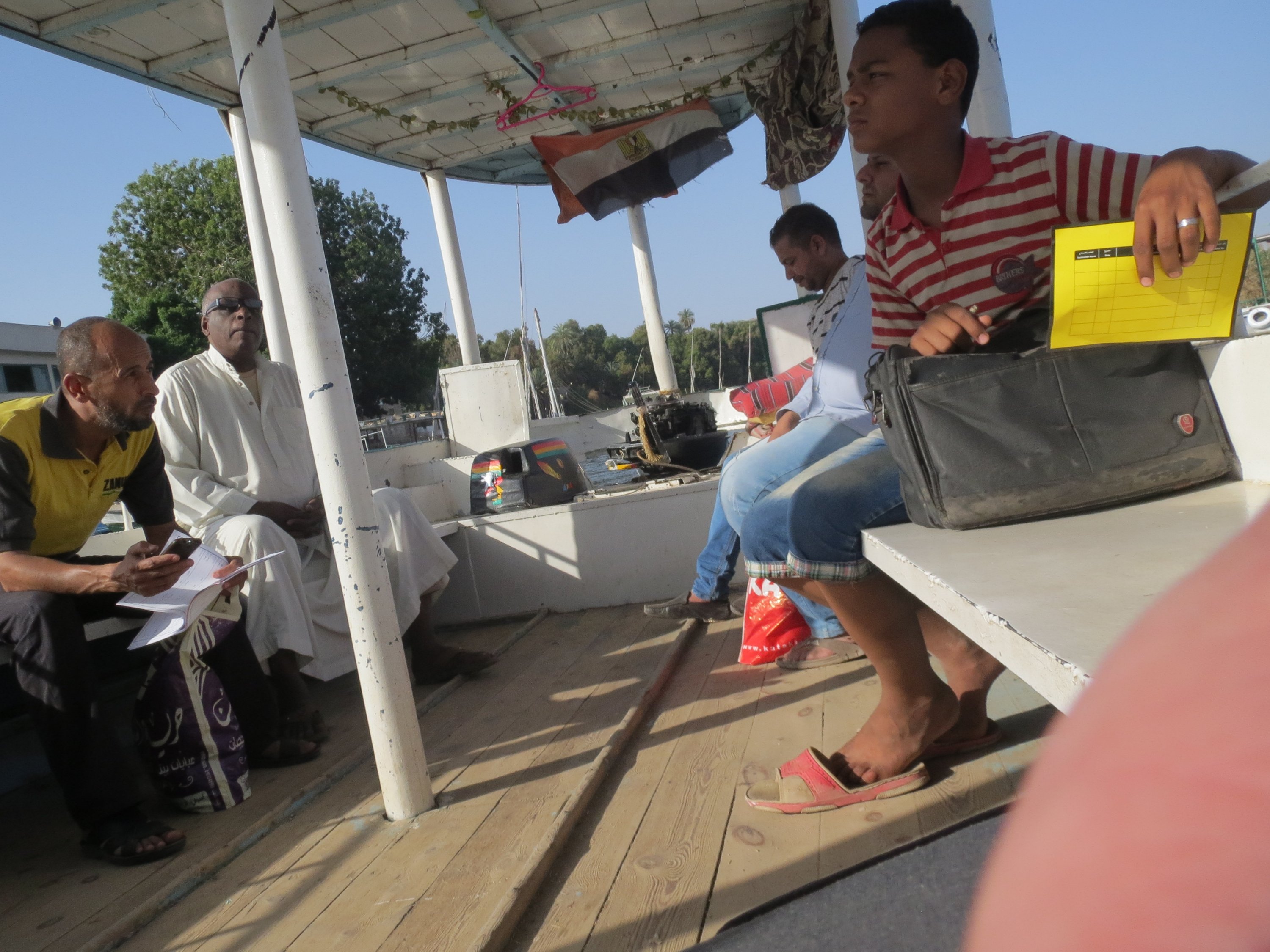
We took a walk to the south of the island which just takes a few minutes through the twisty maze of alleyways between fields and houses to reach the ruins of Abu a collection of temples and tombs dating back to 3000BC. There is also an interesting “Nilometer”, basically a staircase down into the river, with graduation marks on it to monitor the river depth. They used this as a way of gauging how prosperous the next harvest would be.
A donkey watches TV in an alleyway of one of the Nubian villages:
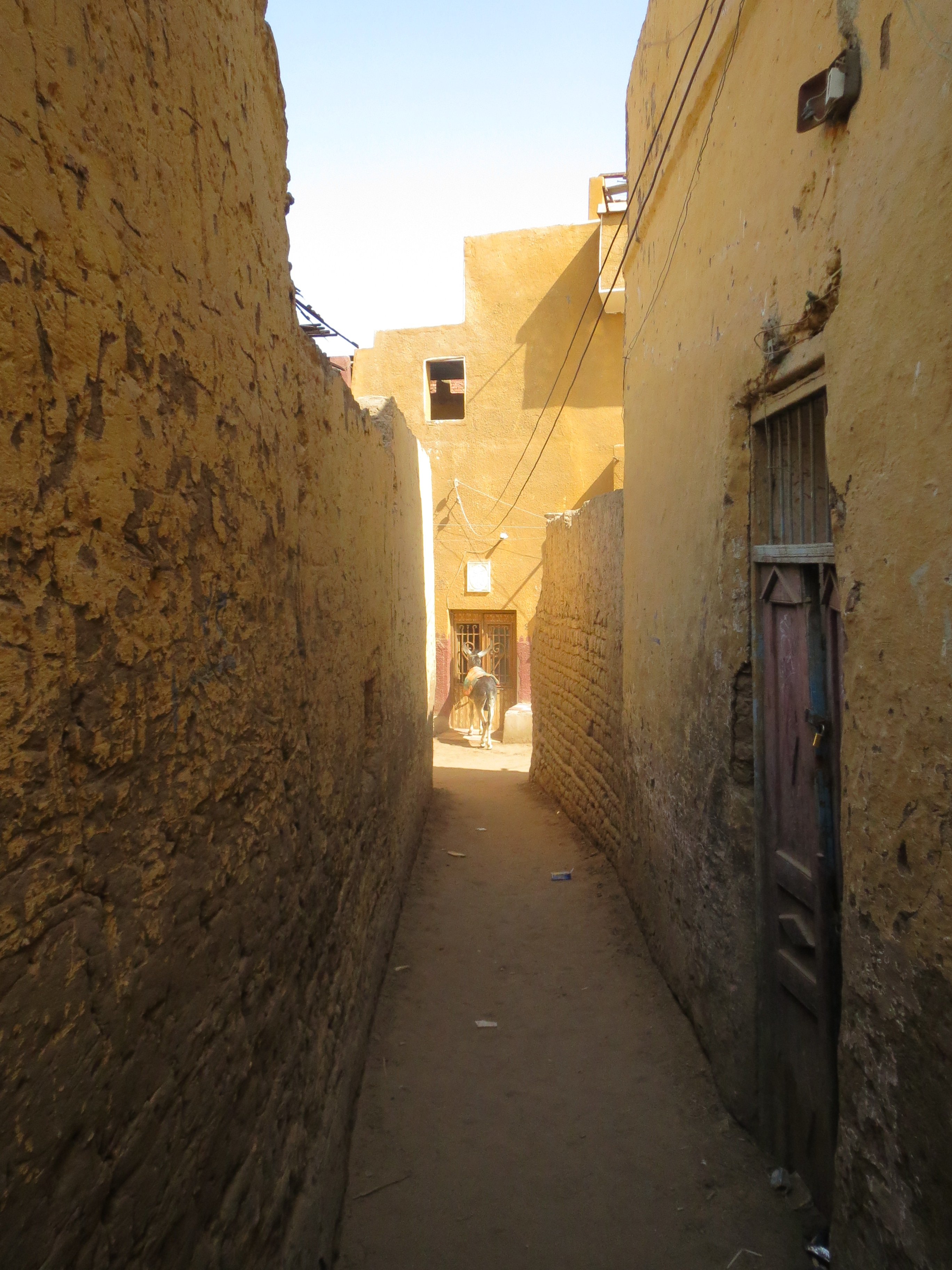
The Nilometer:
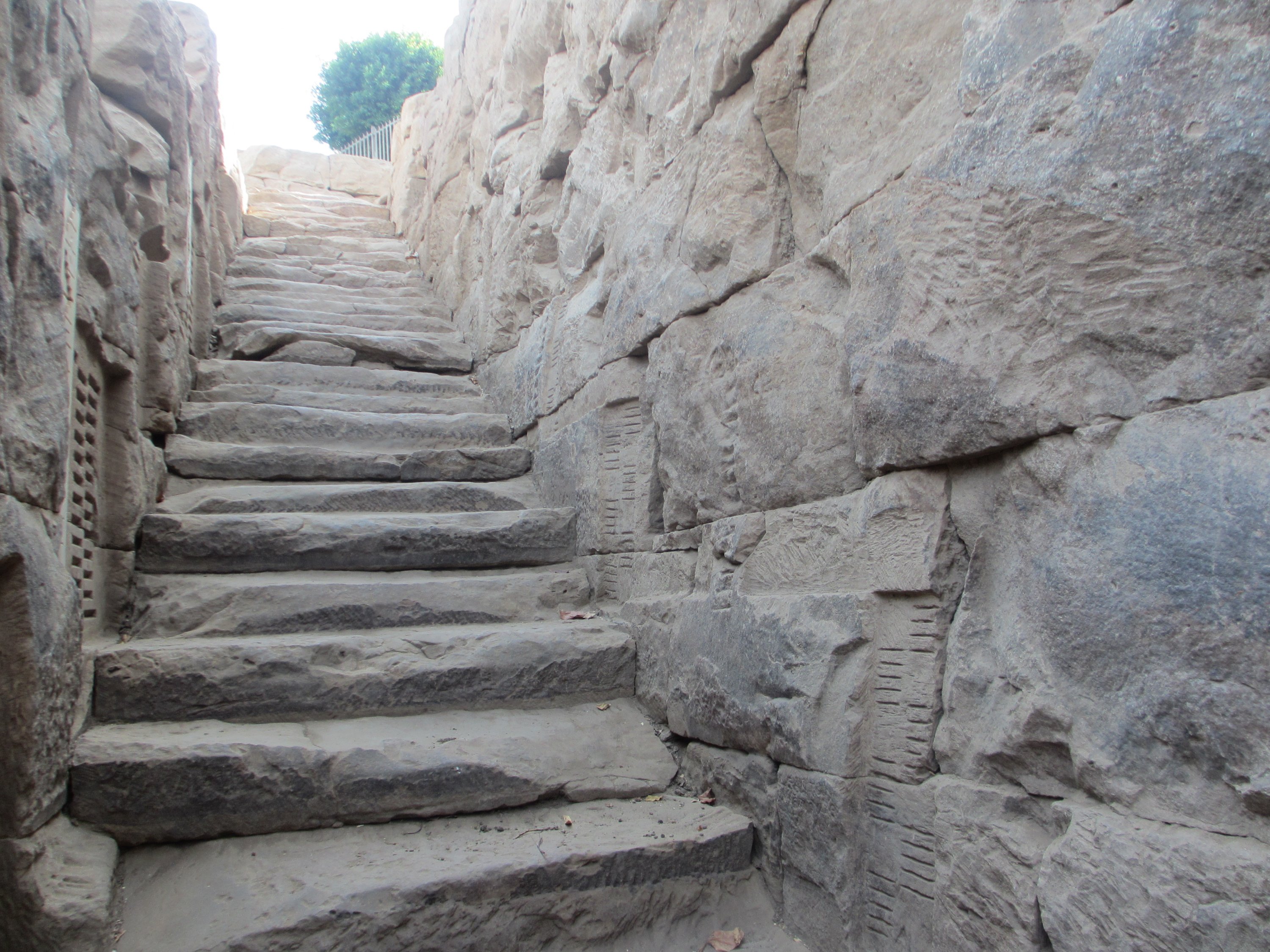
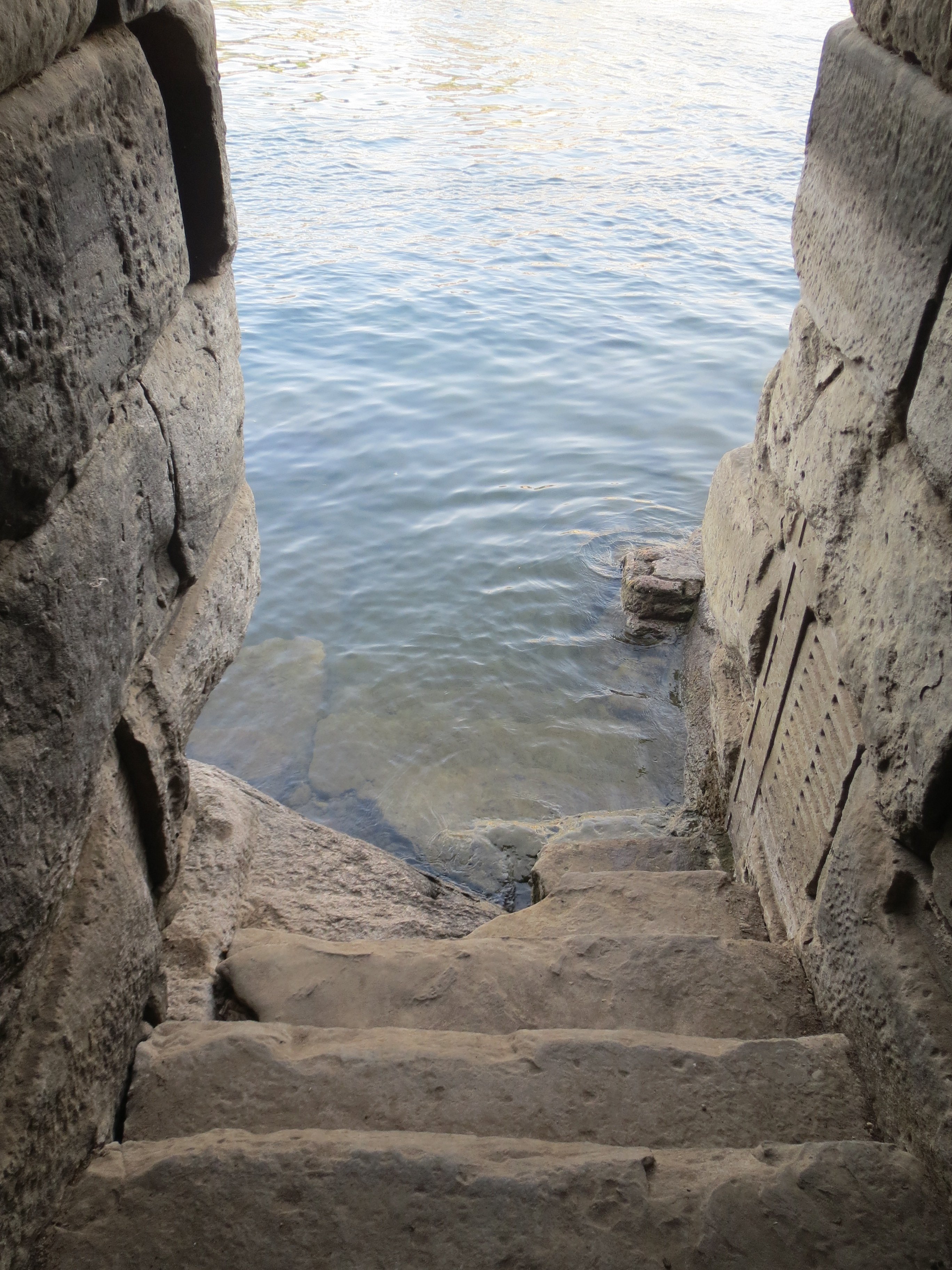
Looking towards Aswan from one of the temples:

This temple has been restored. They have rendered the missing bits of stone and have stencilled on how the hieroglyphics would have looked:
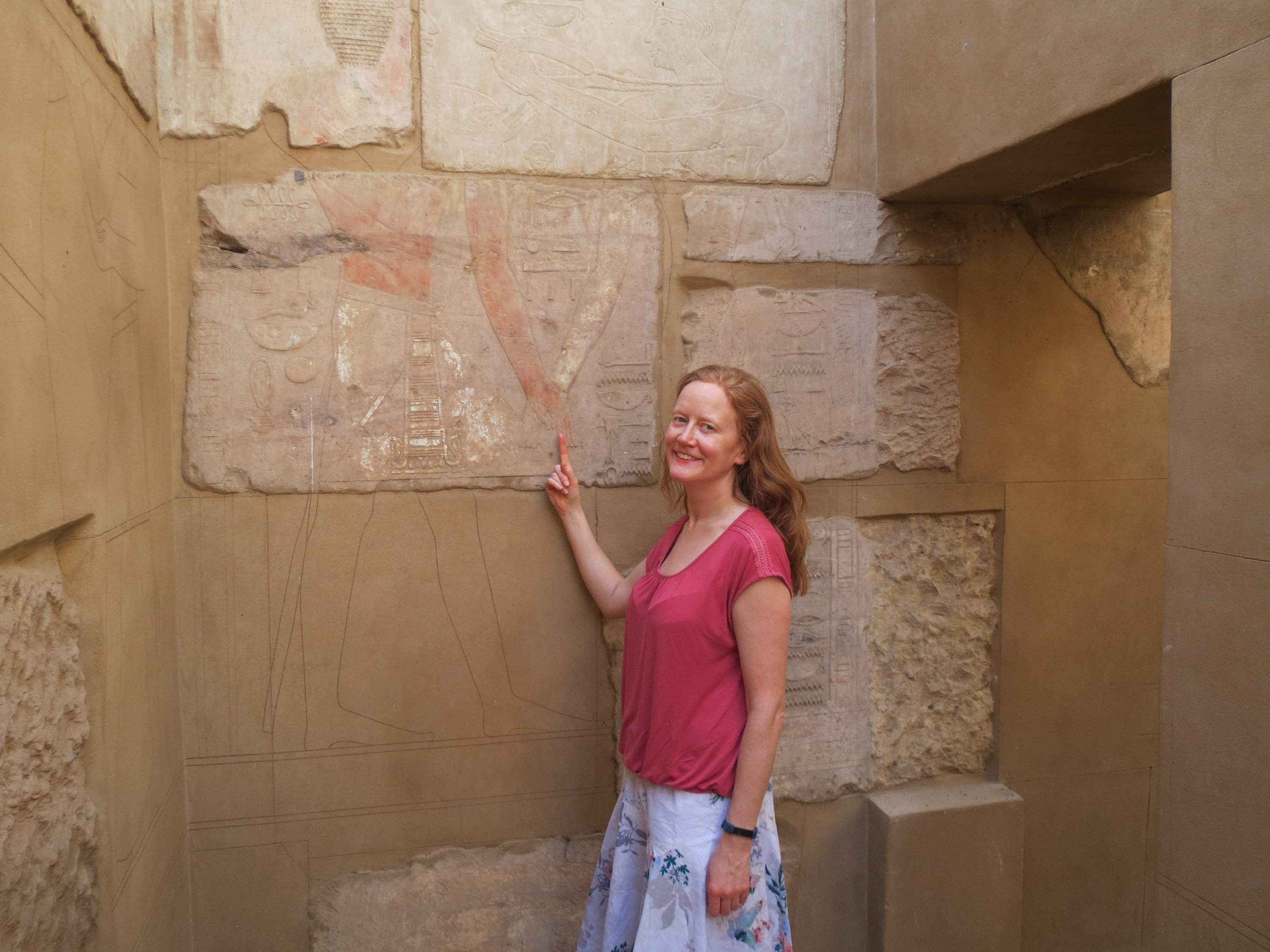
After Abu we took the other public ferry over to Aswan to find our felucca. Our captain was nowhere to be seen, despite him making us promise to him that we’d be back. In Egypt, once you shake on a deal, neither party must renege on it. Instead, another guy approached us with the “do you remember me?” scam, despite the fact we’d never met him. He tried to get us on his motor boat, but we didn’t fancy doing that really. Instead we tried to go for a drink in the Old Cataract Hotel of Agatha Christie fame but after looking us up and down they wanted E200 each to even go in there.
Instead we went back over to our island and found a strange “crocodile house”, a restaurant come heritage centre, filled with artefacts collected by some Brit who used to live here, for a fish feast:
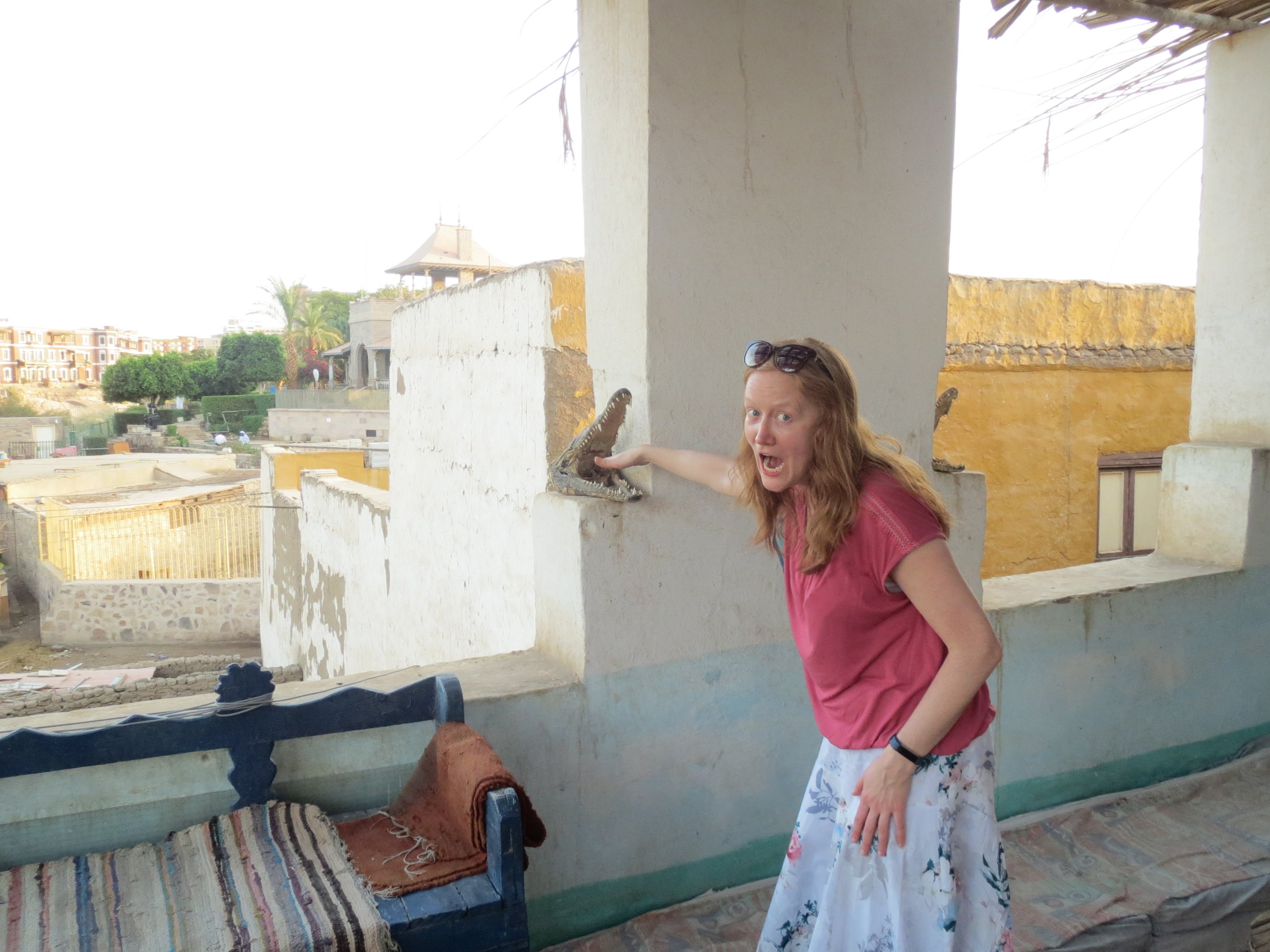
Next day we opted for a car with driver to take us out to the boat landing which takes you over to Philae Temple on Agilika Island, just up river from the Aswan old dam. It was relocated here after it was submerged for much of the year due to the dams.
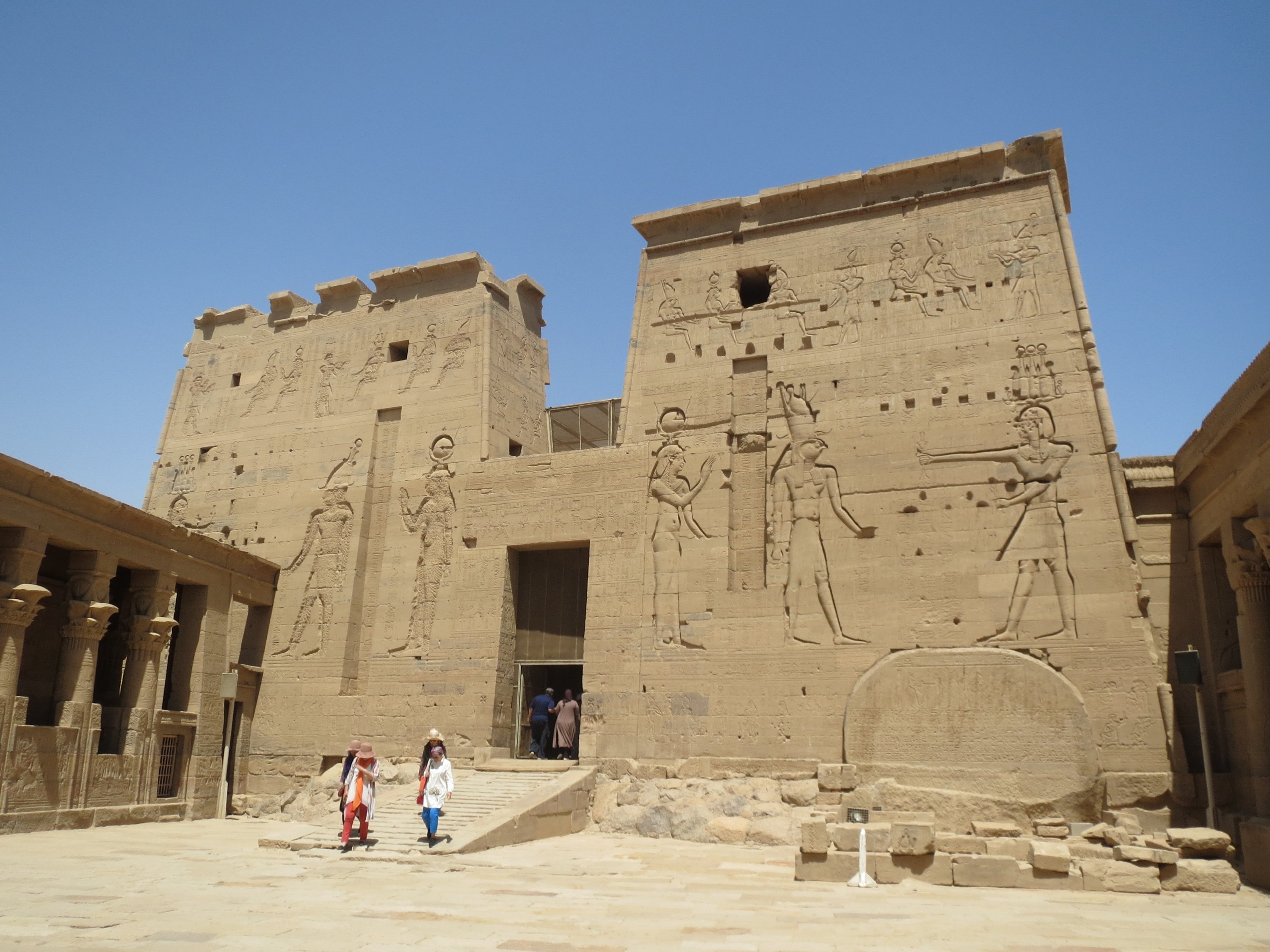
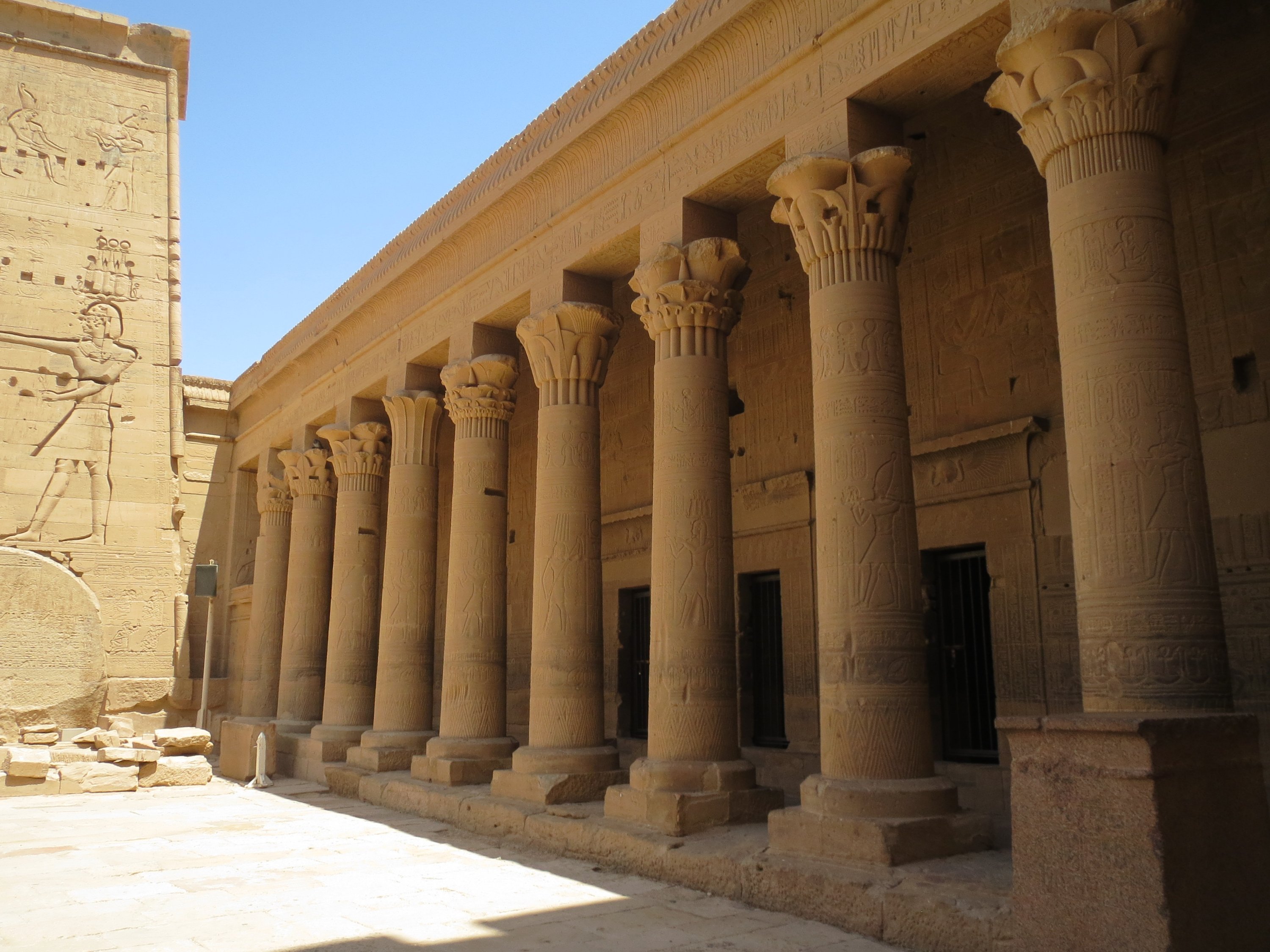
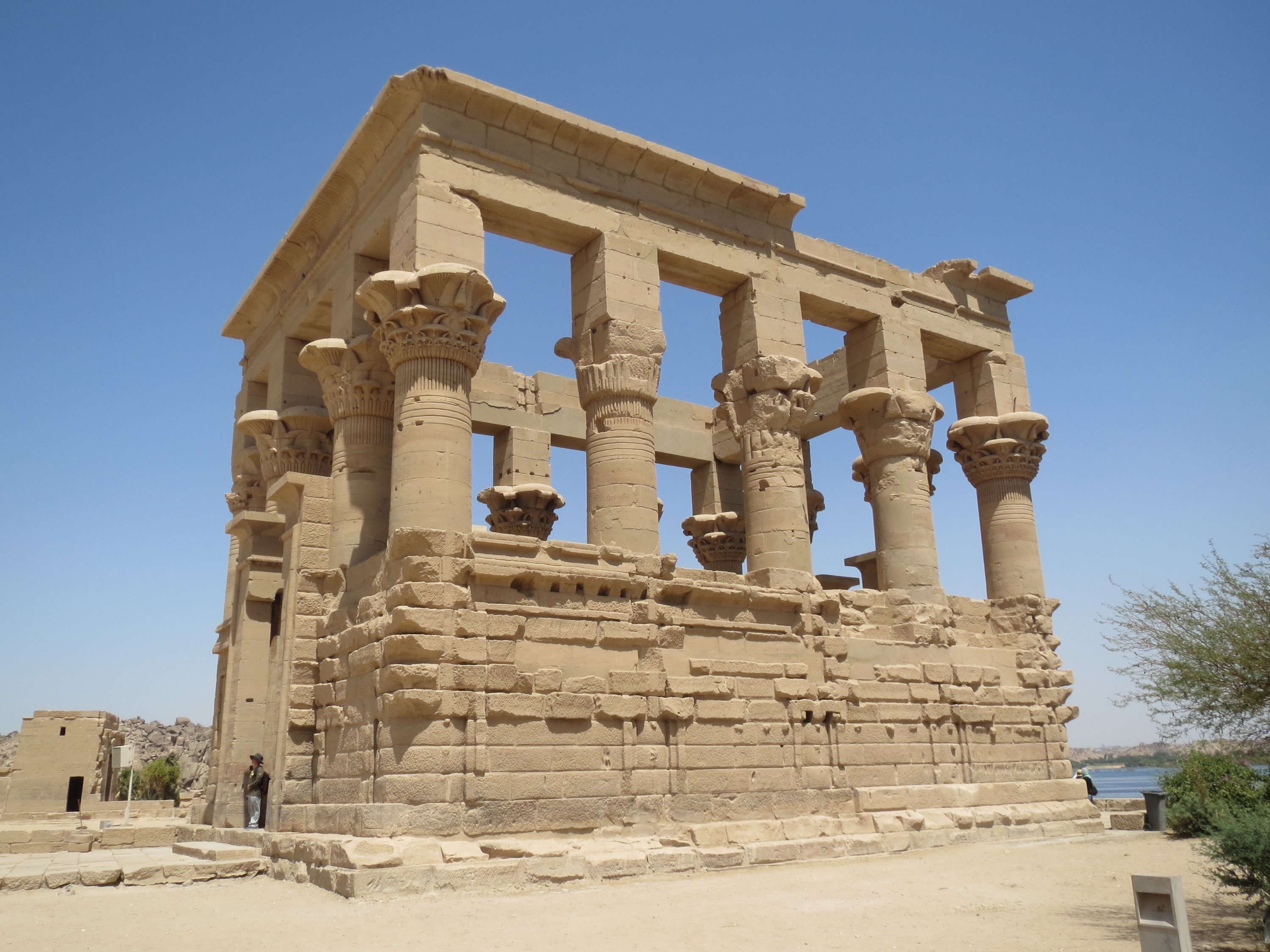
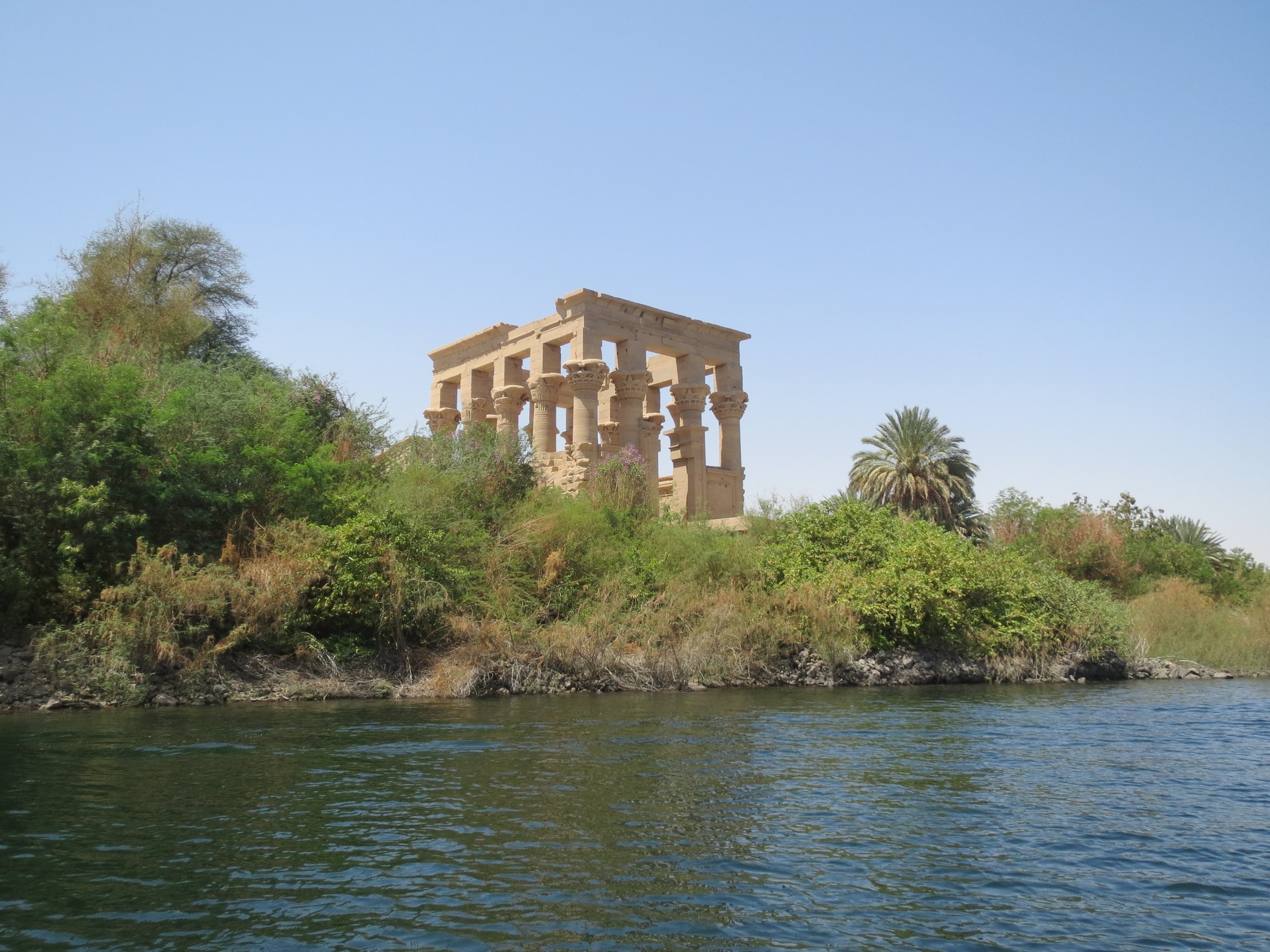
After this we stopped off at the Unfinished Obelisk which would’ve been the biggest ever created. Unfortunately, just before they were about to start inscribing it, it cracked and they had to abandon it. It lies here ever since:
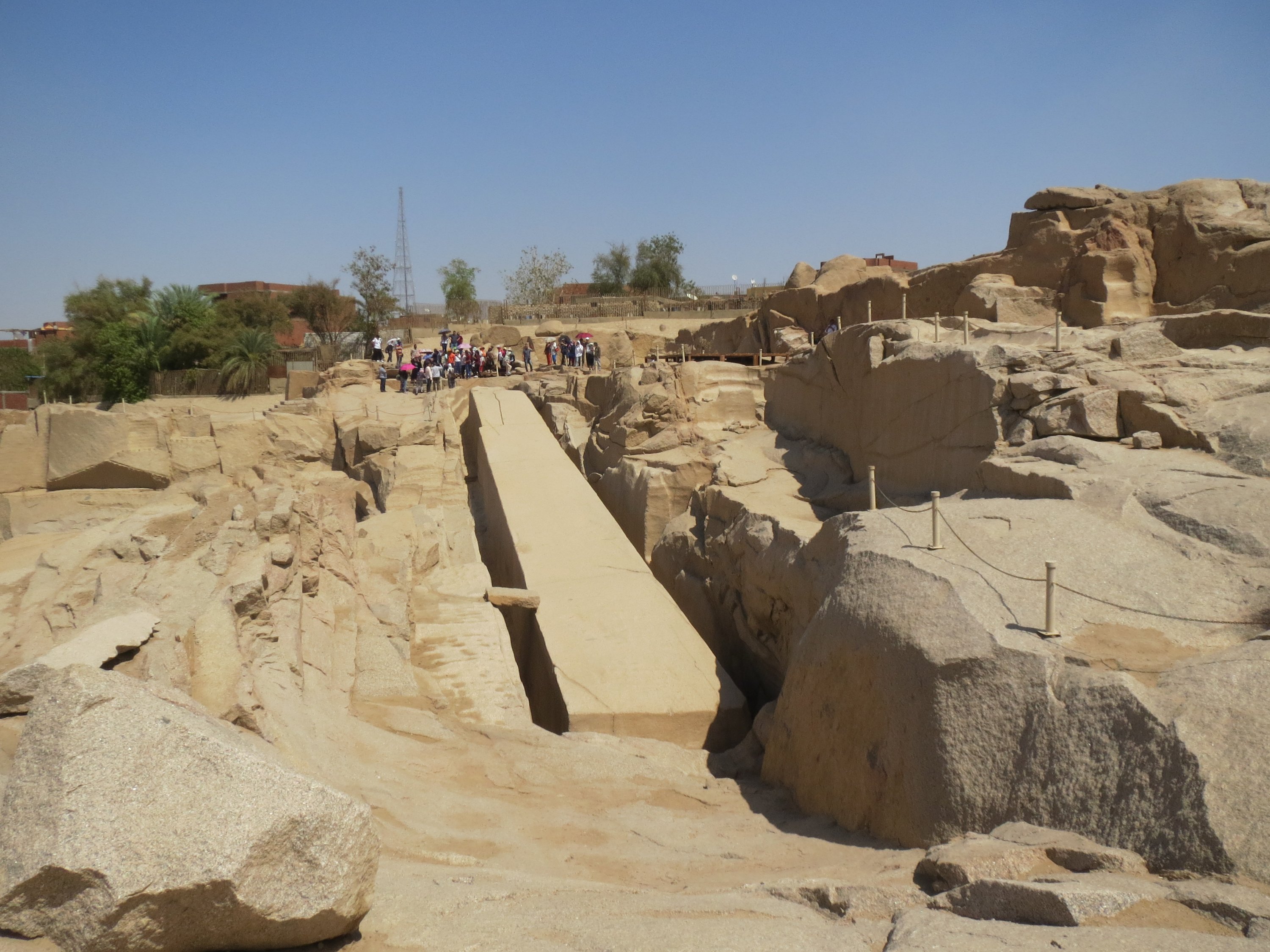
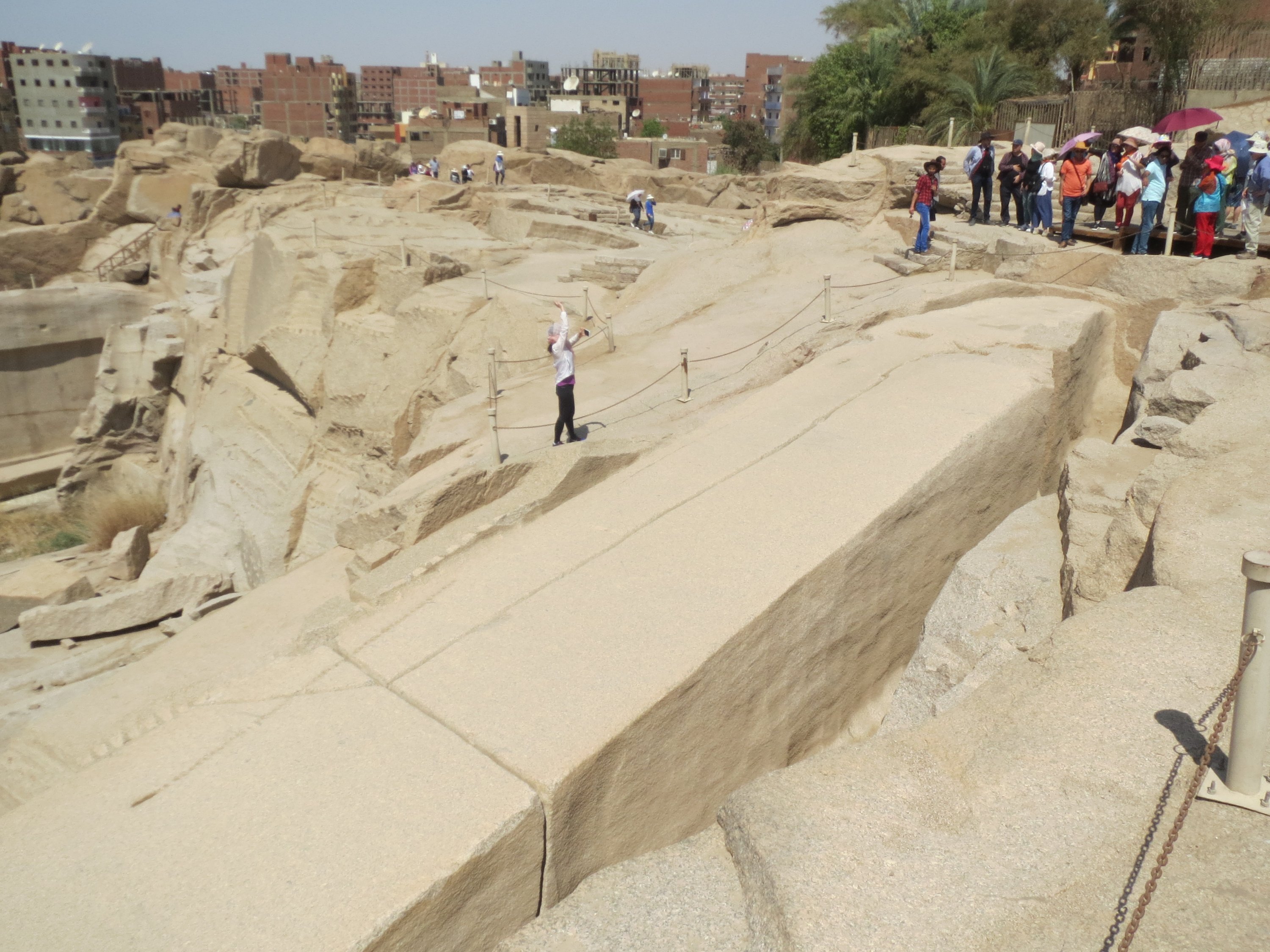
On the way back we stopped for a well needed beer on a riverside pontoon bar and found a new felucca captain to charter. He and his mate took us around for an hour but there was very little wind, so they ended up rowing it with a couple of the bench seats they removed from it, whilst Captain Matt took the helm. They complimented me on my navigation skills, telling me I must have done it before (I have)
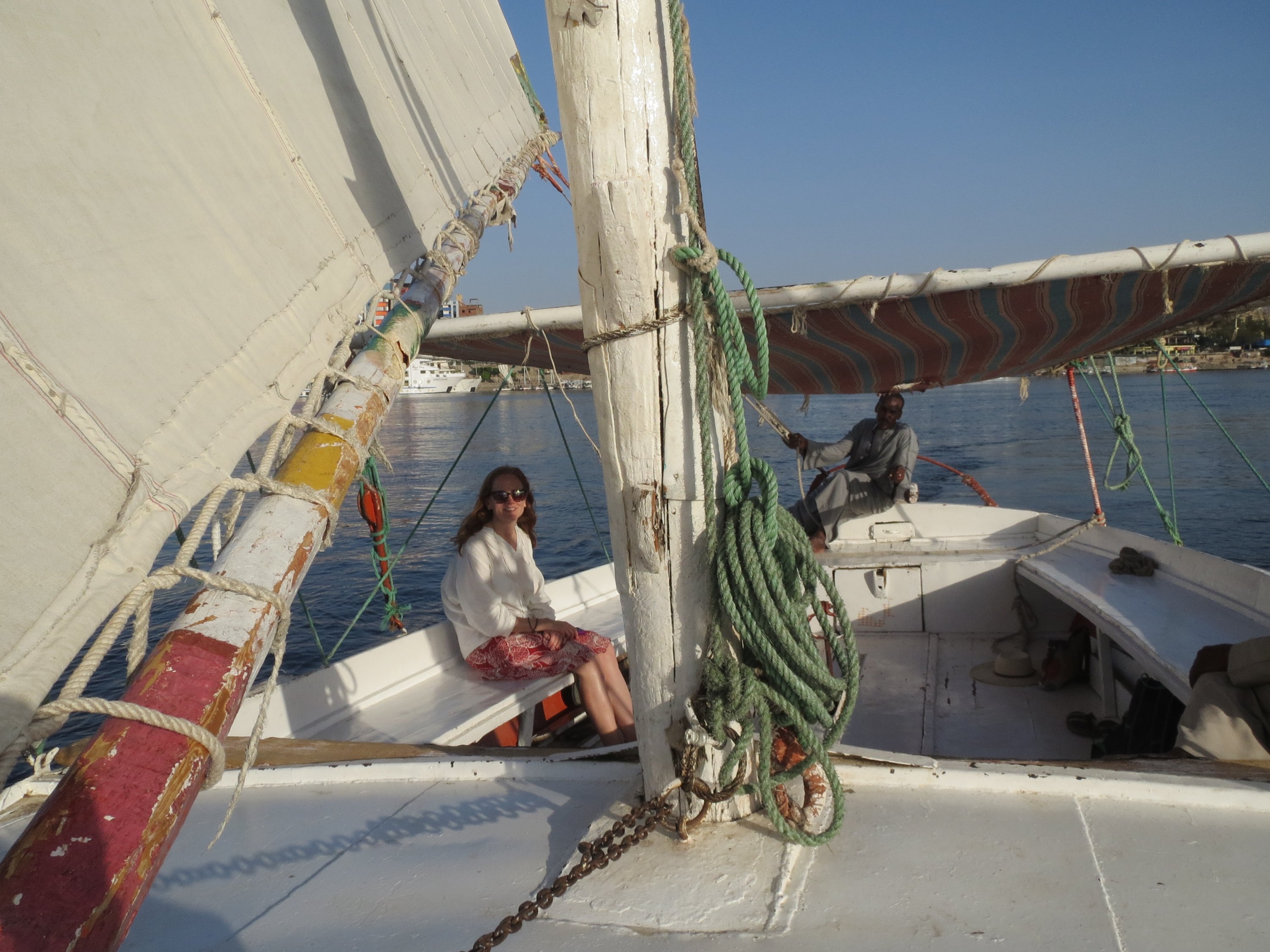
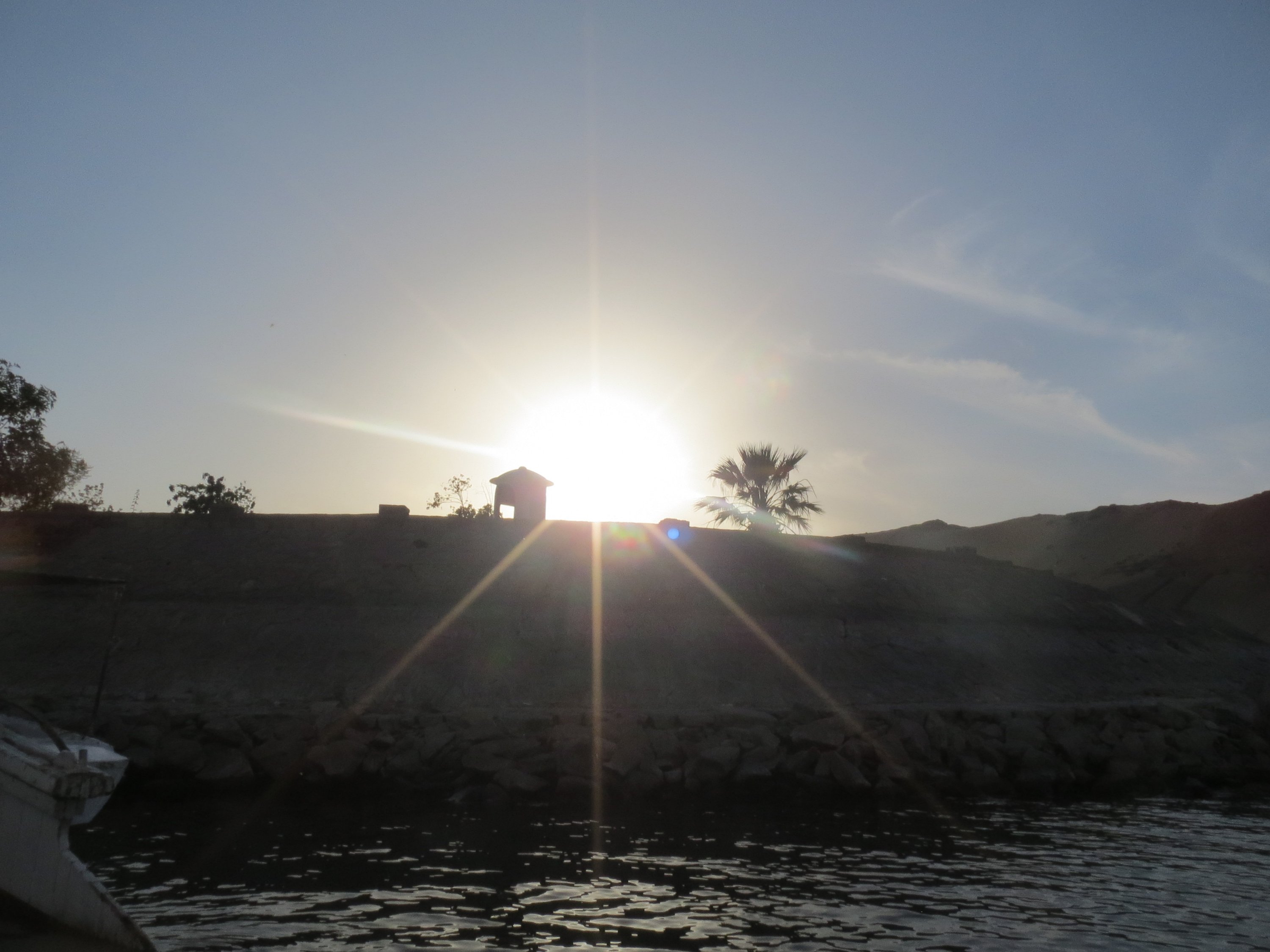
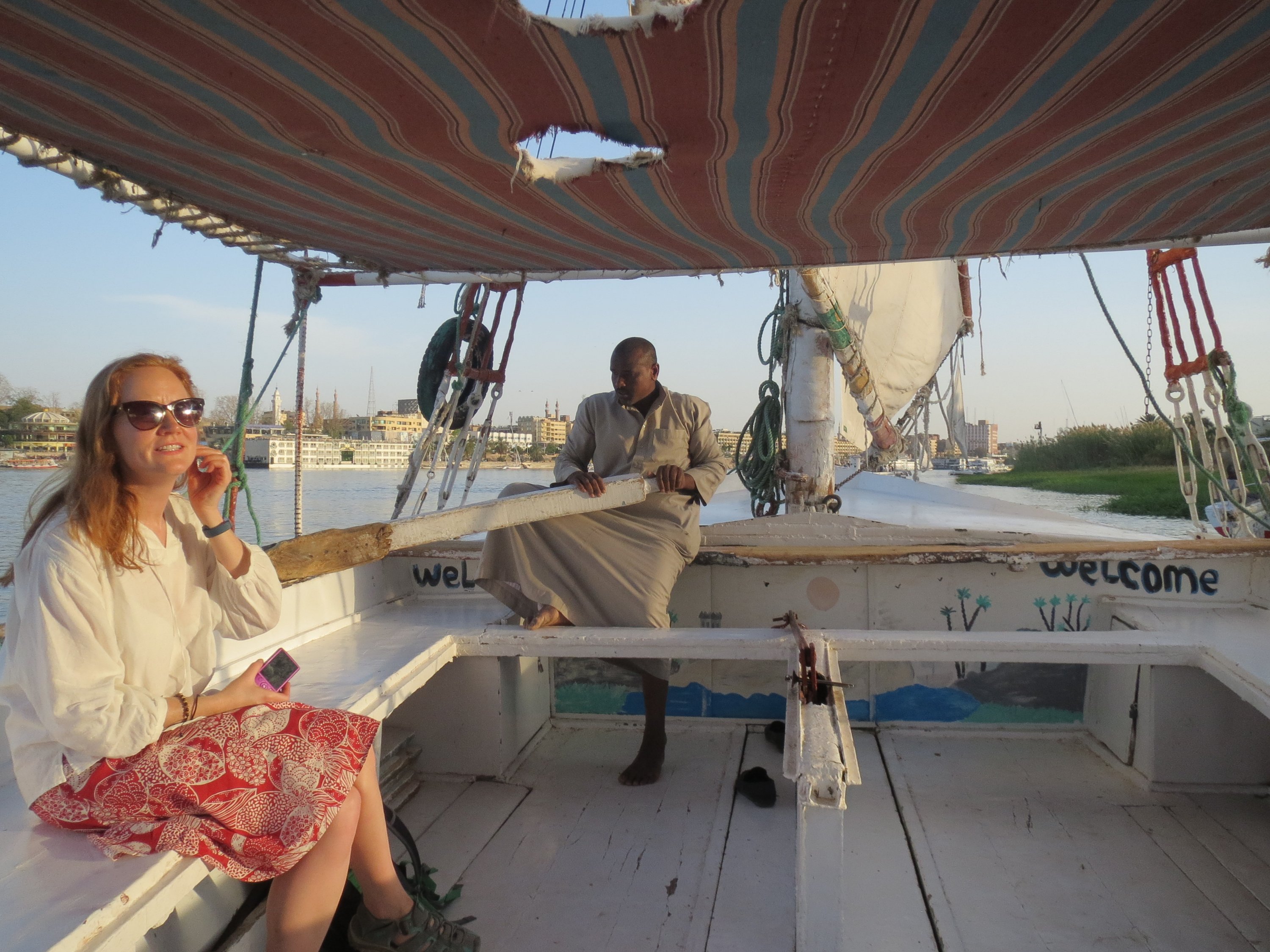
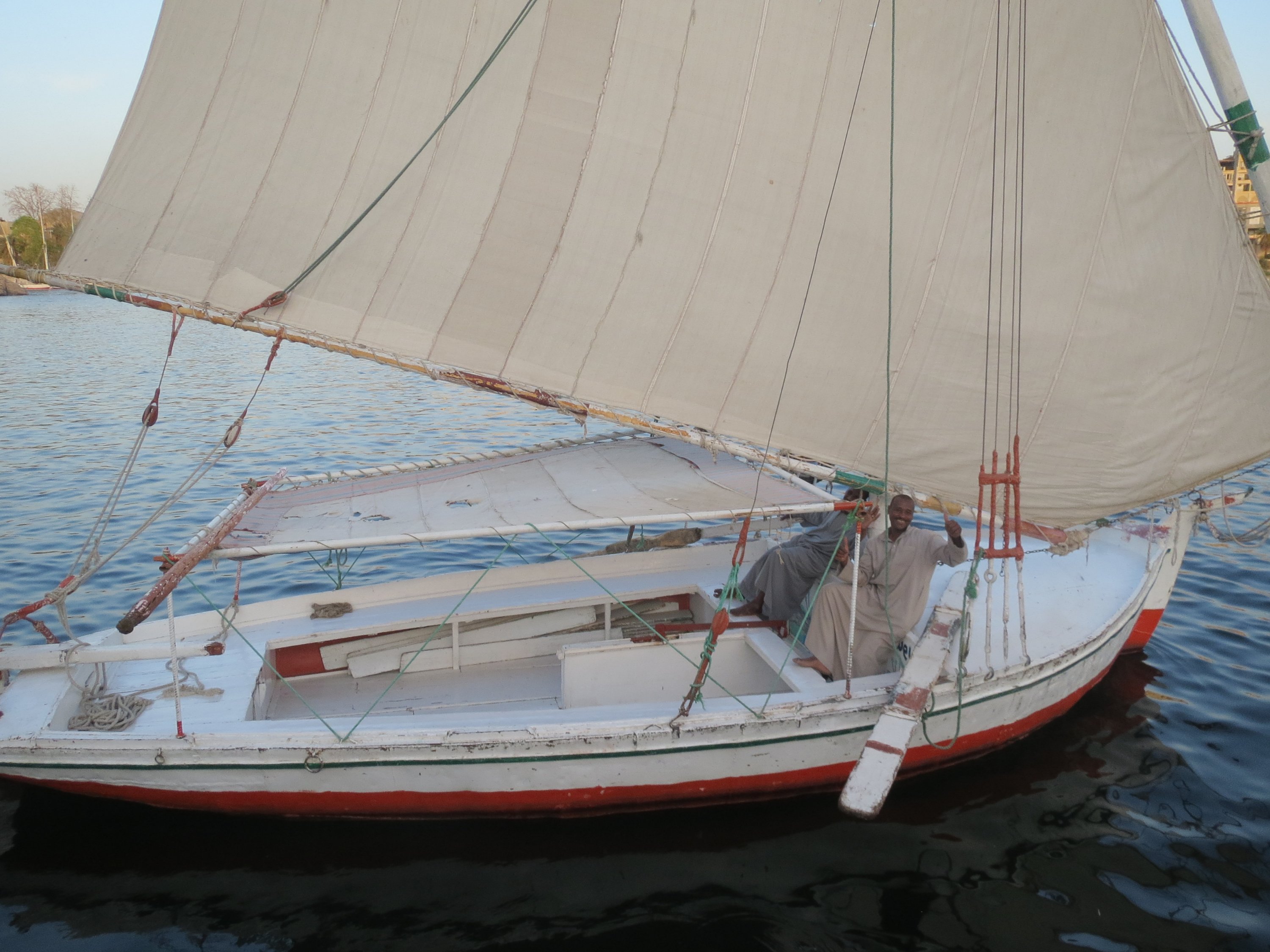
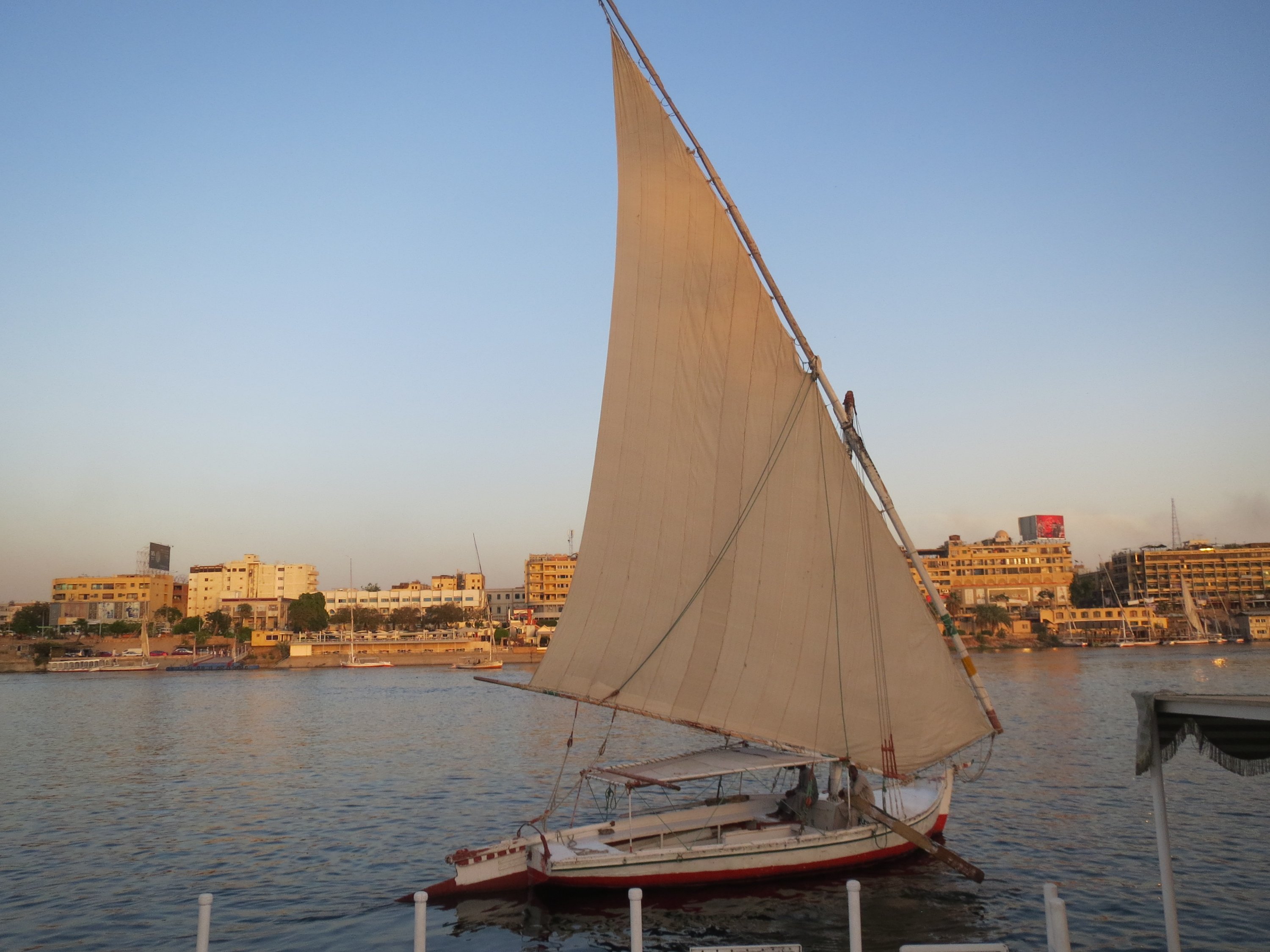
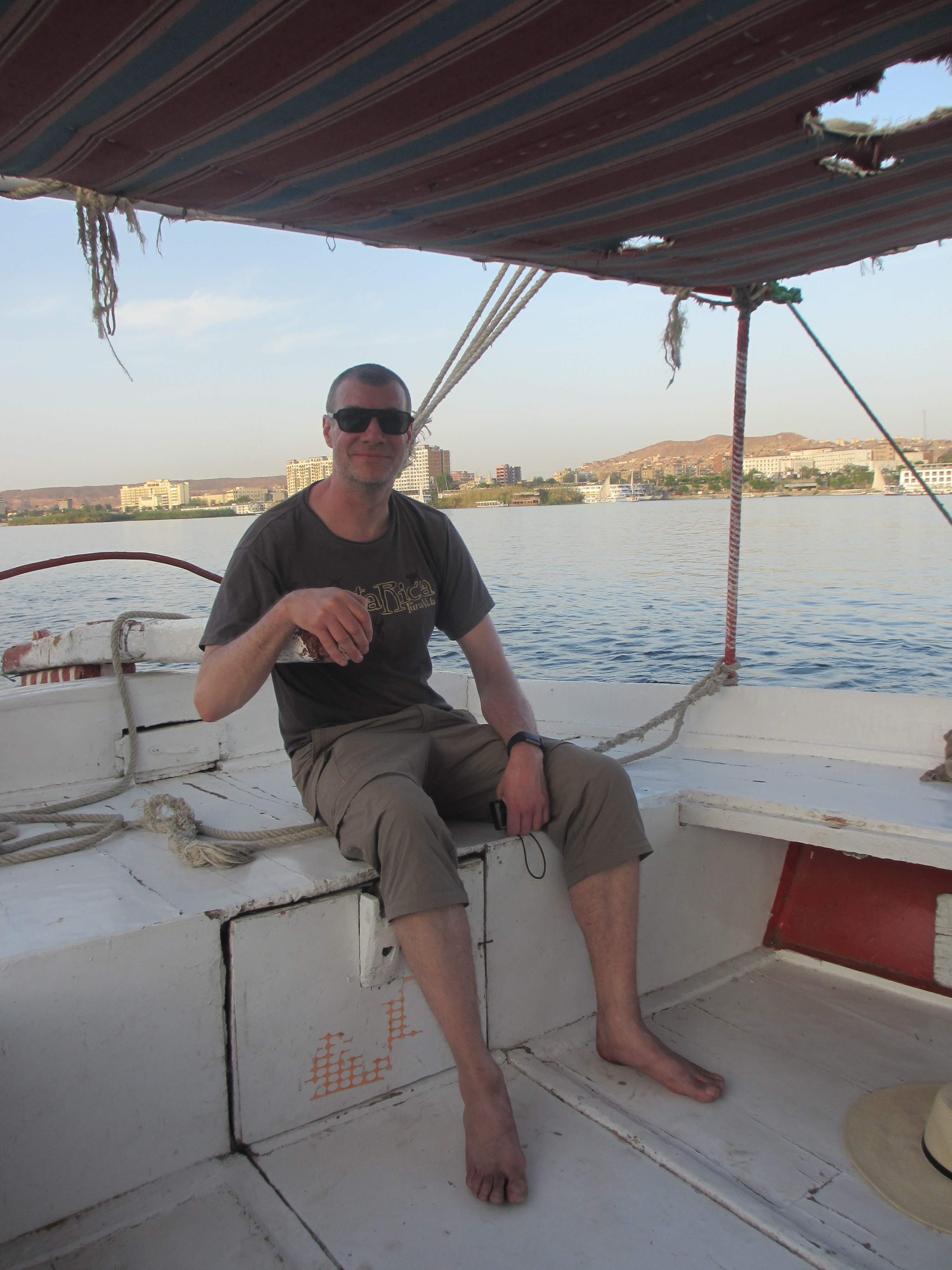
After all that excitement, why not enjoy a cocktail in the observation bar in a weird 5-star resort on our island:
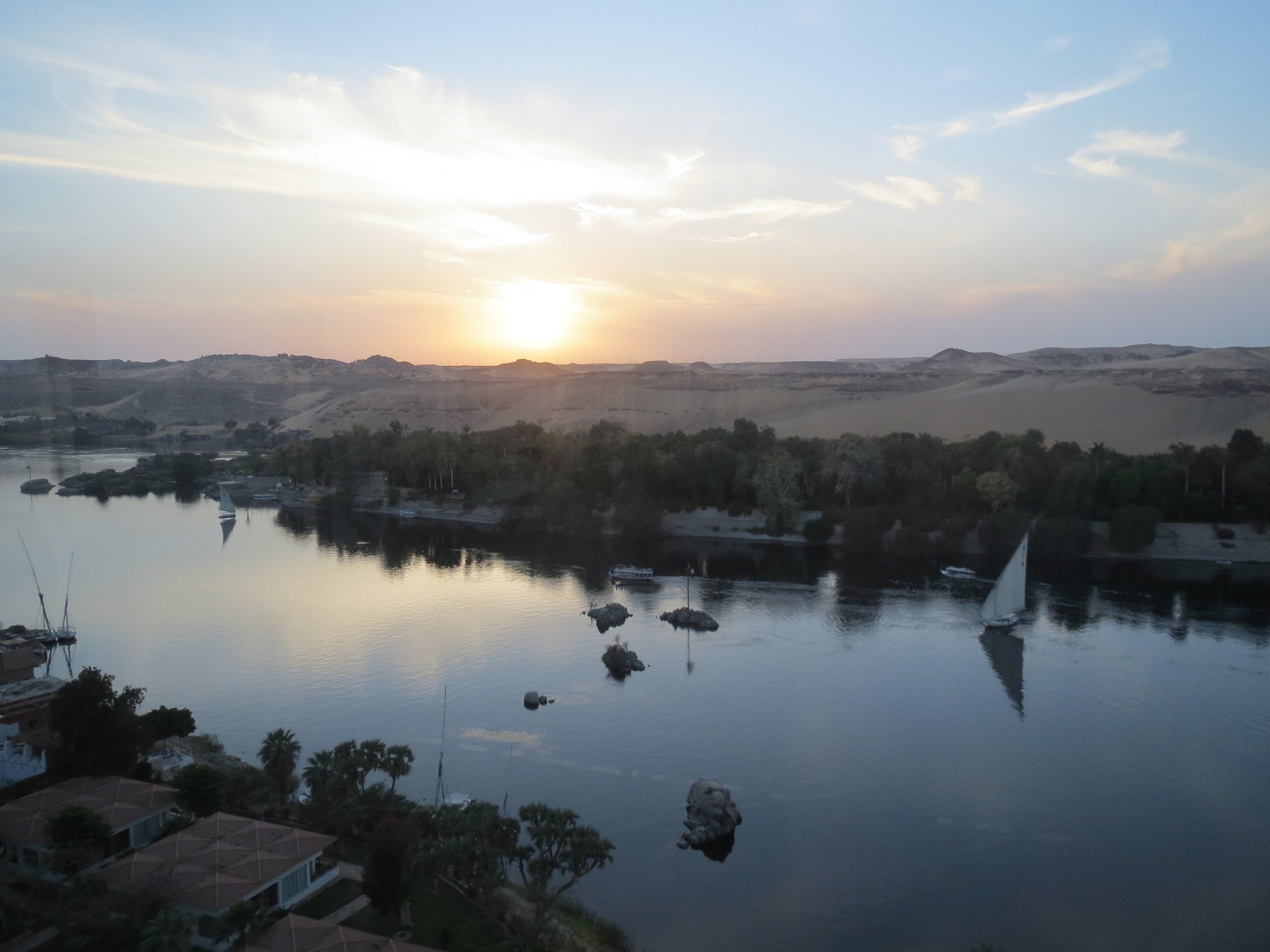
At a “souq” (market place) a donkey delivers a shipment of Egyptian carpet:
Next day, with a slightly heavy heart, we had to leave Aswan and head downriver to Luxor. As we waited for our ferry at the ungodly hour of 6am, who was waiting there but our original felucca captain, who sheepishly admitted he’d found another fare and blown us out. Shame on him!
We tried to arrange a shared taxi of some kind to visit some temples en route, but no luck so we took the train instead. This is a day train which foreigners are not allowed to use and they will not sell you a ticket for. It’s a well known trick that you just board the train anyway and buy a ticket from the conductor. Answers on a postcard please…
Just for fun:
Cairo!
Determined not to be ripped off by a taxi driver, we went for the local bus option to get from the airport to downtown and hopefully near to our hotel. This has to be the cheapest airport transfer ever at just 10p, helped by the kind bloke next to me who rode with one of our suitcases on his lap as the bus was packed. There’s no hope of the conductor moving through the bus to sell you a ticket, instead when it appears to be your turn, you pass your bank note forwards from person to person. Moments later, back are passed two tickets and your change!
This was early in the journey, it got much busier later:
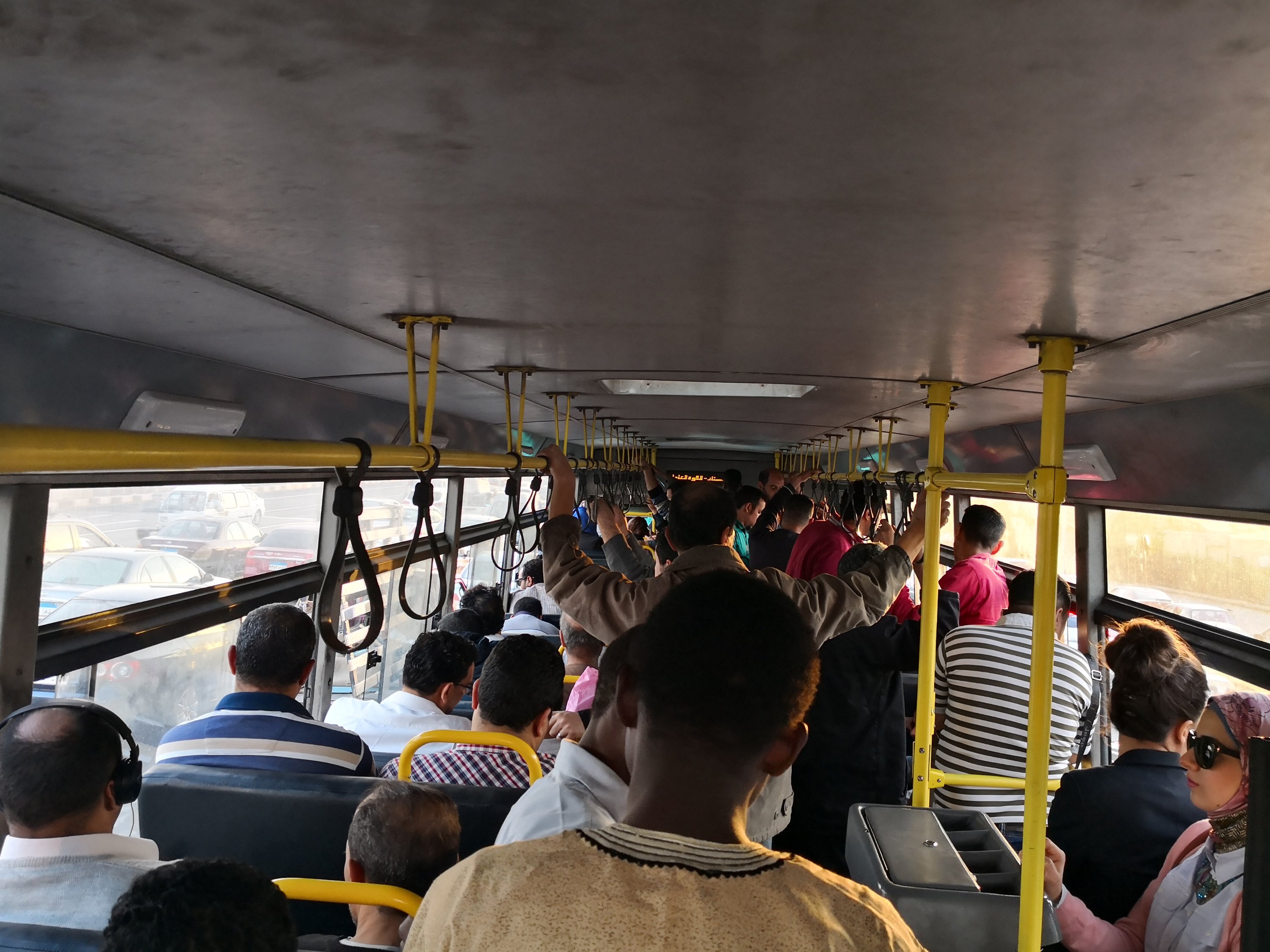
As expected, the traffic in Cairo is insane, though in the hour or so we were on the bus, only one car crashed into us. The door was open the whole time as people were jumping on and off, allowing the smog to fully penetrate our luggage, clothes and lungs etc. We got into conversation with a few of the locals, I don’t think it’s too common for tourists to be on a bus like that, including an ex-serviceman who seemed to have a load of shirts with him, available to buy. I didn’t buy any…
We got to our downtown pension which is a wonderful old colonial building with one of those shaky old lifts to get you up there. The room was blissfully quiet as it looked out into some kind of courtyard as opposed to the constant traffic and horns of the street.
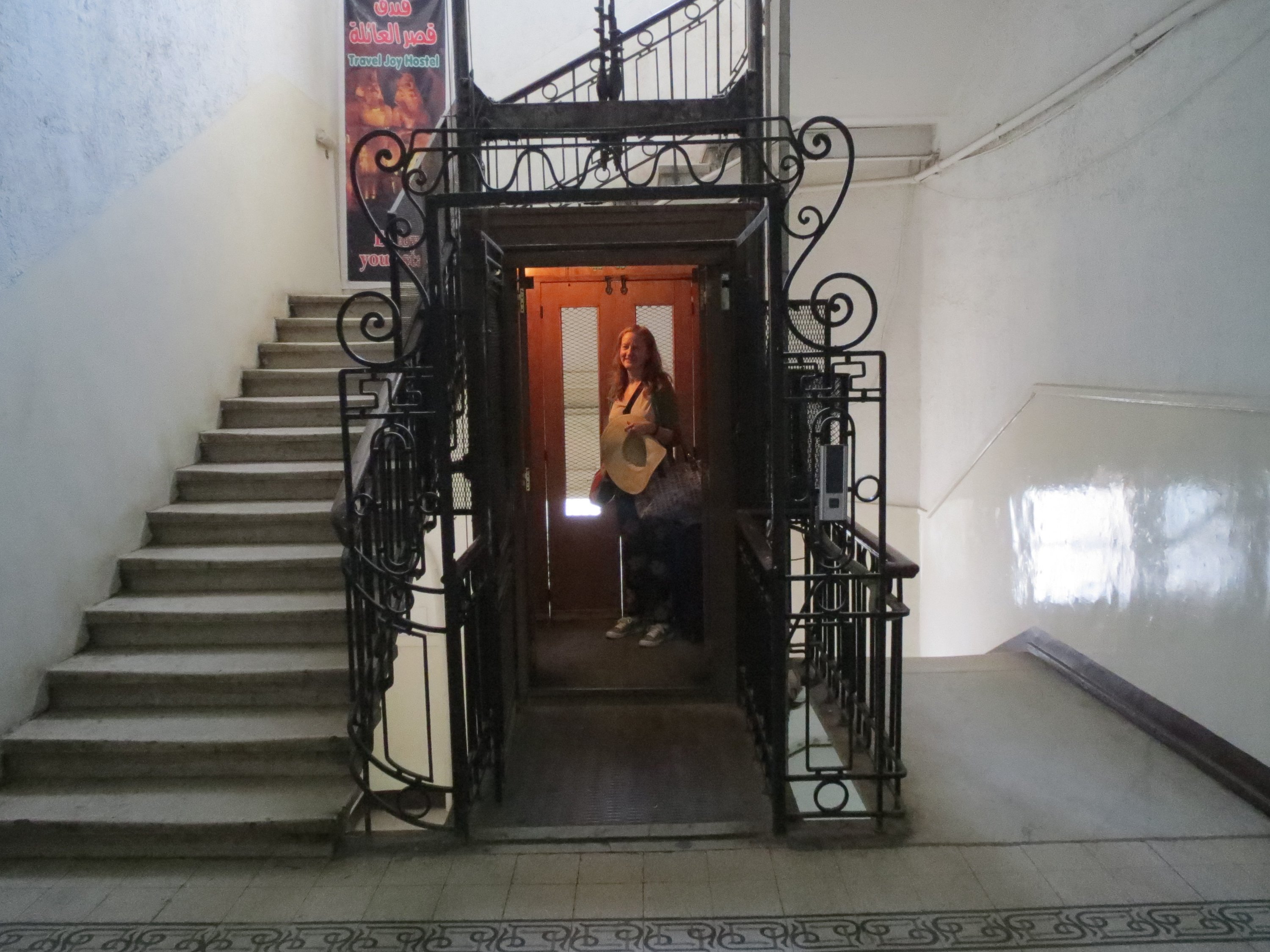
Next day we chartered Mohammed and his car for the day to take us wherever we wanted to go, as most places are at least very difficult if not impossible to reach by public transport. First stop was the pyramids at Giza, which were relatively quiet at the time of day we got there. I’d read that this is the most traumatic place to visit for most people in Egypt due to the hassle factor from people touting everything from wooden Buddhas to rides on their malnutritioned looking camels and horses, and we were pestered probably on average every couple of minutes or so, but they were fairly easily deflected really. Instead we went on foot around the two main pyramids and the Sphinx. The ticket for the site was 120 Egyptian pounds which is under £5 since the government let their currency float a year or two ago and the exchange rate changed from around 10 to 1 to 25 to 1 almost overnight.
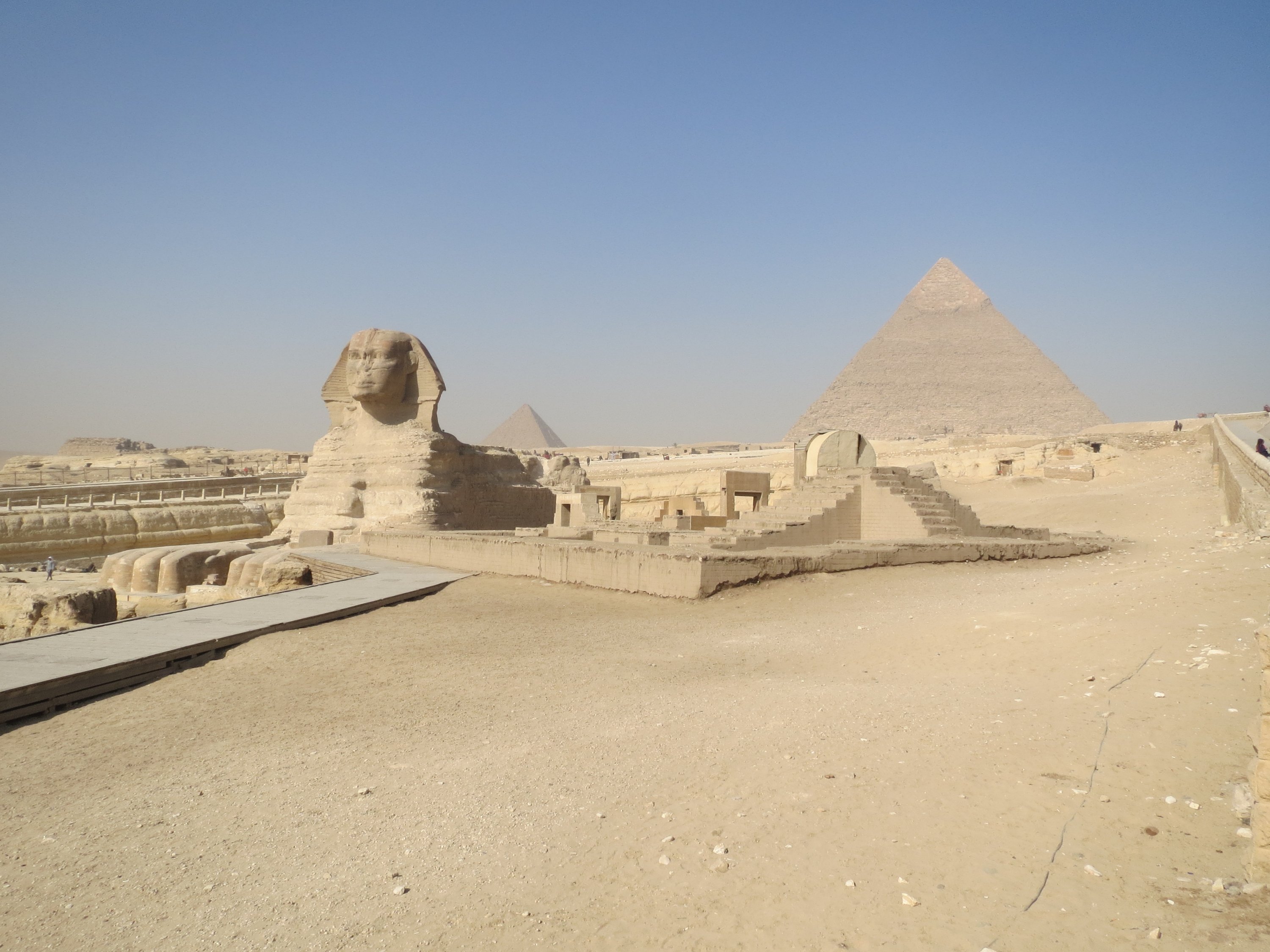
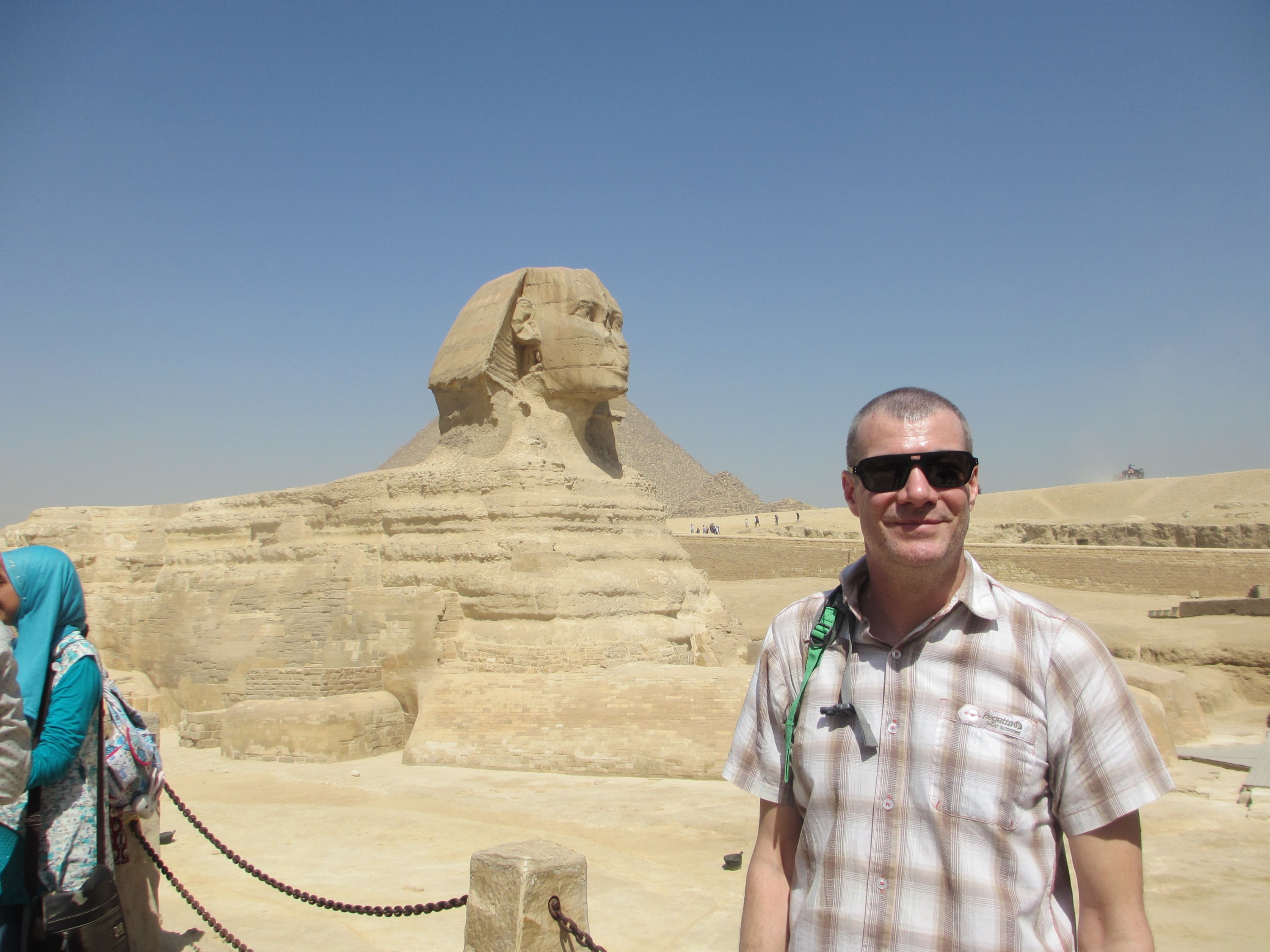
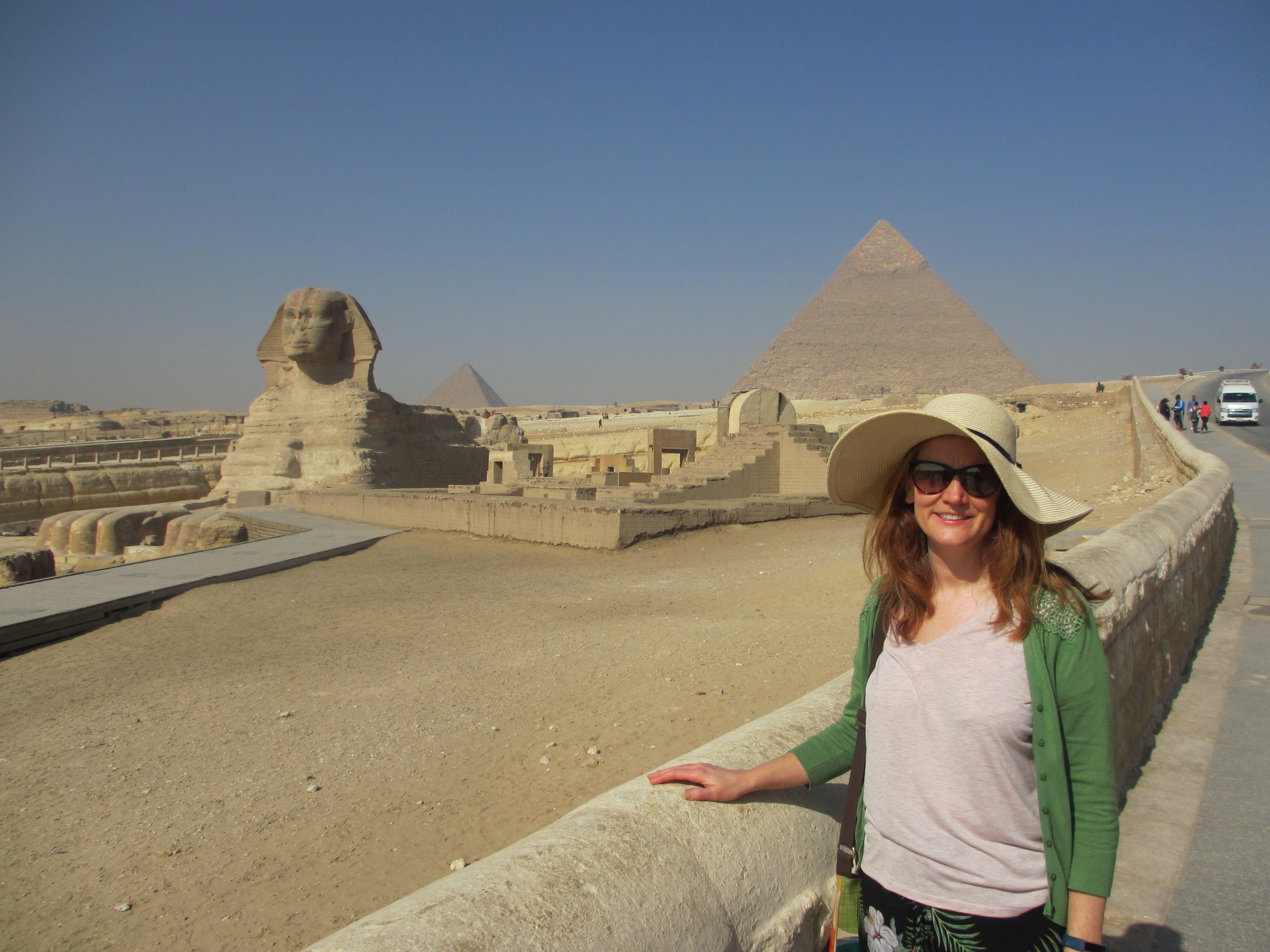
For an extra E300 you can go inside the Great Pyramid which we opted to do. In true Egyptian efficiency style, I had to leave the area, go back to a ticket office, queue at the Great Pyramid window, next to the general area ticket window where the tour bus crowd were starting to queue up at by now (they would have to queue twice if they wanted a Great Pyramid ticket too) and reenter the airport style security area to get back in. You crouch and semi-crawl up a steep tunnel to get to the King’s Chamber about 8 by 5 metres, which is plain apart from an empty sarcophagus. They think the place was ransacked at least 600 years ago and they’ve no idea what happened to the bodies. At E300 for this, compared to the E120 for general entrance, this is definitely what you’d consider a rip off, but then perhaps they put the money towards further excavation and exploration.
They take your camera off you at the entrance to the pyramid, but they don’t take your phone. Probably just an excuse for the guard to get some “baksheesh” in the form of a few Egyptian pounds. This is Lisa descending the shaft with a few million tons of stone above her:
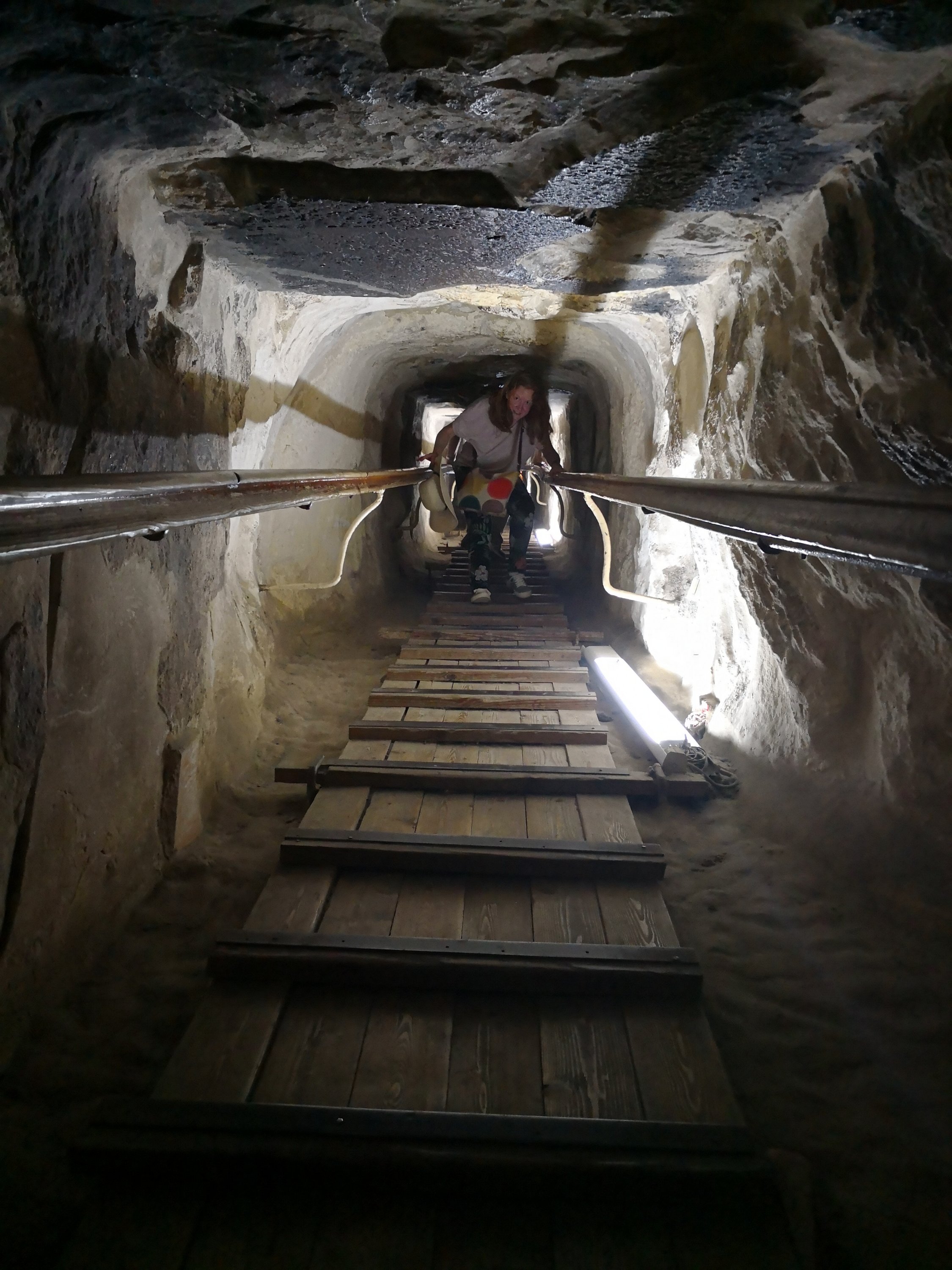
Then we drove off to Saqqara, about 10 km further south and very much out in the desert, which is the home of the world’s oldest pyramid and indeed stone structure in the world, the Step Pyramid of Zoser. This dates from 2650 BC whereas Giza is 80 years or so younger than that. It’s in very real and imminent danger of collapse since an earthquake and a couple of botched restoration attempts, so it might turn out to be lucky we saw it when we did!
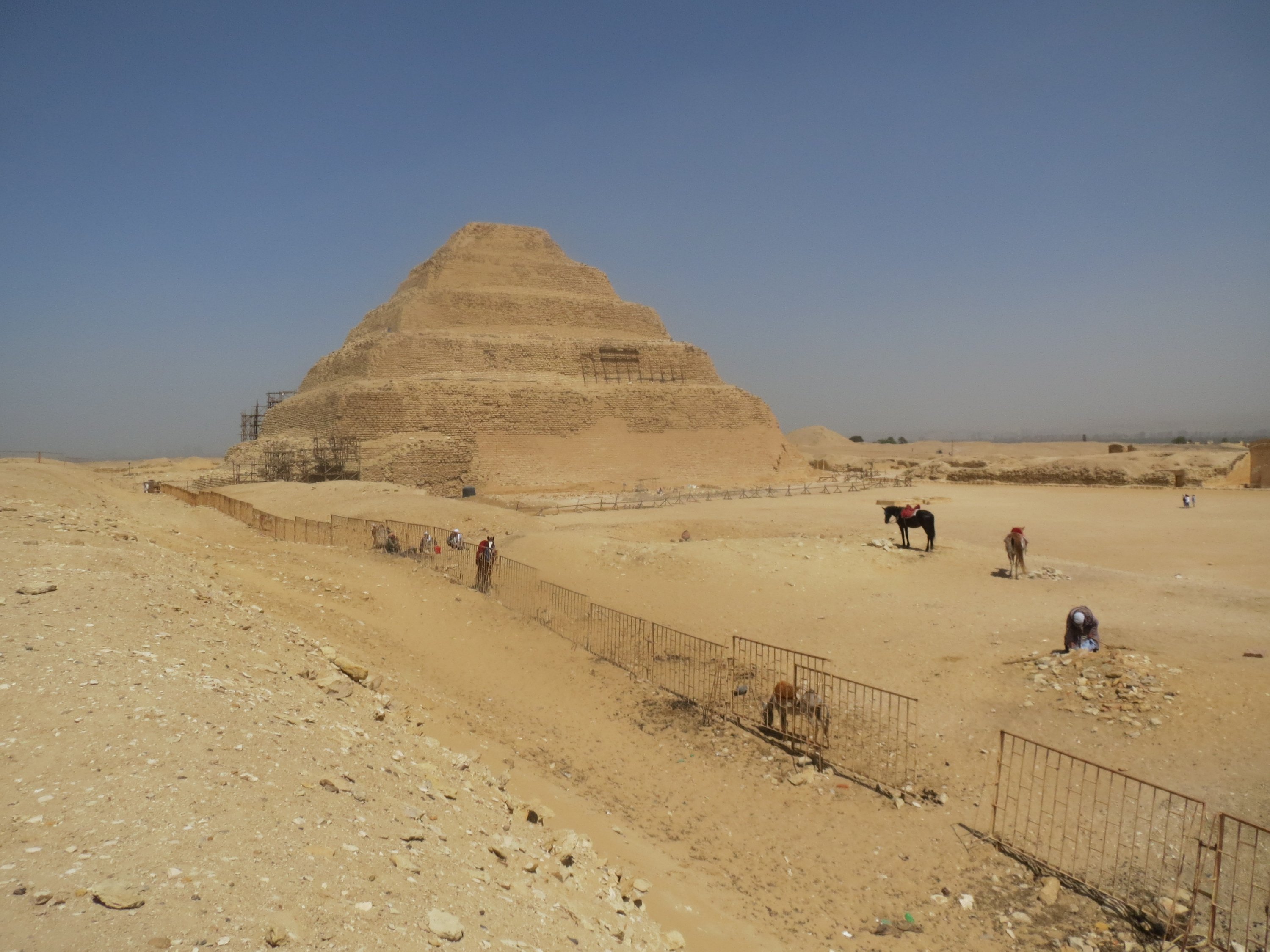
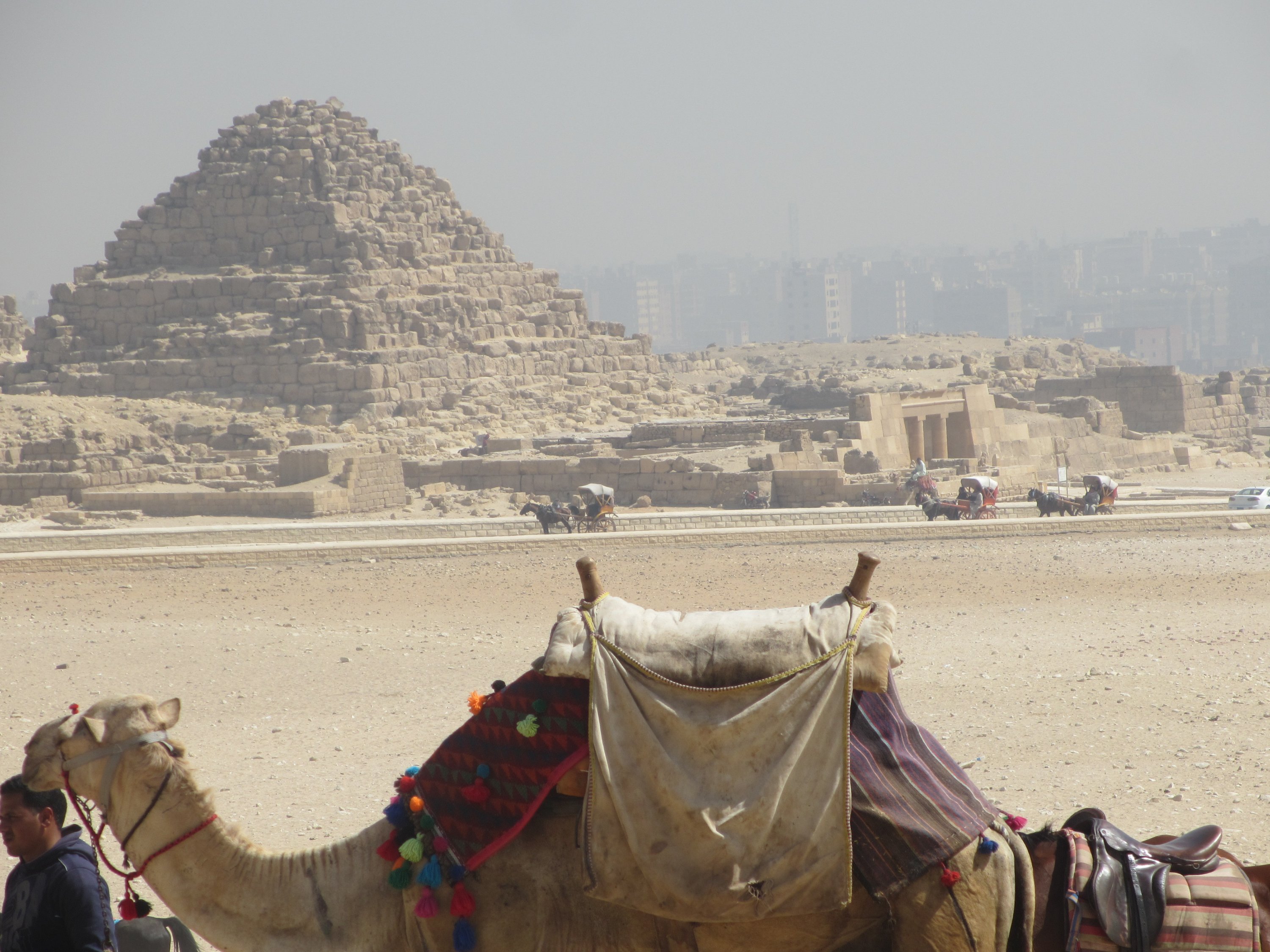
The complex has a whole load of tombs, accessed by really deep shafts in the sand, guarded by cobras :
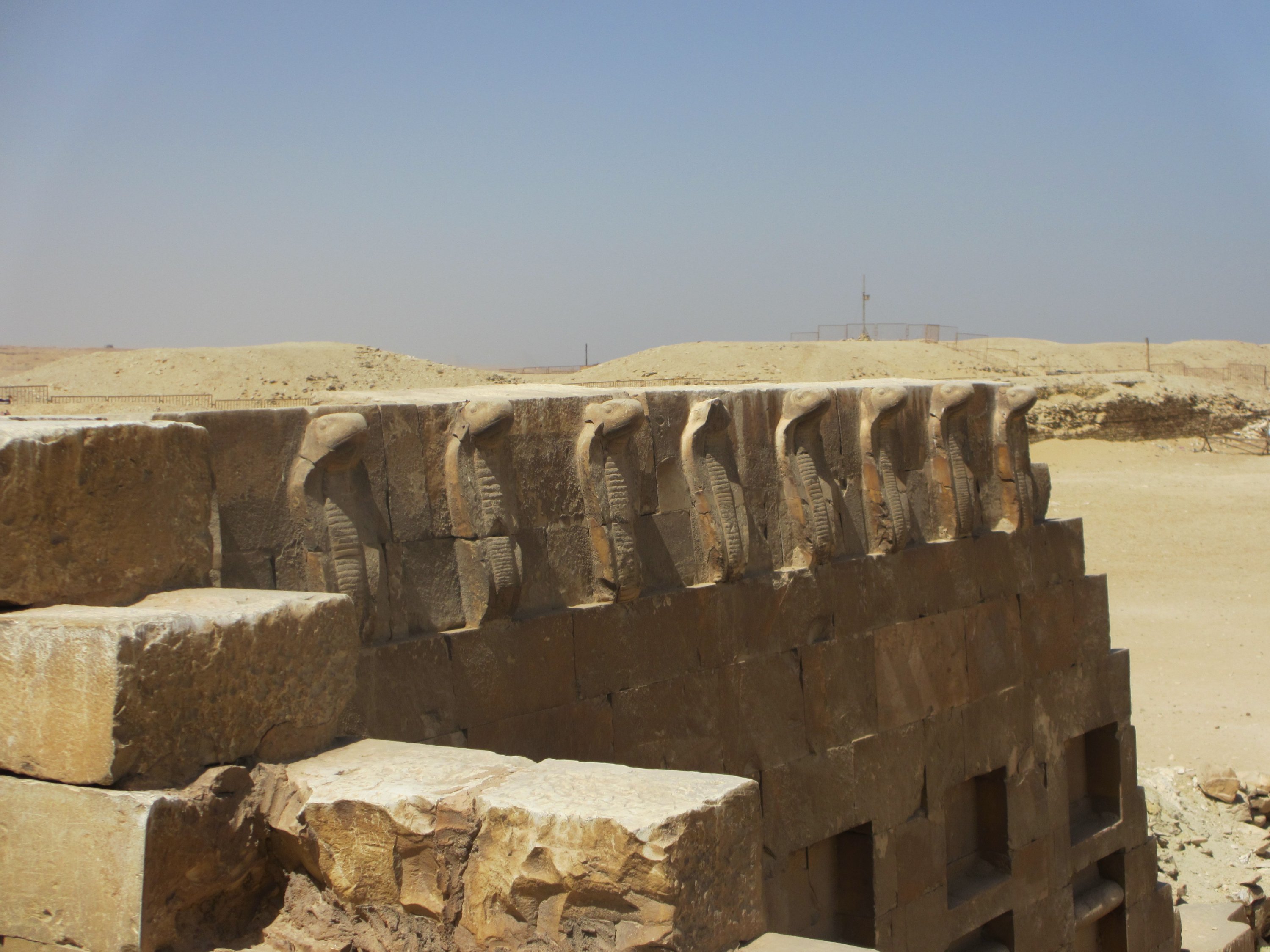
A shallow tomb entrance :

It’s too deep to see the bottom, but there’s an entrance to a tomb in the bottom of this:
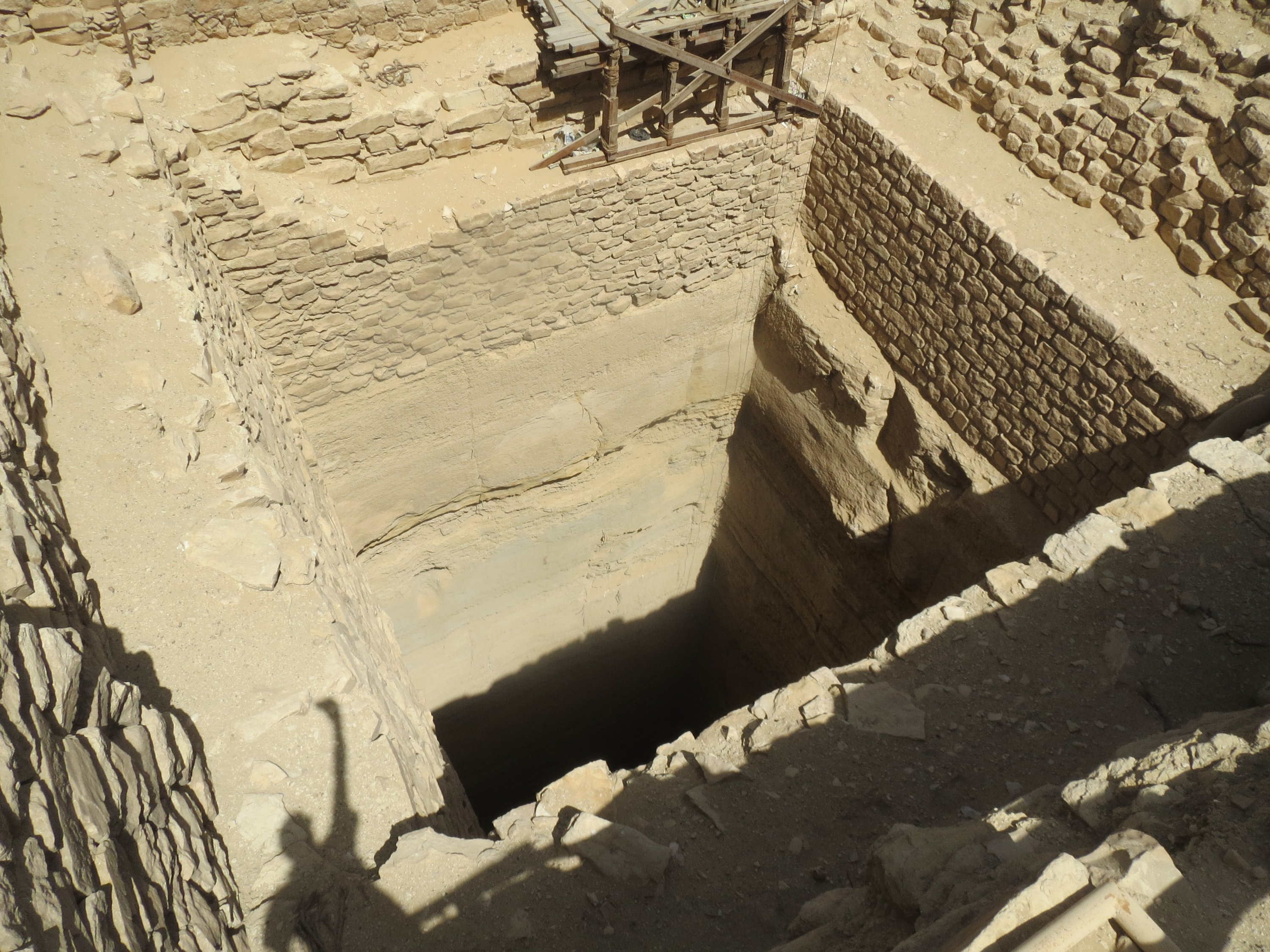
The stone door of a tomb:
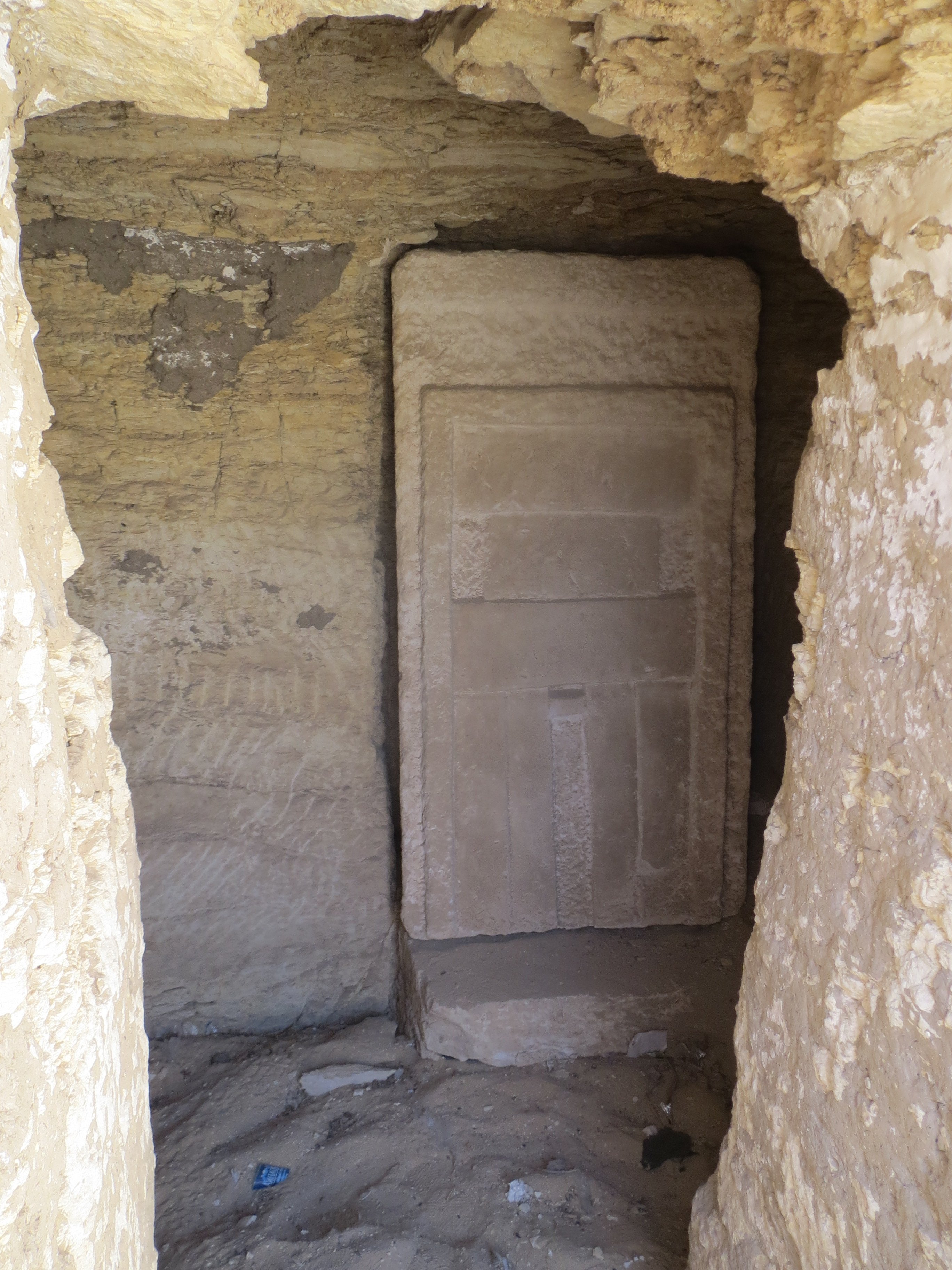
These two guys are Liverpool fans, they said. Apparently there’s an Egyptian who plays for them :
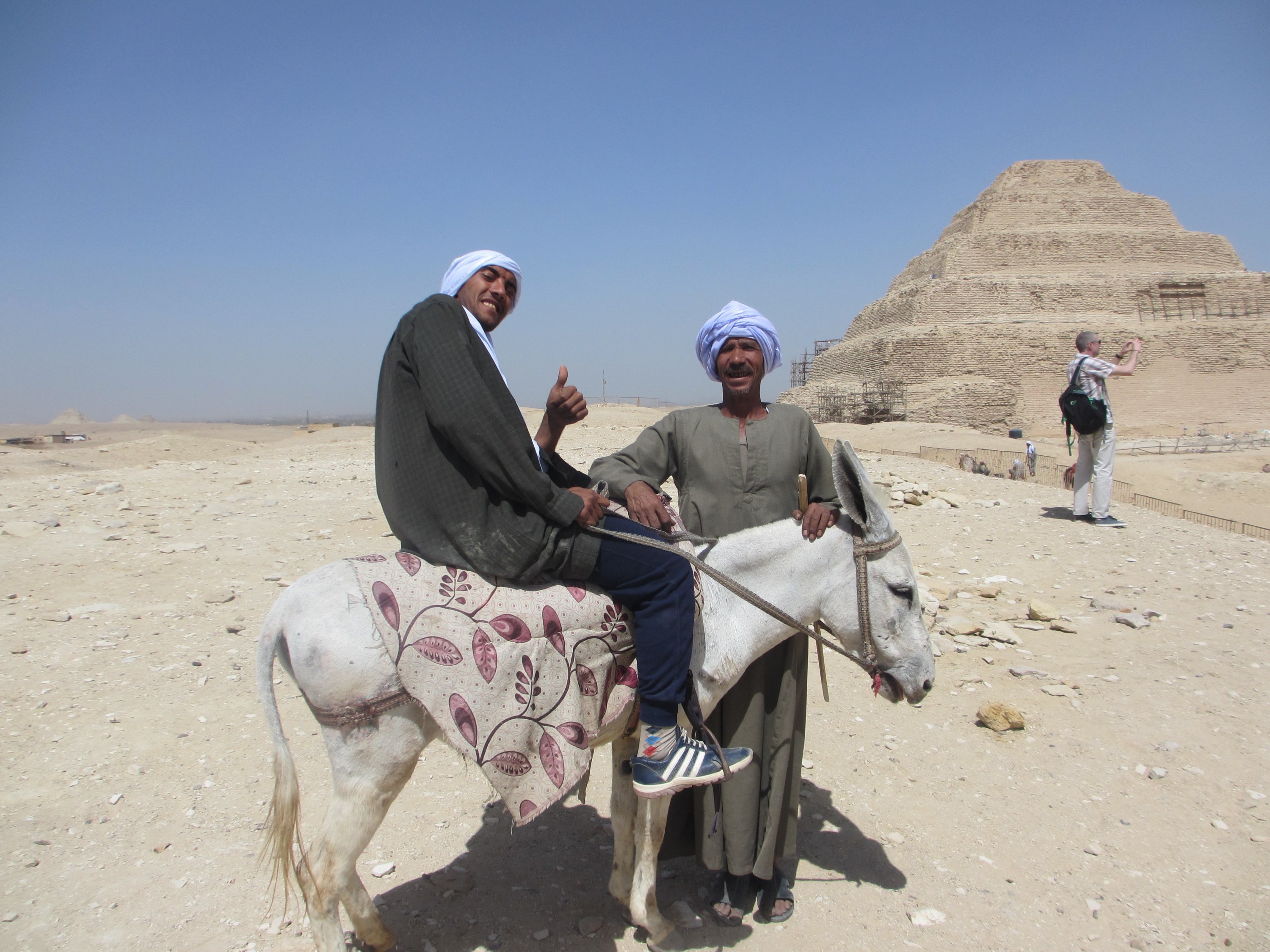
Saqqara was a great place to visit, very quiet compared to Giza and very little in the way of hassle.
After a hard day of sightseeing, what better way is there to chill out apart from with tea and hasheesh?
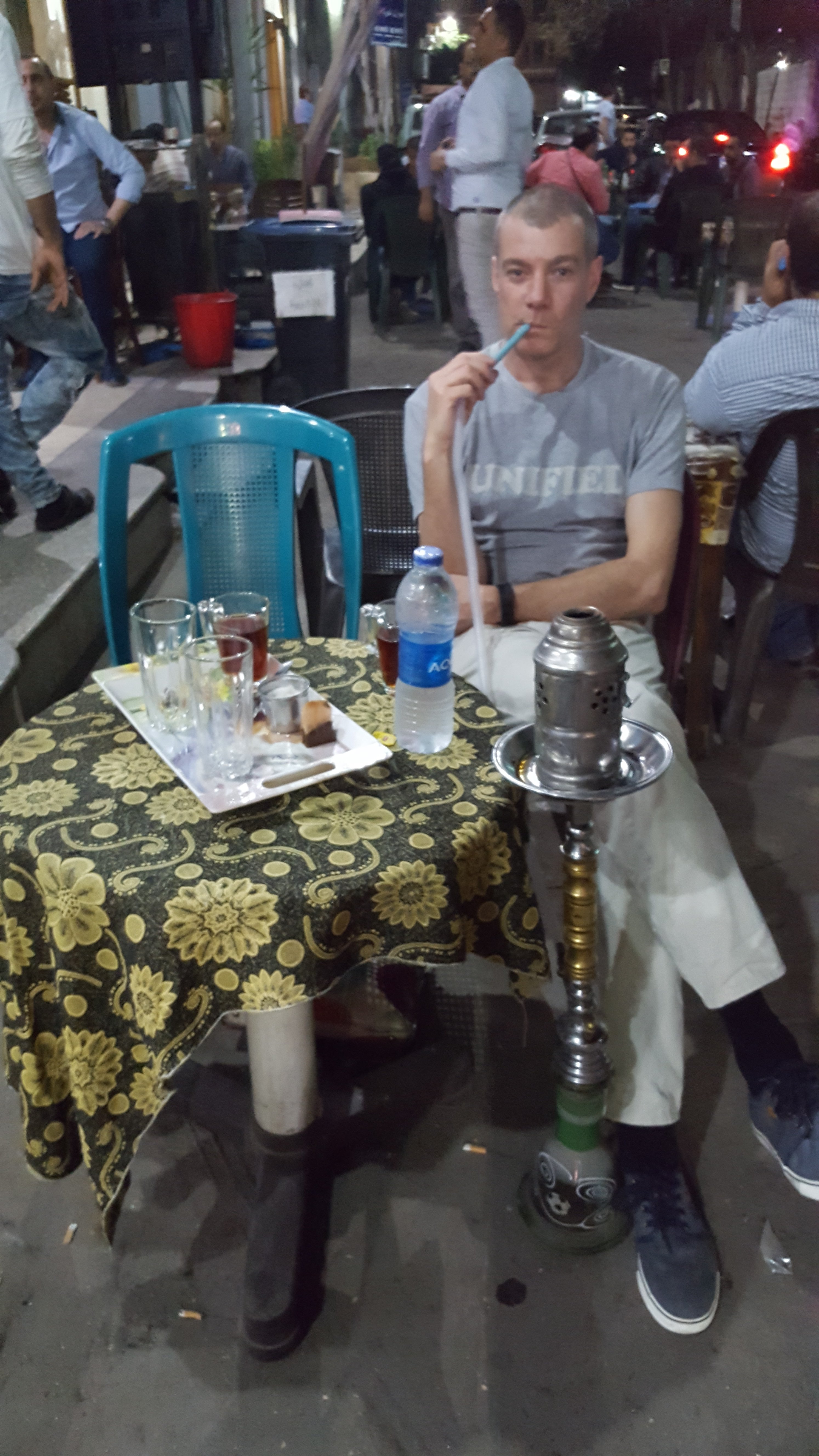
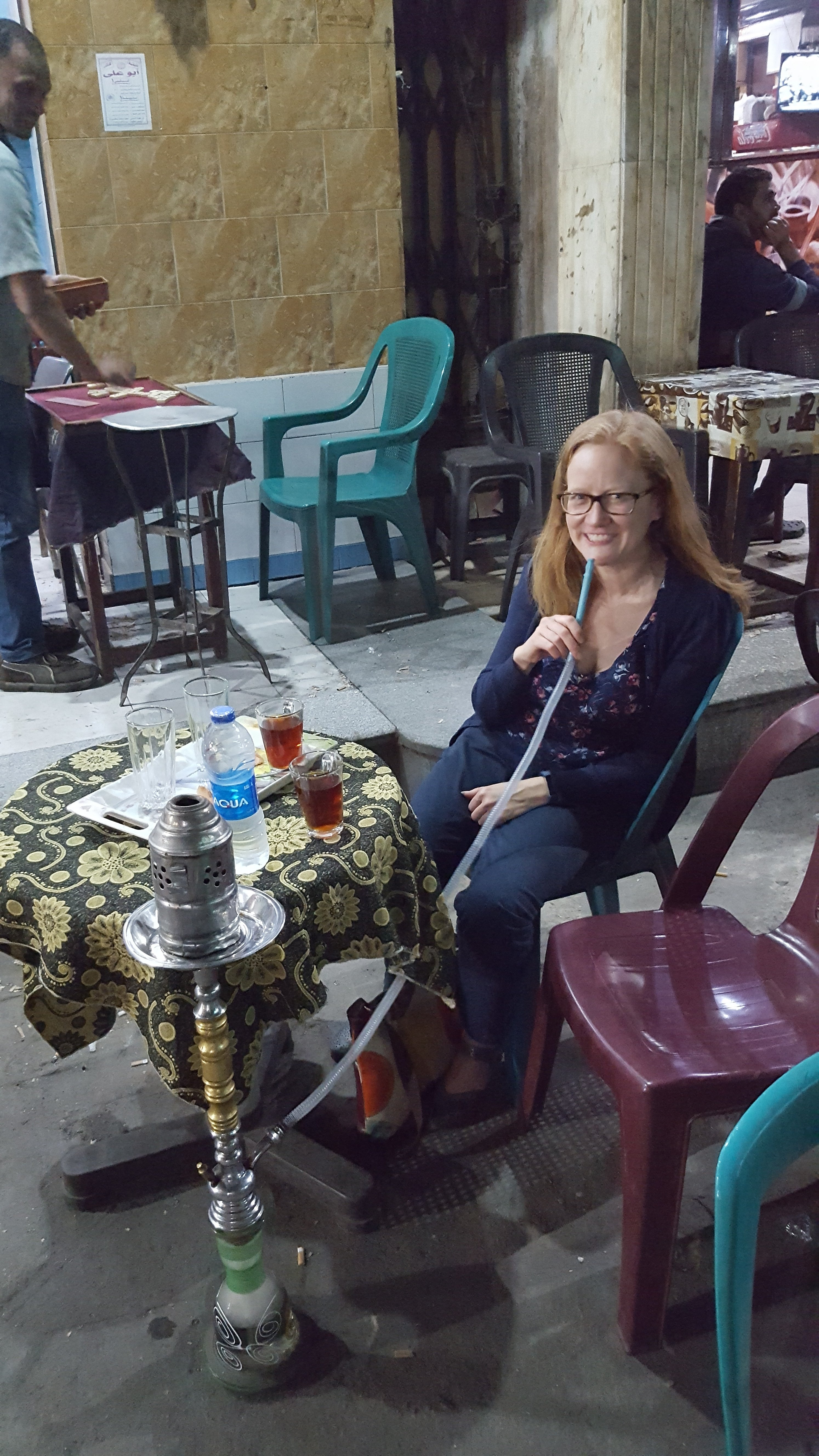
Tonight we’re off well up the Nile to Aswan by sleeper train and to some serious heat!
Crete
And so we arrive onto Crete, our last port of call for this trip. The high speed ferry from Santorini was rather characterless, you are given an assigned airline-style seat below deck where you’re forced to watch the Greek version of “Deal or No Deal” on TV. There’s no deck area to hang about on, it seems all the high speed ferries are the same. I’m not sure why, perhaps it’s for safety concerns about too much stuff/people being blown overboard or something.
We came into the main town of Heraklion but went straight by bus to Rethymno, about 90 minutes west of there by bus, as it’s a much nicer place to stay, by all accounts. The bus journey was interesting, from the obligatory person a few rows back who was playing music on their phone speaker, to the small boy across the aisle who was making stupid noises the whole time, to the randy young French couple on the row behind him, who spent much of the journey giving each other a helping hand….
As usual we stayed in a beautiful apartment right in amongst the twisty alleyways of the Old Quarter which was oozing with character, but did prove to be a little noisy during the night due to music from some nearby bars, the odd passing drinking reveller, and motorbikes, who seem to think it’s necessary to use their horns in the middle of the night on these otherwise trafficless alleys. Breakfast on our balcony:
An old lady opens up her shop just across the alley from us. I always find it fascinating to watch them set up at the start of the day, and pack up late at night, following a well-rehearsed routine which takes a good 20 minutes or half an hour.
Due to time constraints. we imposed a seriously early start on ourselves the first morning, to catch an excursion bus at 6.30am to take us to the south west of the island to hike the Samaria Gorge, the longest gorge in Europe at 12.5Km or so. You start in the village of Omolos, hike downhill all the way through the gorge, passing the abandoned village of Samaria halfway along, then end up at the coastal village of Agia Roumeli which is only accessible by boat. From there you take a ferry for an hour eastwards along the south coast to Hora Sfakion, where you hope that the excursion bus is waiting for you to take you back.
The German tour guide was really laying it on thick about the risks and dangers that are present in the gorge, but in reality it turned out to be a very straightforward hike, anyone who’s remotely into walking isn’t going to have any problem at all. Delicious fresh drinking water is piped into fountains at very regular intervals, so there’s not even the need to carry large quantites of water.
The earlier part of the hike is steeper as you descend down from around 1200m elevation at the start, down into the gorge proper
An inovative solution to stopping this massive boulder rolling down onto the path
This is a rare kri-kri goat with her two kids, apparently they’ve got used to eating cardboard ham and cheese sandwiches, which are served at massively over-inflated prices in Omolos.
The second half of the hike, after you’ve passed the village of Samaria, is more dramatic
I’m not sure if dehydration was setting in, but it looks like there’s a gigantic lizard made of stone, centre left of the picture
We craftily avoided the taverna that the guide said we should meet in at the end of the hike, and instead had some wonderful food a little way up the road, including a Cretan salad, which has a lot of egg and croutons in it, as well as the usual components of a Greek salad such as feta, olives and tomato. Greece is certainly a good place for lovers of 5-a-day! Next to that we had a mousaka, just to ensure a suitable level of stodge intake.
The journey back was smooth, albeit stinking of feet somewhat.. Next day was spent recouperating in Rethymno, this is an early morning scene in an alley close to our accomodation
Round the corner is the Rimondi Fountain, a Coronthian affair dating back to 1626
Also in town is the Fortezza, a fortress from the 1570s and in really quite good nick
It covers a large area, and in the middle are various odd buildings, including this mosque, with the stump of its demolished minaret on the left there
The rest of the day was given over to some lazy street walking and eating. This is the remains of another Cretan salad, the kitchen is in the window
A typical street dining scene
Cats are everywhere
This setup is in the corner of a local supermarket. I’m not sure what you’re meant to decant the olive oil and raki into. Perhaps you’re meant to lie on your back on the floor, with your mouth open
We took a drive out to the Minoan place of Knossos, dating back to 1900BC. The place has been restored in a most bizarre fashion by a certain Brit called Arthur Evans between about 1900-1930 (AD!) He’s used his imagination largely, to guess at what different parts of the palace would’ve been used for, and rebuilt them in concrete to reflect how he thinks they would’ve looked. Since then, a lot of his assumptions have been proved wrong, and he’s even build chambers for the king and queen, even though there’s no firm evidence that the monarchy ever even resided here.
The end result is that you feel more like you’re in Portmerion in Wales, rather than some important archaelogical site
For out final night we moved west to Hania for one night only. This was mainly so we could be closer to the airport to allow for more of a lie-in, but also to try and get a quieter night (which we did). Even though we only had the evening to wander around and get some food, Hania looks beautiful! It has a Venetian quarter, similar to Rethymno, set around a beautiful and historic harbour. It’s bigger than Rethymno too, so sports a much broader array of shops and eateries. If we come back to Crete again, and I hope we do, I would definitely spend more time here.
Greece has been an amazing experience, with outstanding food in almost all cases, and wonderful friendly and helpful people. I’m so glad we managed to get ourselves out and about around the country, rather than lie on a beach for two weeks 🙂 Highlights for me are Meteora and Santorini, and the accomodation on Paros
Santorini
We’ve definitely gone up a few notches on the tourist scale with Santorini! The ferry, the Blue Star Delos, took us from Paros to Santorini with a quick stop at Naxos en route. This is Naxos, very likely we might have visited here instead of Paros, if Lisa had not already been here, many years ago
Although the ferry ostensibly looks like the sister ship of the Blue Star Paros which we used a few days previously from the mainland, she was much better appointed and comfortable with a bit of feng shui going on. The water is shallow in places, you can see her churning up the silt as we came in and out of Naxos
And so we arrived on Santorini to find another lovely barrel vaulted room awaiting awaiting us, with two of the most helpful hosts you could find. It’s in the main town of Fira, perched on what was the rim of a now submerged, massive volcano caldera.
Santorini is famous for its sunsets, so for the first night we duly forked out for cocktails and watch the show
Next day we equipped ourselves with a new set of wheels, this time going upmarket a bit to a new 300cc model, which was nice and quiet and felt more like driving a car, compared with the 200cc cement mixer version that we had on Paros. We’re in front of a winery here, they grow the vines low to the ground to lessen the impact of the winds, which can be a problem on the islands here
Where there’s a vineyard there is wine, which just must be tasted. They weren’t bad, but nothing that would make your mouth water, as seems to be the way with the local juice
Along the road were some slightly unusual scarecrows, though we were wishing they would scare off the flies which were quite abundant on the island, it seems
This is a typical 5 star resort, this one is out of town along the south rim of the caldera. As you can see, very often the private pools are quite overlooked, we’re just pulled up on the side of a main road here. I’d be a bit disappointed if I’d splashed out top dollar and got something like this. You’d have to pick and choose your room carefully, which might be easier said than done, in advance.
We toured most of the island, there’s a well known red beach on the south side, with nearby neighbours, one white and one black in colour. The sand is sharp so not the best for beach lounging compared with other islands, but instead we holed up in a lovely taverna behind the beach for a platter overflowing with sardines. Lisa got into trouble with the proprietor for not eating their heads! It’s nice to find these places that are a little out of the way as this island is busy! So much so that I really wouldn’t want to be here in July or August as it must be bedlam then.
The very south west tip of the island
Black sand, blue sea, no people
We returned to Fira via the centre of the island, through the very quiet (as it was siesta time) village of Lefkes. My back seat driver got creative with her camerawork, though in truth I think it’s an accident
On the last morning, before our sailing, we drove to the far north to the town of Oia, for a little poke about. The whole town was pretty much devasted by an earthquake in 1956, so has largely been rebuilt since then. The approach, which you must make on foot really, was underwhelming, on a broad avenue lined with expensive shops selling Jimmy Choo and the like, but if you persevere on right to the end, you are rewarded with some nice views. Apparently this area is the mecca for sunset watching, it must be torturous, as there’s very few public places you could actually stand and watch it
Santorini is indeed spectacular, as long as you can cope with the amount of people, and the air of glamour about the whole place, both in the tourists and the locals. The prices are fairly high, but with a bit of patience and some recommendations we found some excellent cuisine, both in and out of town, for very reasonable costs. Now we’re off on our final ferry, a high speed affair which will take us onto Crete.


